Introduction
These field trips, to the Potberg this time, are always made with some objective in mind in respect of new exploration. In this case I wanted to get more pictures of H. mutica as it is a species that I have few digital images of. There were also localities that I remembered from the days when I was sweeping the countryside at a fairly coarse scale and was not much bothered by detail. I confidently expected the number of real species conforming to that in other fields of botany and zoology, to be in the region of 33. I never dreamed that such divergent views would, or even could, arise from less information than even then available to me. So while 450 names were whittled down to the mid-hundreds by me, students of the genus have in recent years pushed that up to the 600 mark. My opinions have been couched in quite conservative terms but it is a problem of the nomenclatural system that an identification in respect of a Latin name evokes a reality that does not exist. I maintain that the problems we experience in Haworthia are no different to that which exists in many animal and plant genera. I think that primarily this is because of the absence of insight into, and understanding of, the actual nature of species and the two dimensional model we use to relate them. Species are very variable systems because they have to be to survive the constantly changing world they occupy. In this article I am just going to present images of plants within populations of four different species viz. H. variegata, H. minima, H. mirabilis and H. mutica.
Set 1 H. variegata
H. variegata has an odd distribution in that it is primarily in the lower Goukou River drainage system southeast of Riversdale. Plants of H. monticola from the Uniondale and Willowmore areas, and even those of H. angustifolia from the Eastern Cape, can be very similar. So the distribution south and west of the lower Breede River is quite remarkable. Two populations, one high on the western end of the Potberg Mountain and another northwest of this at Luiperd’s Kop are very similar to those in the Goukou area. Chris Burgers of Cape Nature brought me plants from the lower north slopes of the Potberg that were quite different. Small single plants with outcurving leaf ends barely protruding above the pebbles the plants were growing in. I named this H. variegata ‘hemicrypta’ but not without reservation in the same way as I also named the plants in another population on the Potberg and at Kathoek as H. variegata ‘modesta’.
Chris Burgers did take me to his site many years ago and it is one of those places I cannot recall in the pebbly flats and Fynbos vegetation of that area. So the finds here seem to represent that same element but with subtle differences in respect mainly of variegation and spination of the leaf margins. I have mentioned elsewhere that there is an interaction with an element I refer to as H. floribunda although it is not clear if this indeed that species, or if it is an emergent polytopic element of H. mirabilis in consideration of the variation and distribution of these two apparently different species. We may have a truth for one area that is different from a truth in another. Polytopic means similar looking things arising in different places from a common genetic pool.
1. Map of the Diepkloof area (fig.1)
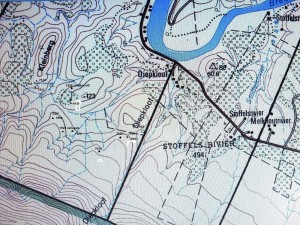
2. MBB7923 H. variegata S Diepkloof. (figs 2)
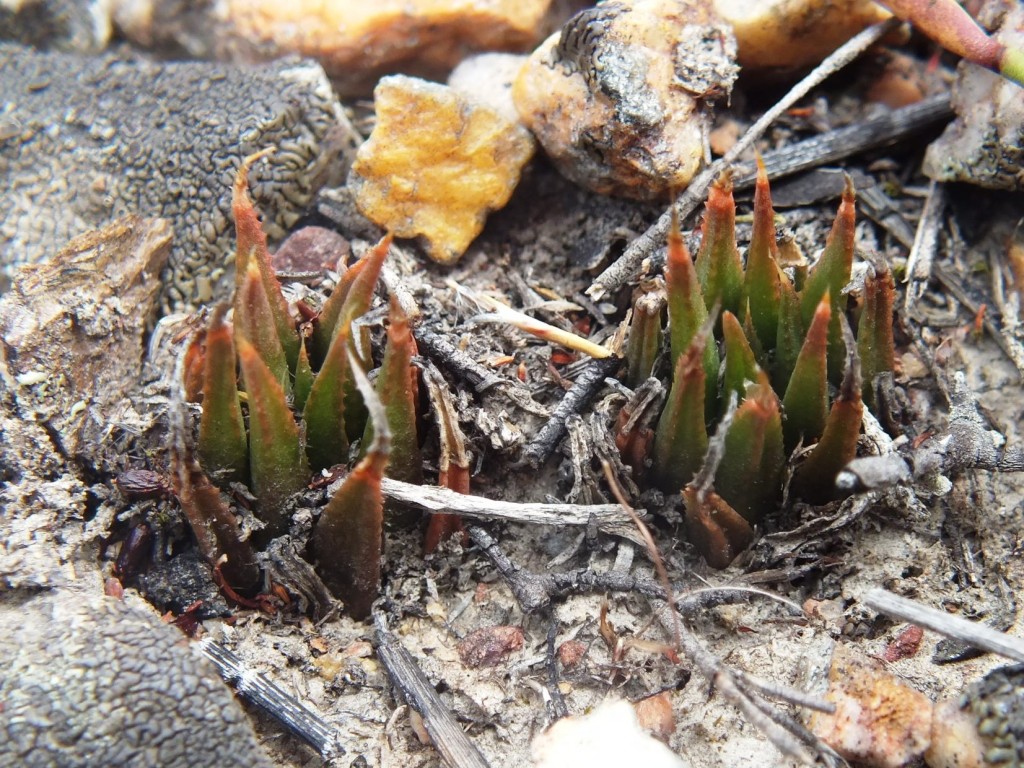

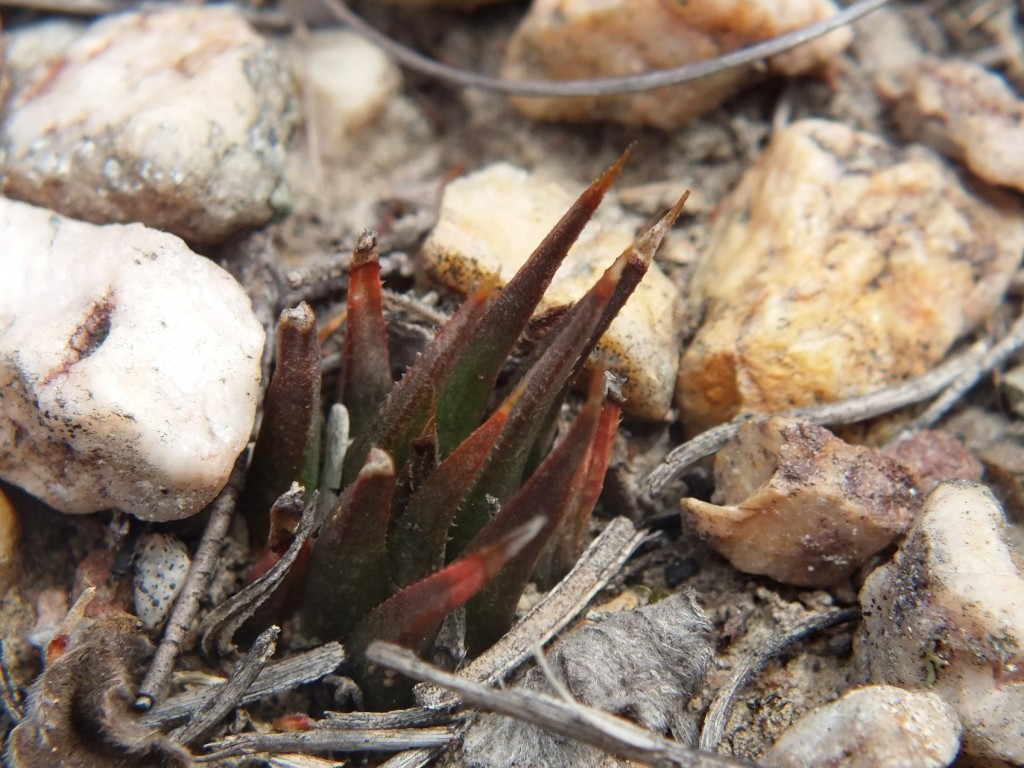
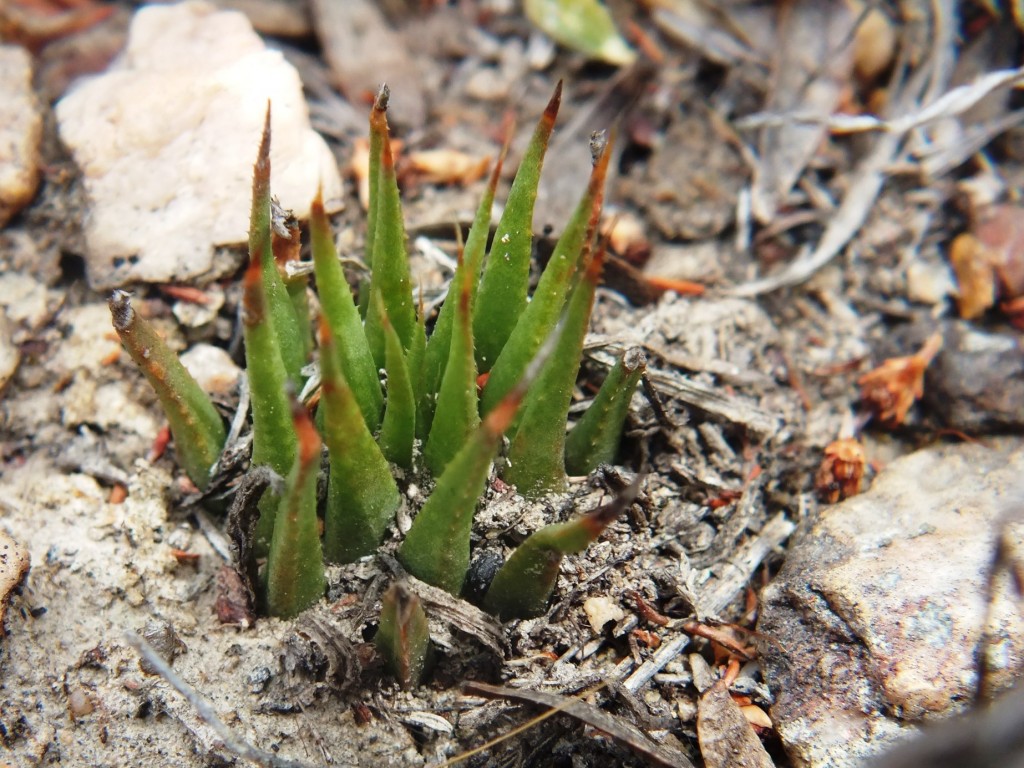
3. MBB7924 H. variegata SE Diepkloof (figs 3)
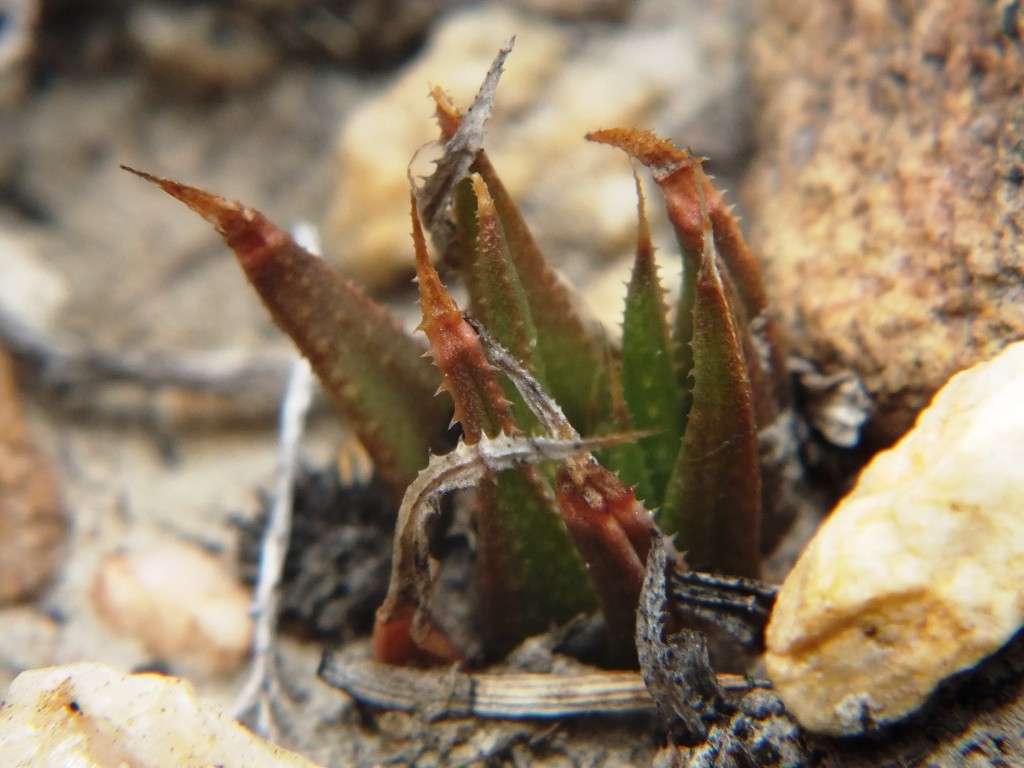
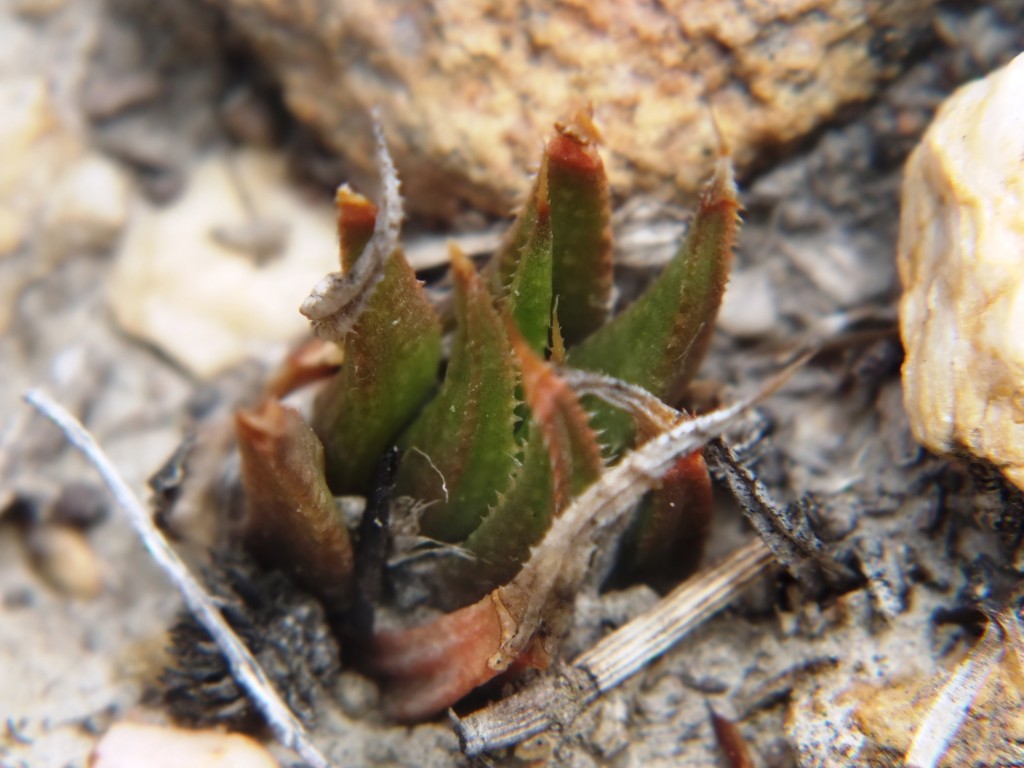

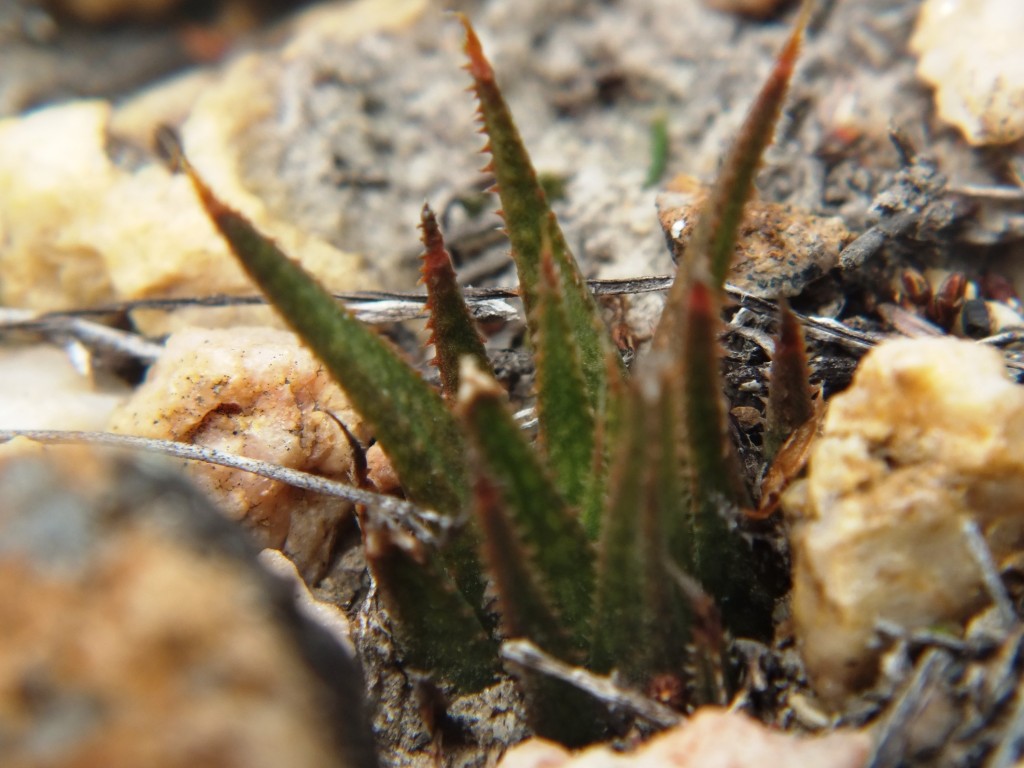

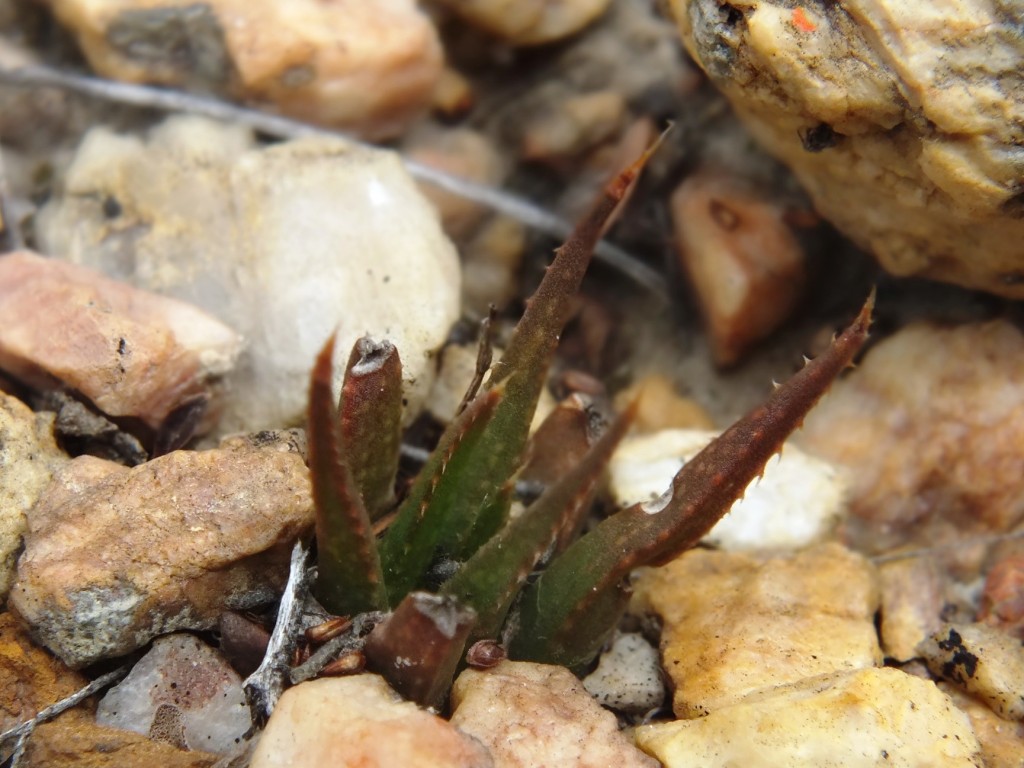
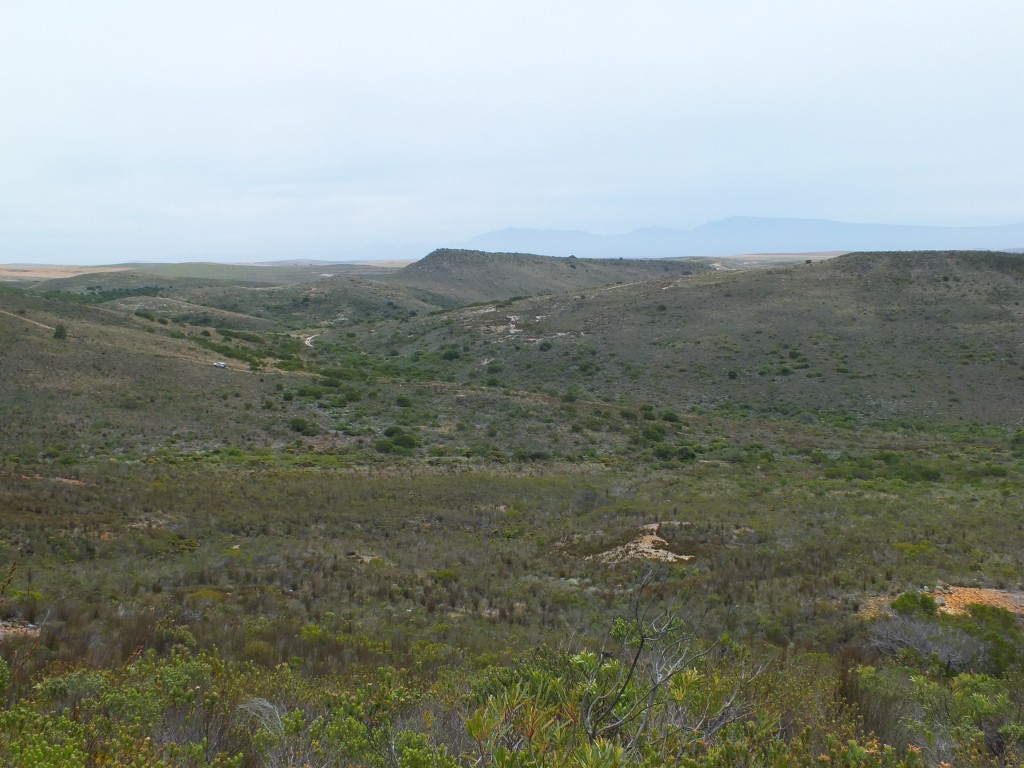
4. MBB7925 H. variegata SE Diepkloof (figs 4)
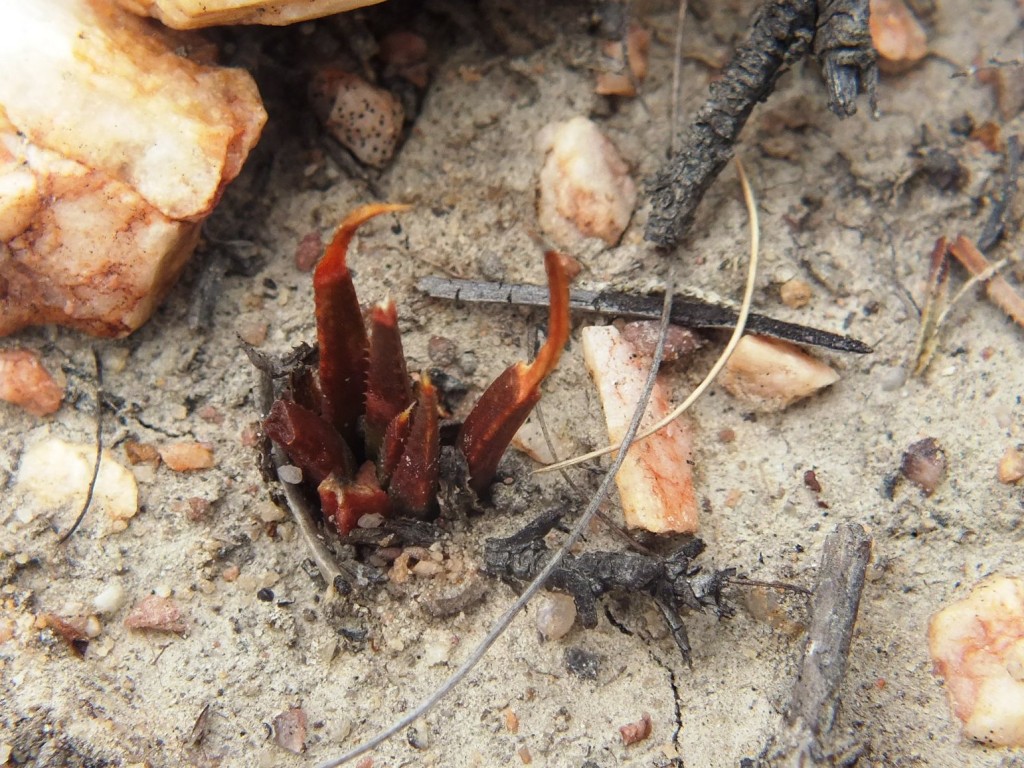
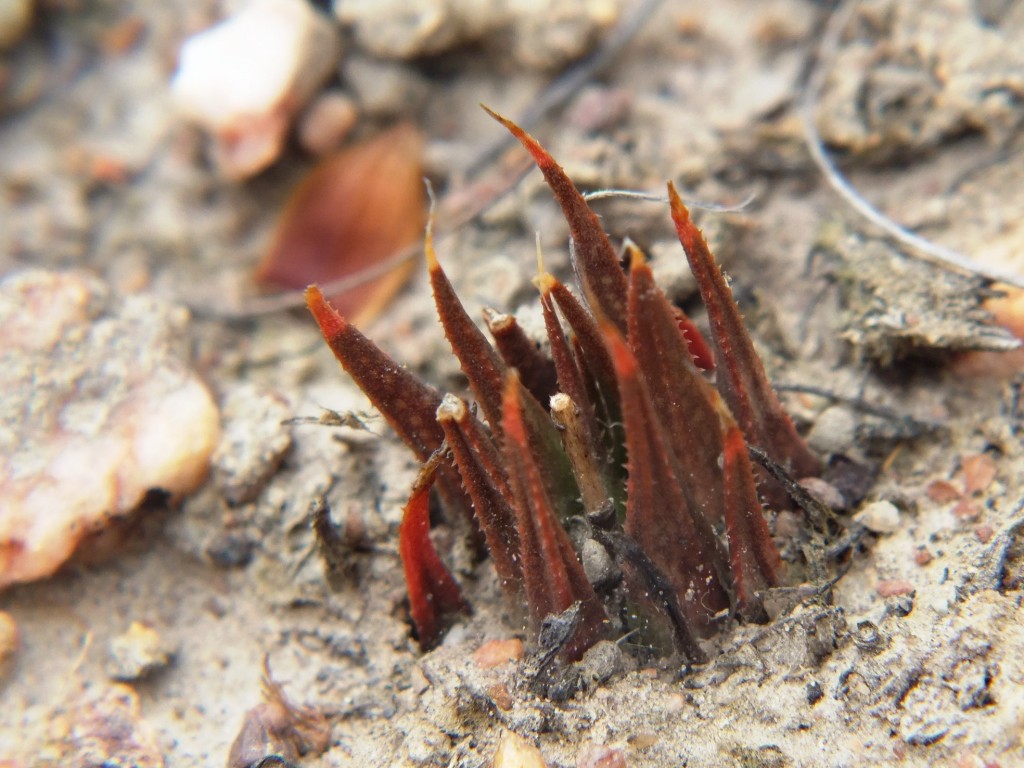
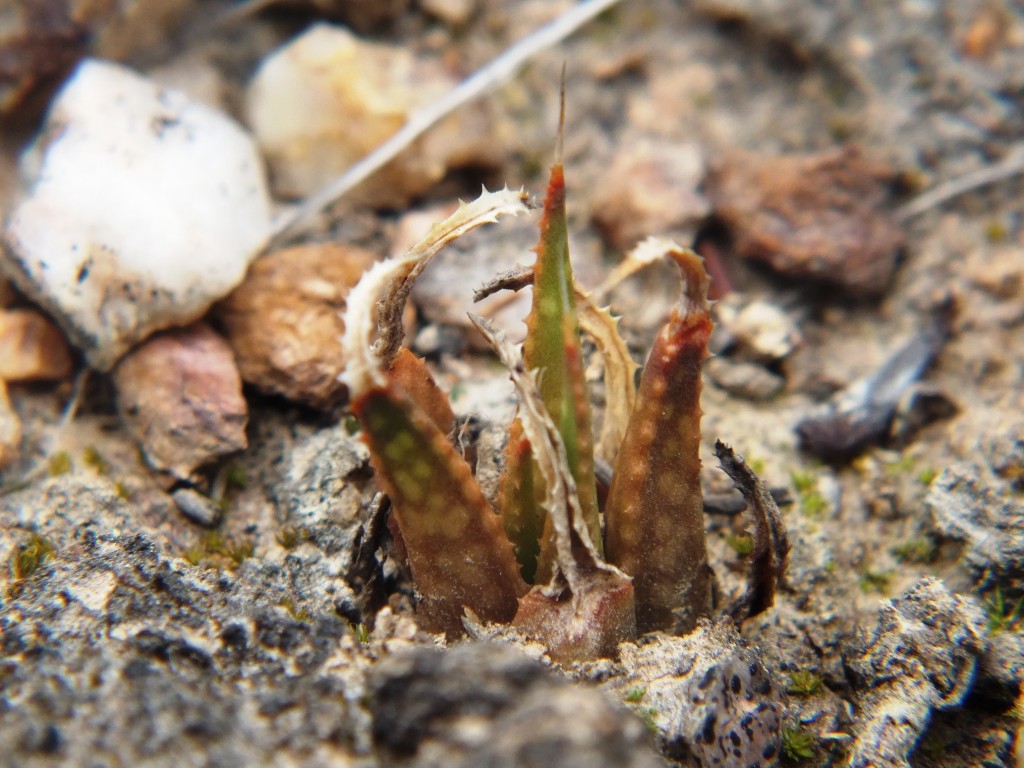
5. MBB7927 H. variegata SSE Diepkloof (figs 5)

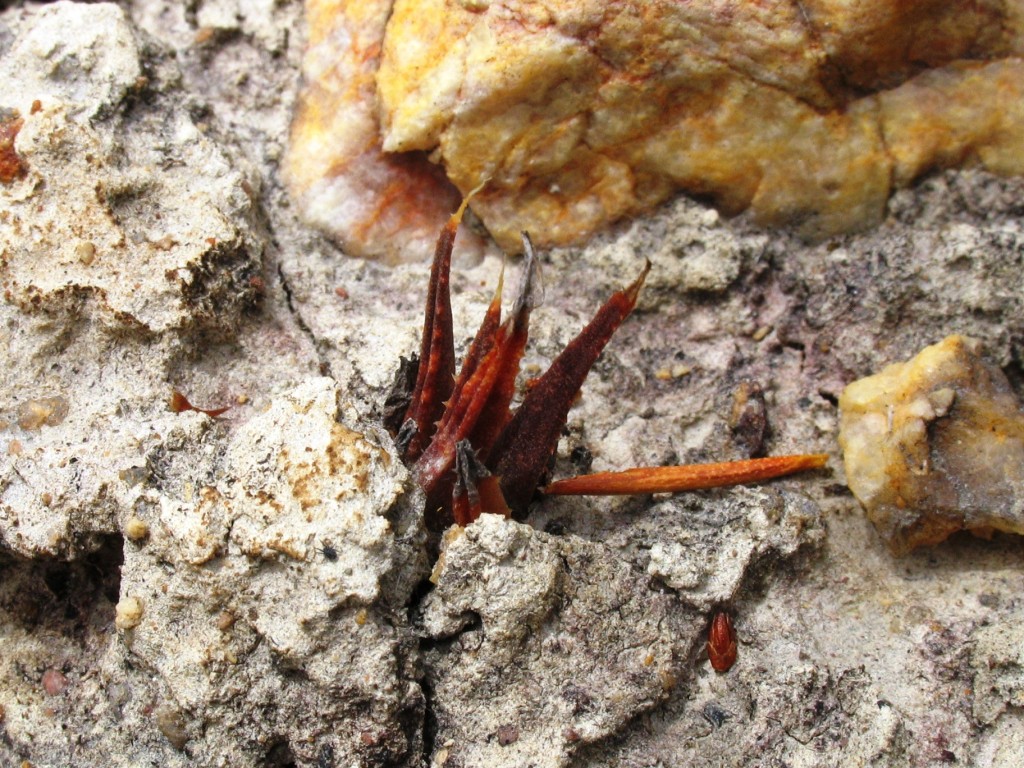
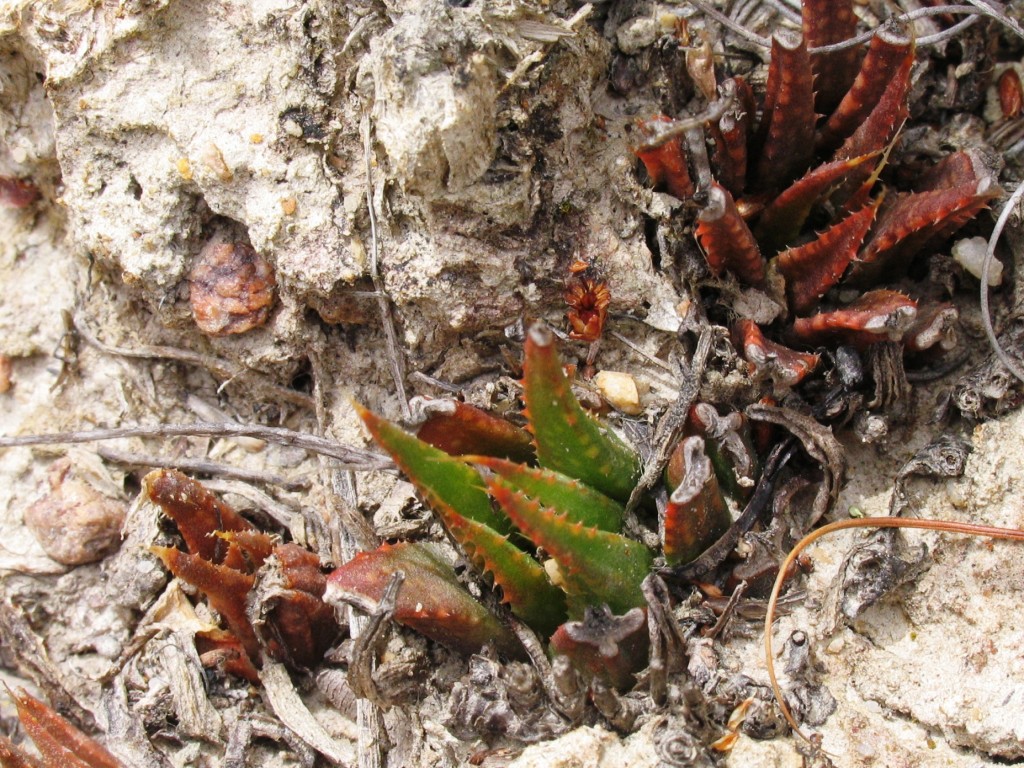
6. MBB7928 H. variegata SSE Diepkloof (figs 6)
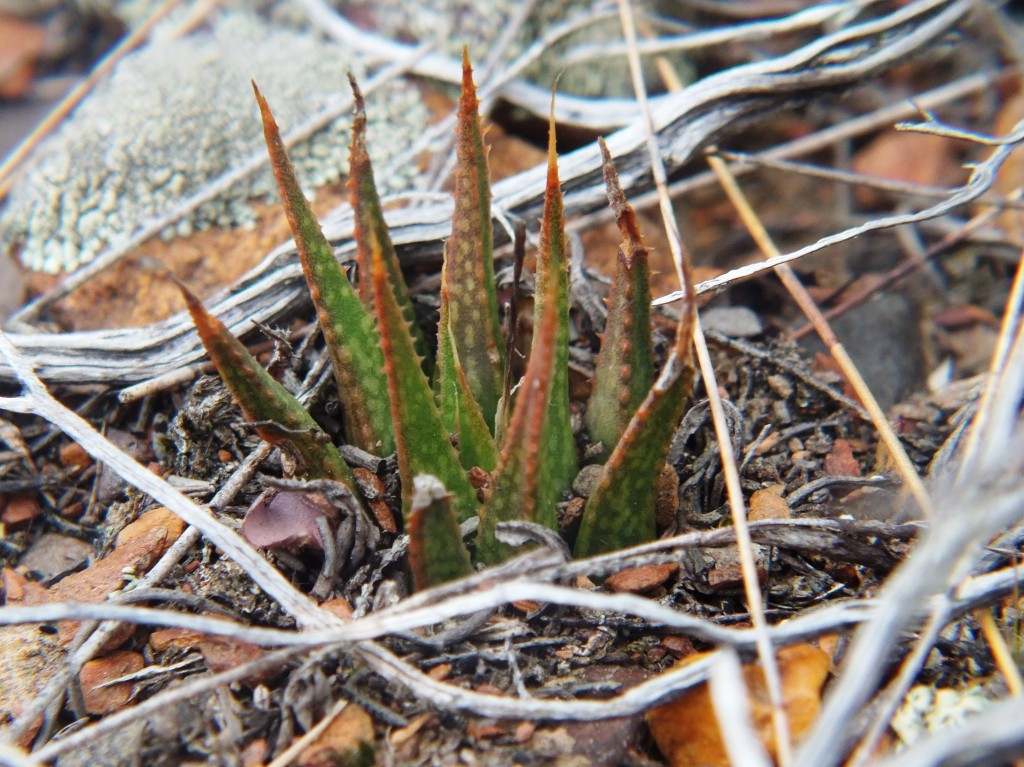
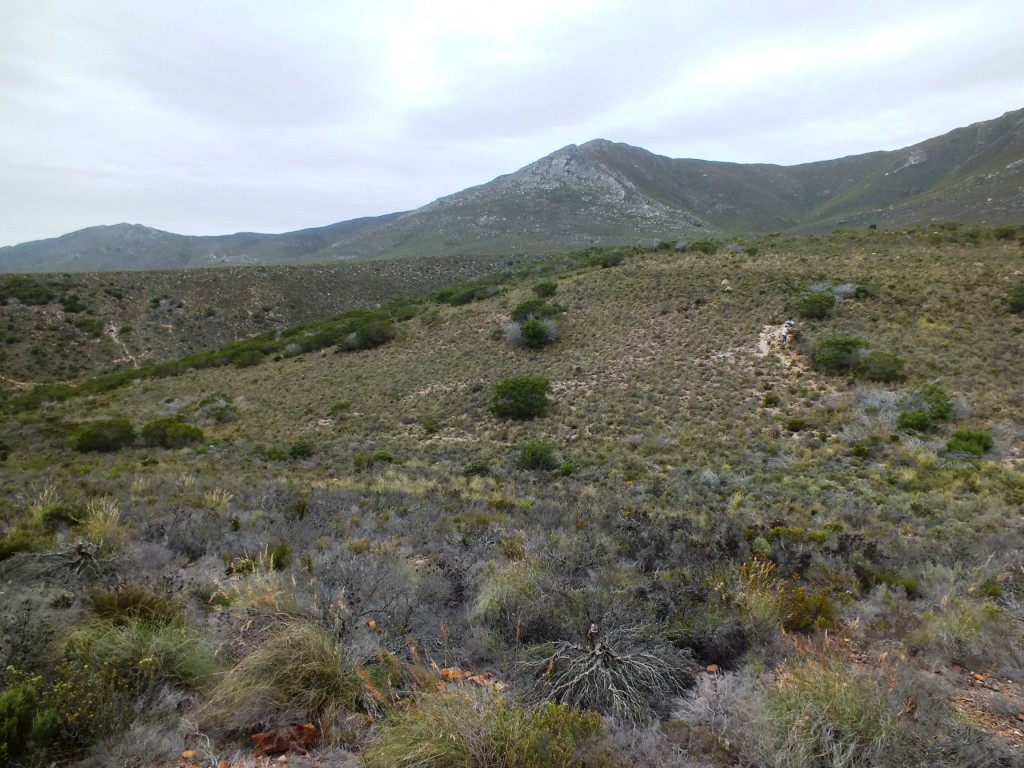
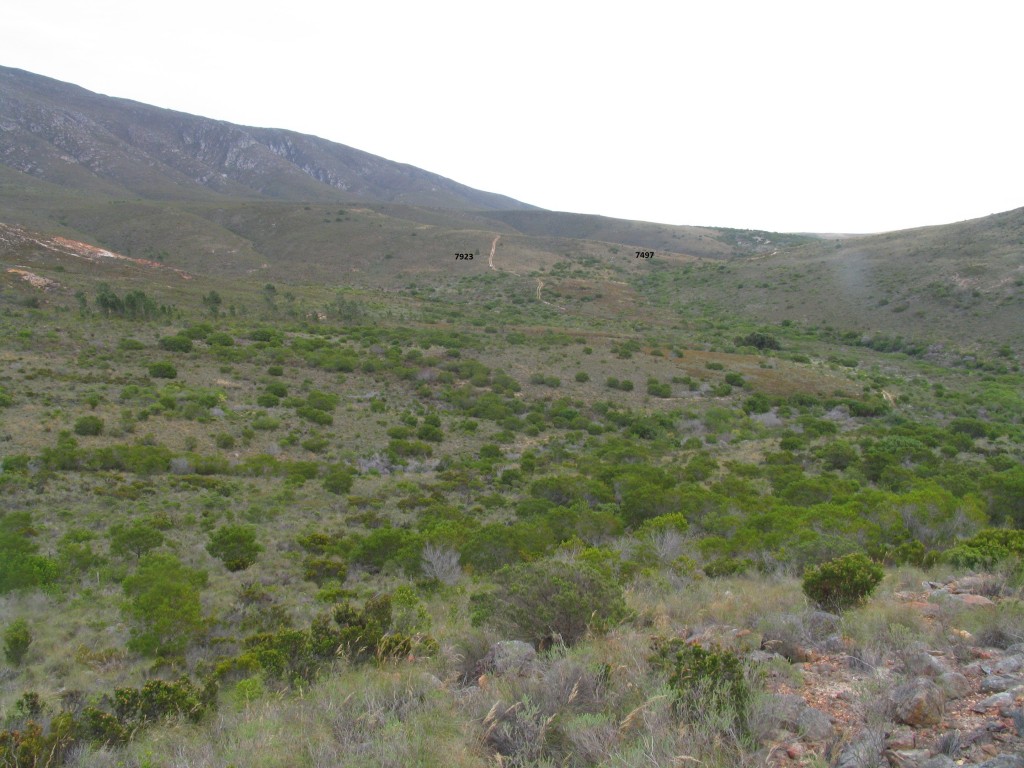
7. MBB7515 H. variegata Stoffelsriver (figs 7)

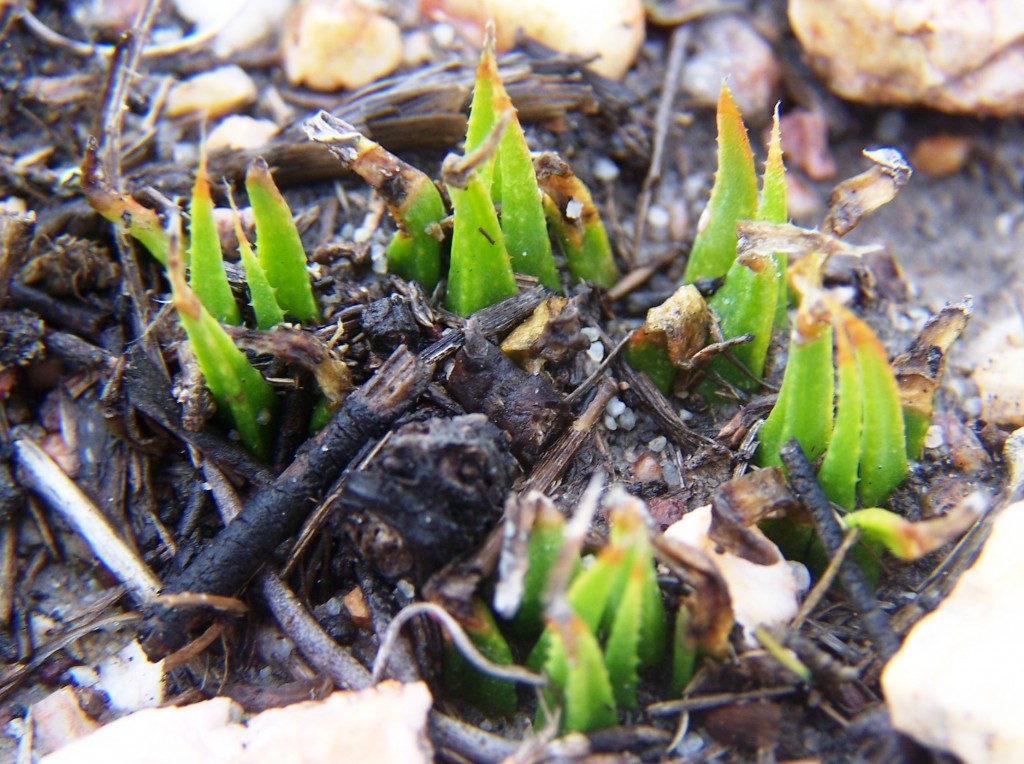
Applying the available varietal name, I should refer to these populations as H. variegata var. hemicrypta. However, I think this implies fixity of opinion and a certainty or reality that are neither not strictly true. I have added the Stoffelsriver two pictures just as a reference because while the first 5 populations are associated with recent Tertiary deposits and Renosterveld vegetation, the last is in sandstone gravels and in Fynbos.
Set 2 H. minima
This species of course belongs with three others in the Robustipedunculares and in my opinion more closely related to Astroloba than to Haworthia. It is widespread and even occurs in the Little Karoo. None of these populations are significantly different from the general run for the species, but we were awed by the beauty of the plants in their natural settings where exposure results in compactness and beautiful colouration. They can occur in quite different environments and habitats. There are a few aberrant populations and hybrids with other members of the sub-genus.
8. MBB7496a H. minima Diepkloof S (figs 8)


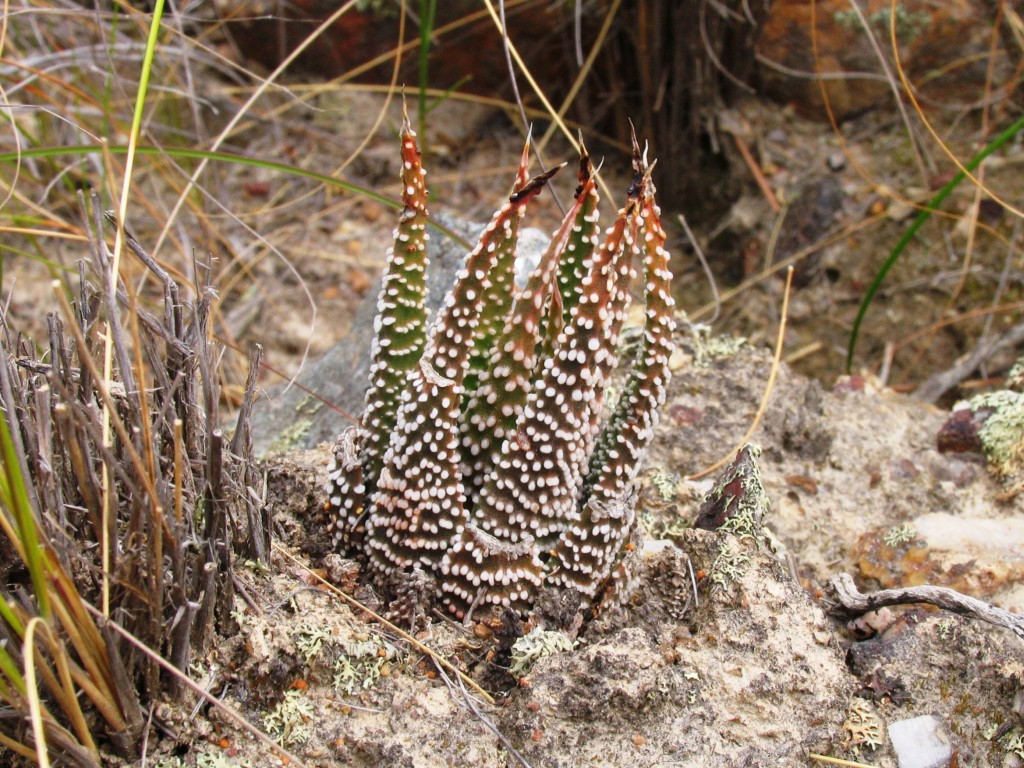
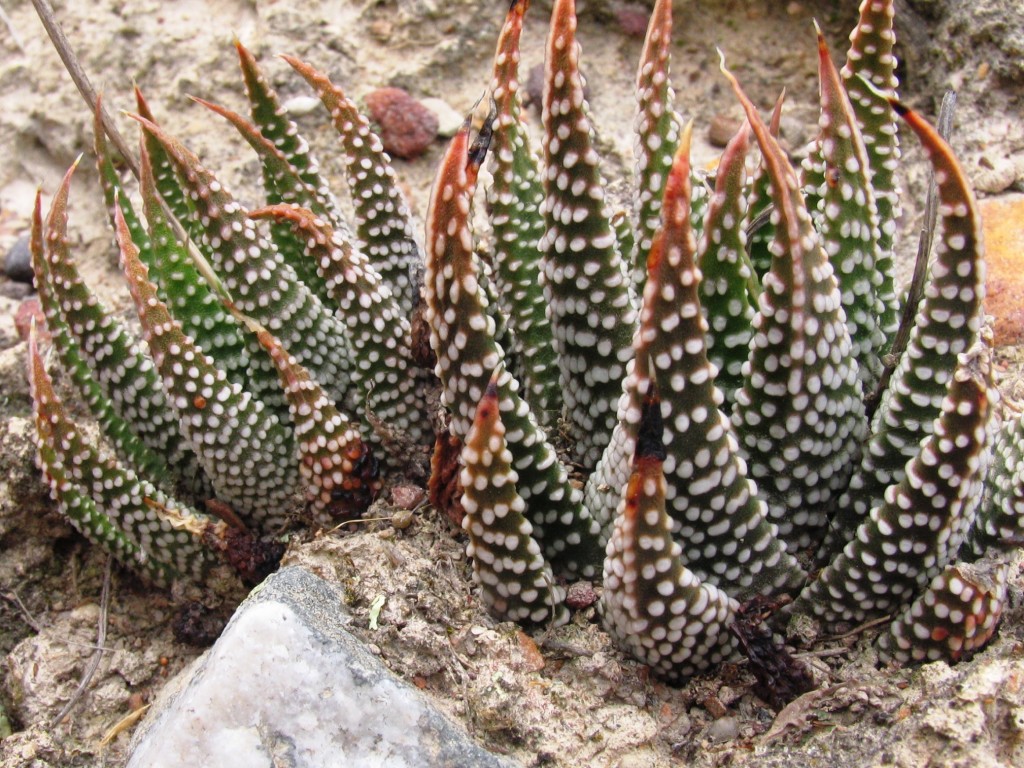
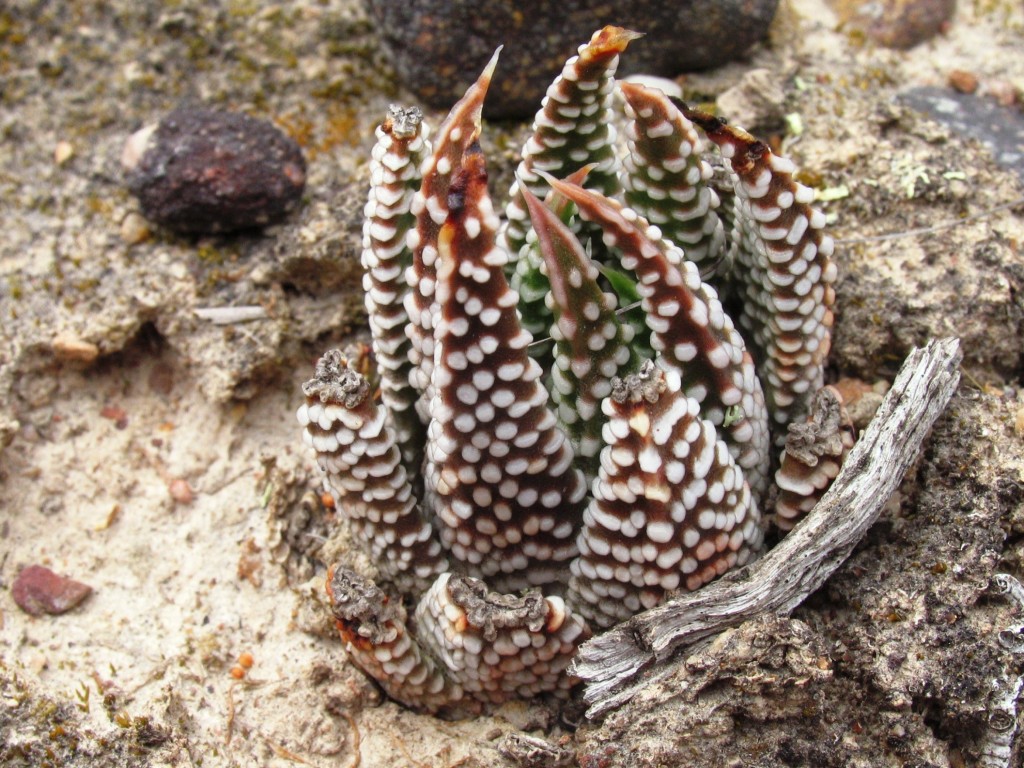
9. MBB7926 H. minima SE Diepkloof (fig. 9)
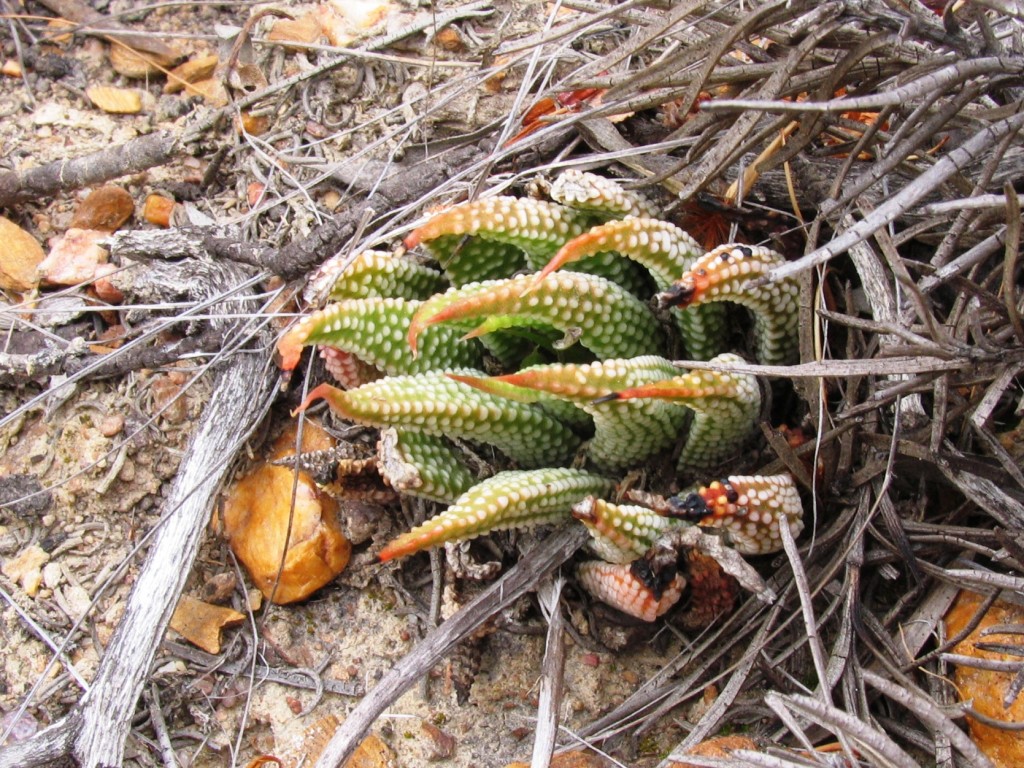
10. MBB7929 H. minima SE Diepkloof S (figs 10)


11. MBB7930 H. minima S Diepkloof (figs 11)
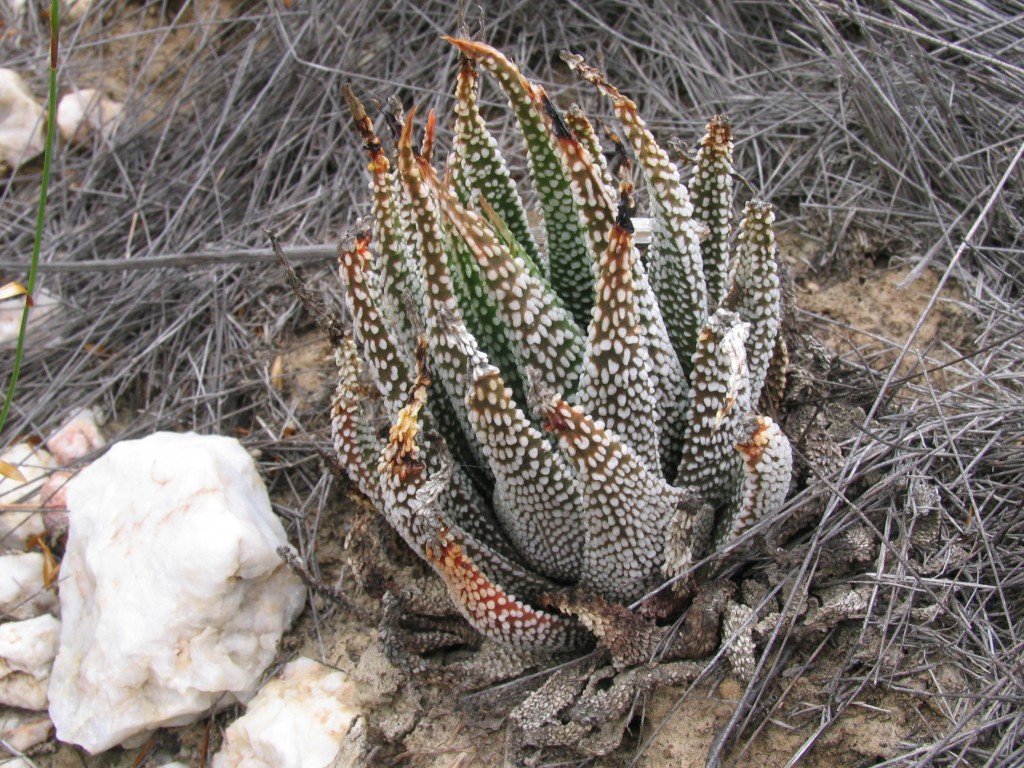
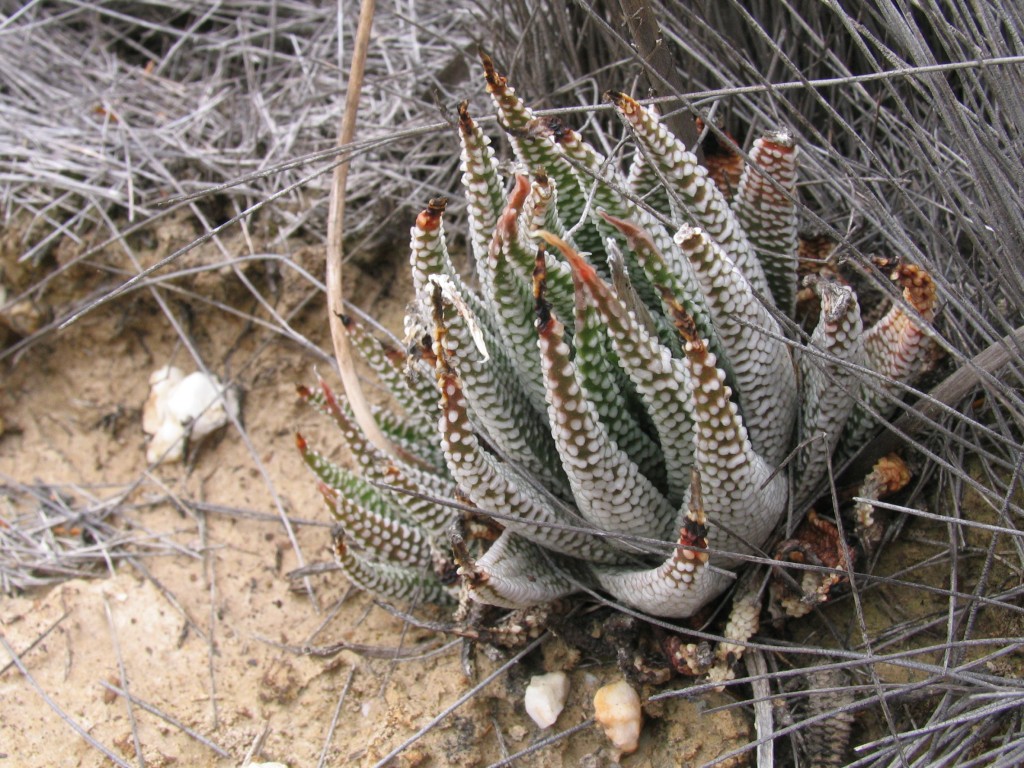

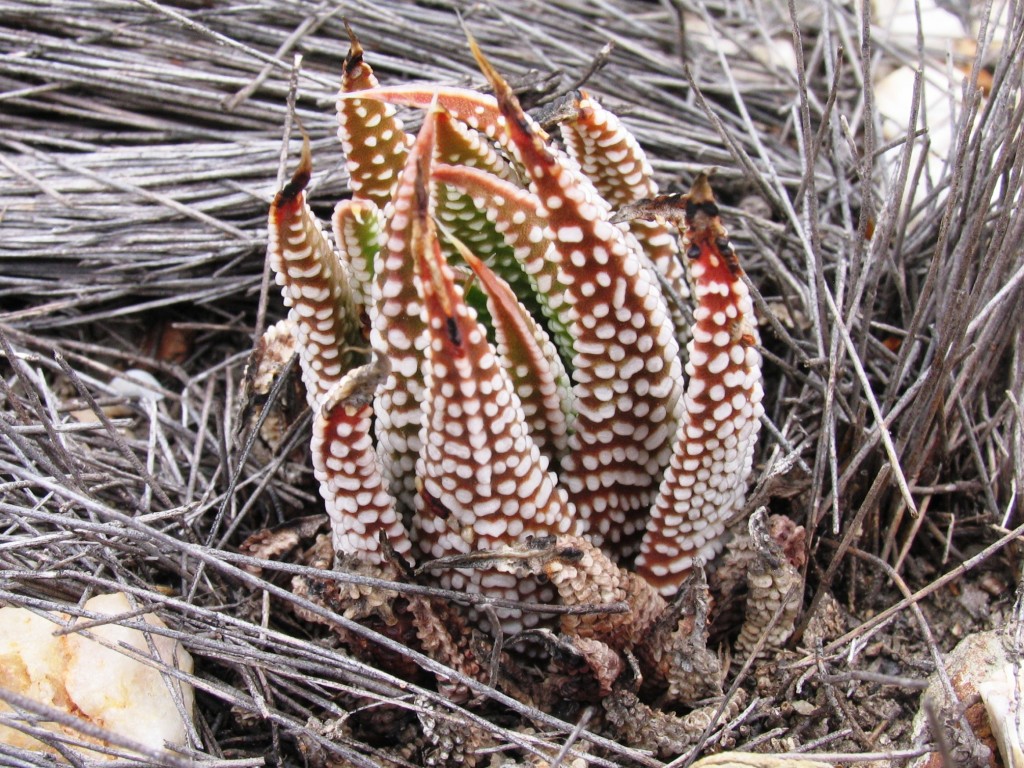
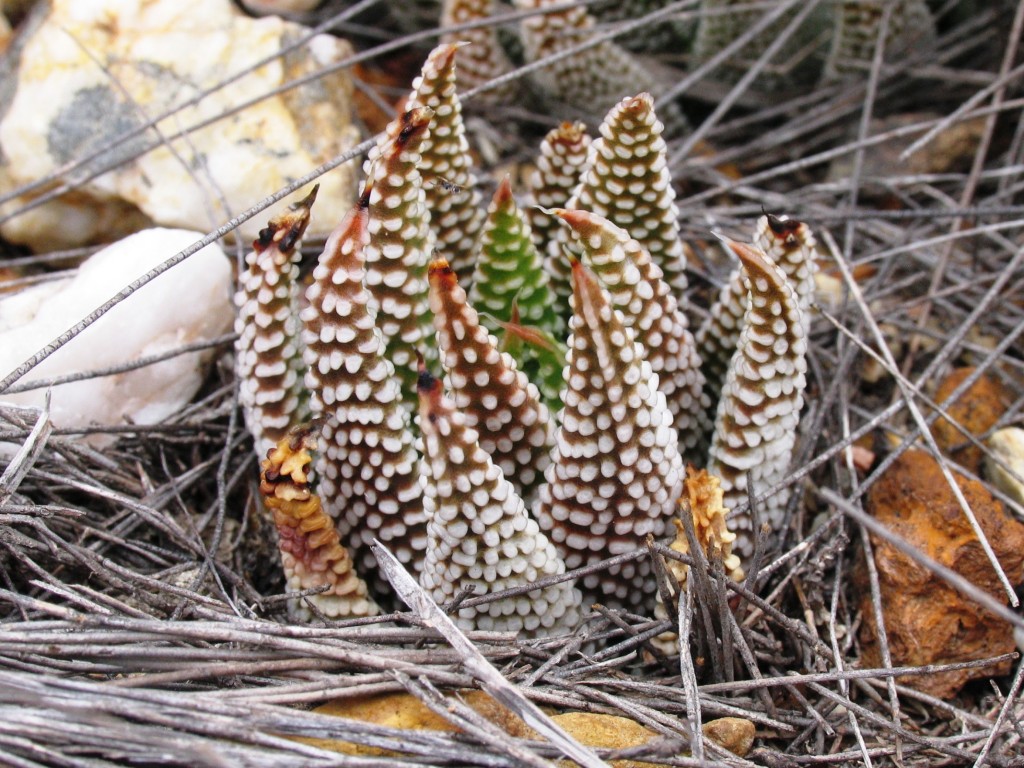

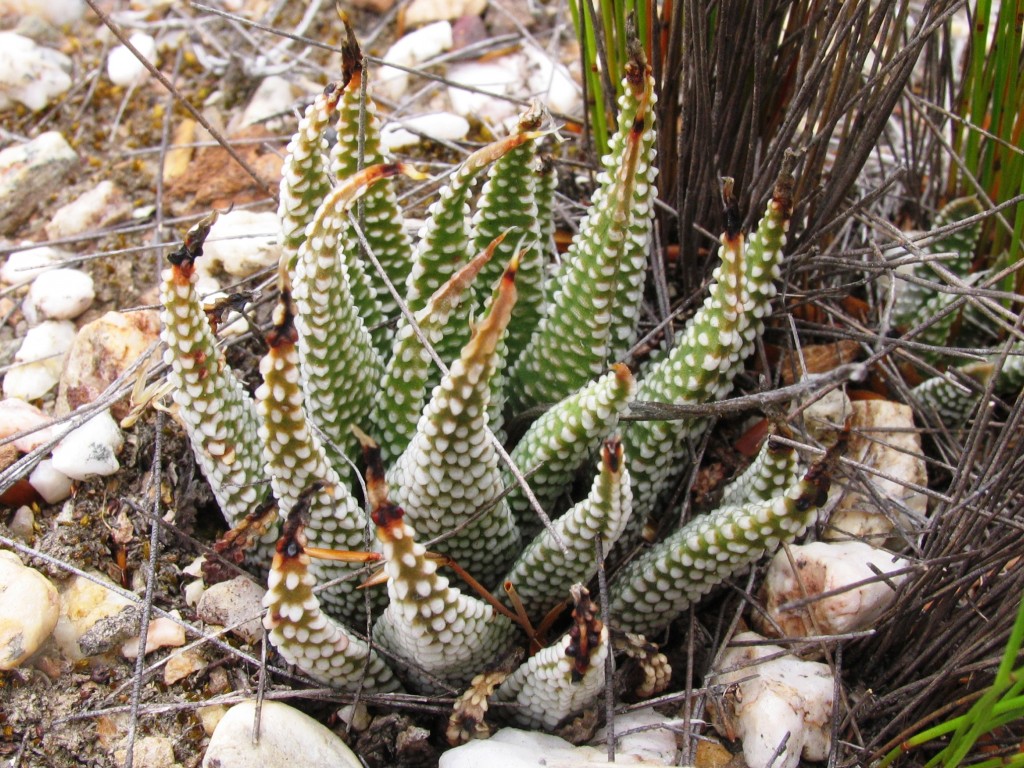
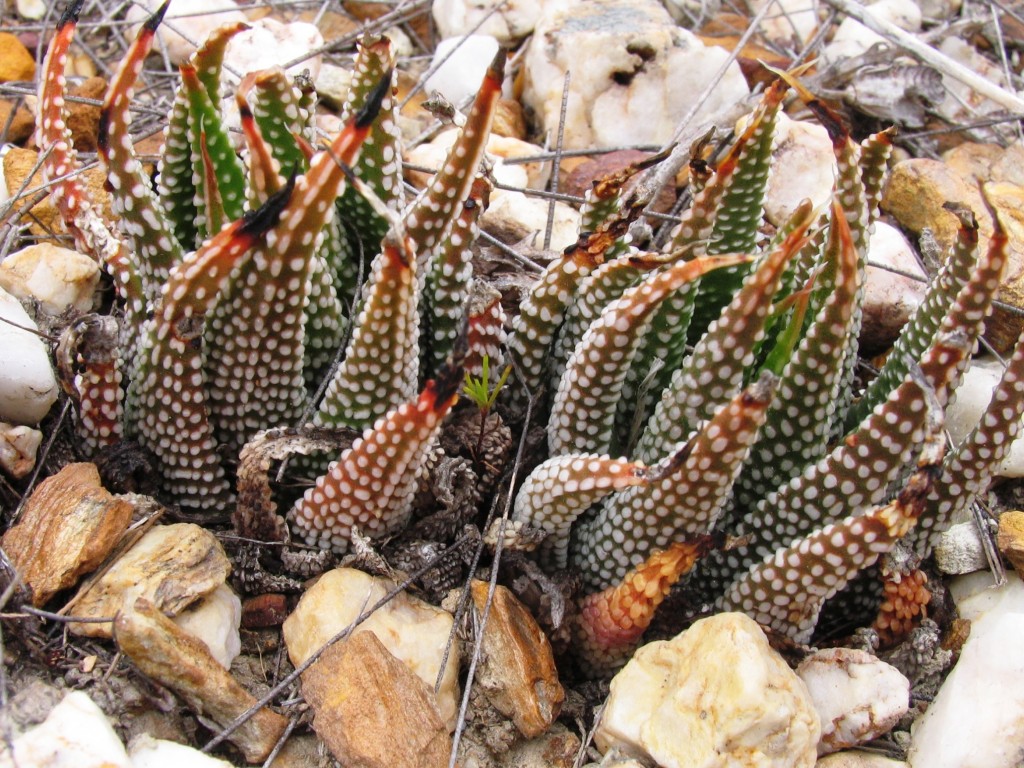

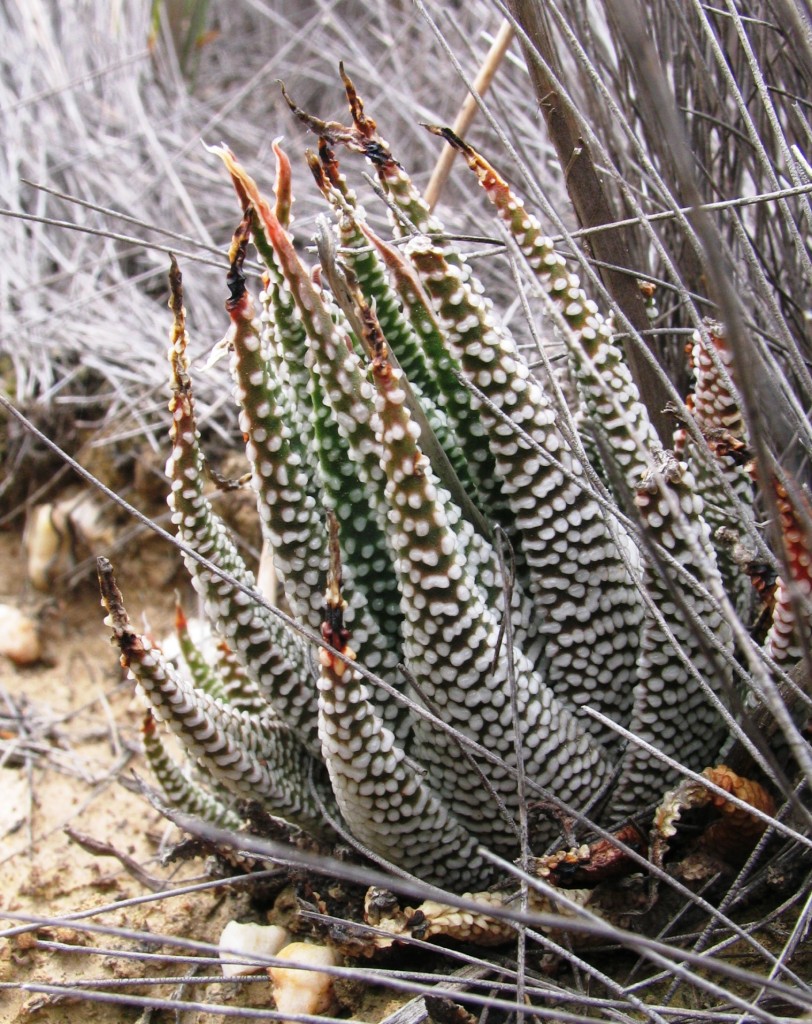

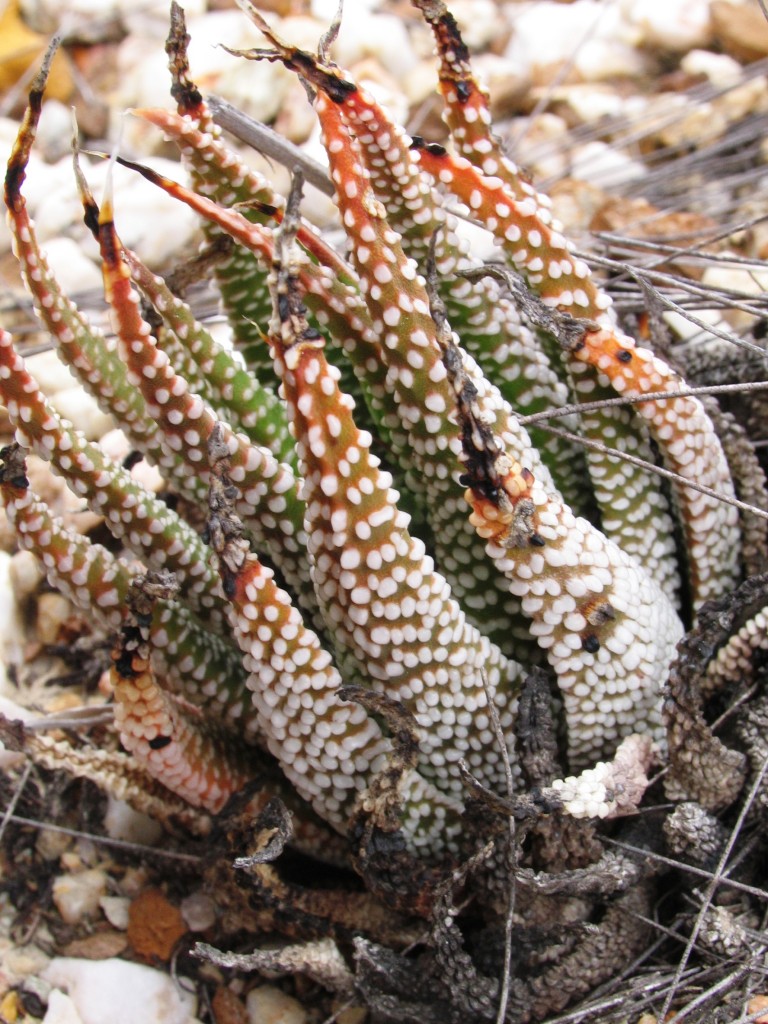
12. MBB7932 H. minima S Kleinberg (figs 12)

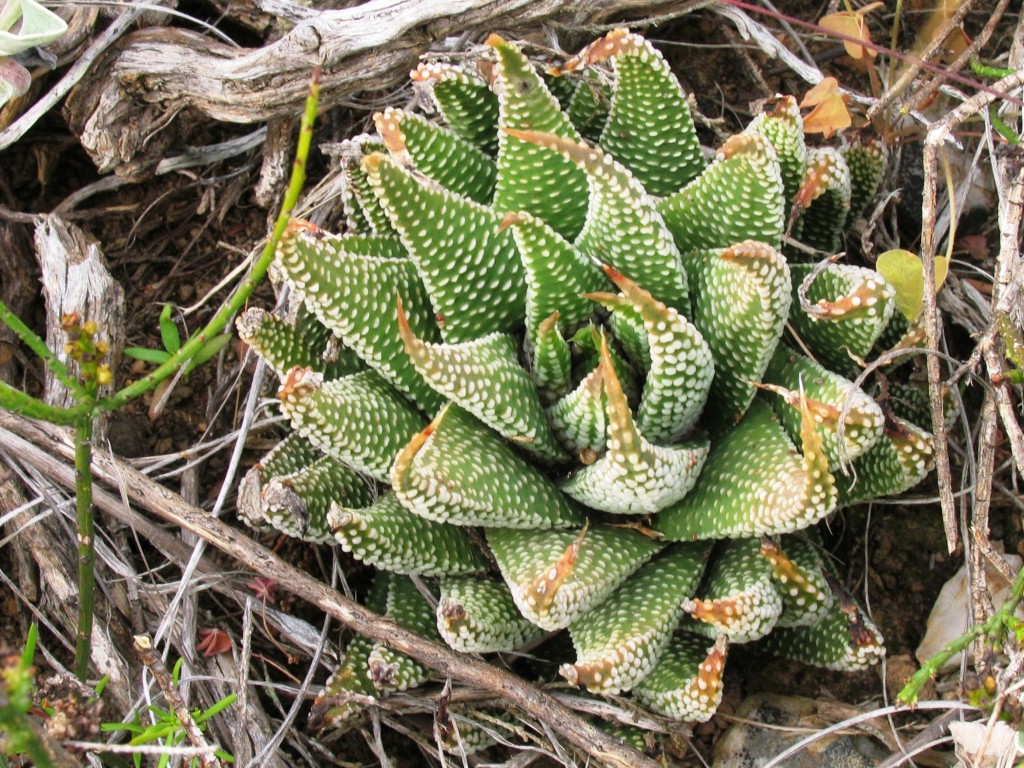

Set 3 H. mirabilis
H. mirablis is an extremely complex group of many populations and plants and distributed from Albertinia in the east to near Caledon in the west, and from the foothills of the Langeberg to the coast. The relationship with H. retusa hangs on the slender thread of flowering time, with H retusa flowering in late spring and H. mirabilis in late summer. The relationship of these two species to H. pygmaea in the east and H. mutica to the west has been mooted by me elsewhere. A similar scenario can be suggested for the species recognized north of the Langeberg. Included in the following sets is the population at Die Kop that I surmise has its origins in interaction between H. mutica and H. mirabilis.
There are three populations in these sets (nos 13-15) that are suggestive of H. mirabilis ‘atrofusca’, while others have distinct resemblances to H. floribunda (e.g. 16). It is curious that nearly all the populations of H. mirabilis that occur in the same general geographic area as does H. mutica are of smallish plants. These I originally regarded as a separate species viz. H. heidelbergensis. This should be seen as one of those decisions based on inadequate sampling and knowledge of the field. This phenomenon now suggests to me that H. mutica is occupying middle ground between H. retusa in the ‘turgida’ form and H. mirabilis.
13. MBB7496 H. mirabilis Diepkloof S (figs 13)
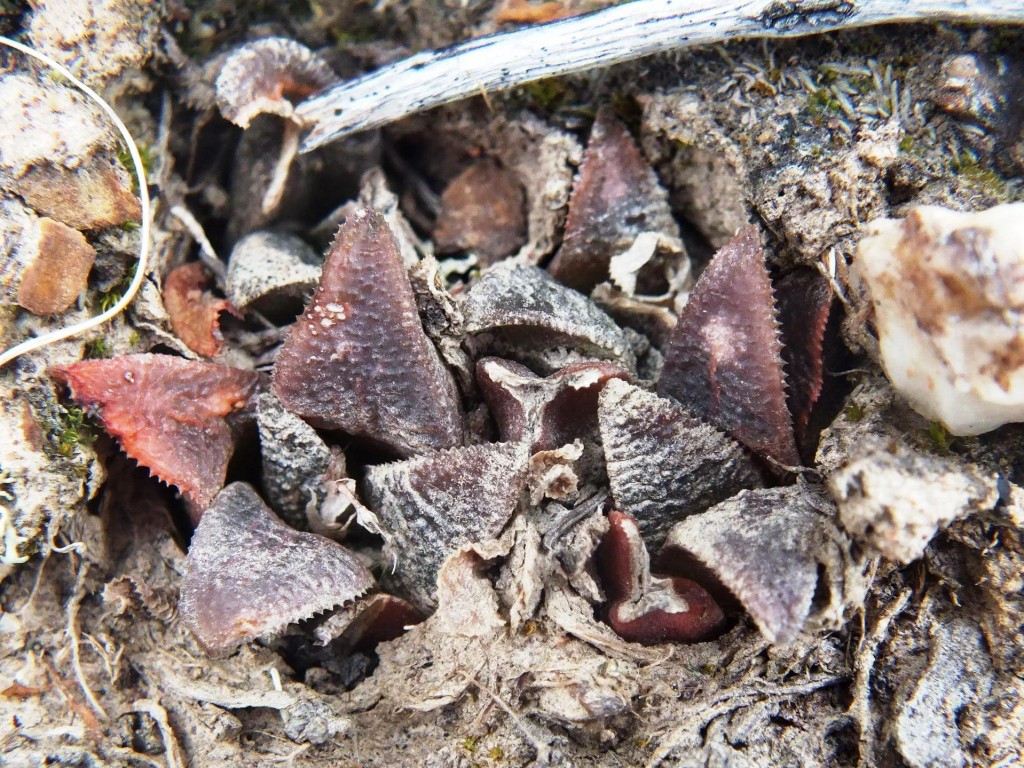
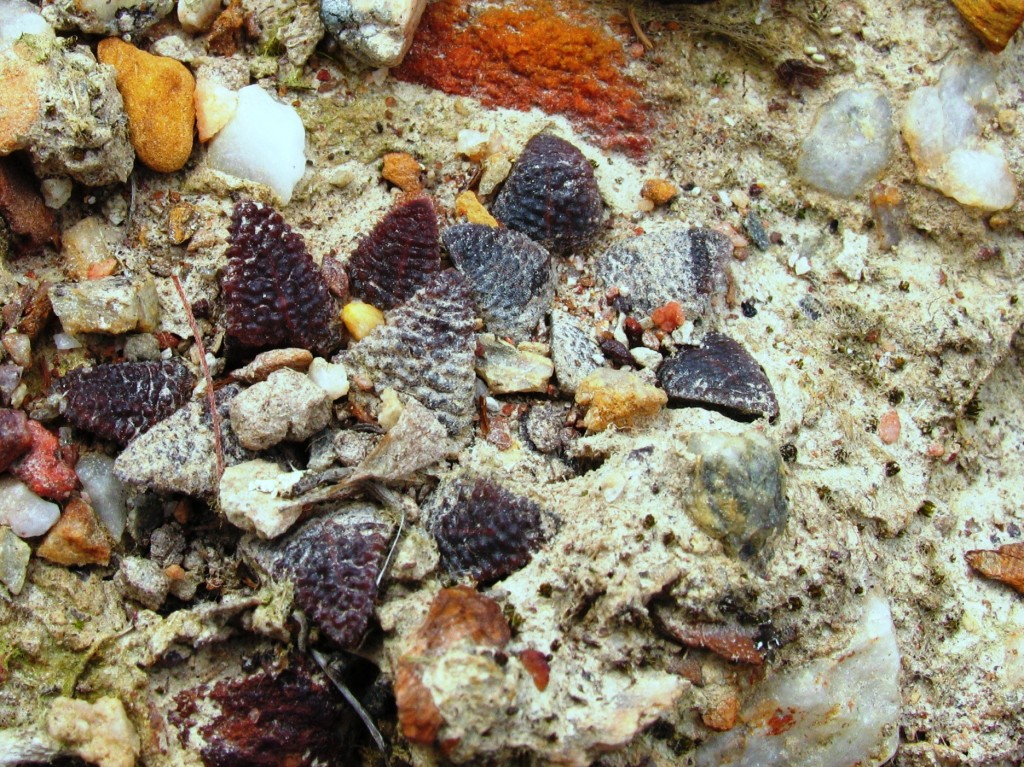

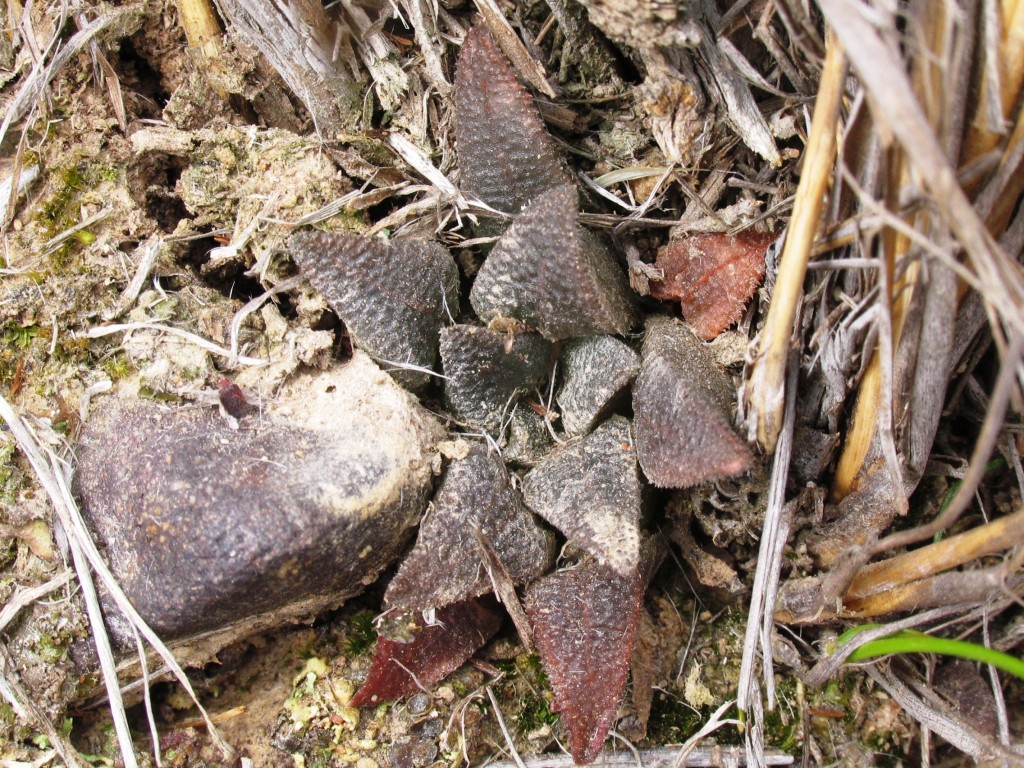
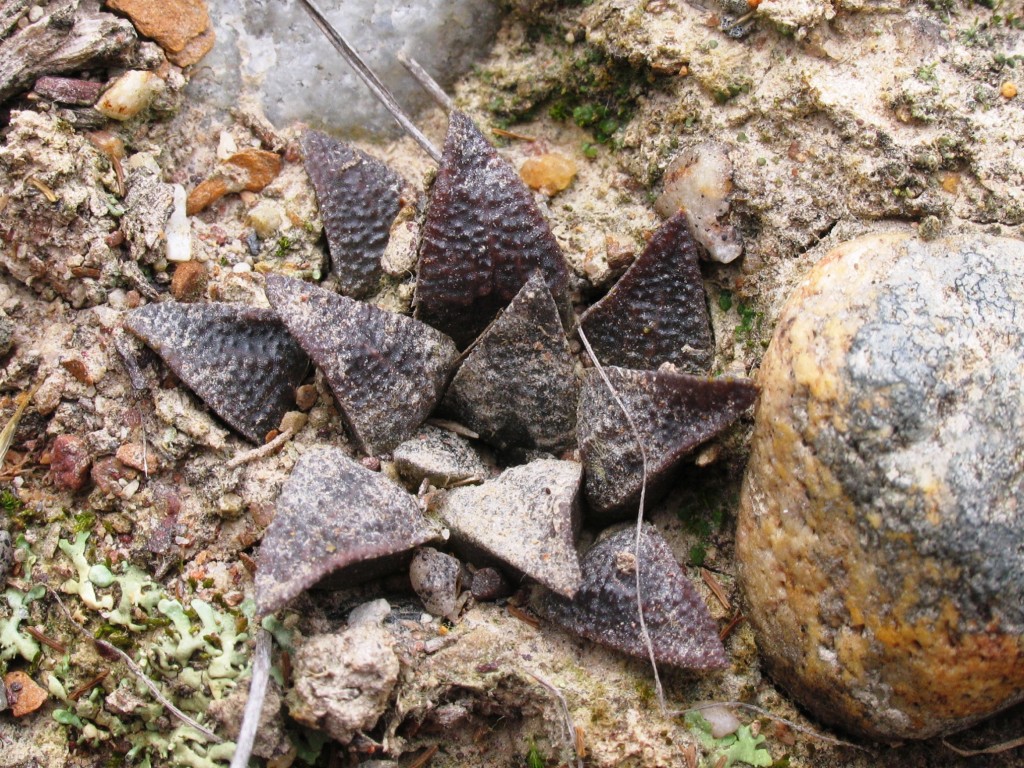


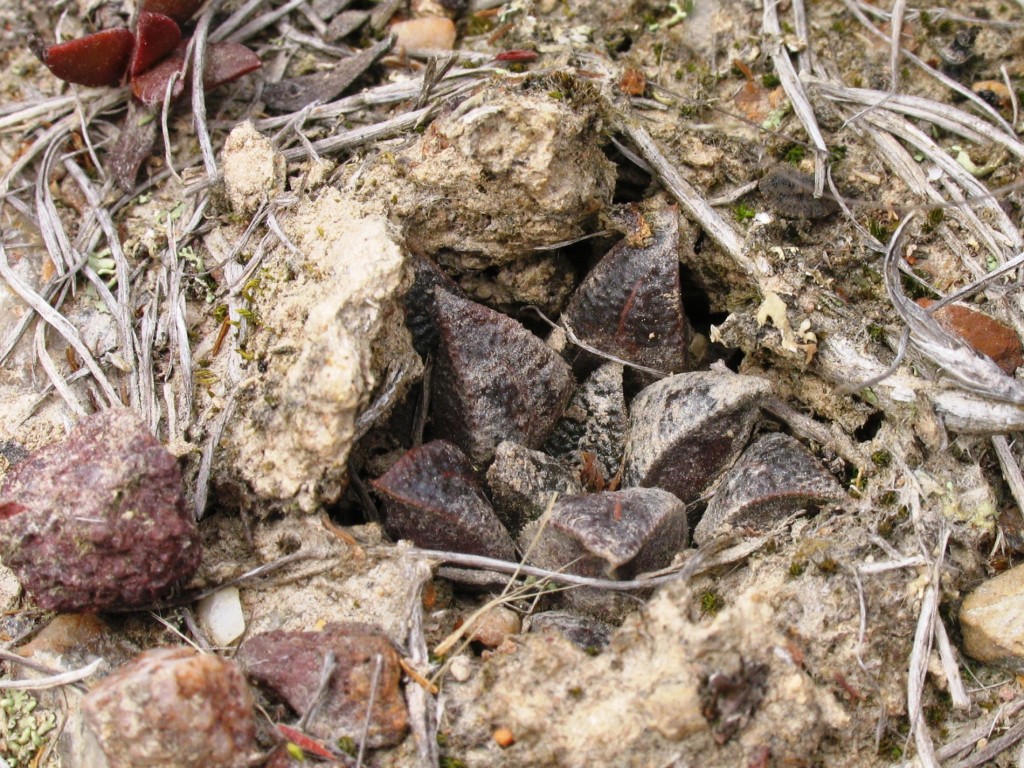


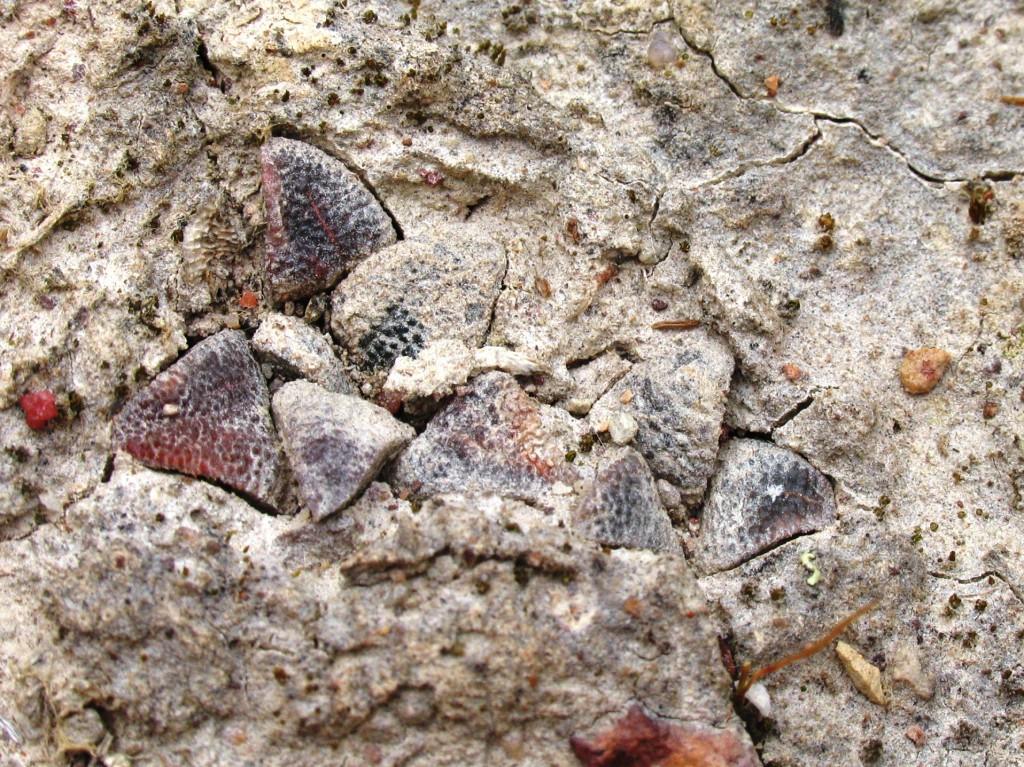


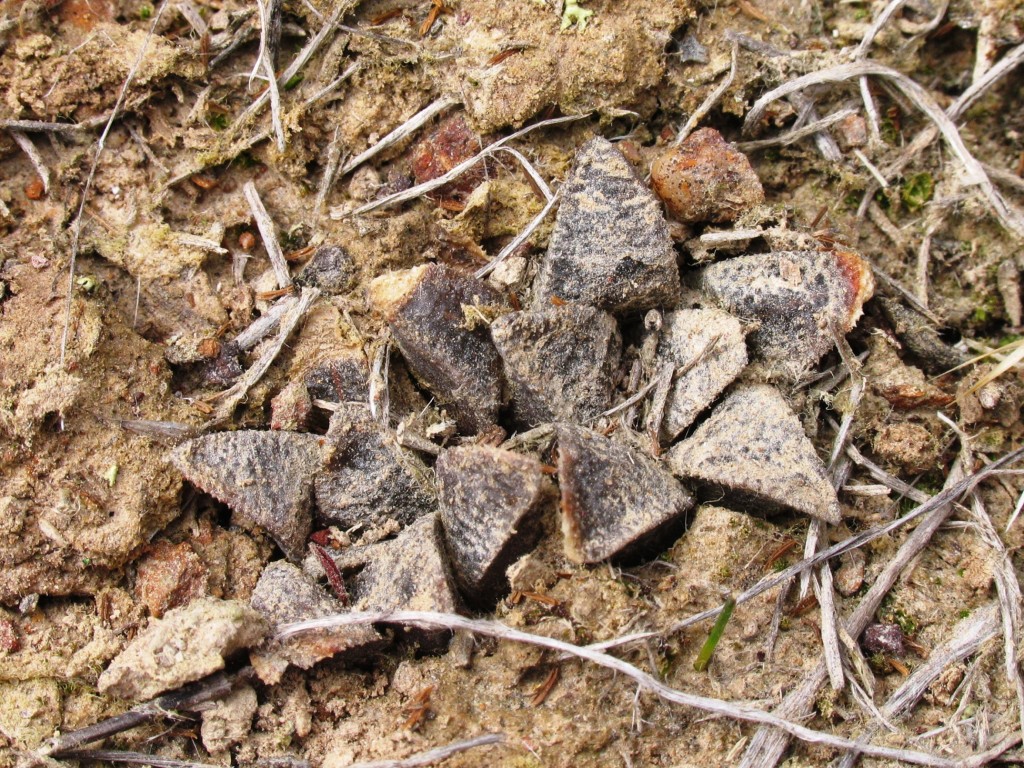
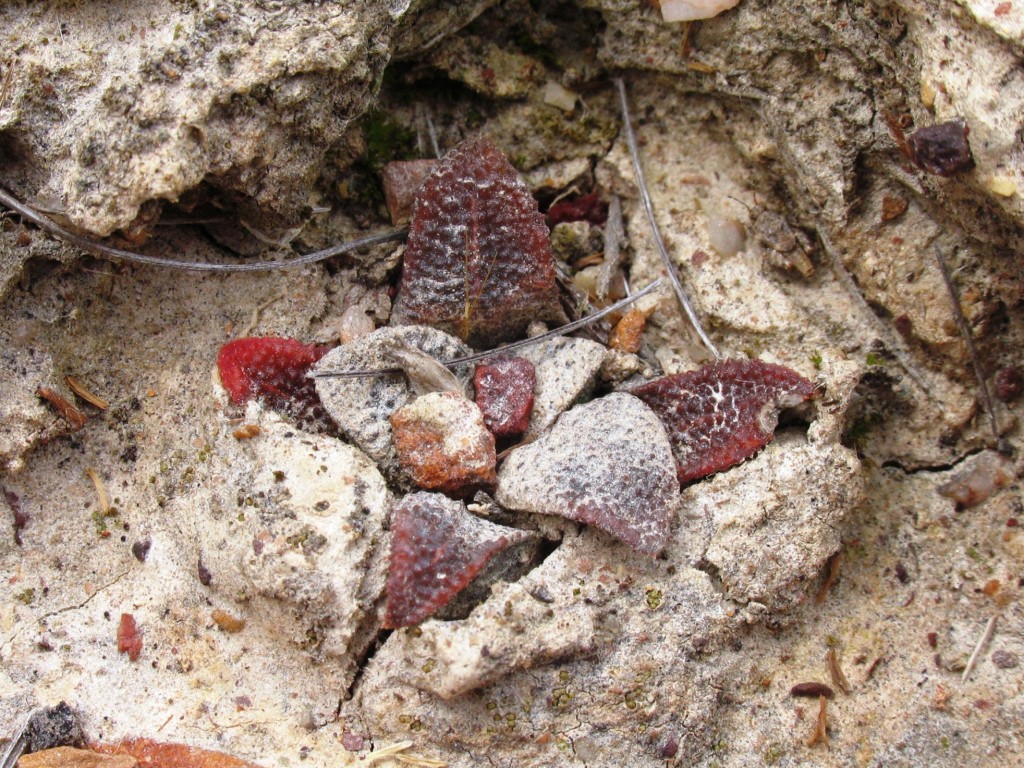


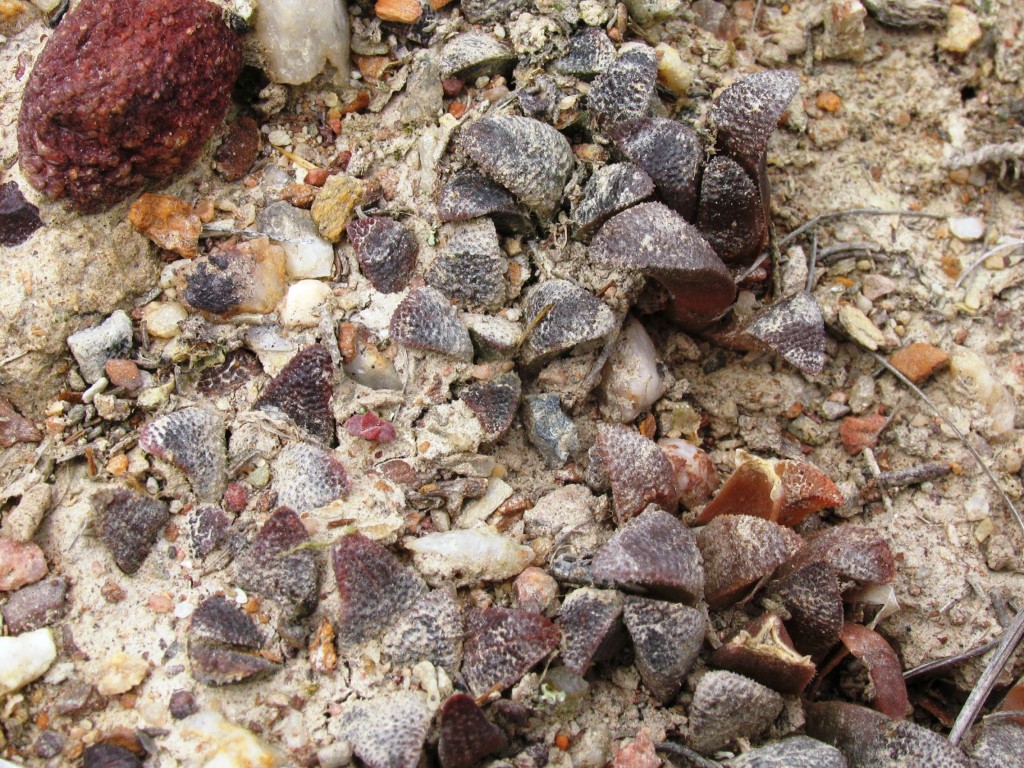
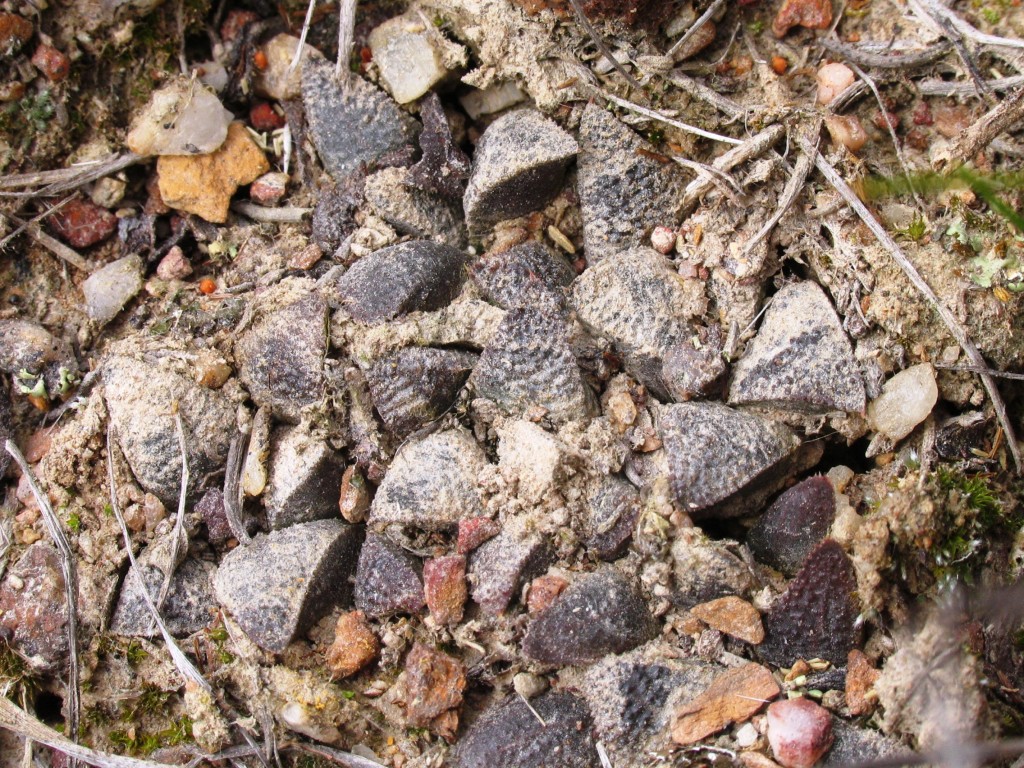
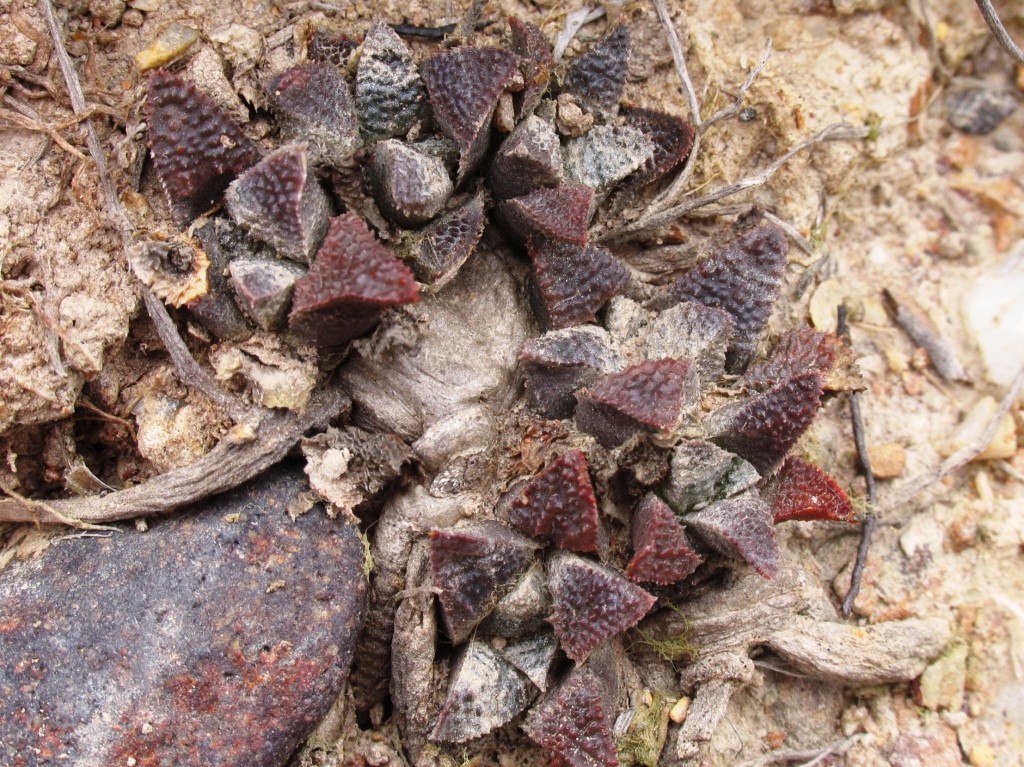
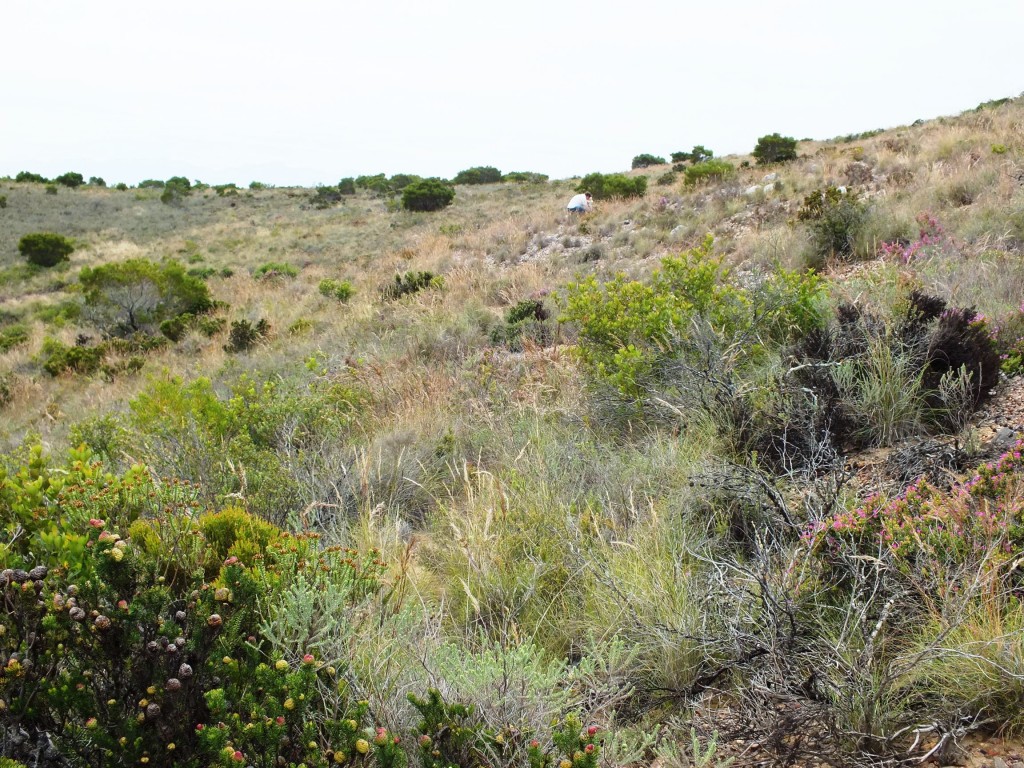
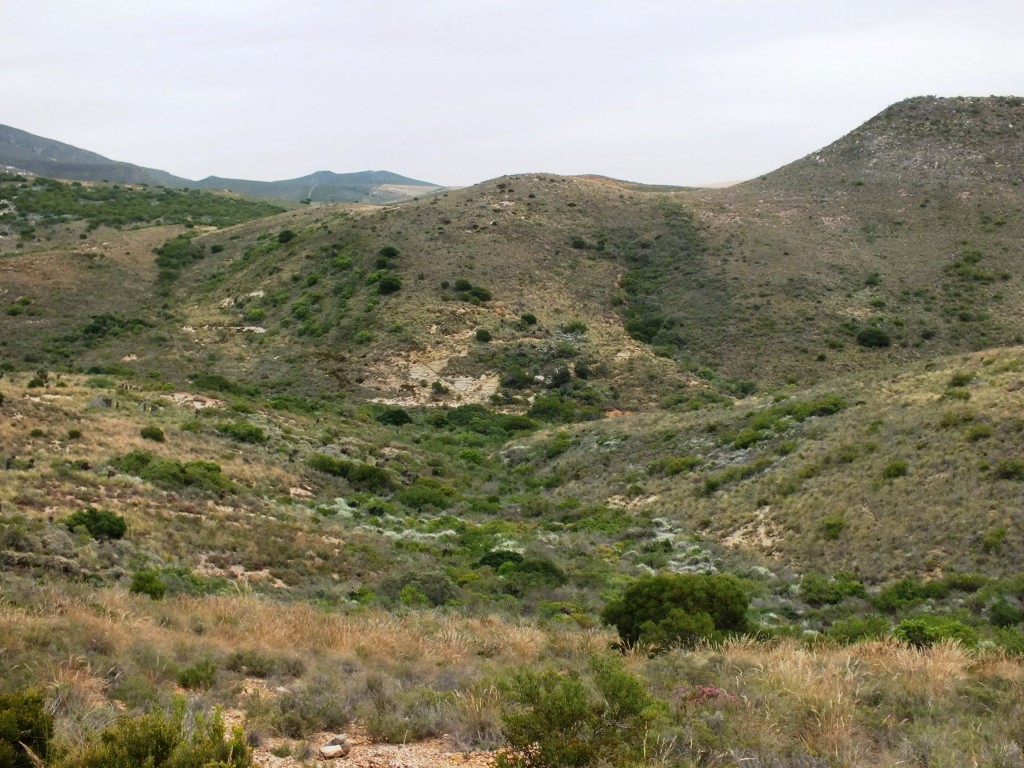
14. MBB7497 H. mirabilis S S Diepkloof (figs 14)
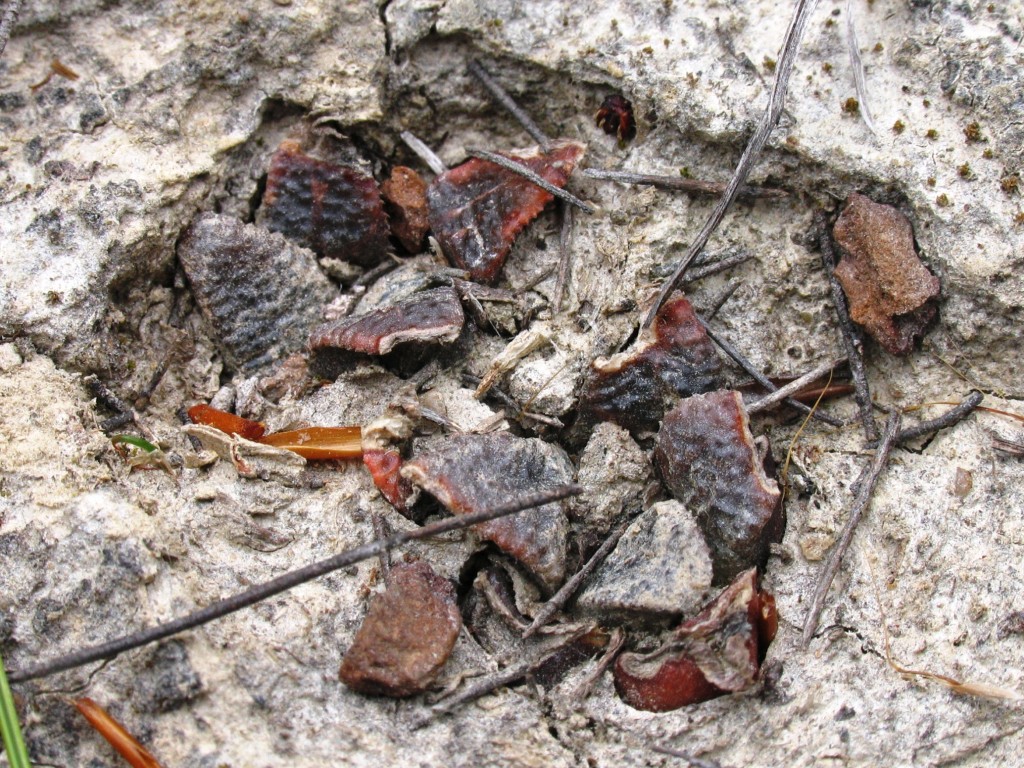
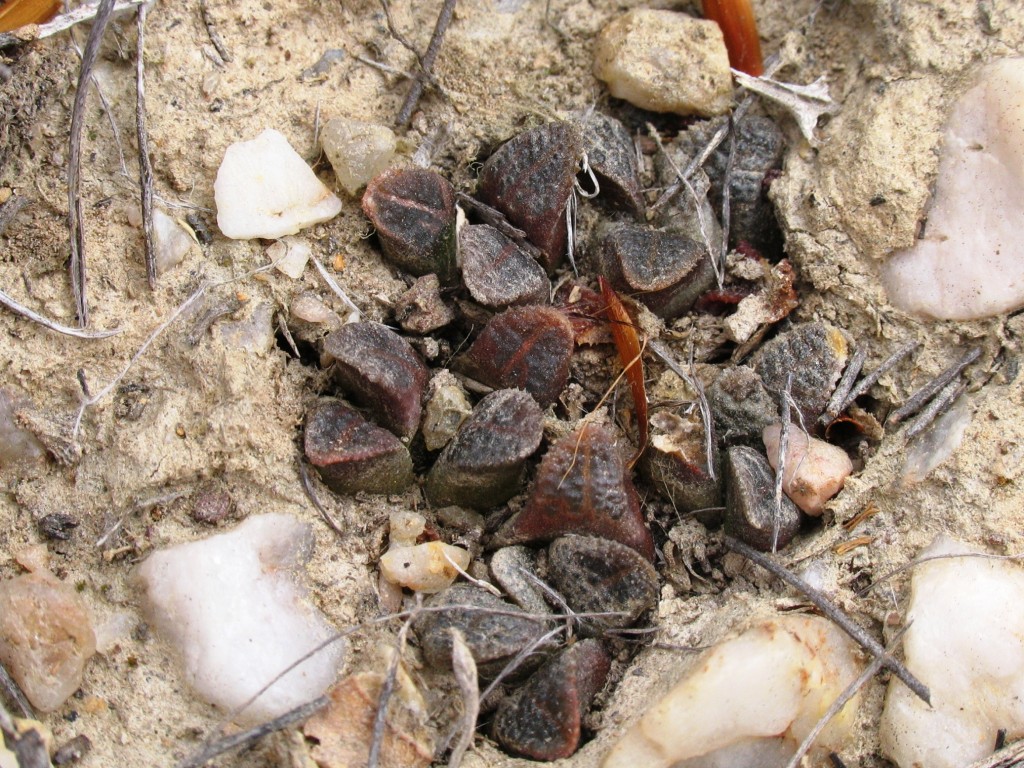

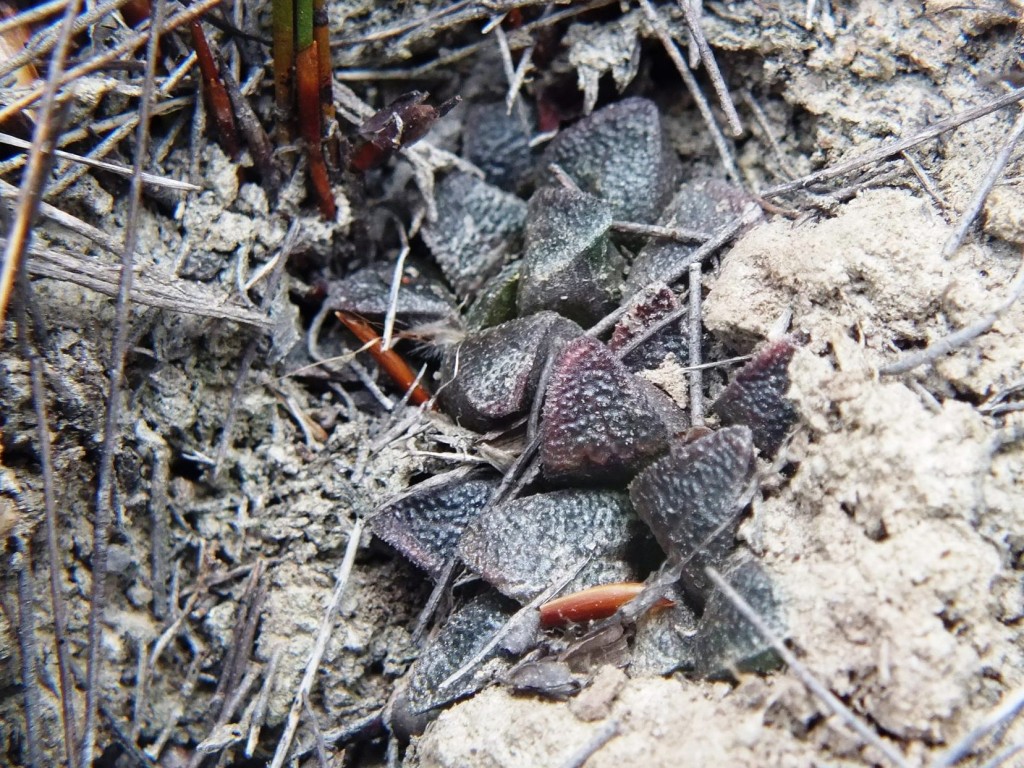
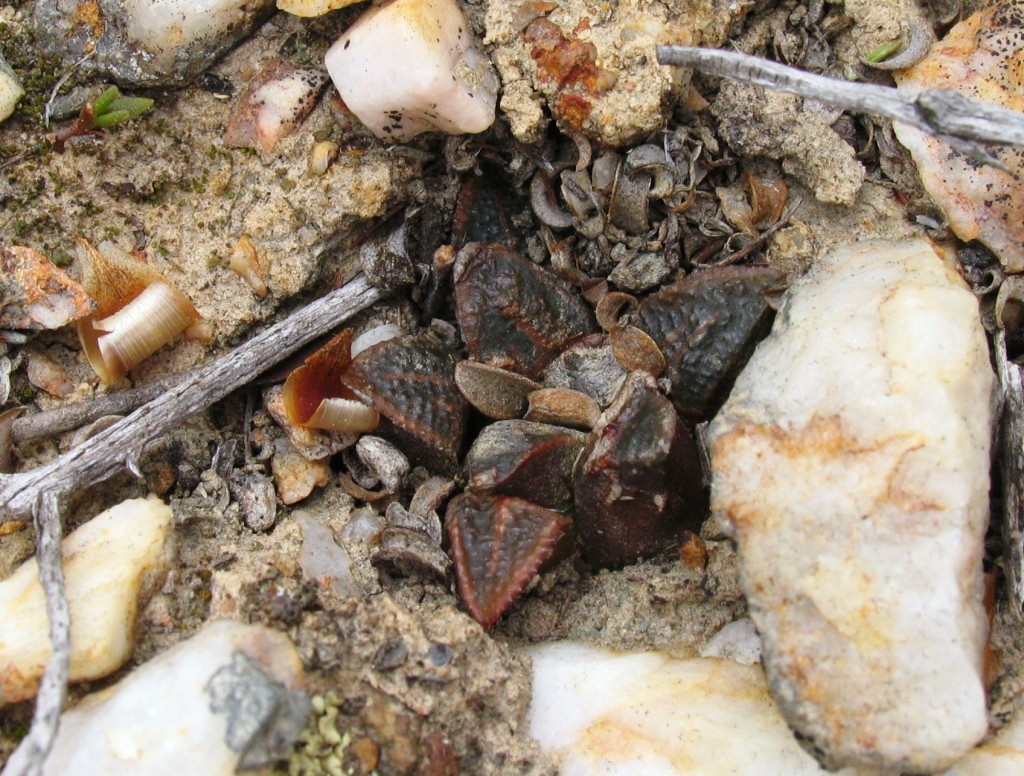
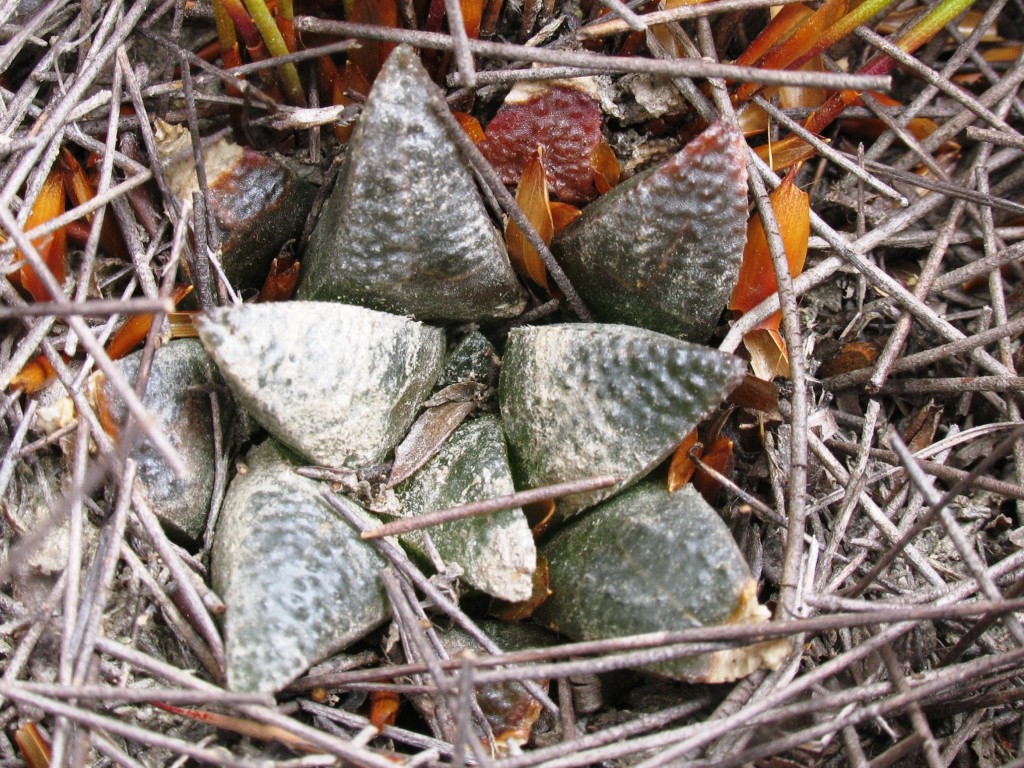

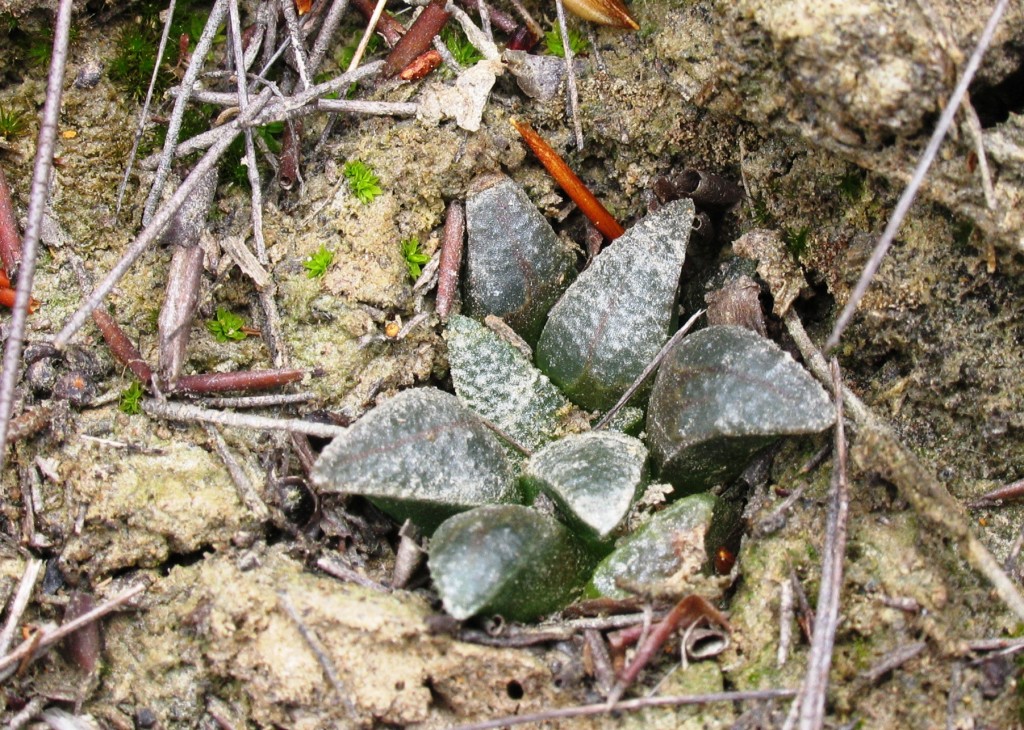
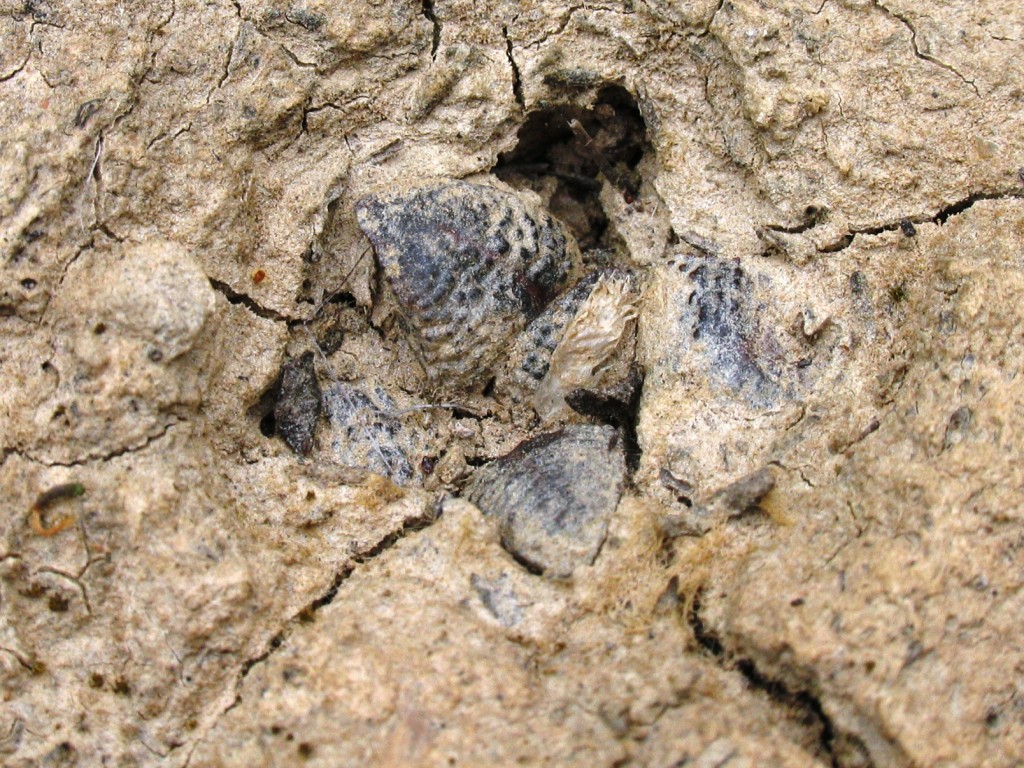
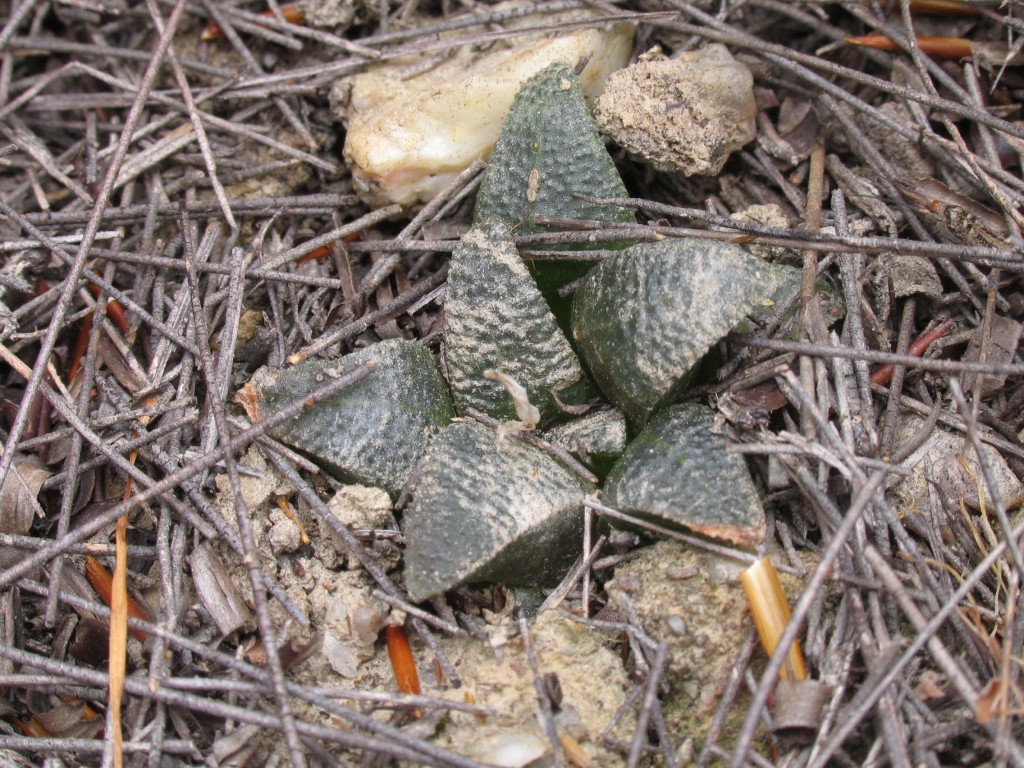
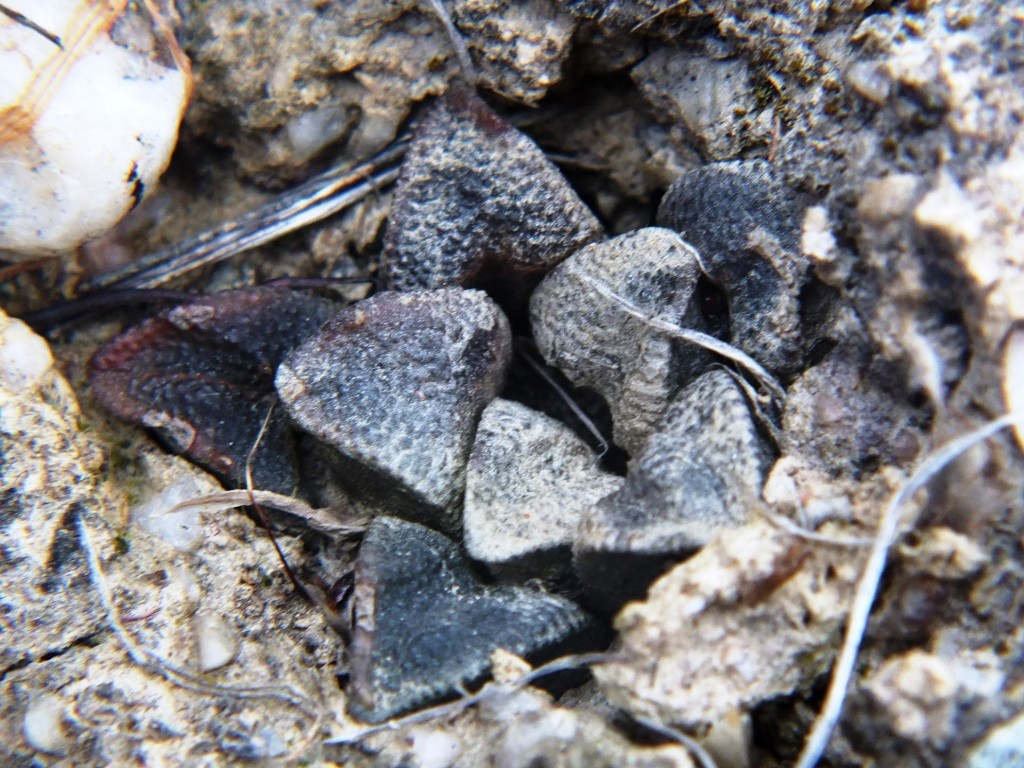

15. MBB7933 H. mirabilis S Diepkloof (figs 15)
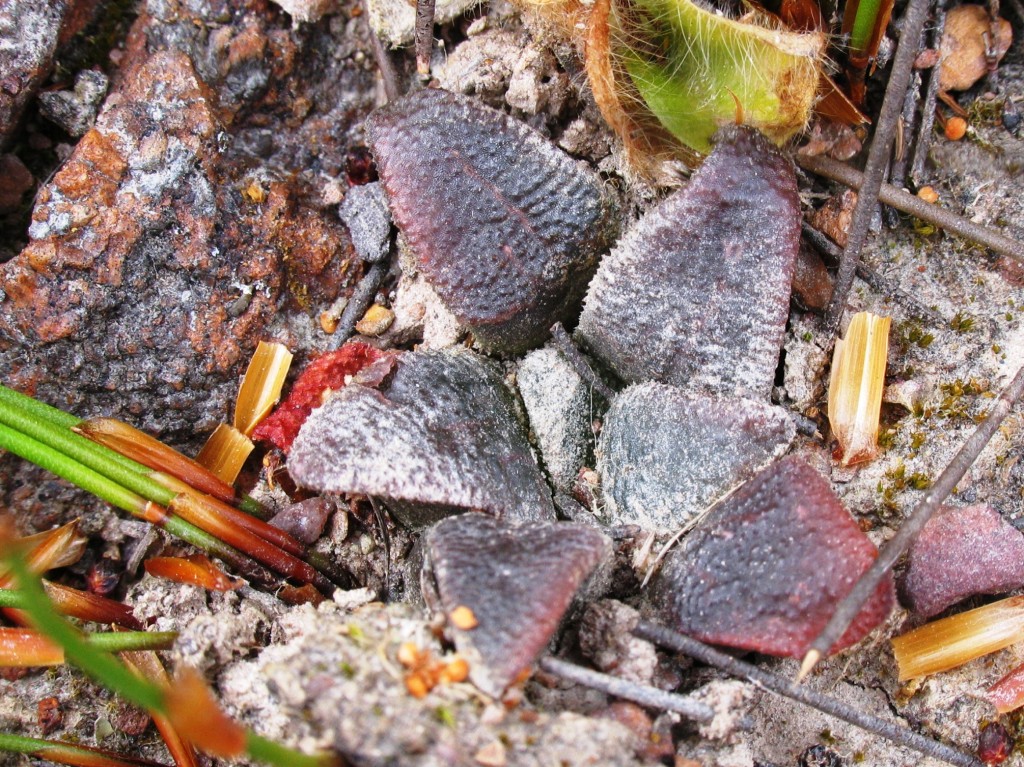
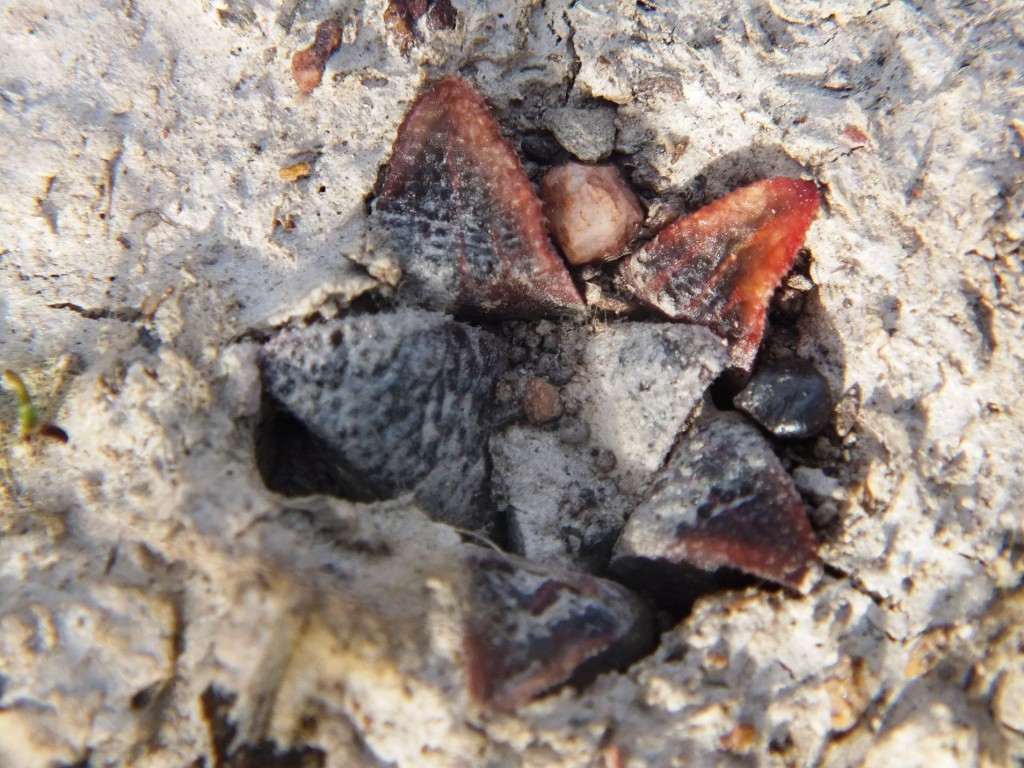

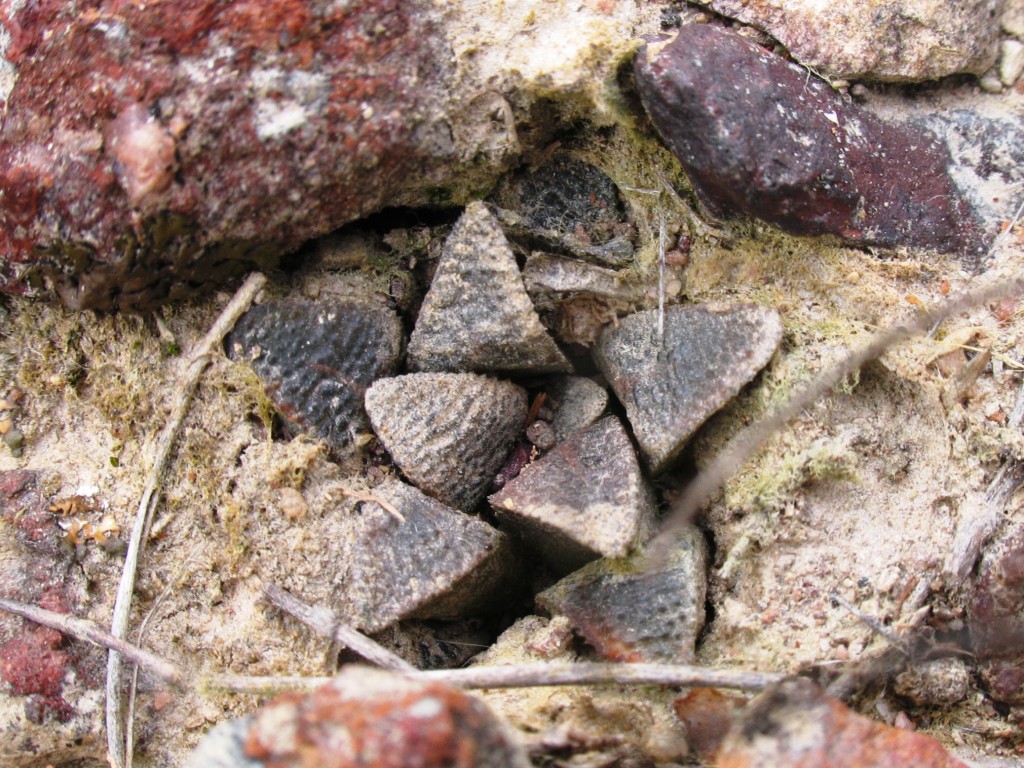
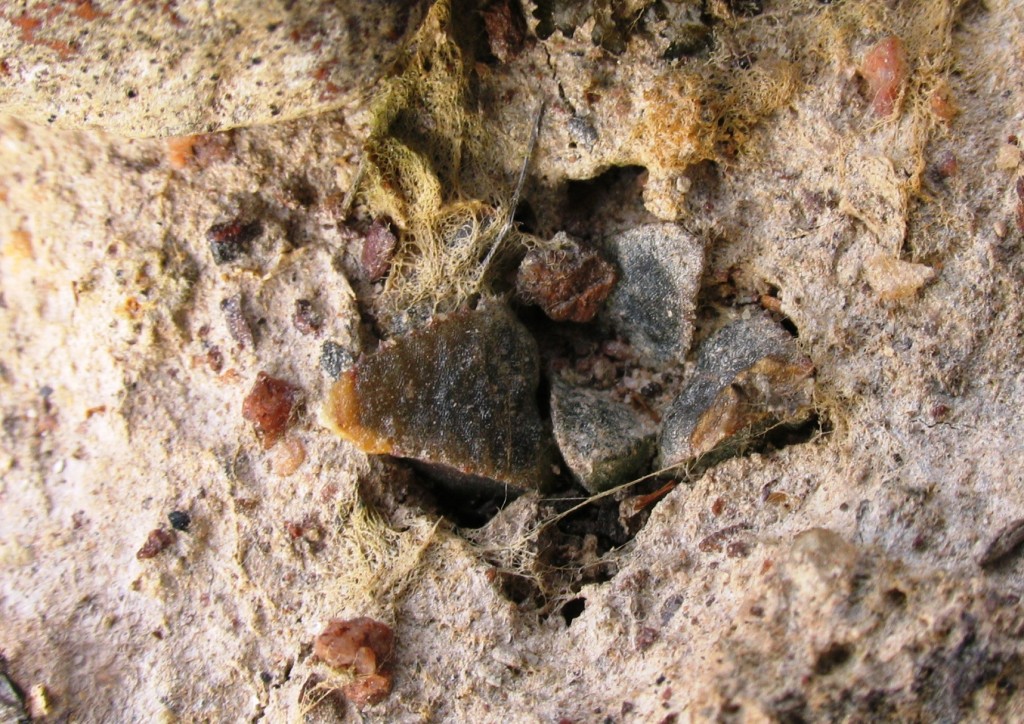
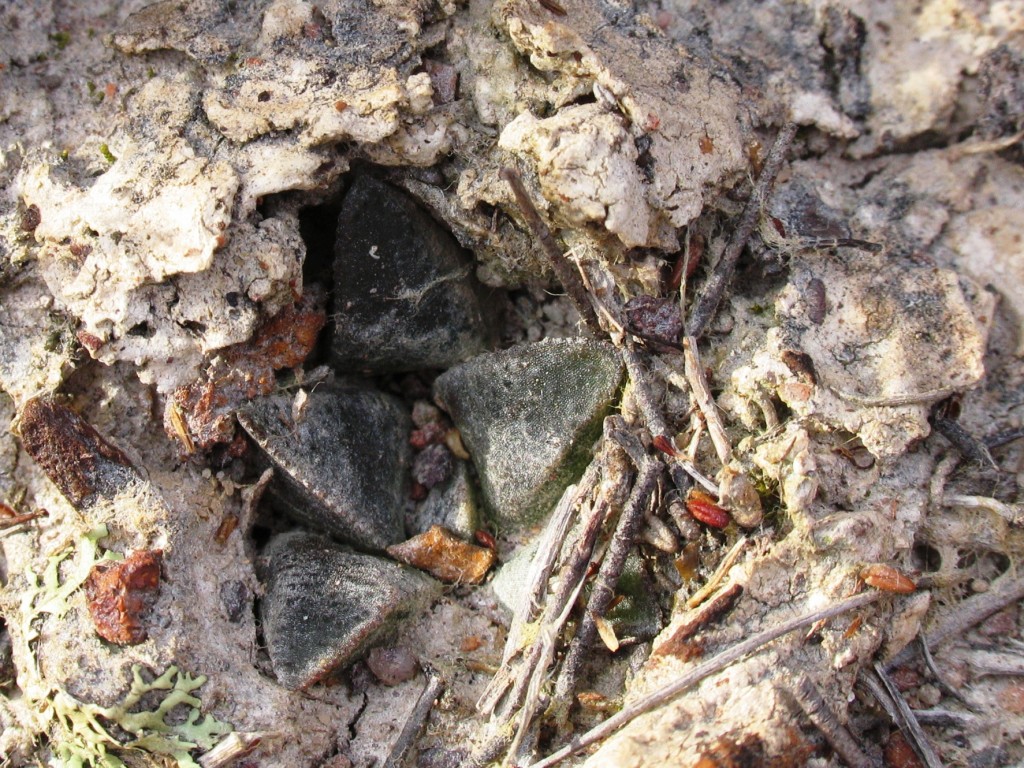
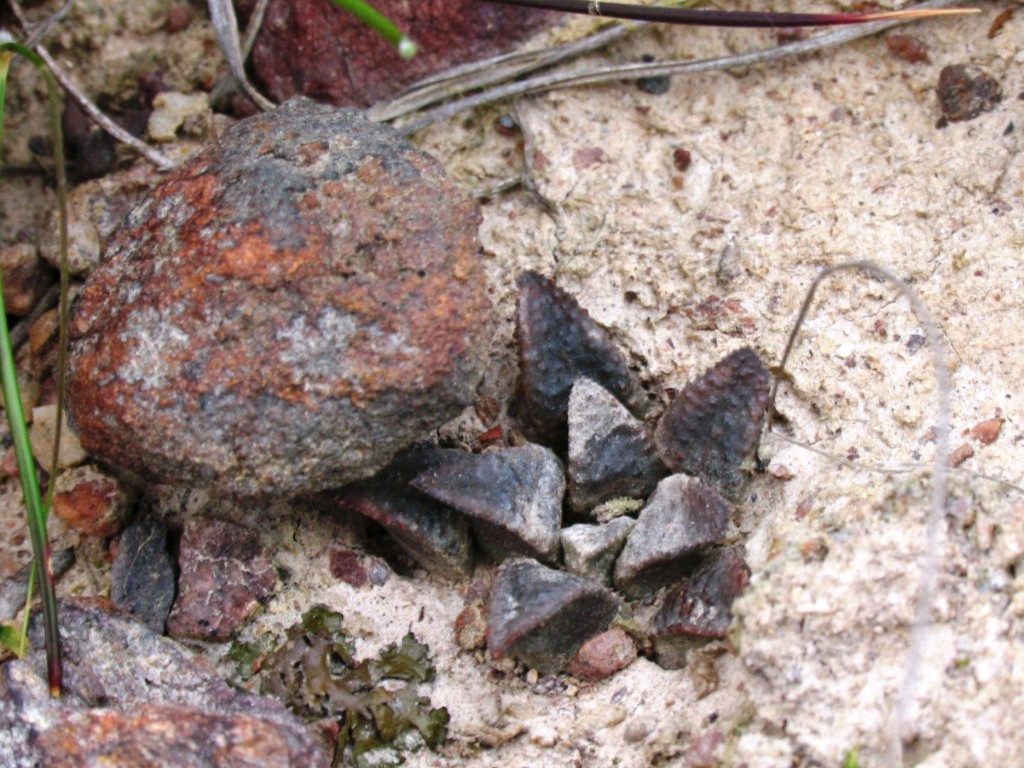
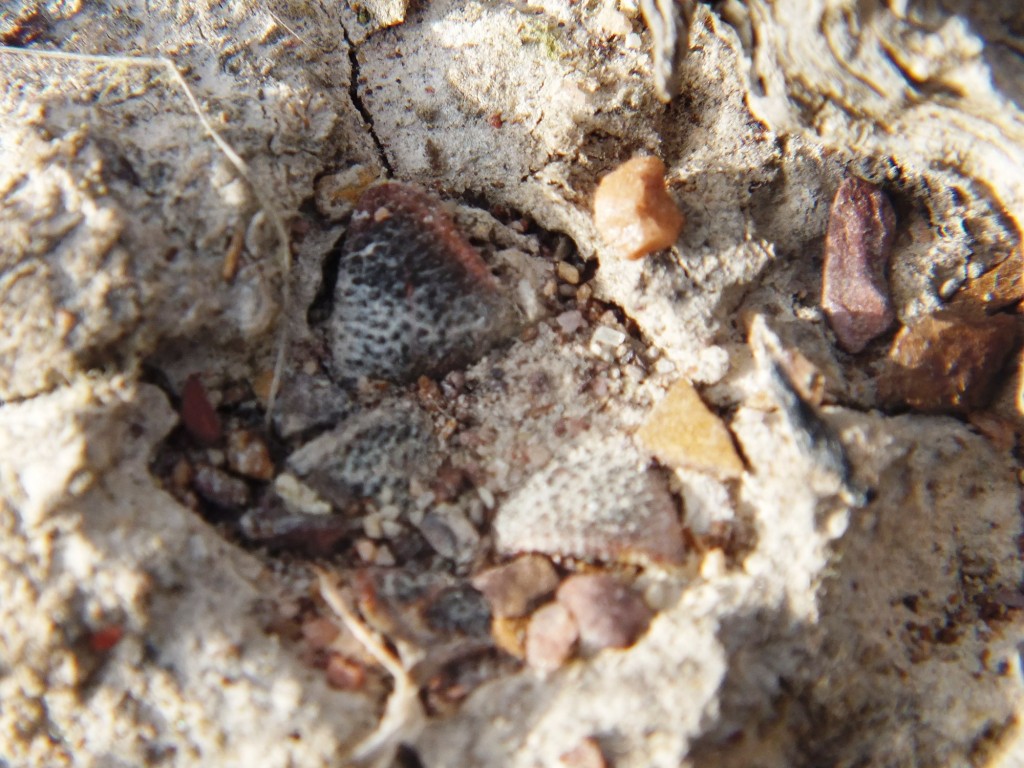

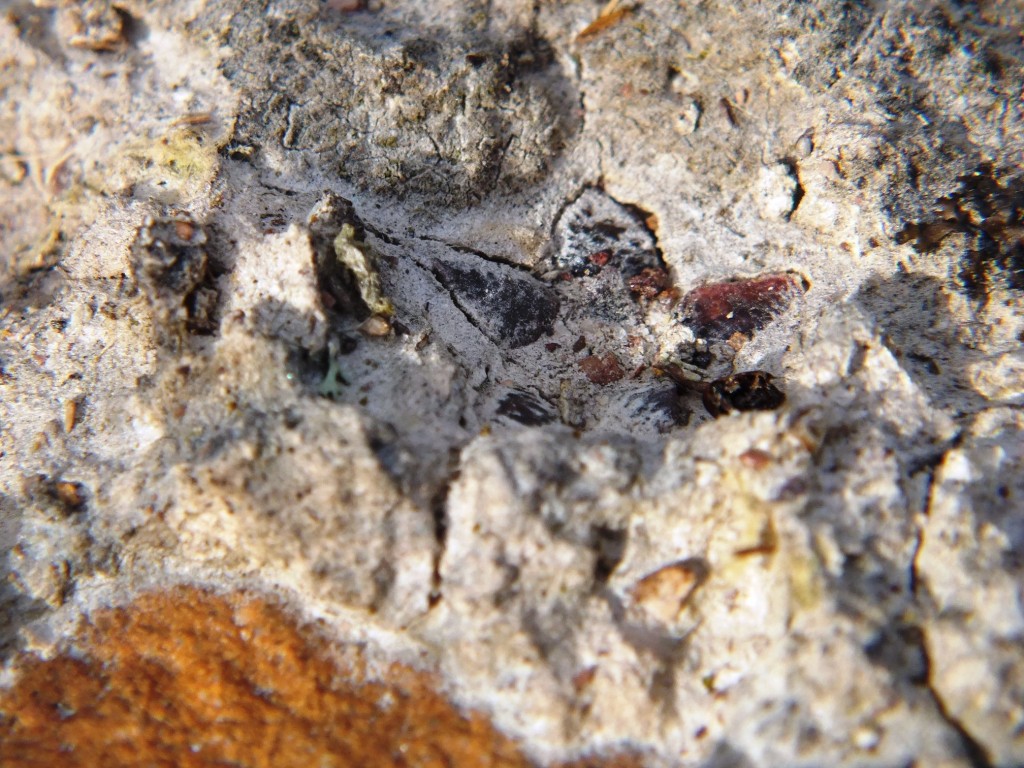
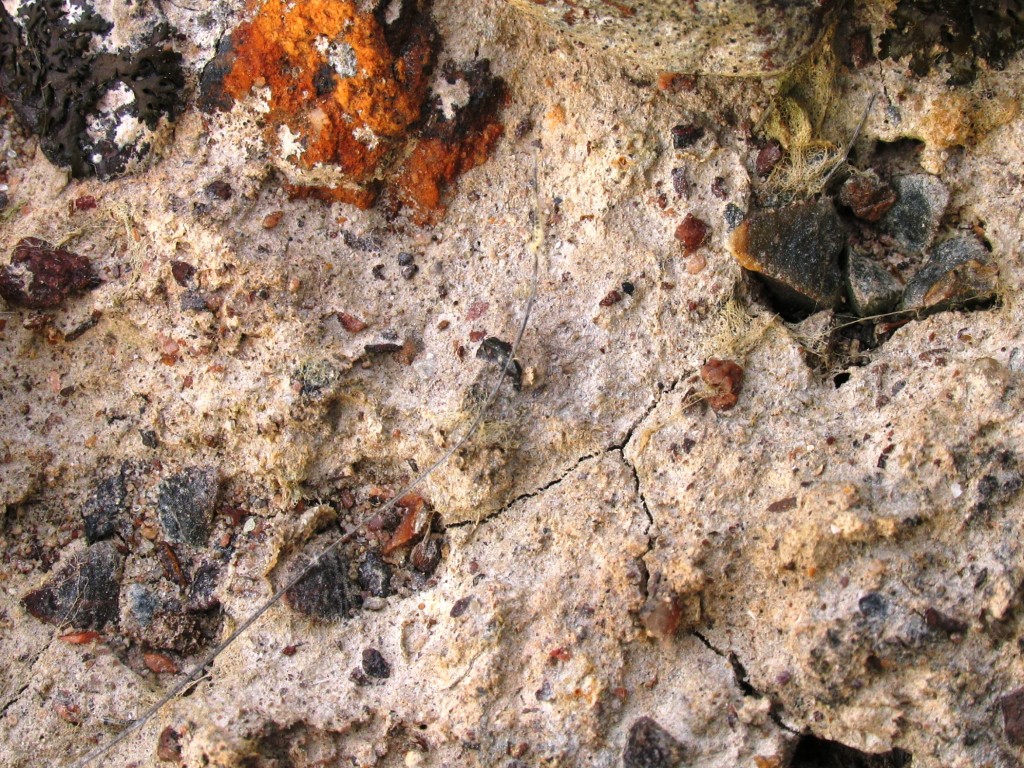
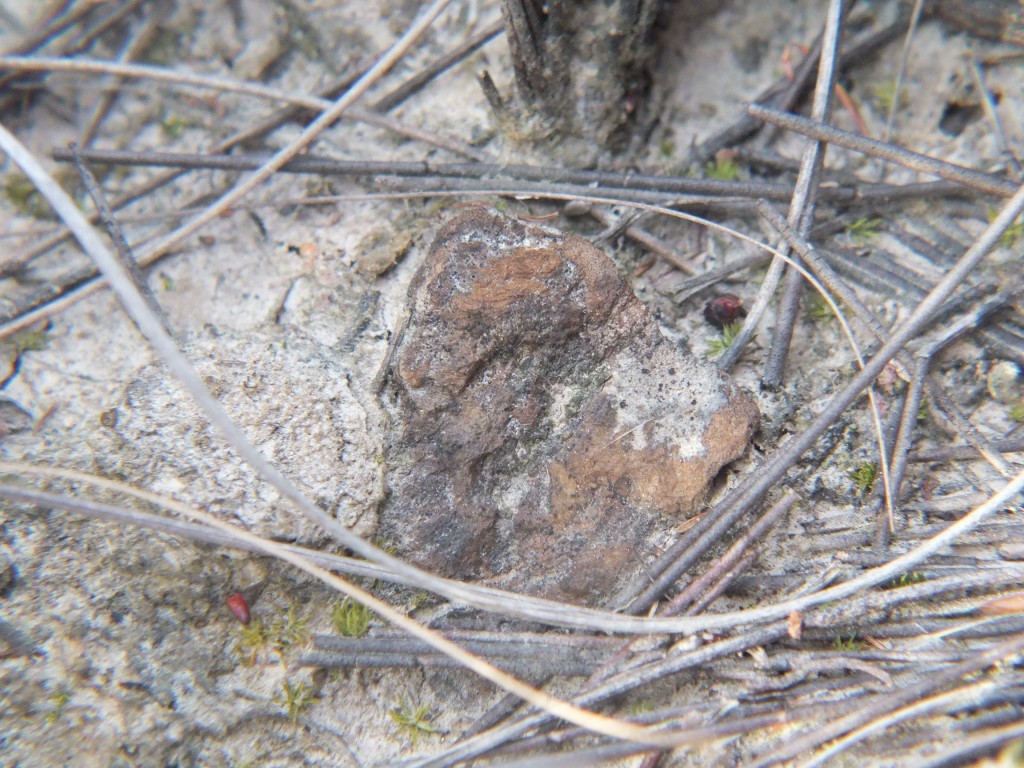
16. MBB7922 H. mirabilis Diepkloof (figs 16)
A locality established by Jakub Jelimicky. The similarities to H. floribunda is only apparent in some of the plants where the leaf tips are twisted, slightly flattened and rounded at the ends.
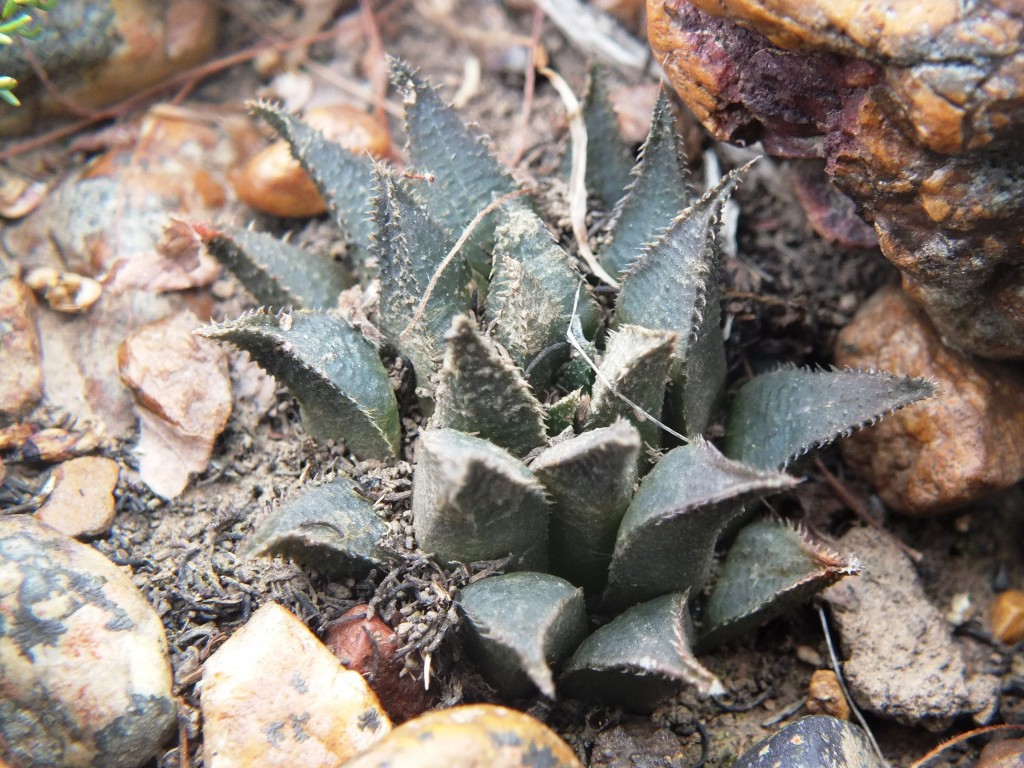
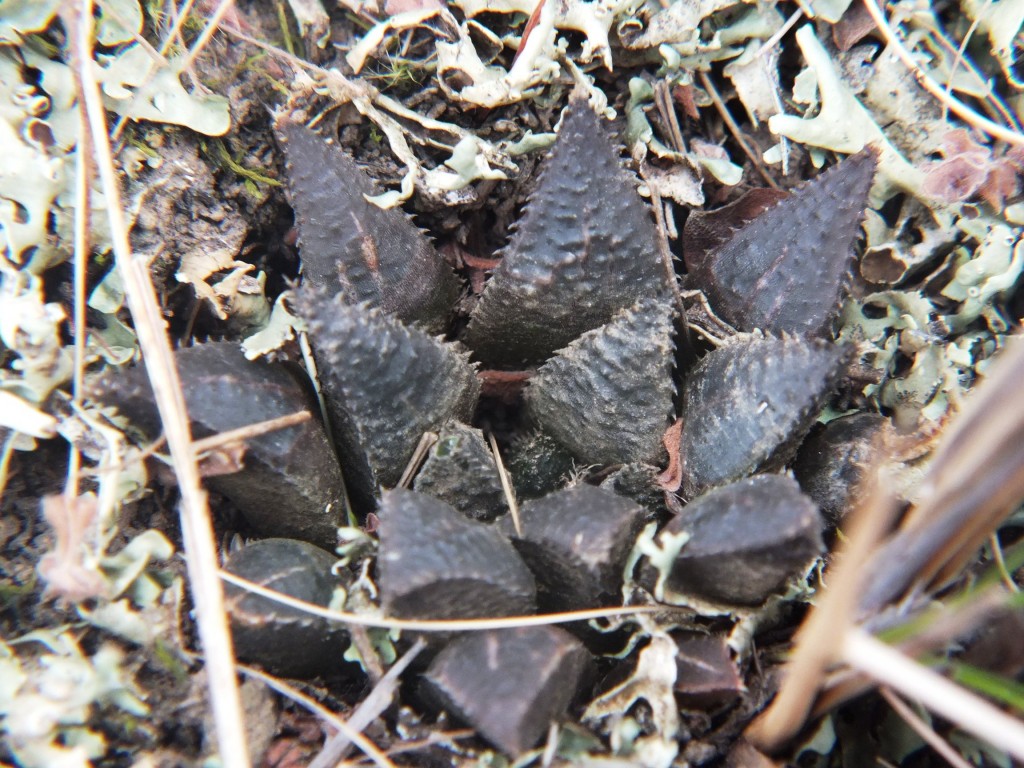
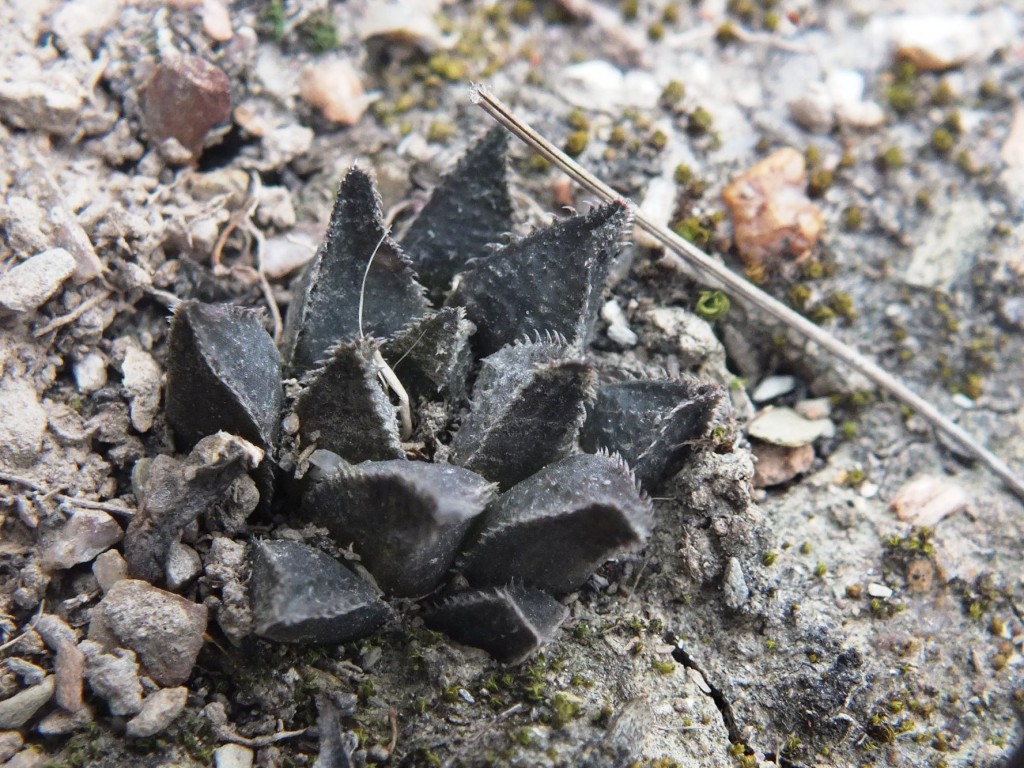
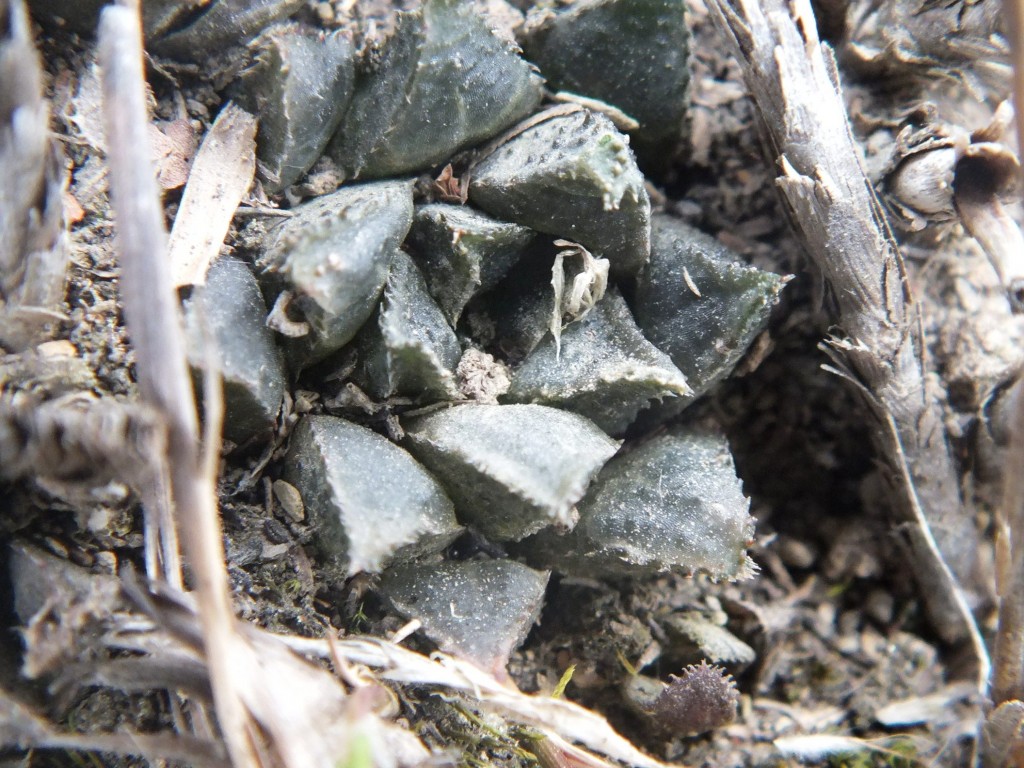


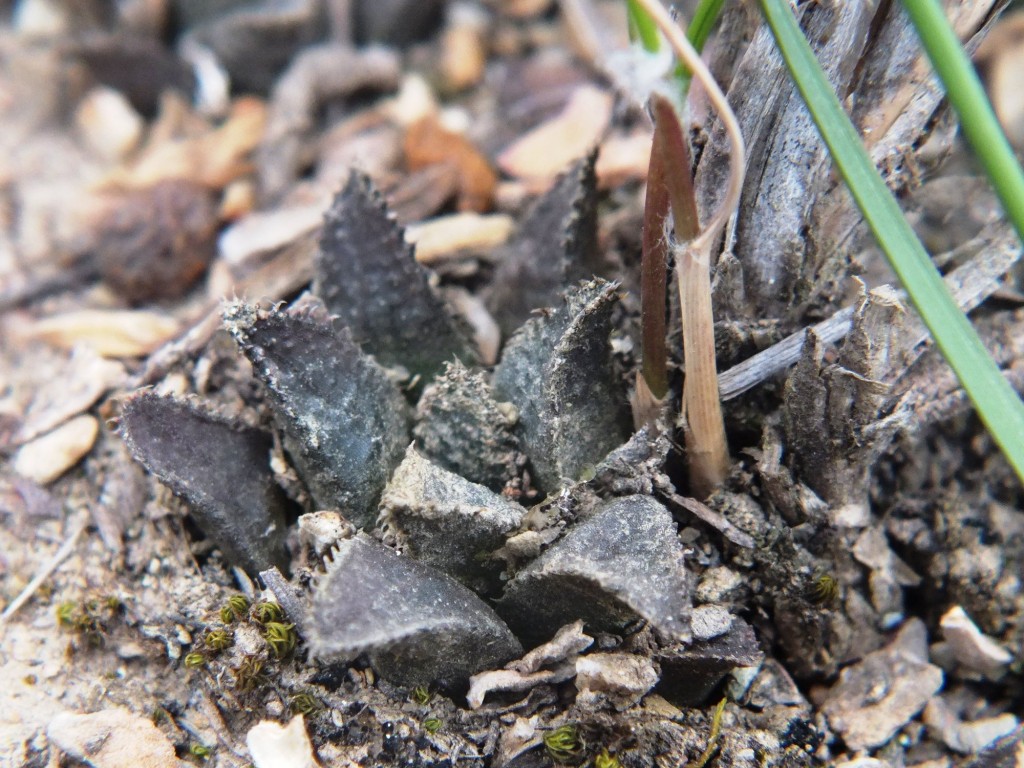
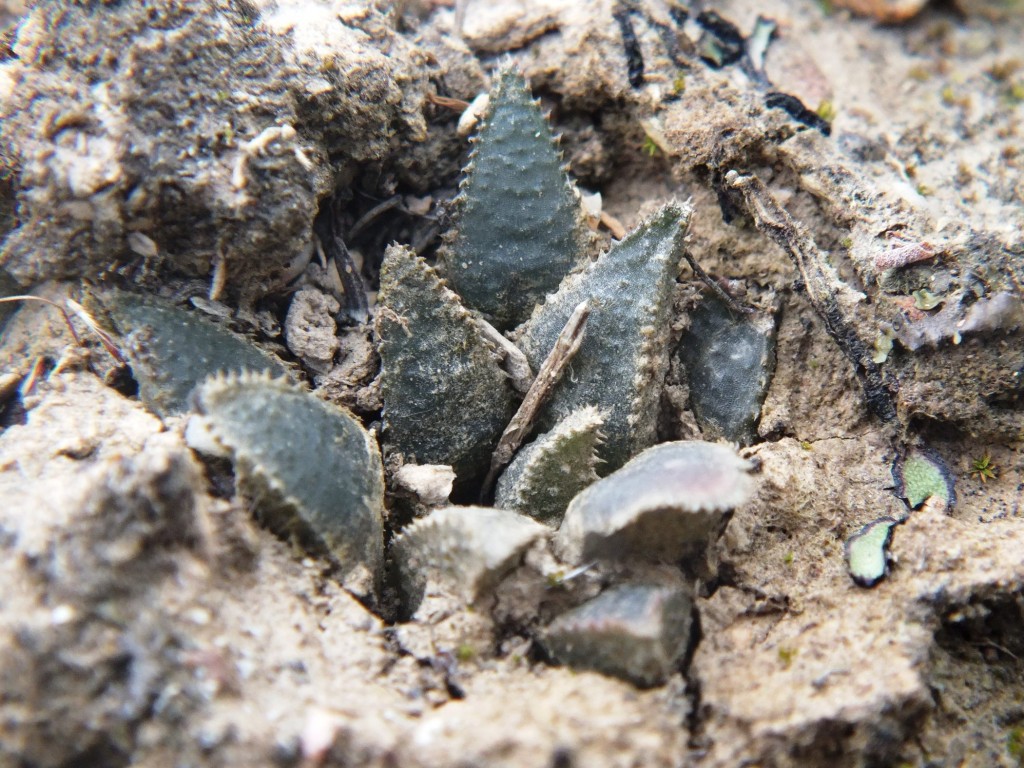
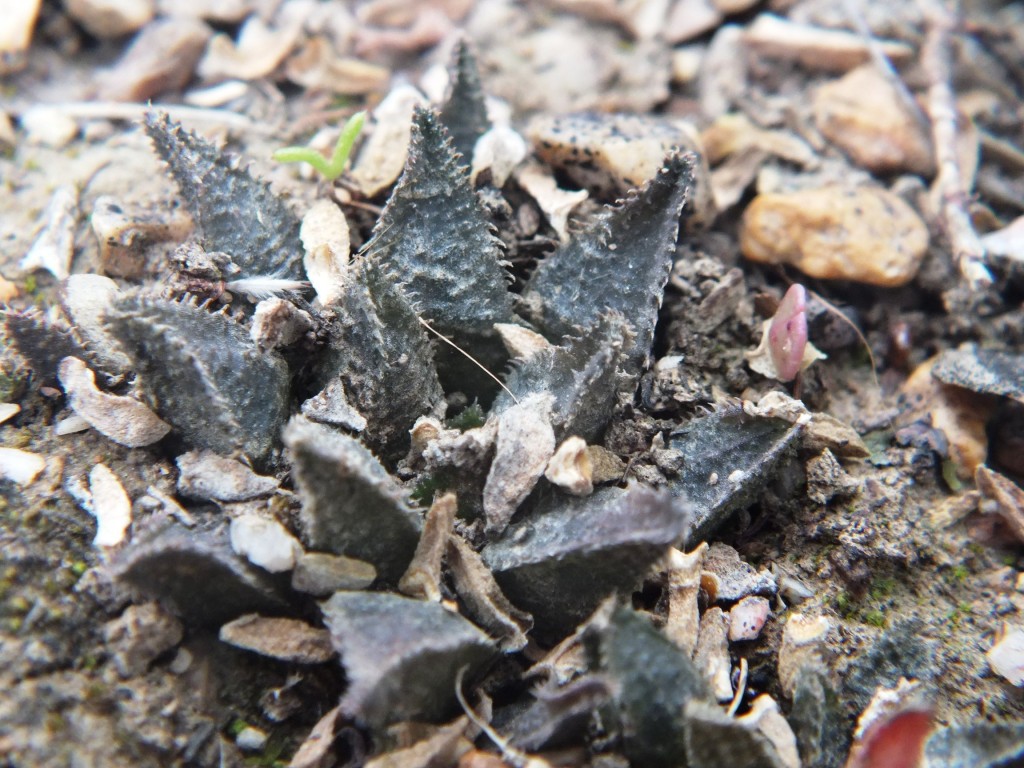
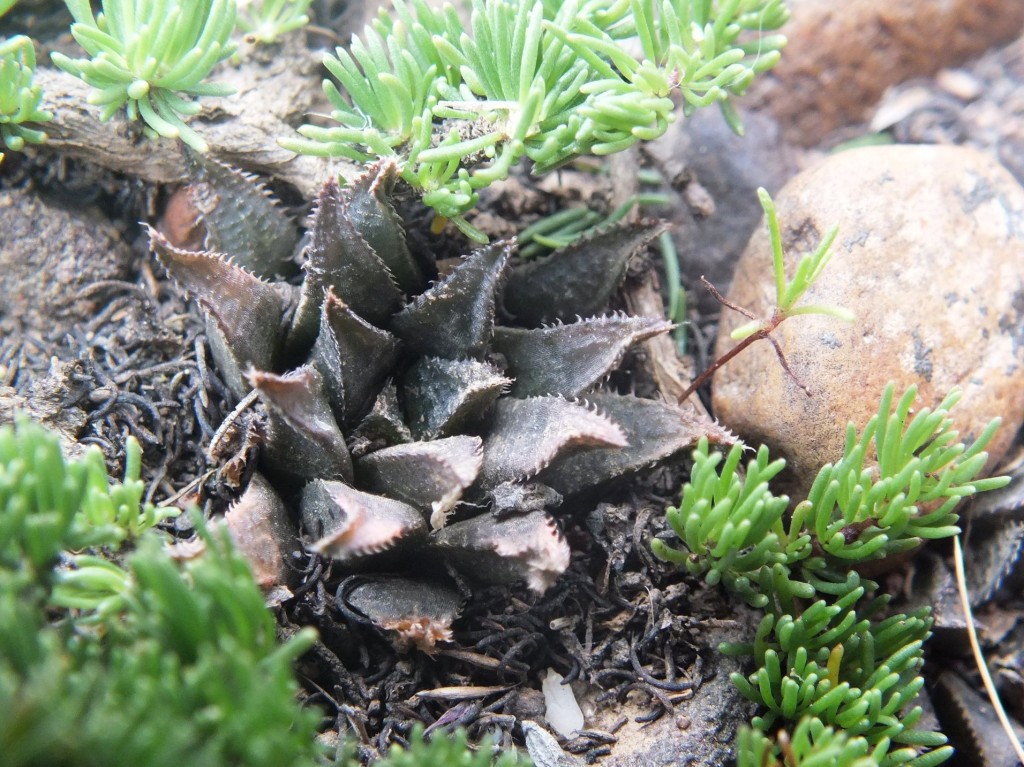

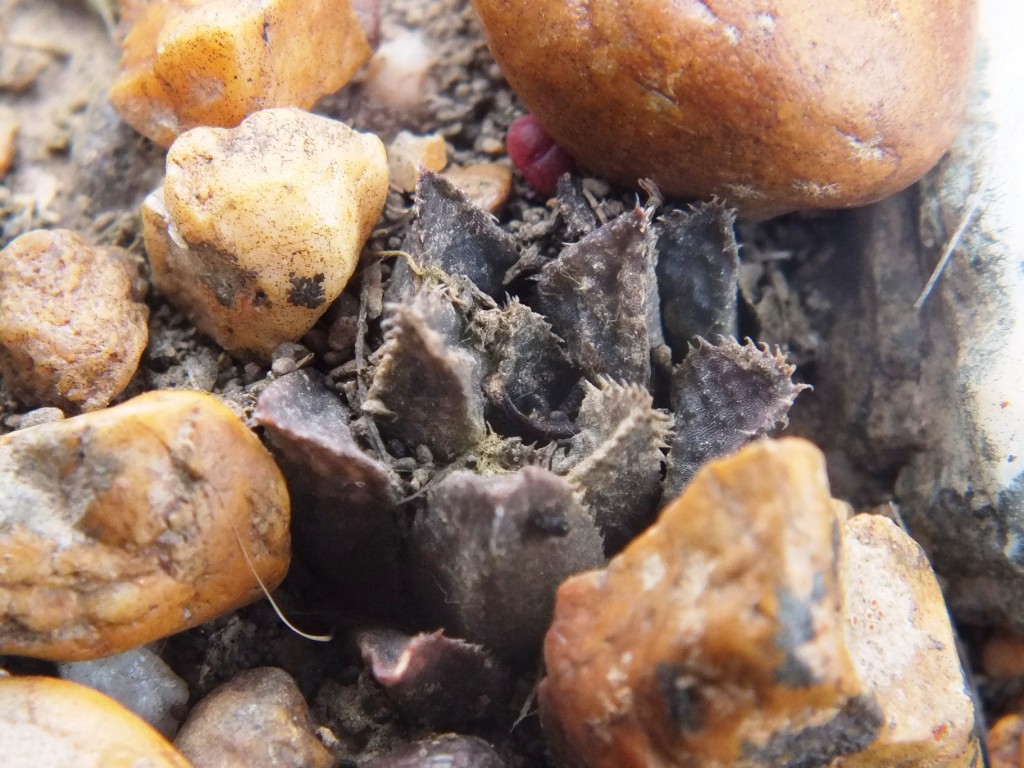
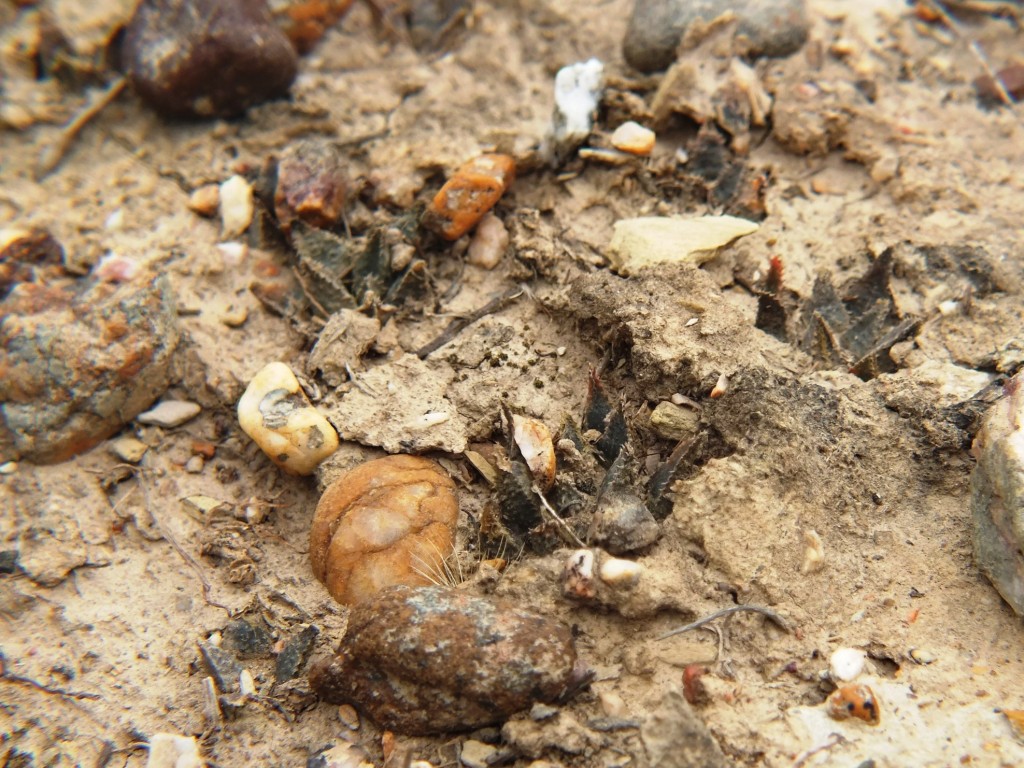
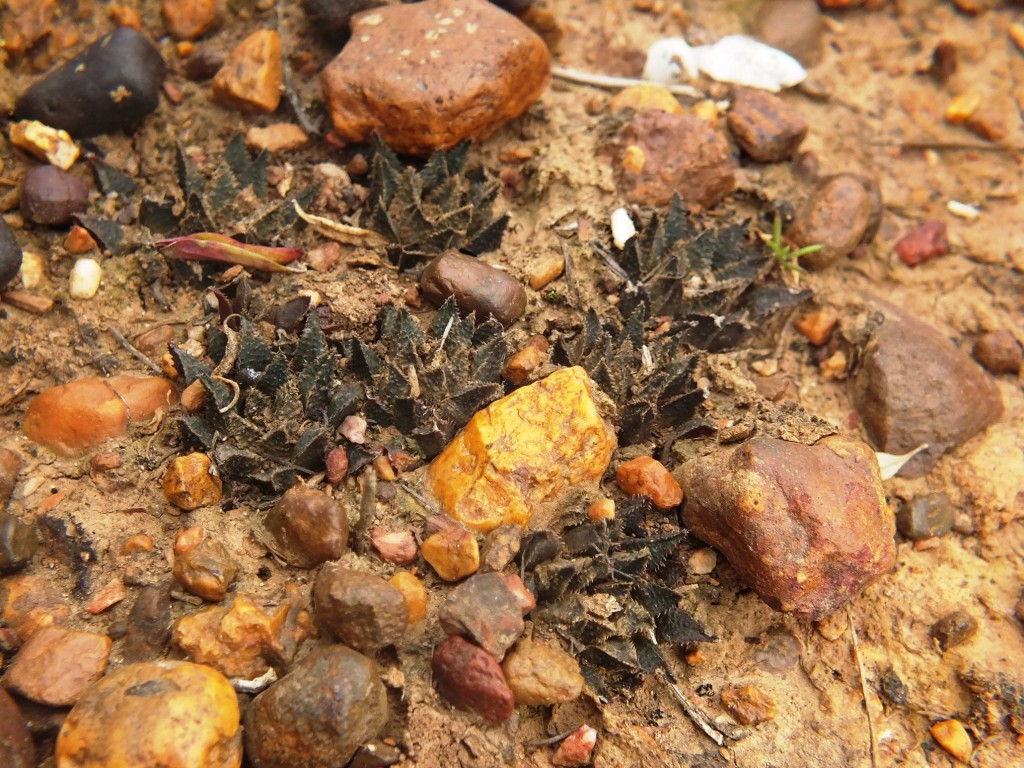
17. MBB7931 H. mirabilis S S Kleinberg (figs 17)
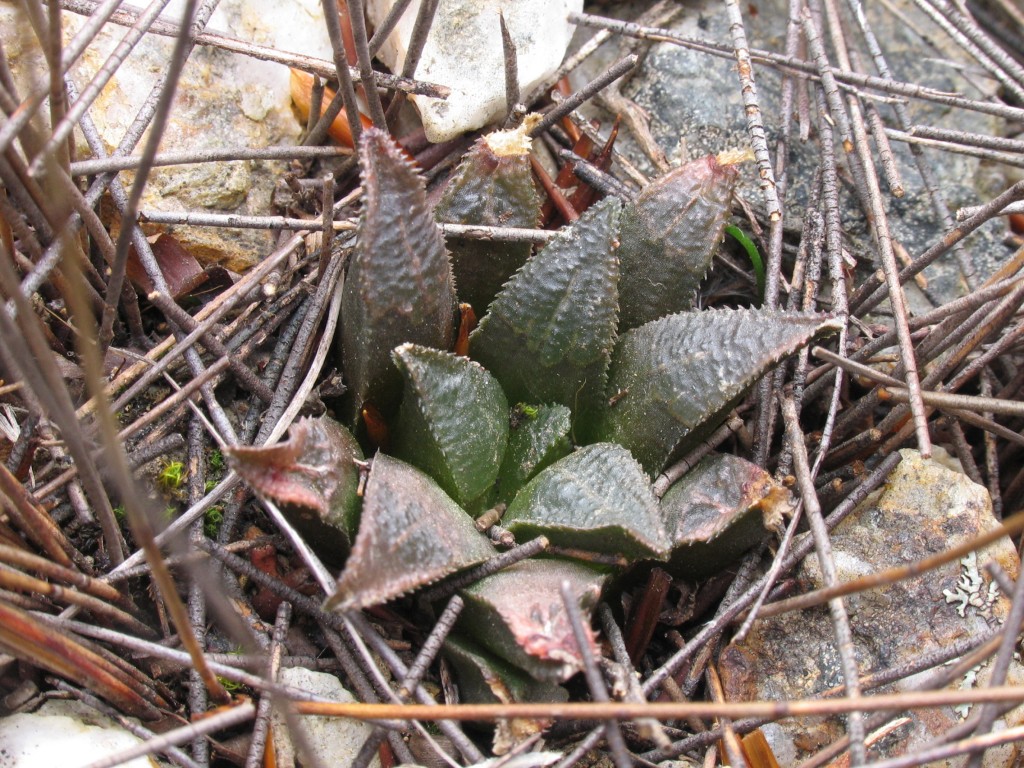
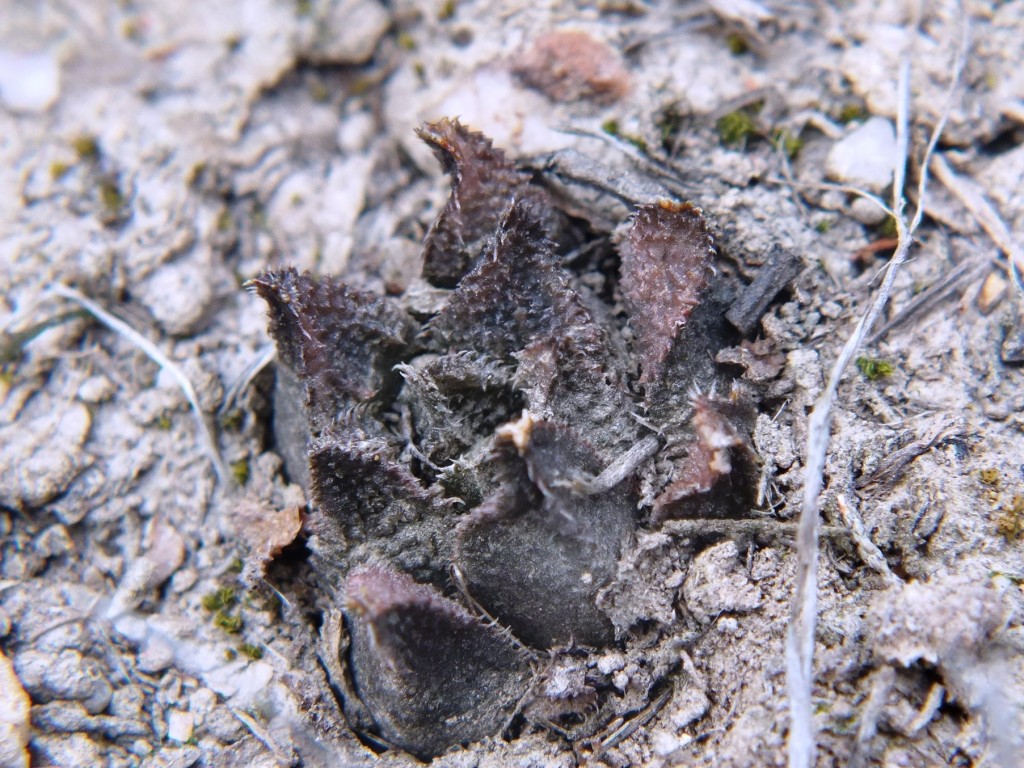
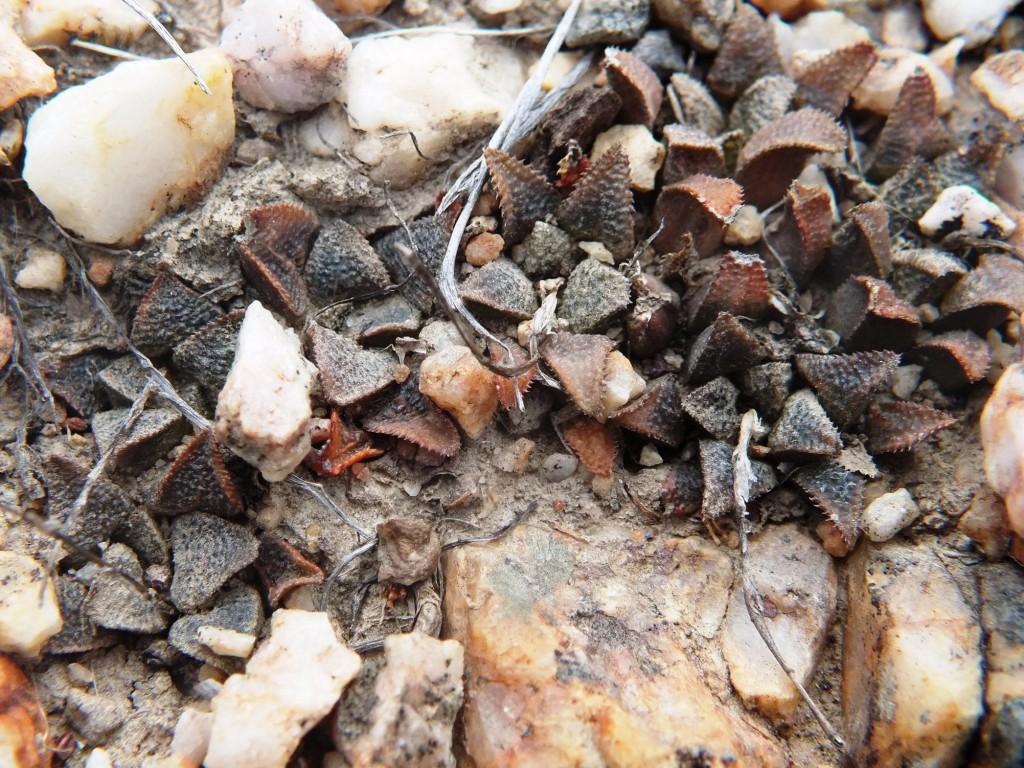
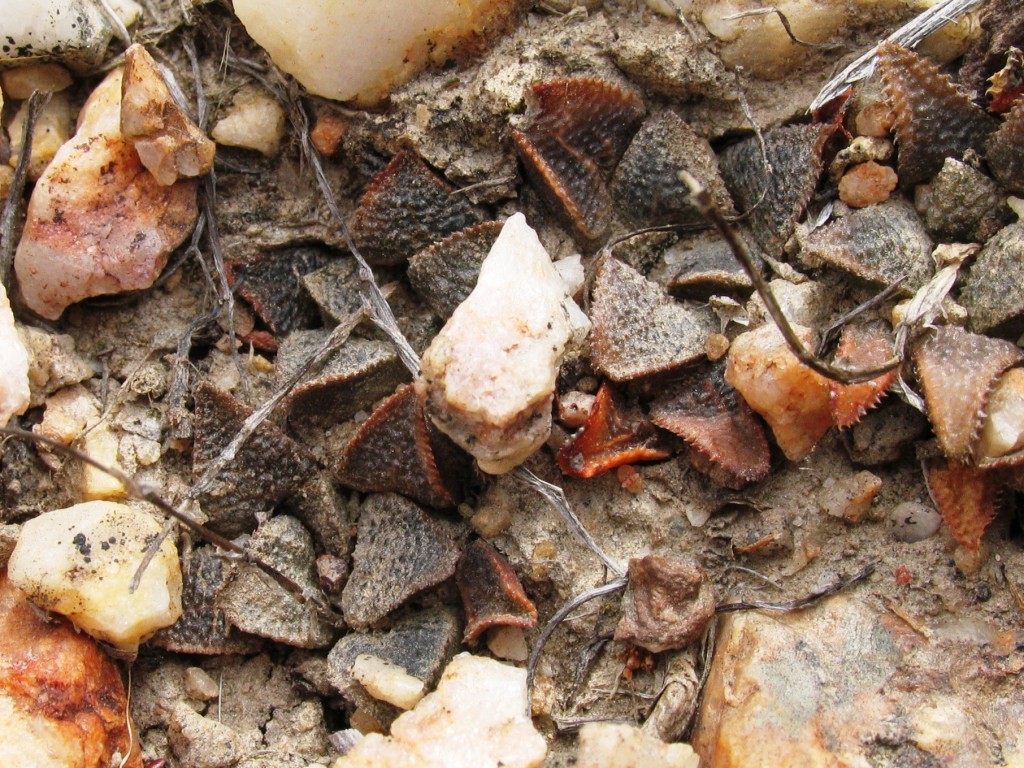
18. MBB7531 H. mirabilis S Kleinberg (figs 18)
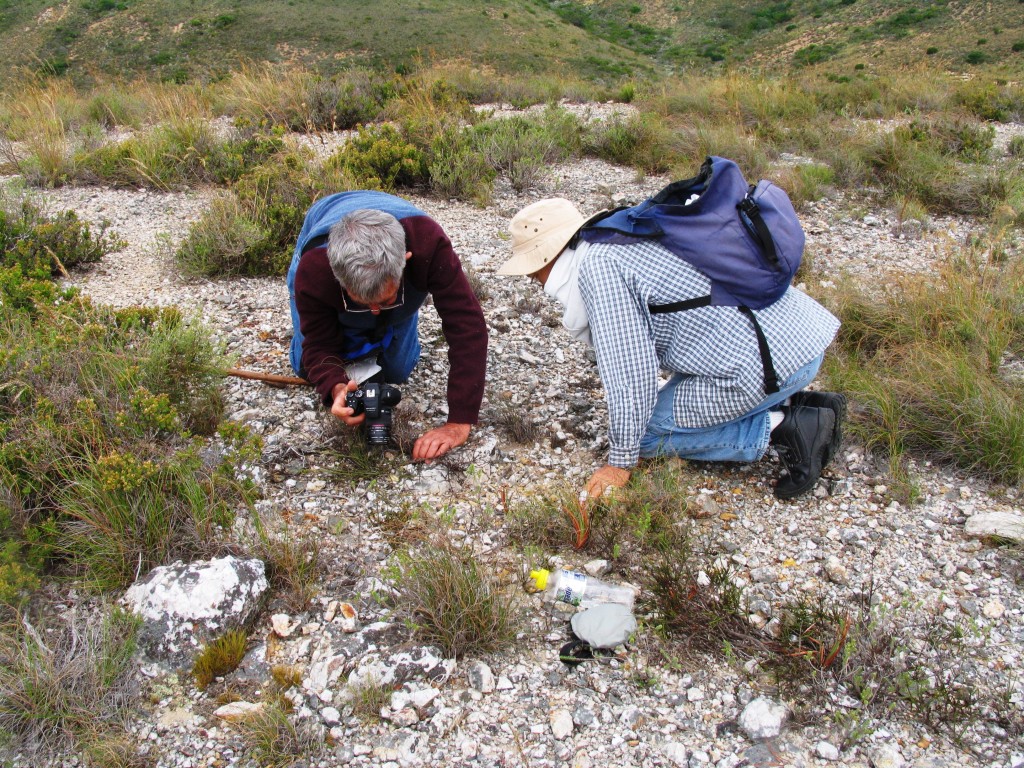
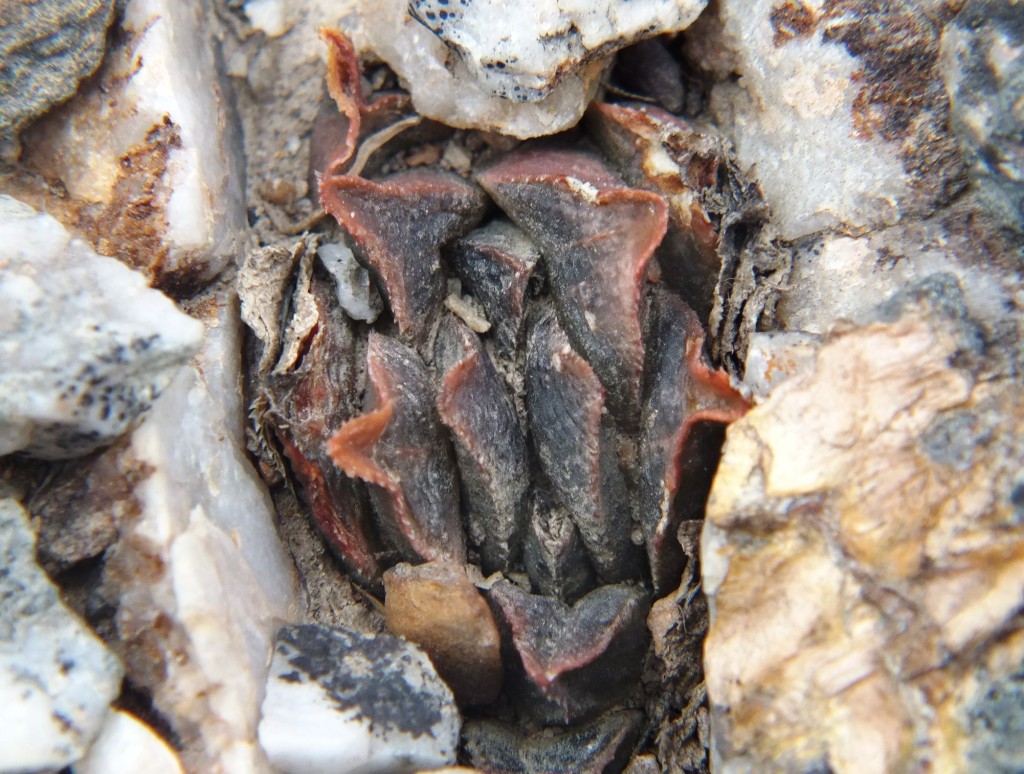
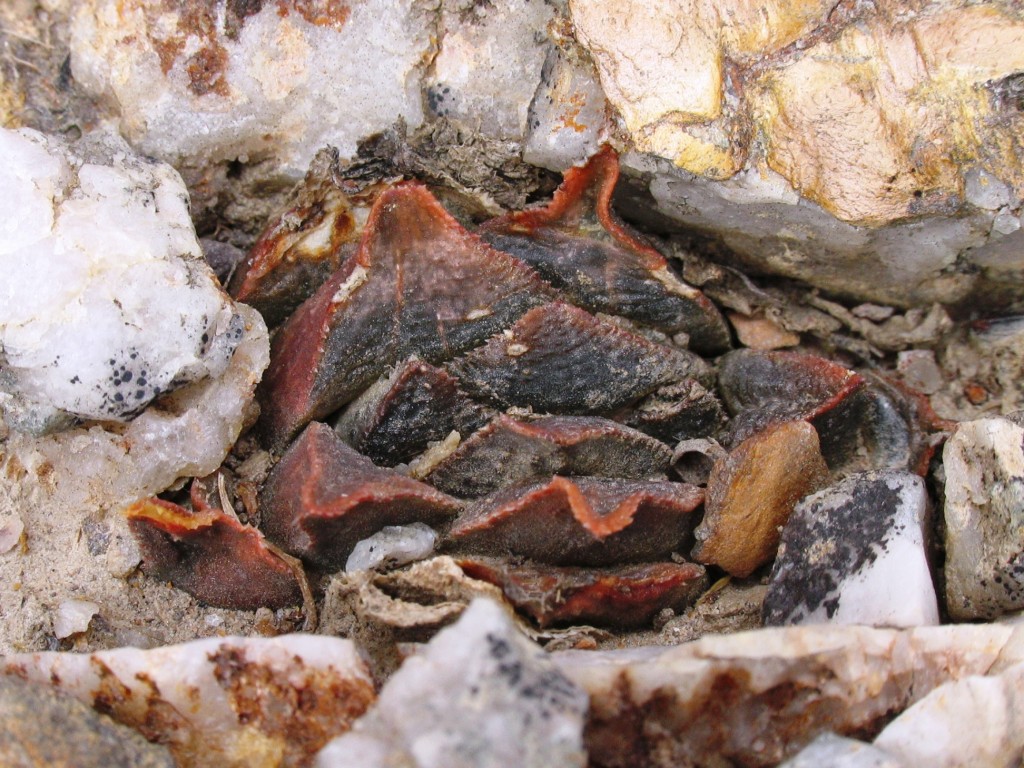
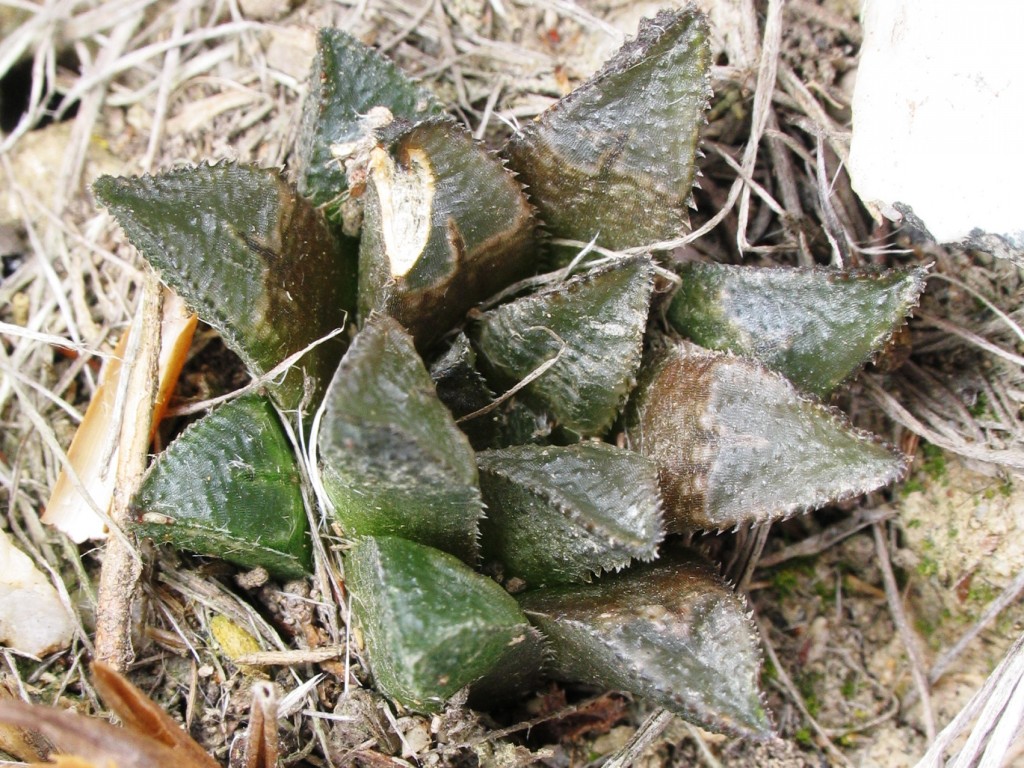
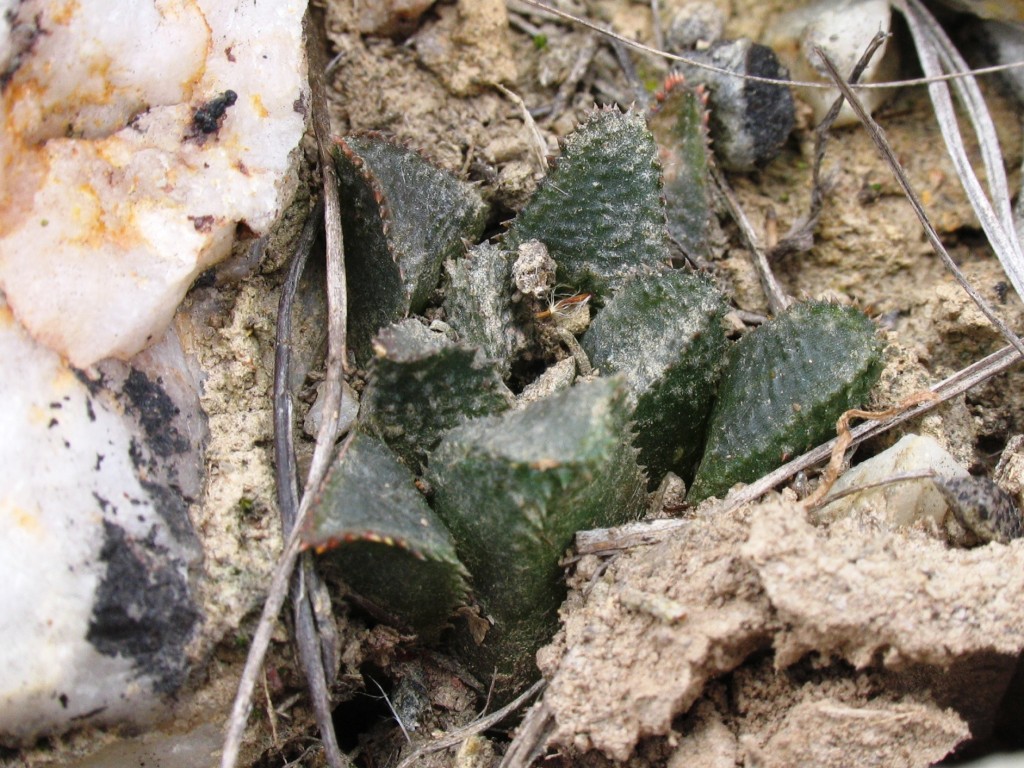

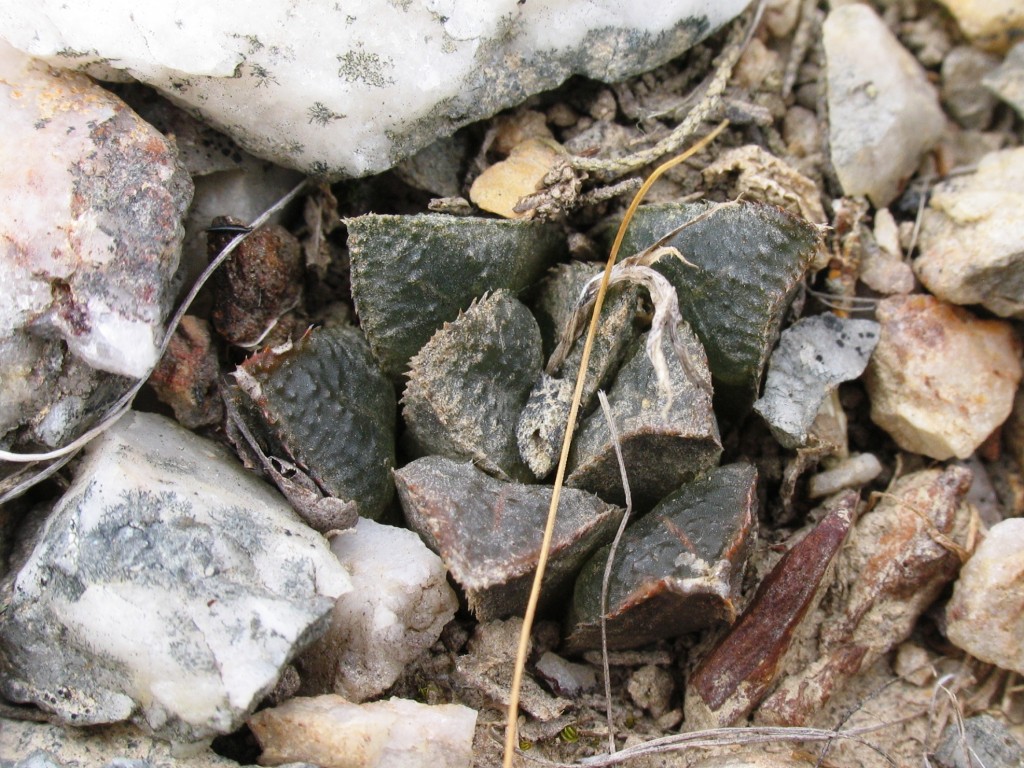
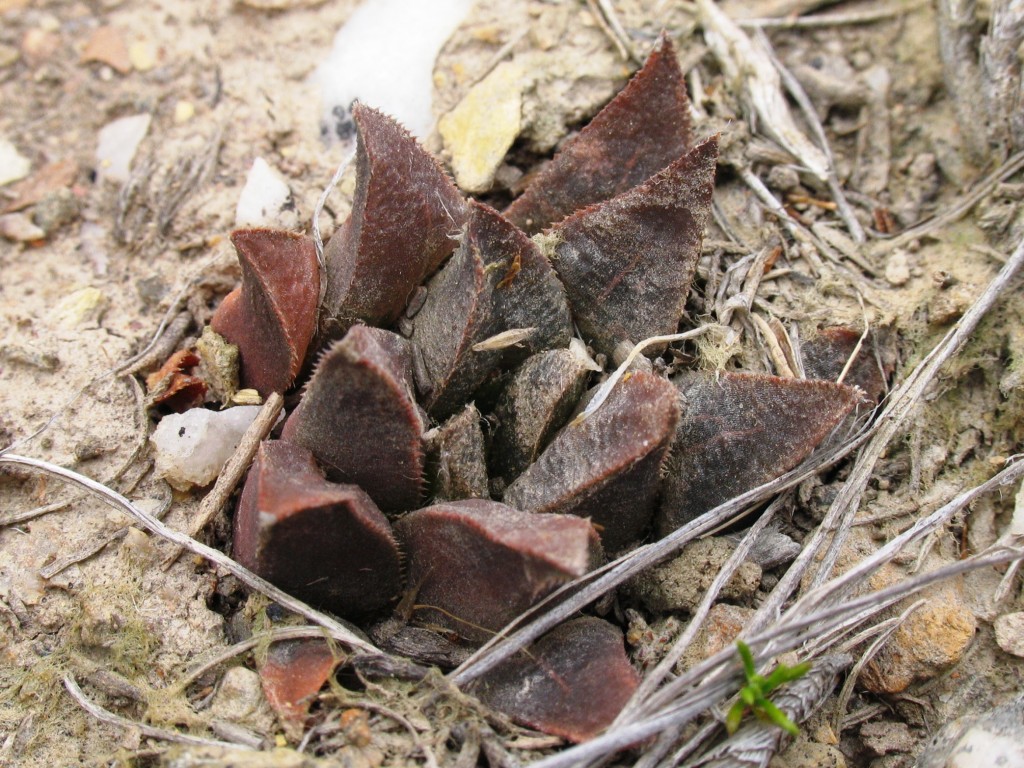
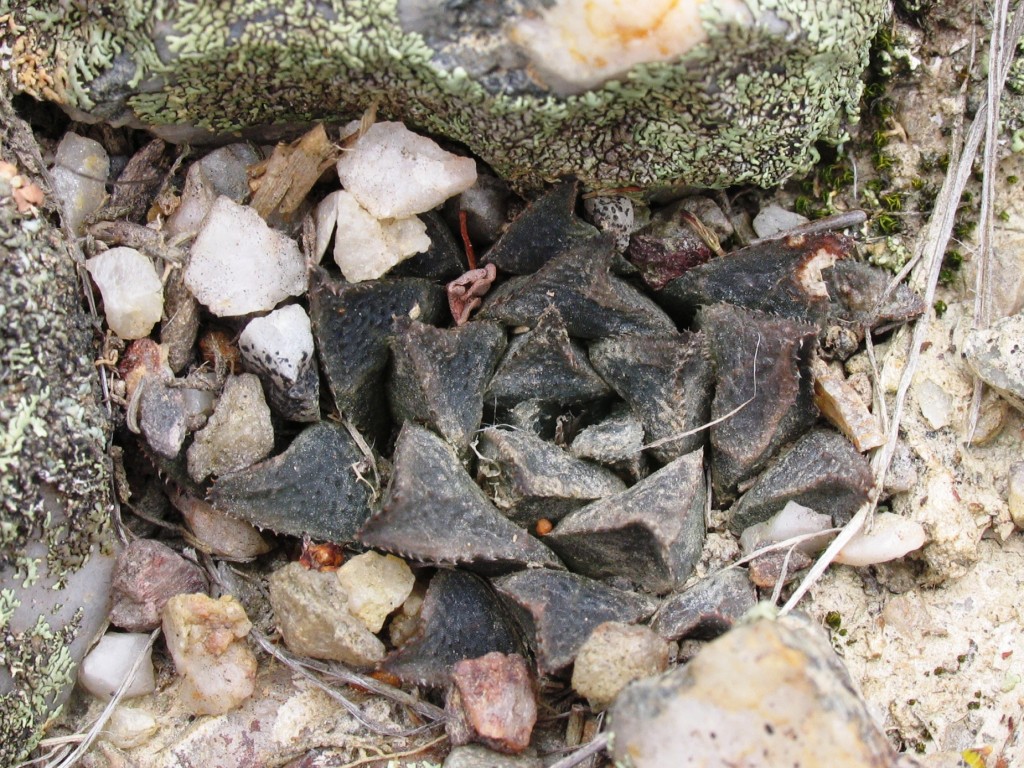

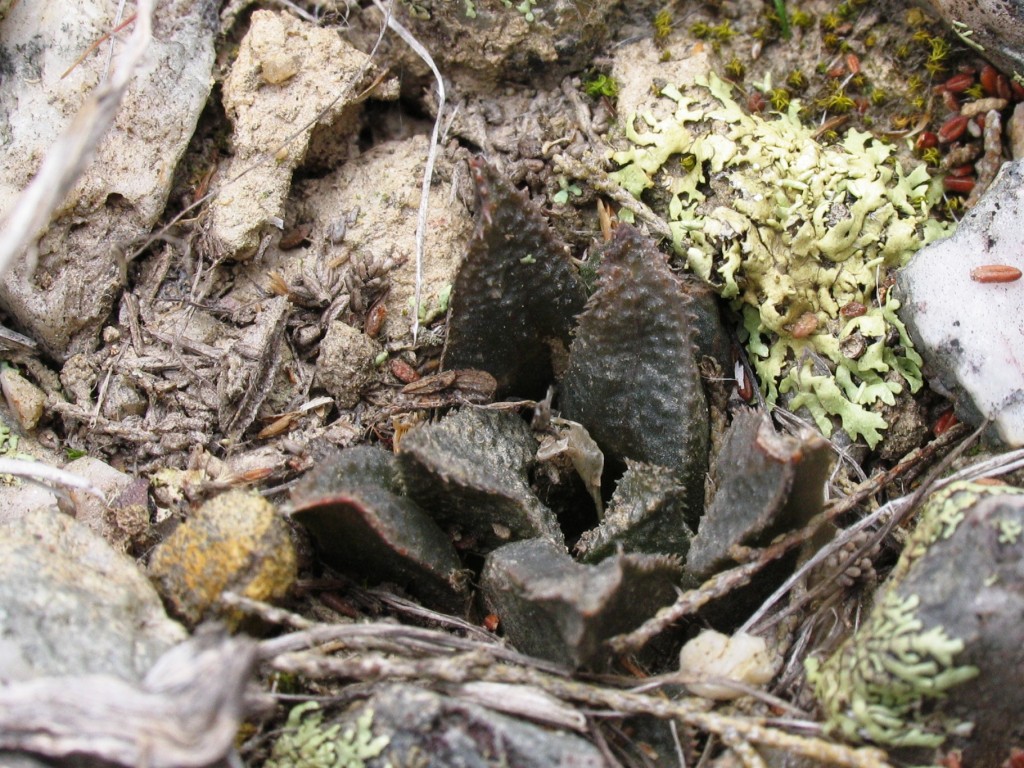
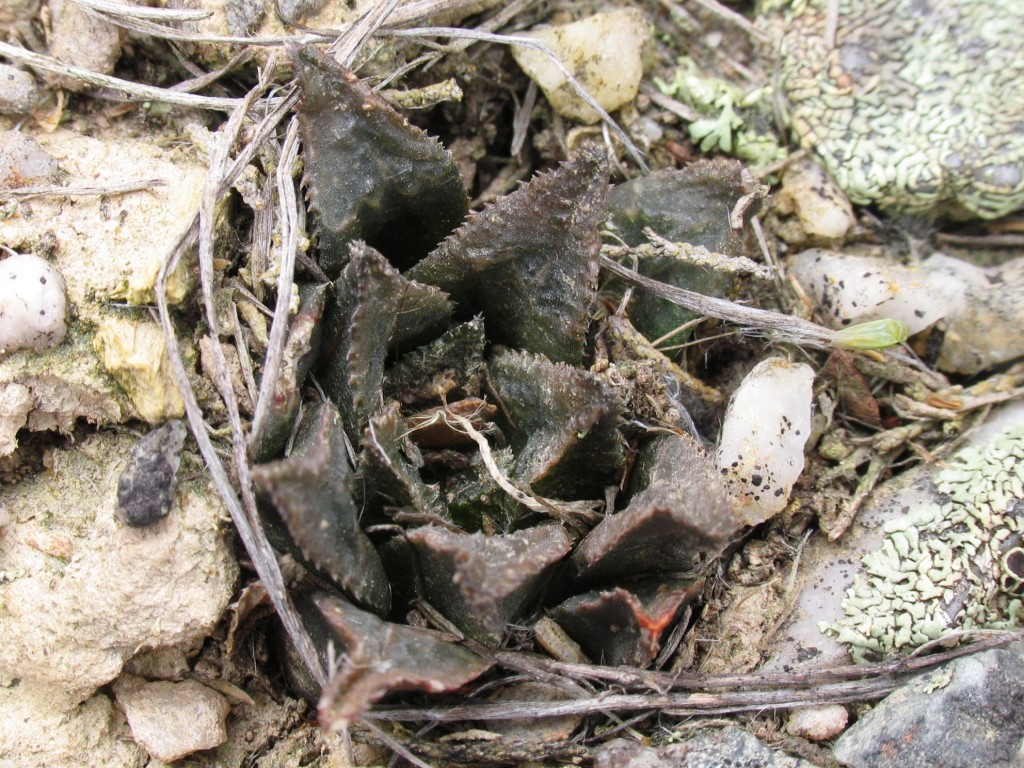


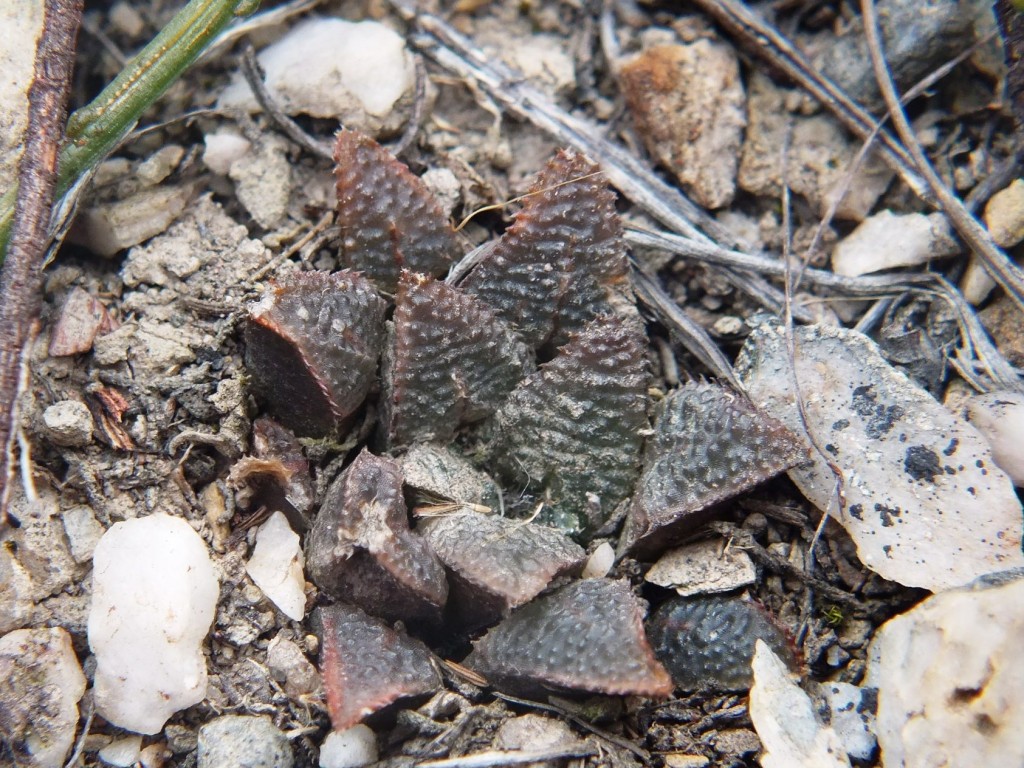
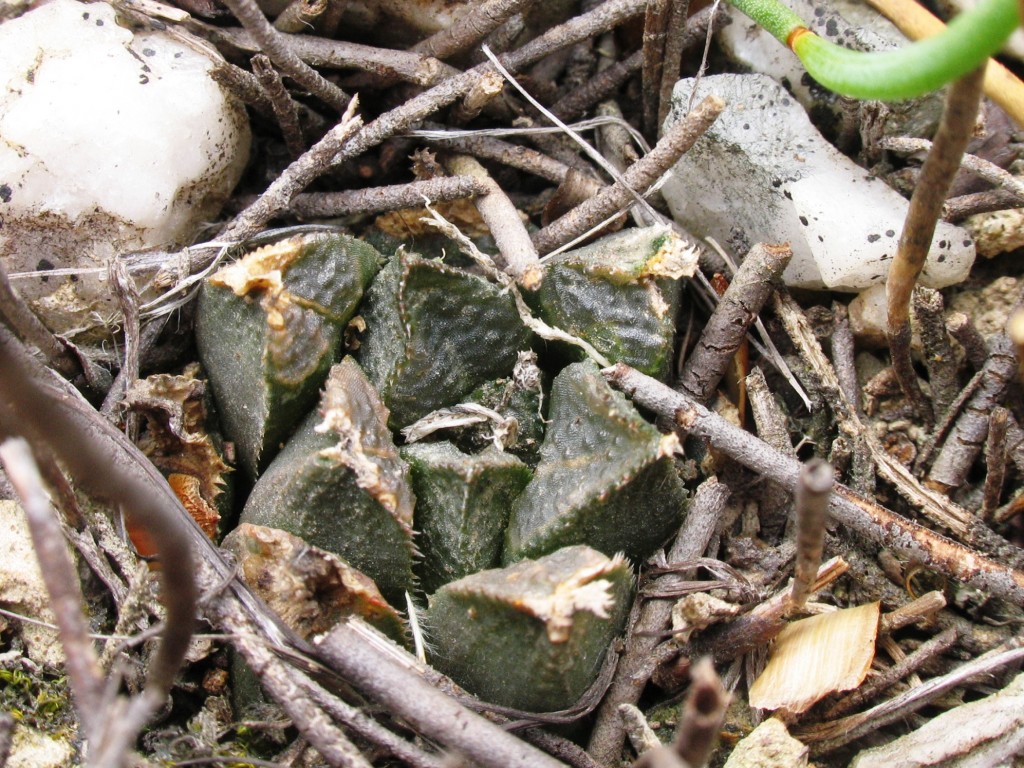


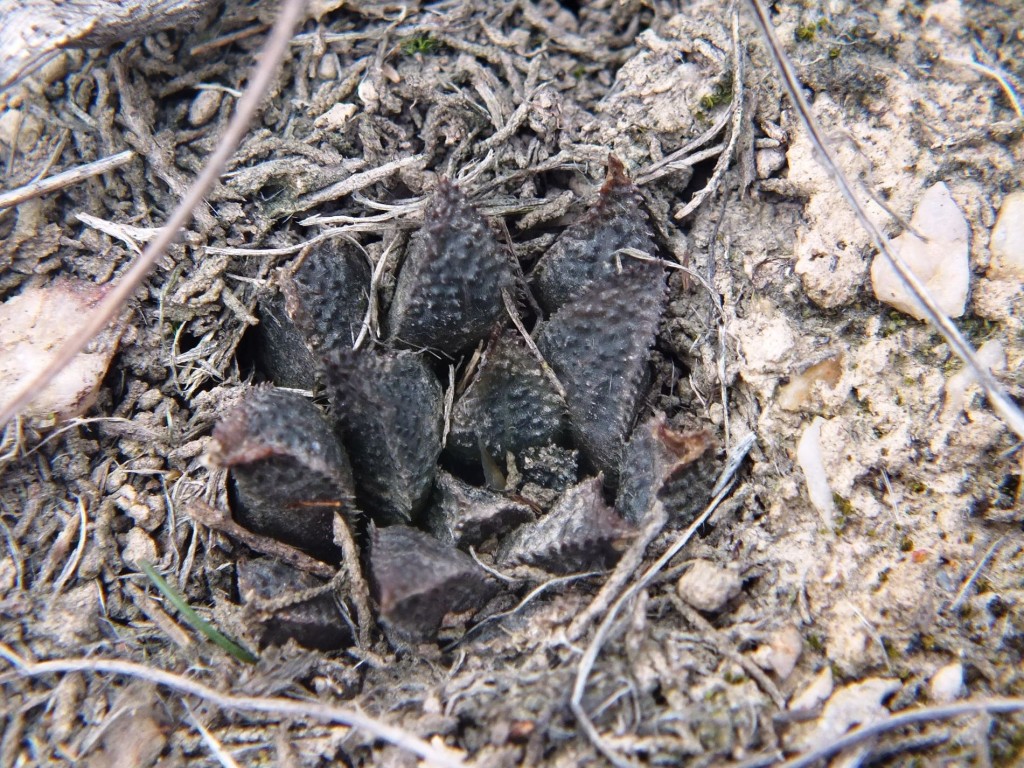

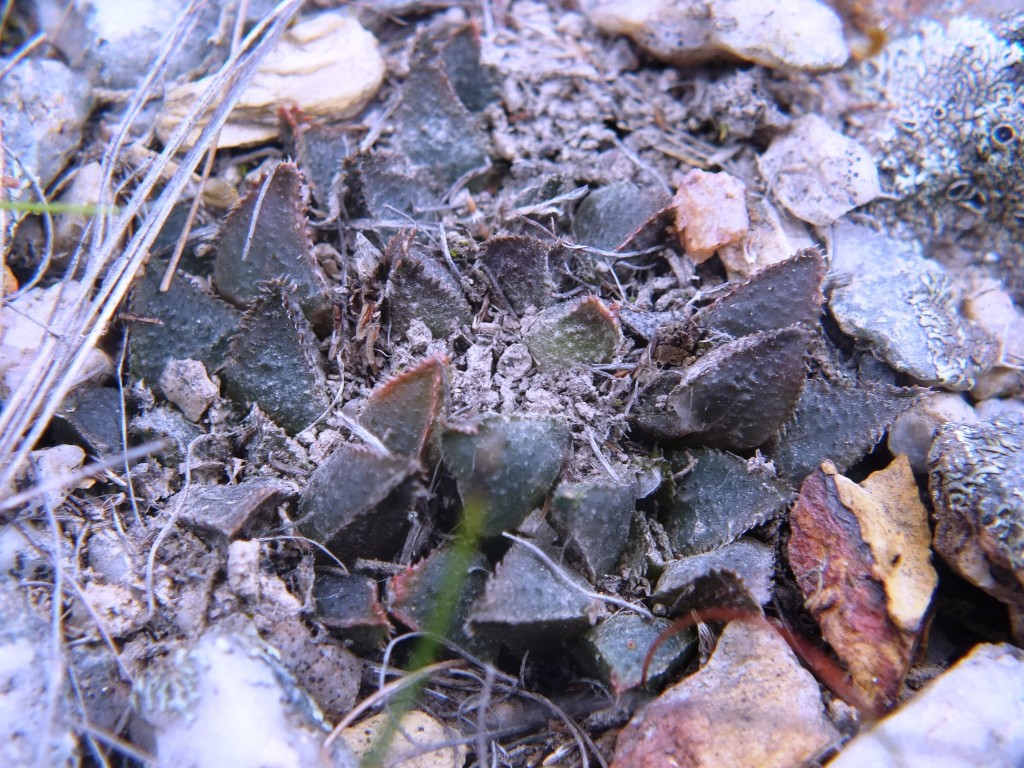
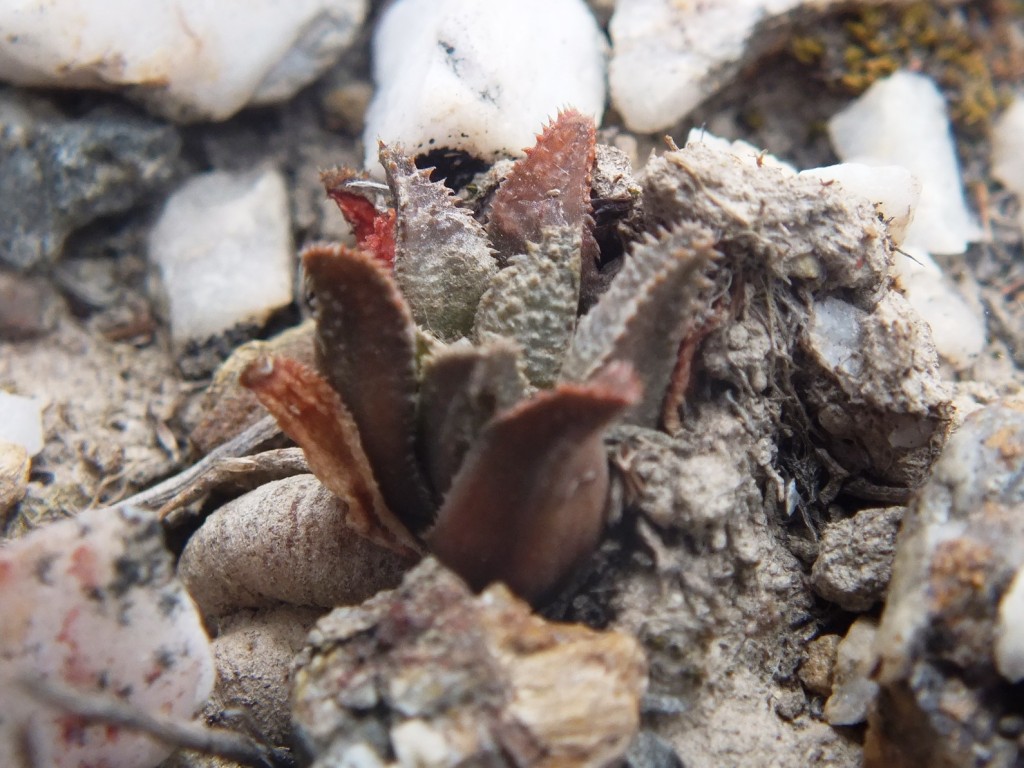
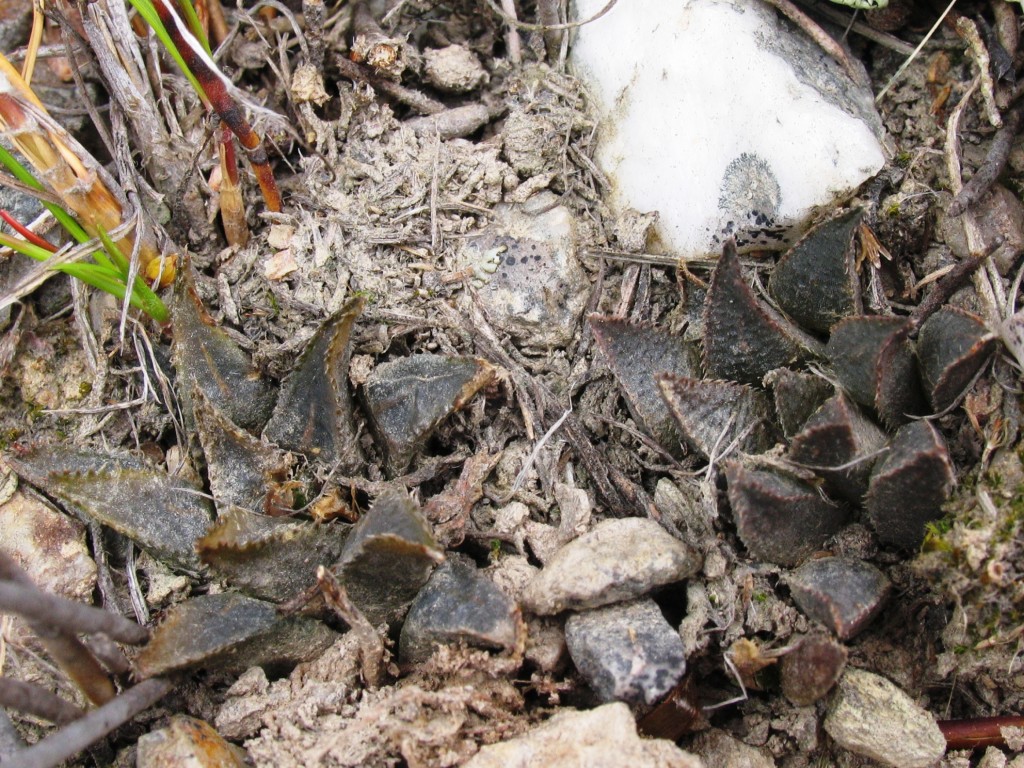
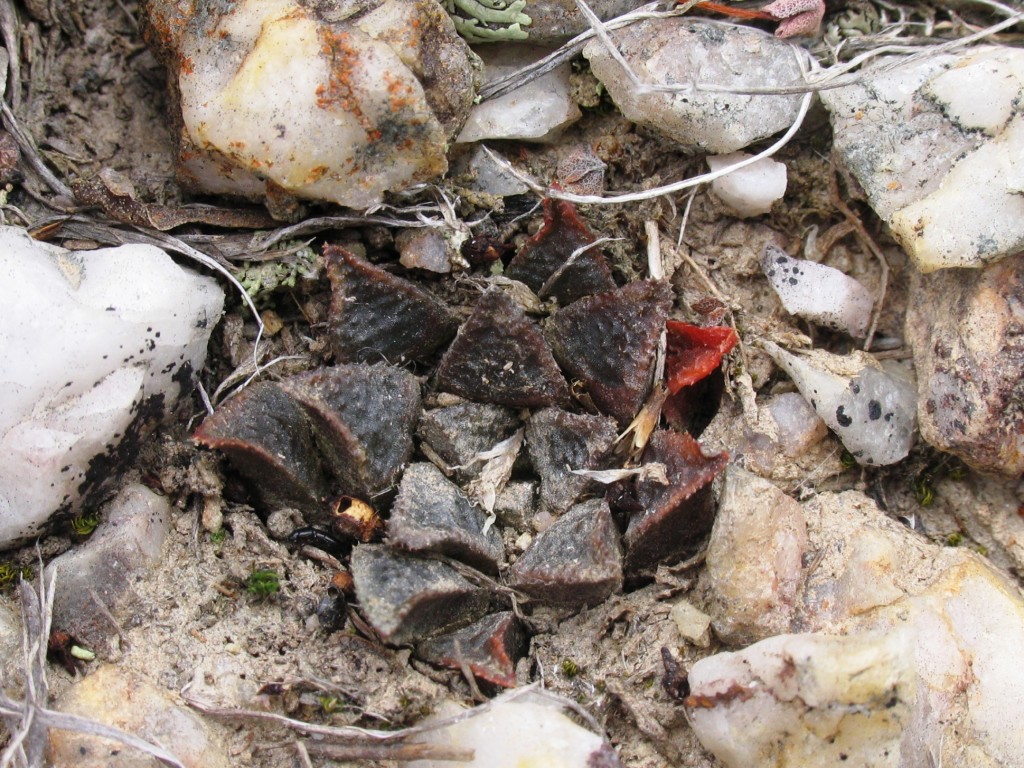
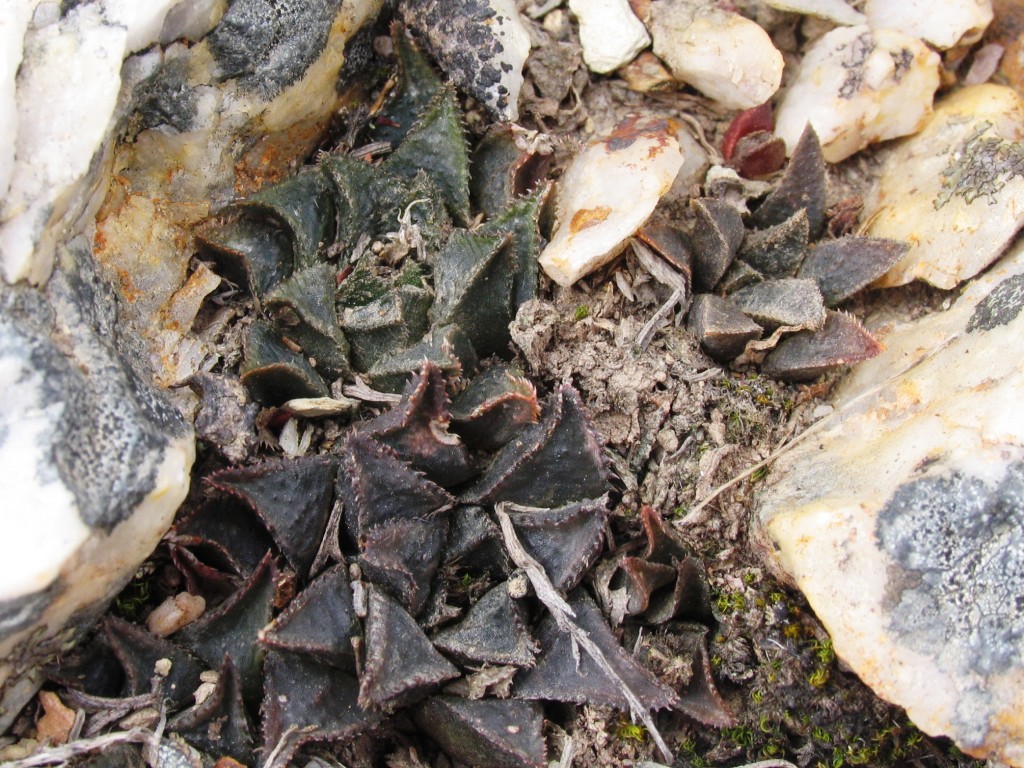

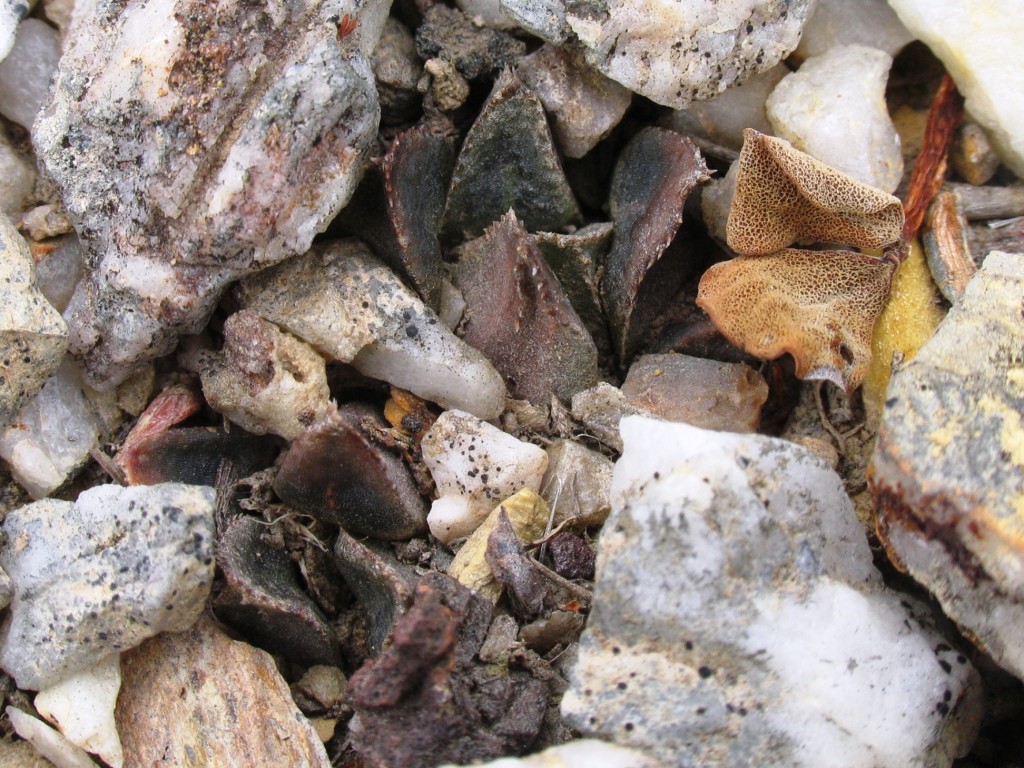
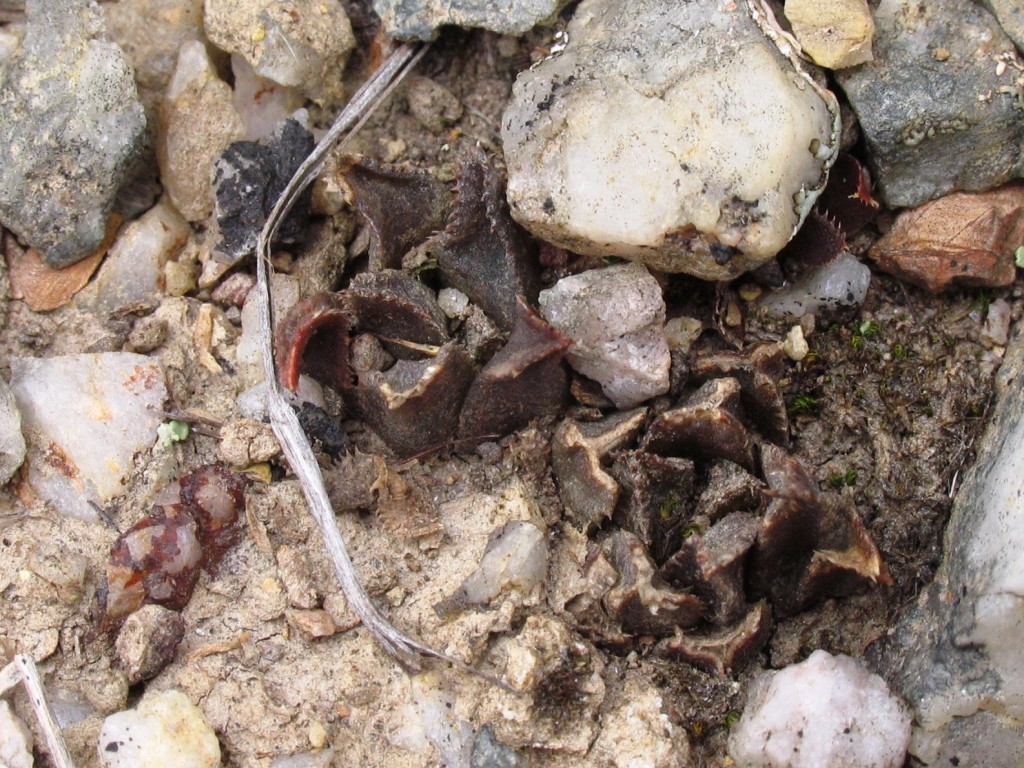
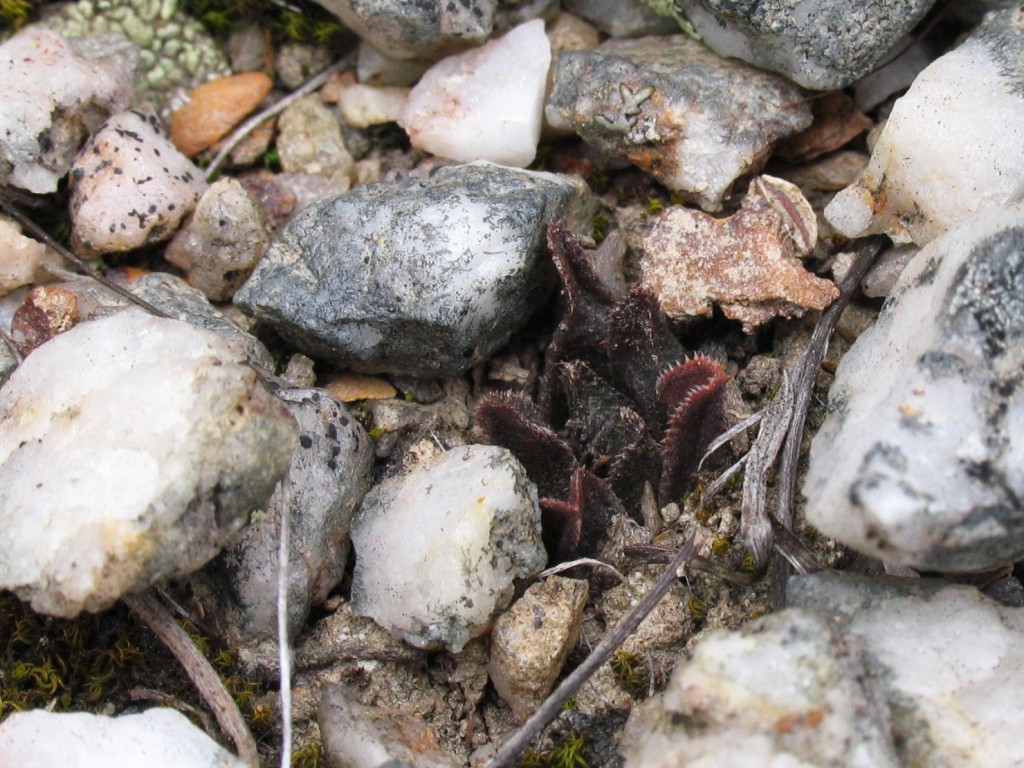
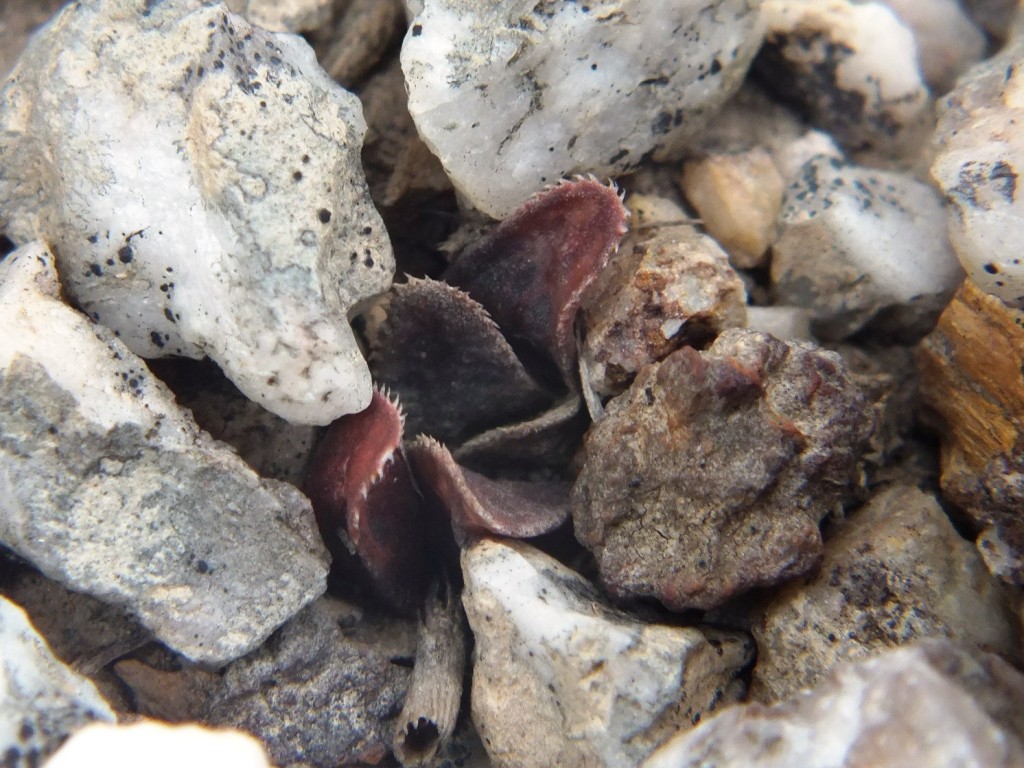
19. MBB7935 H. mirabilis Langvlei (figs 19)



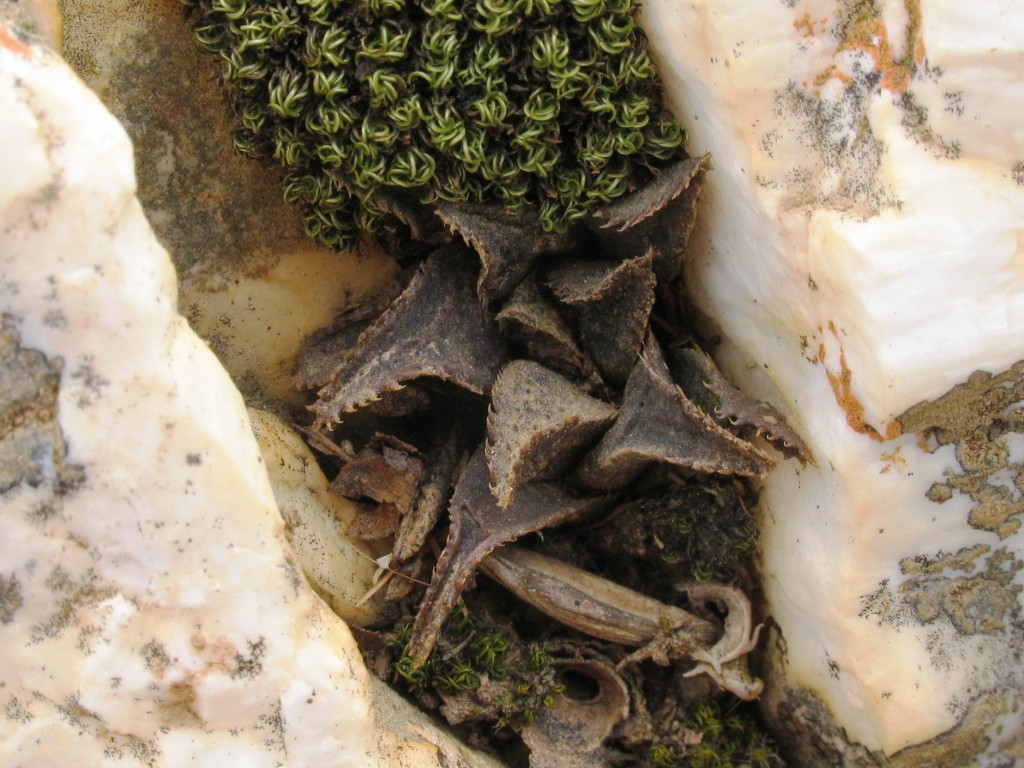
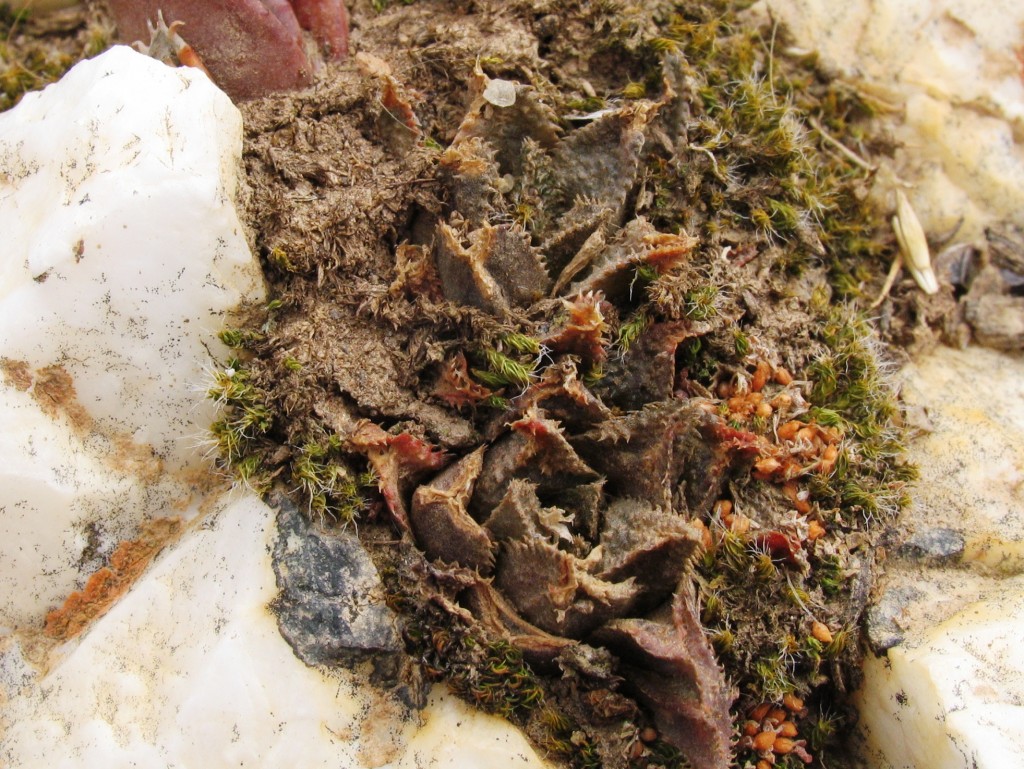

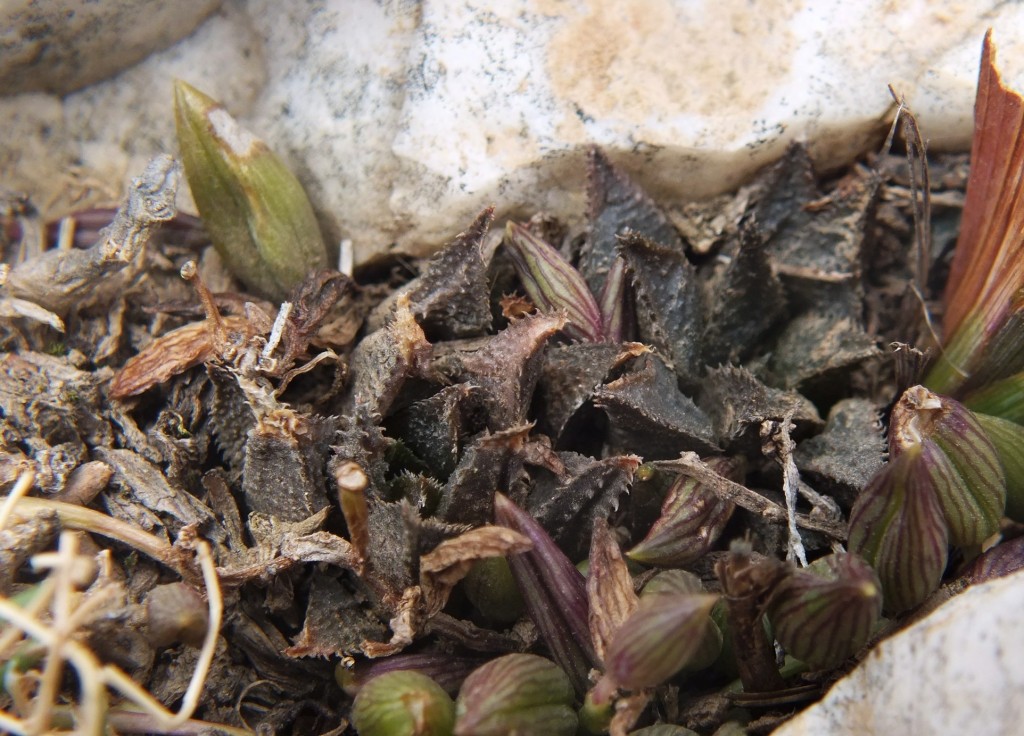
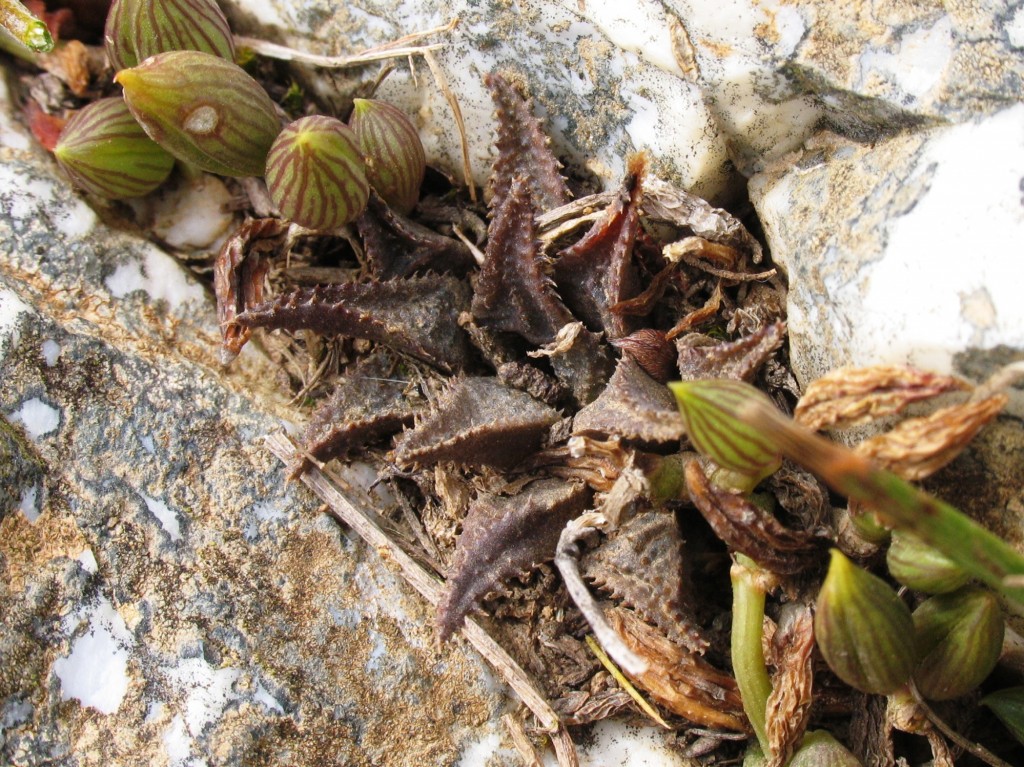
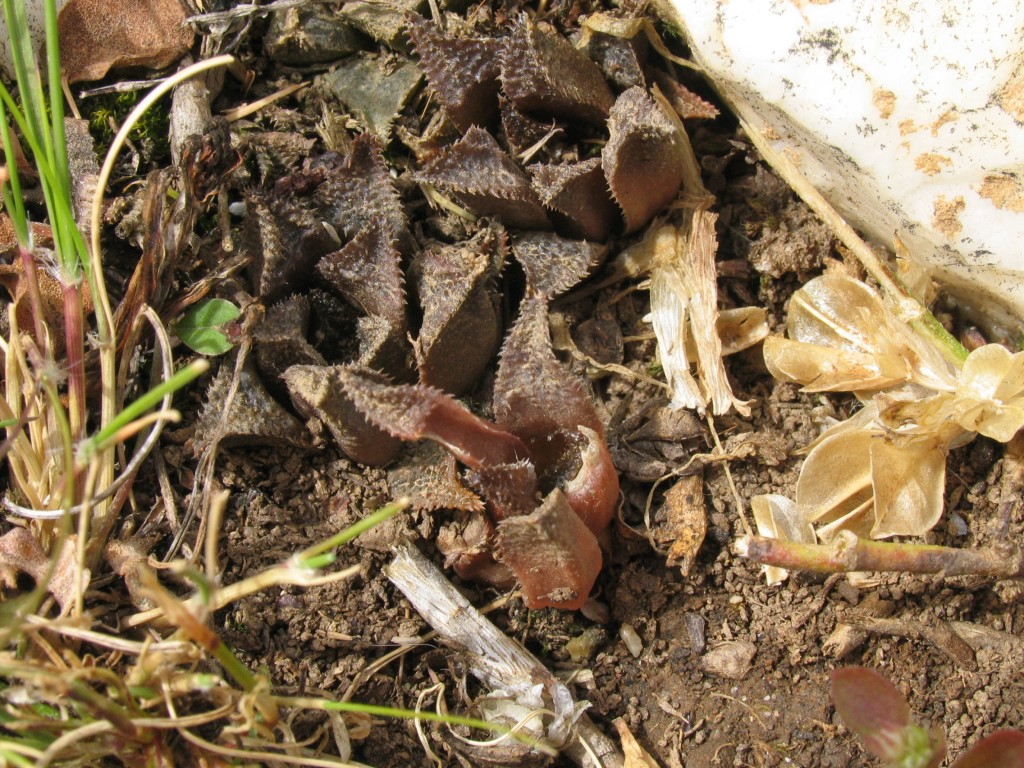
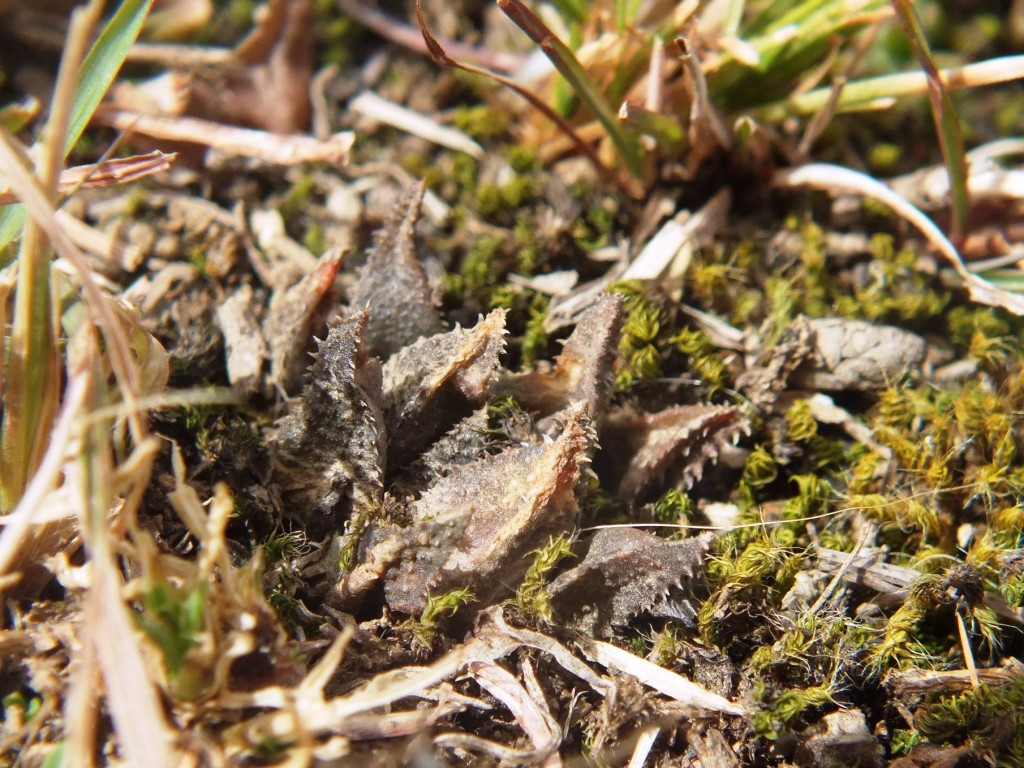


20. MBB7938 H. mirabilis SE Stoffelsriver (figs 20)
This locality was recorded when Gerhard Marx and Jakub Jelimicky misunderstood my directions. The plants are incredibly cryptic and very hard to see in a not very well defined habitat. One can only follow my opinion on the classification in the context of 8 other populations in the sandstones and Fynbos, and then relate these to populations in shales, tertiary deposit and transitional vegetation.



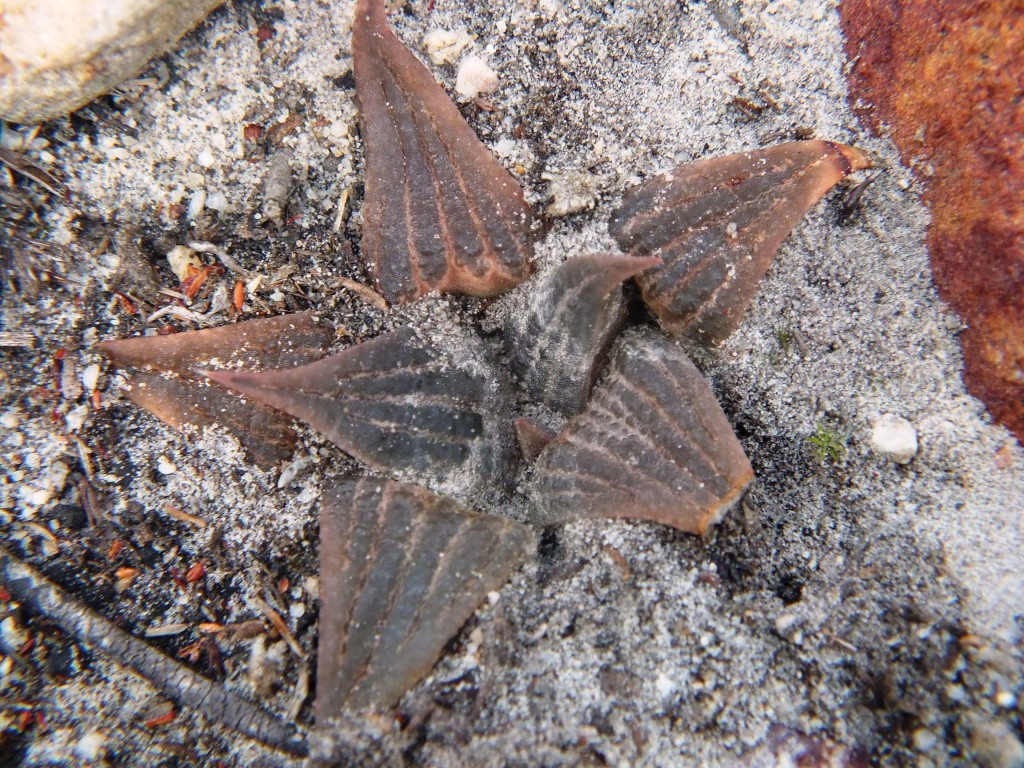

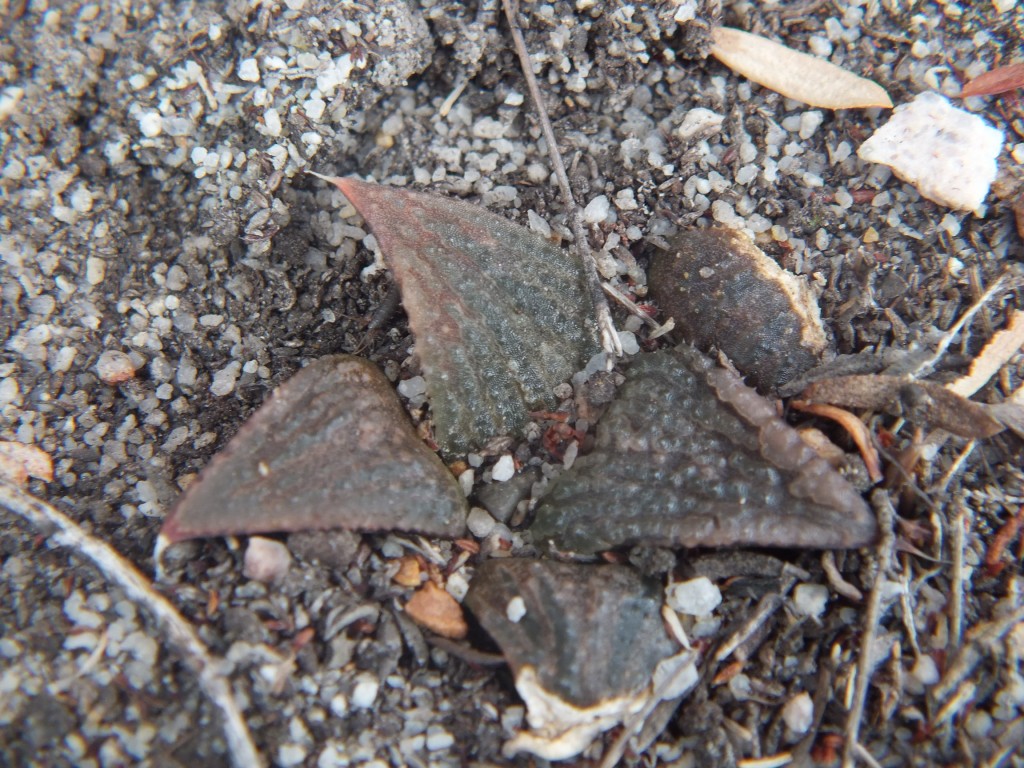
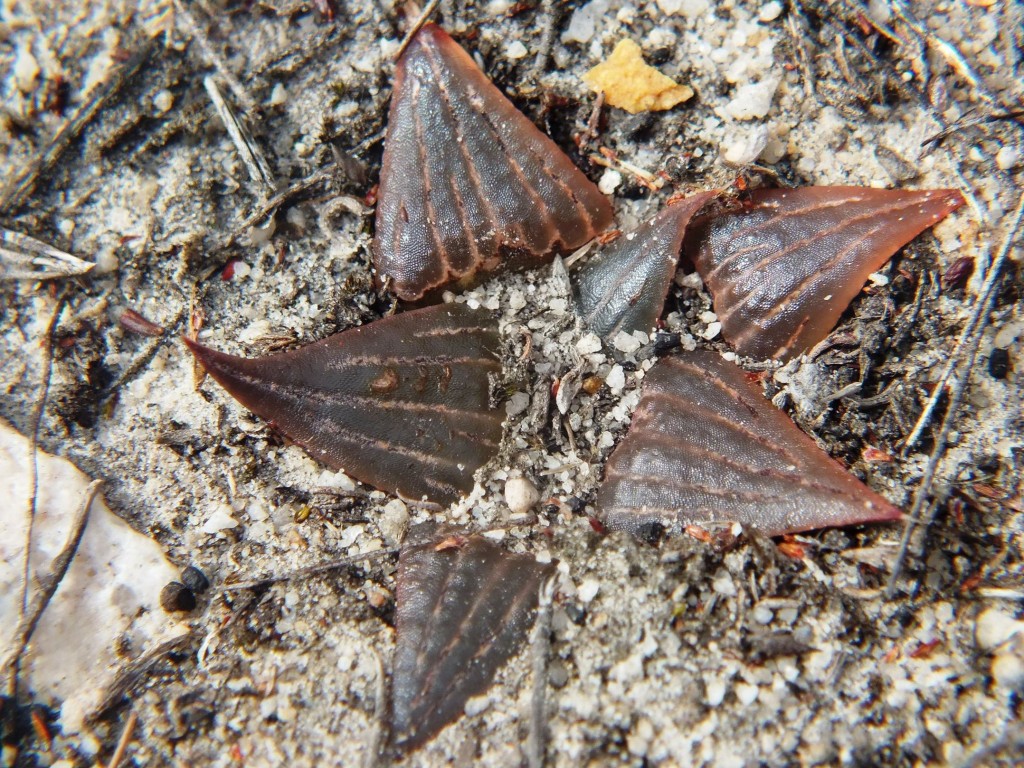
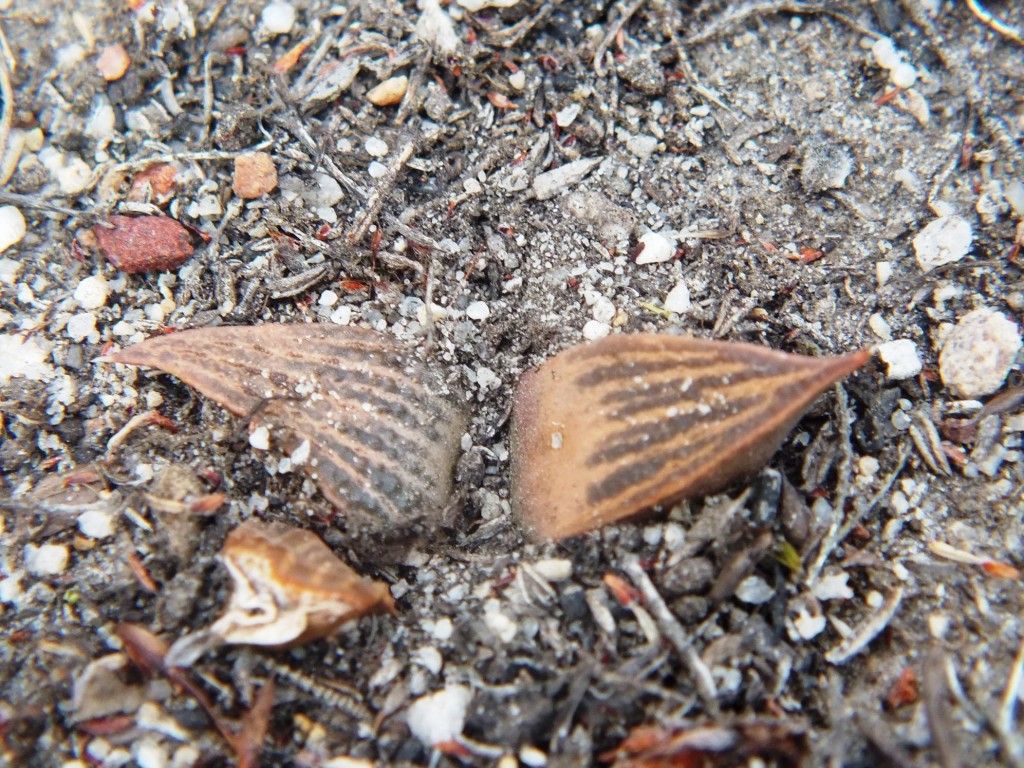
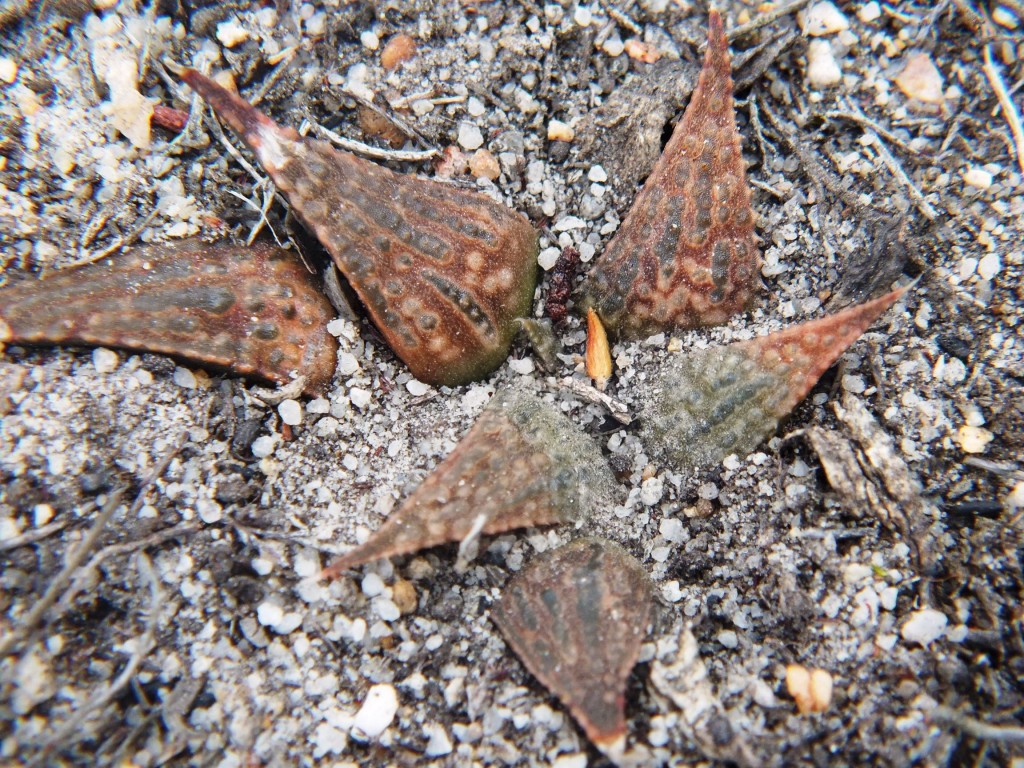
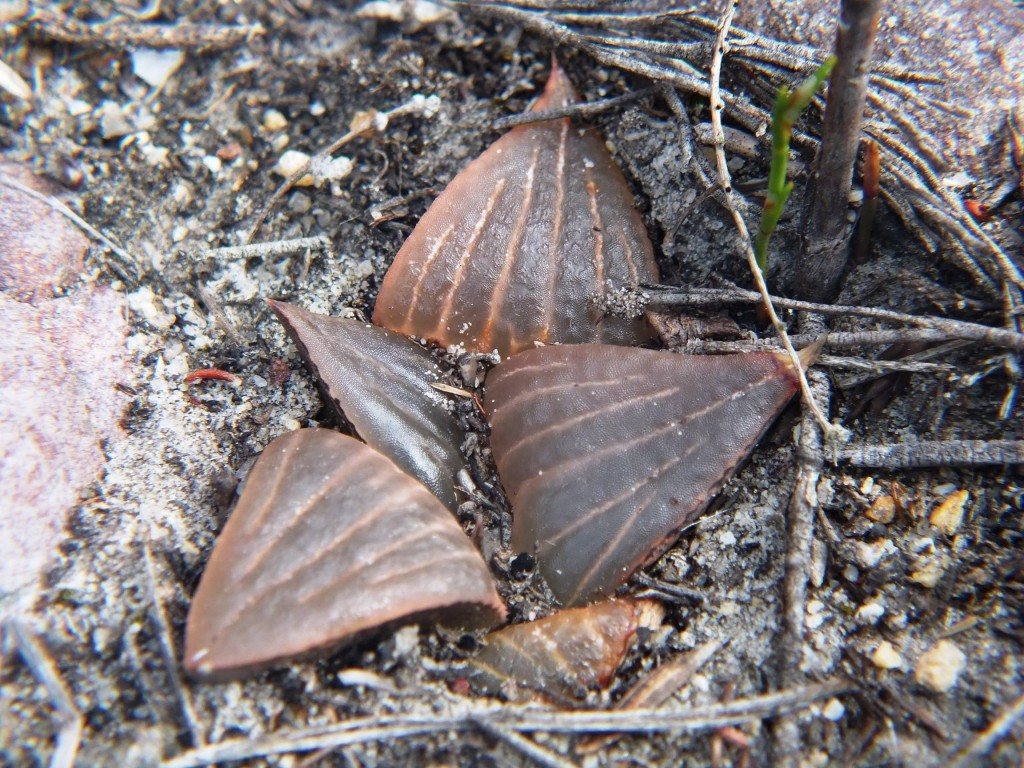
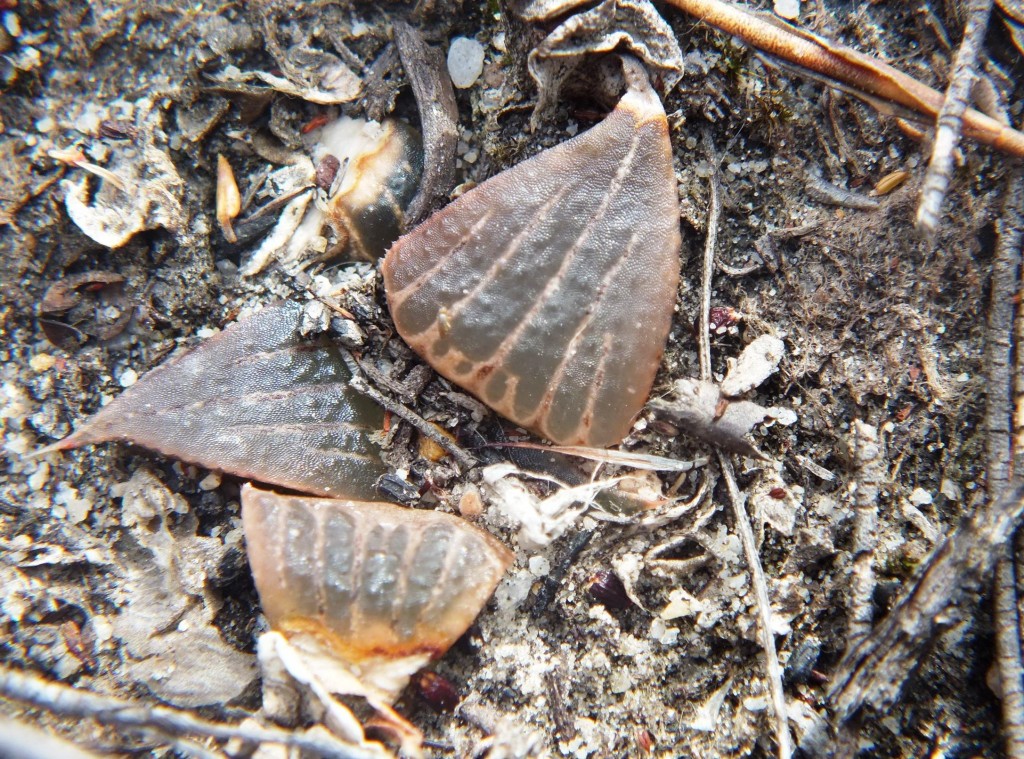

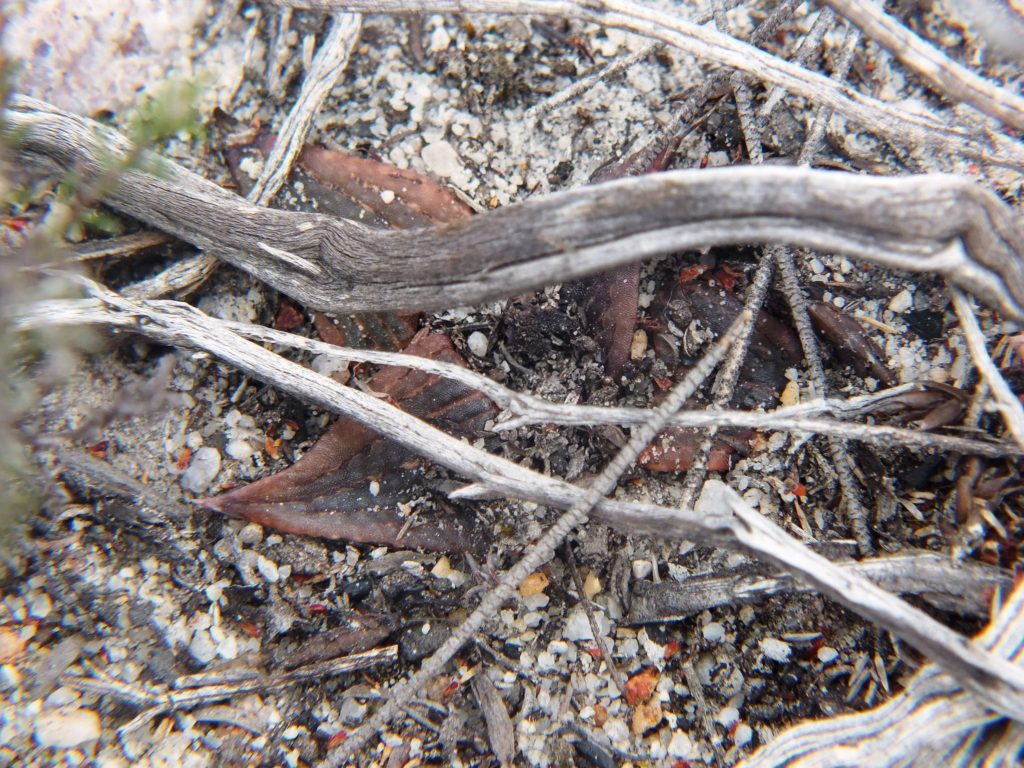
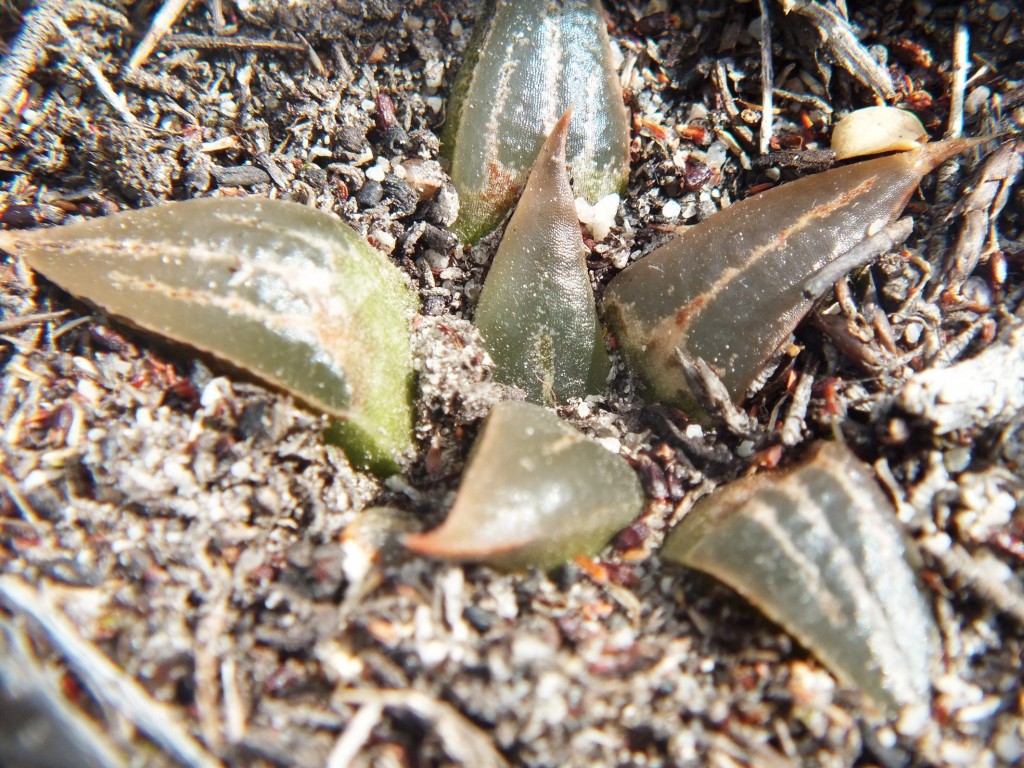
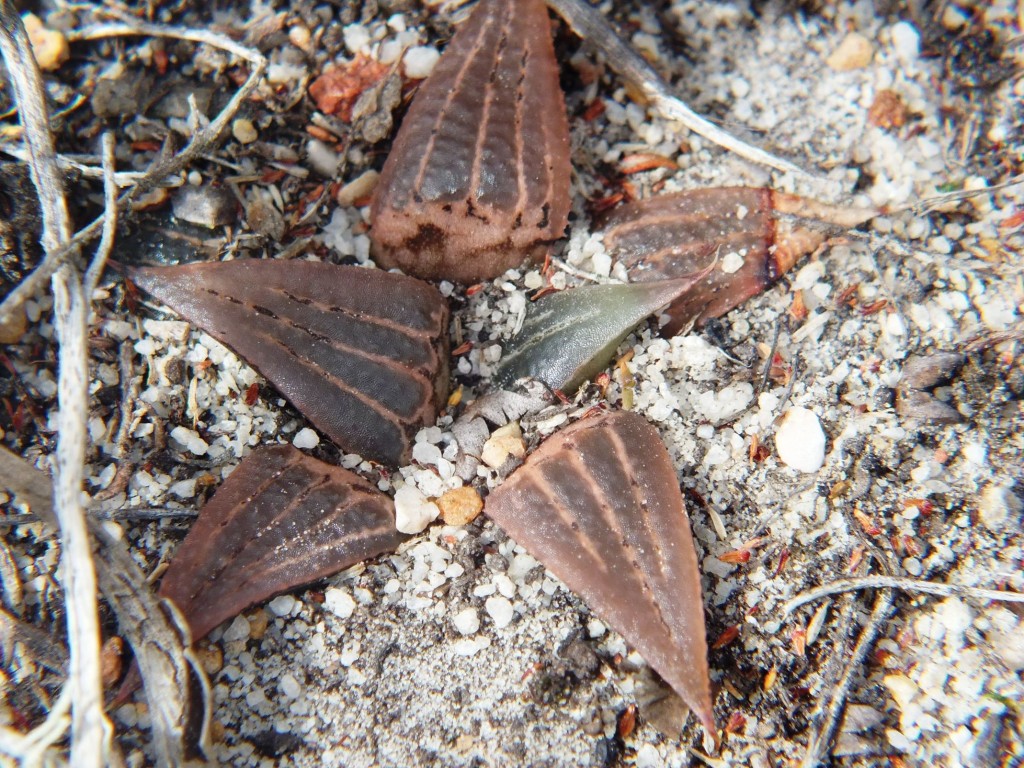
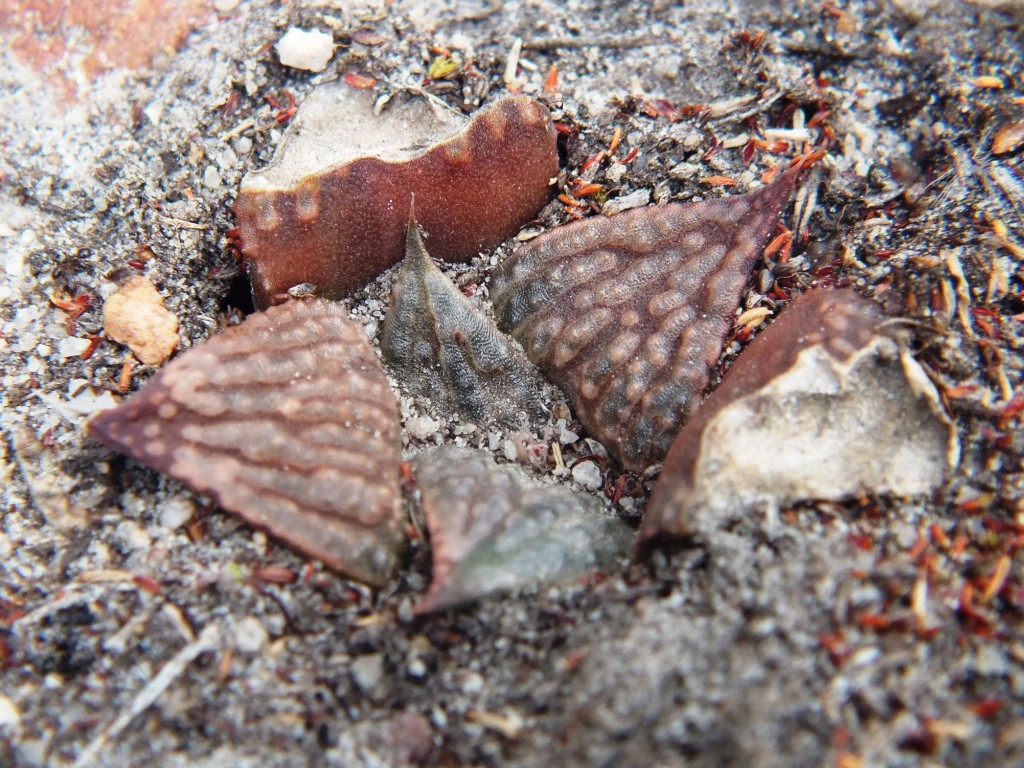

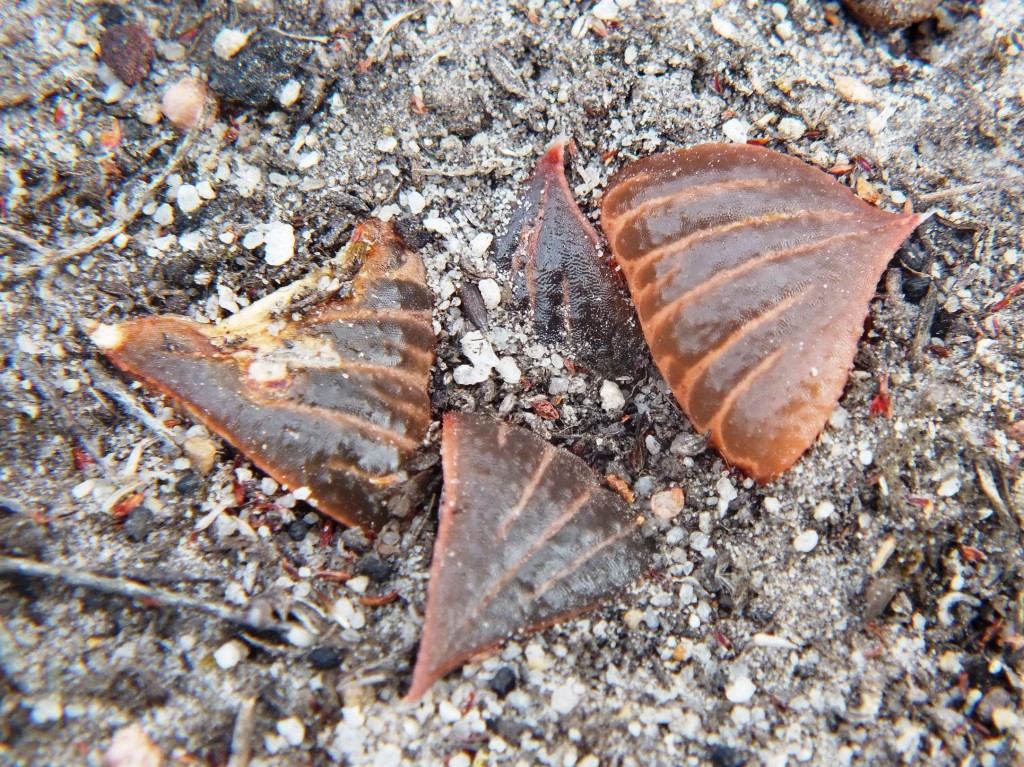
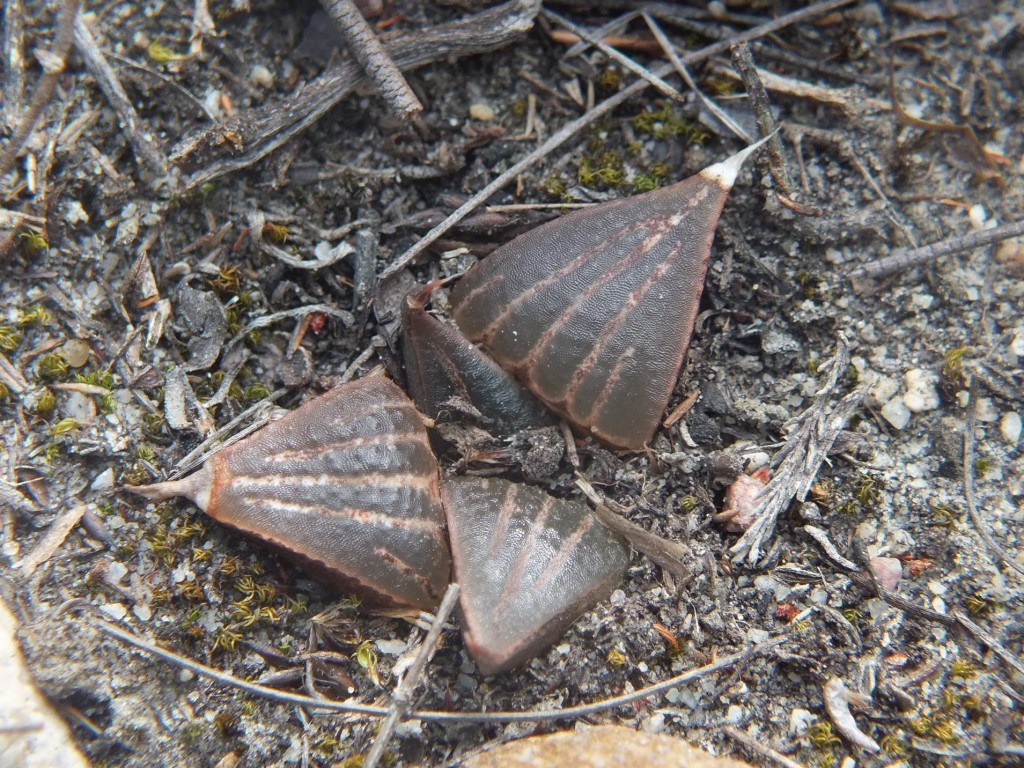

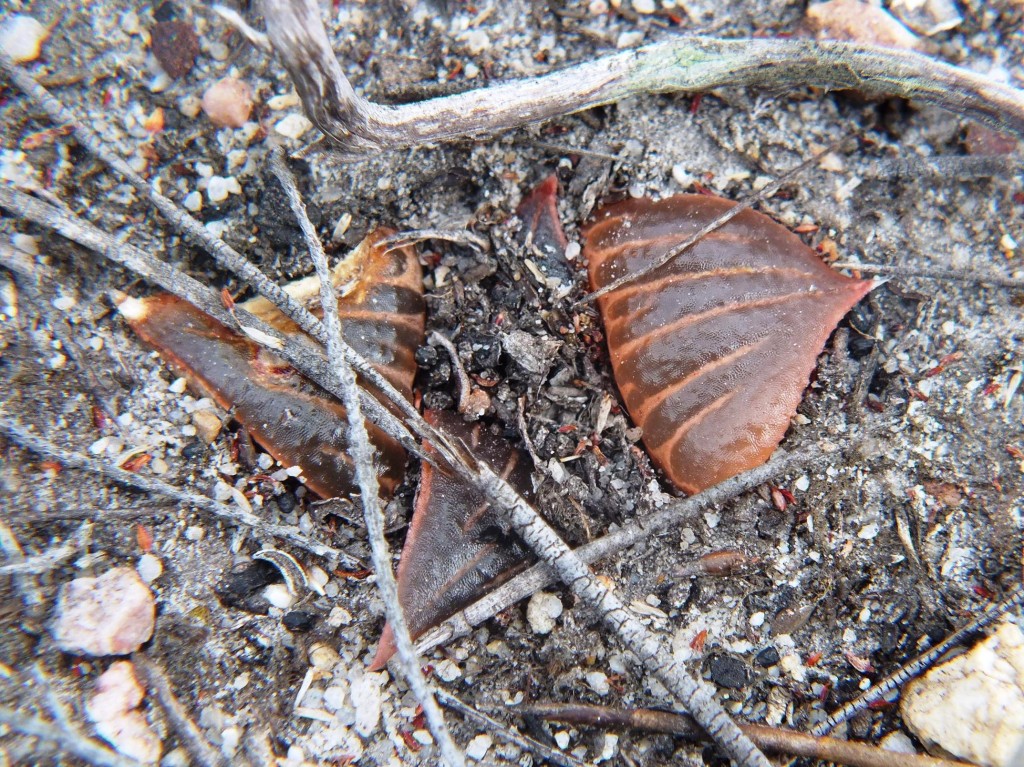

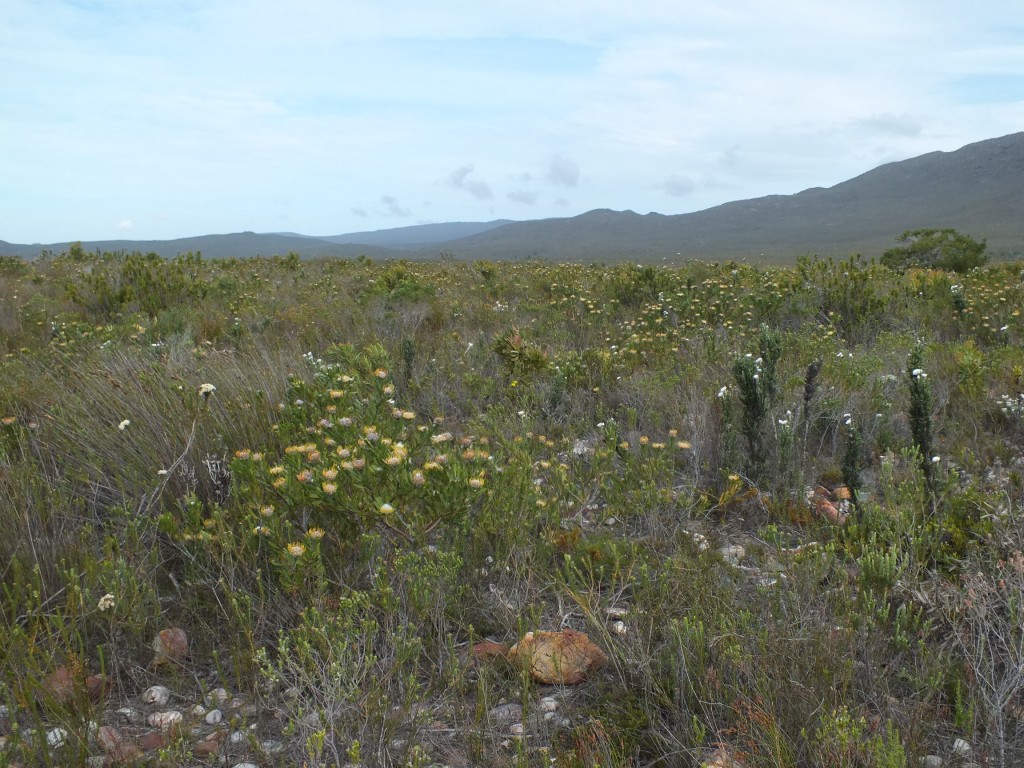
21. JDV86/2 H. mirabilis Haarwegskloof (figs 21)
These are small plants in very close association with H. mutica as discussed above and are in quartz outcrops rather than in the shale ridges where H. mutica is found.
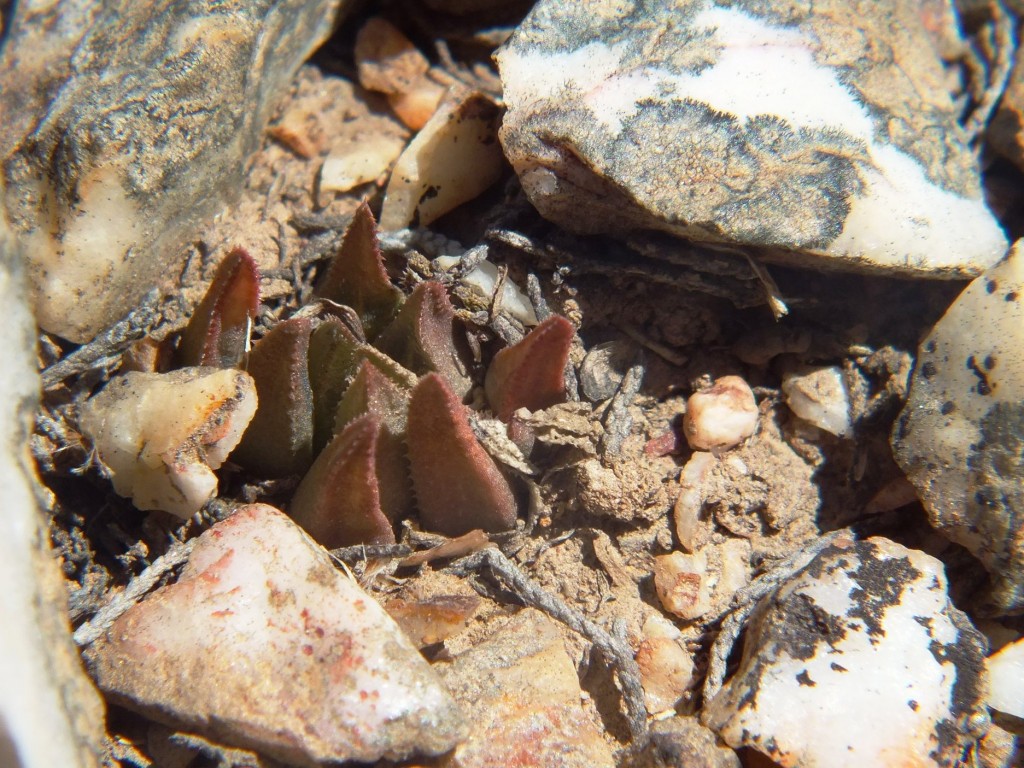
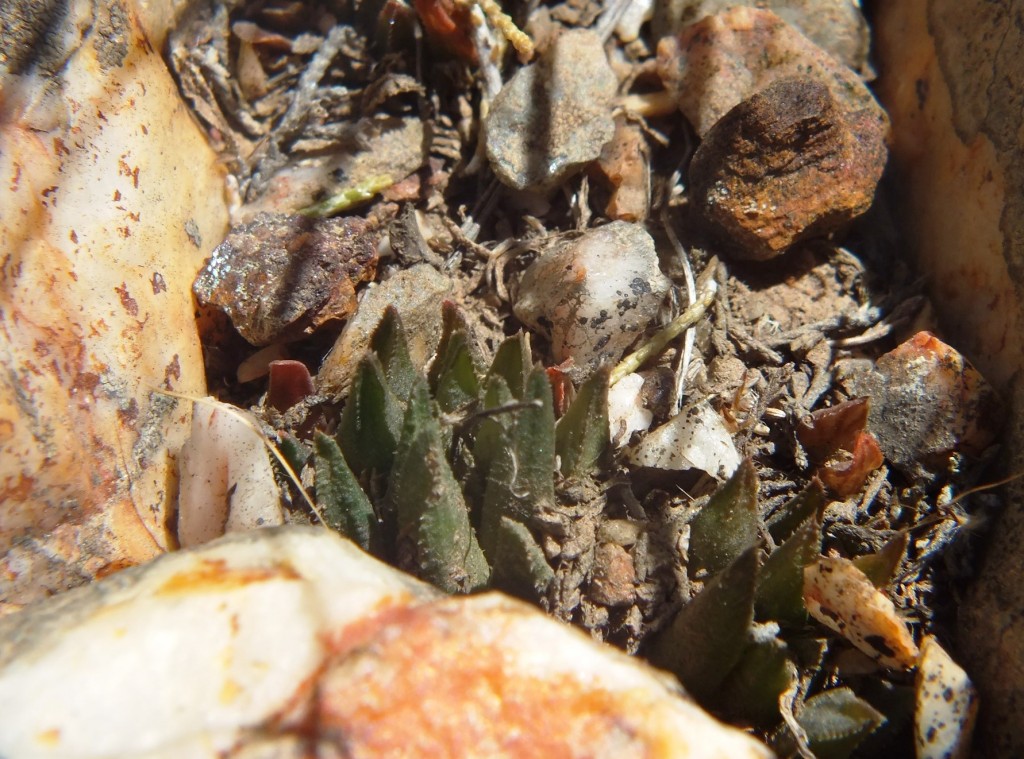

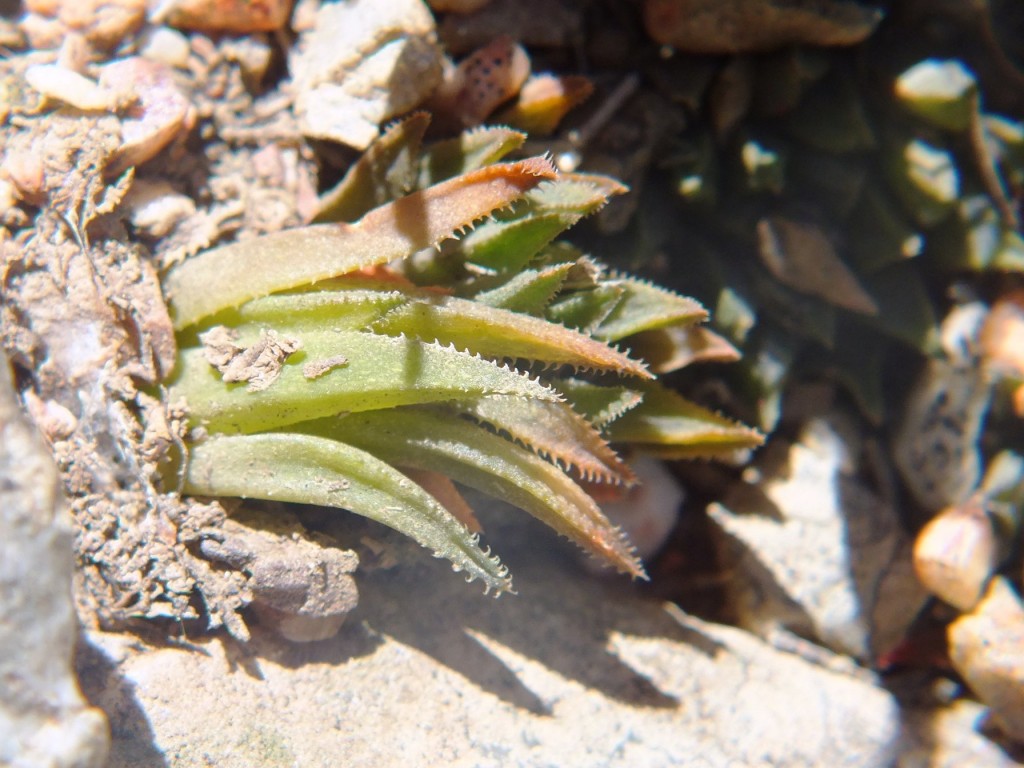

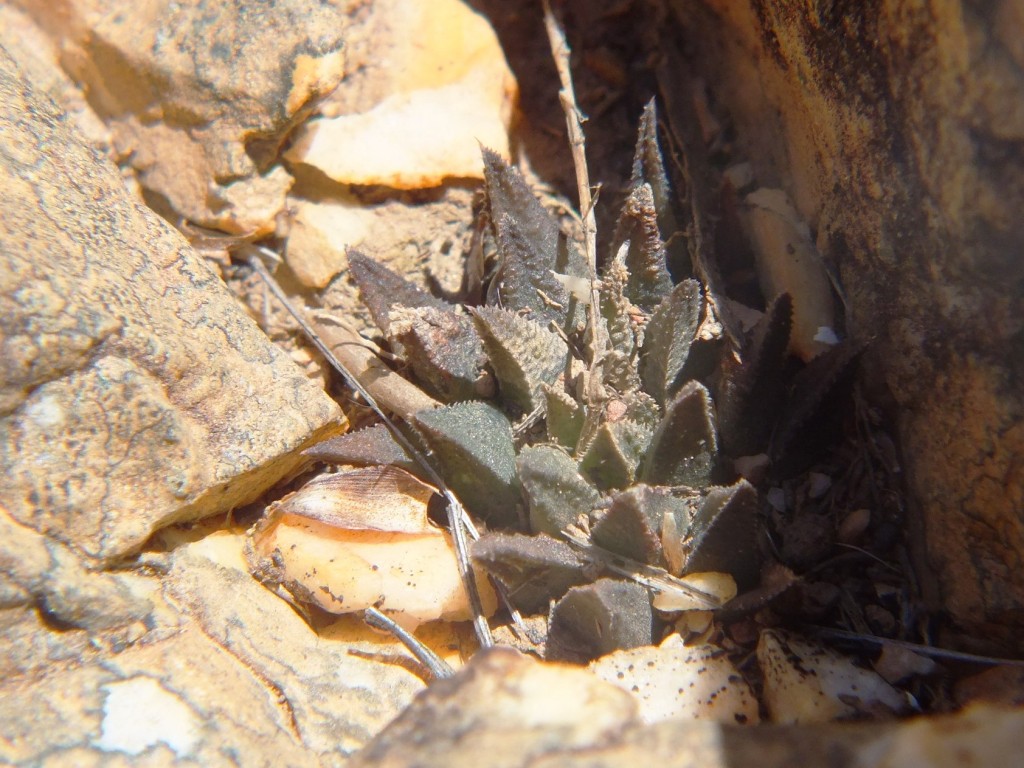

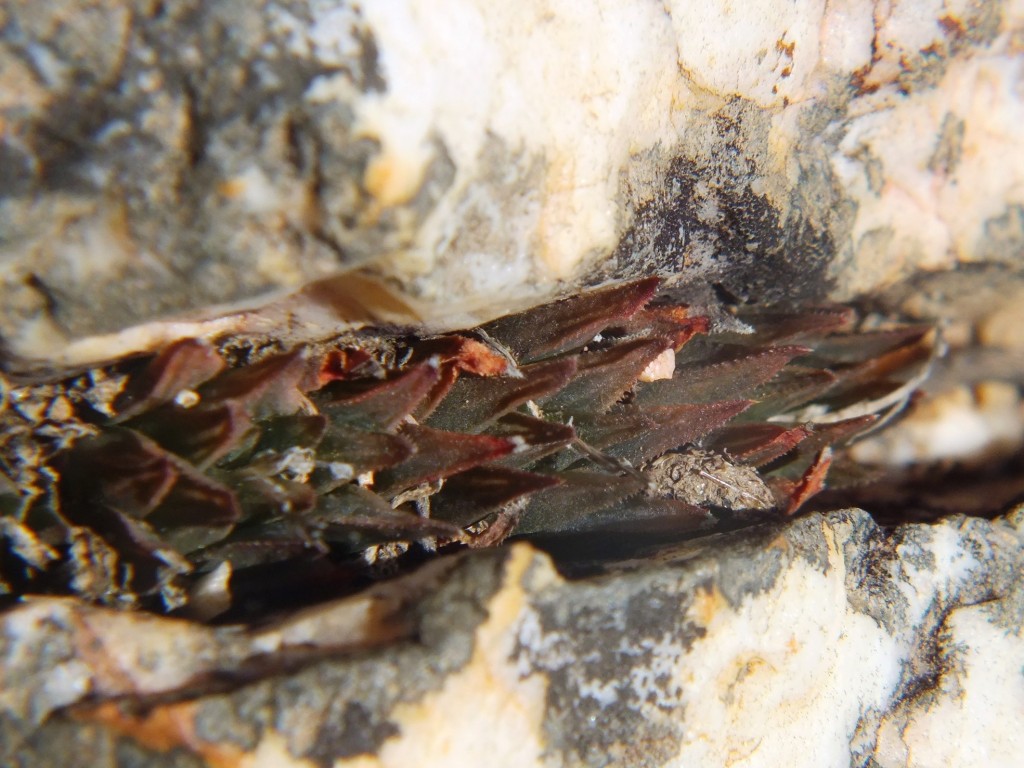
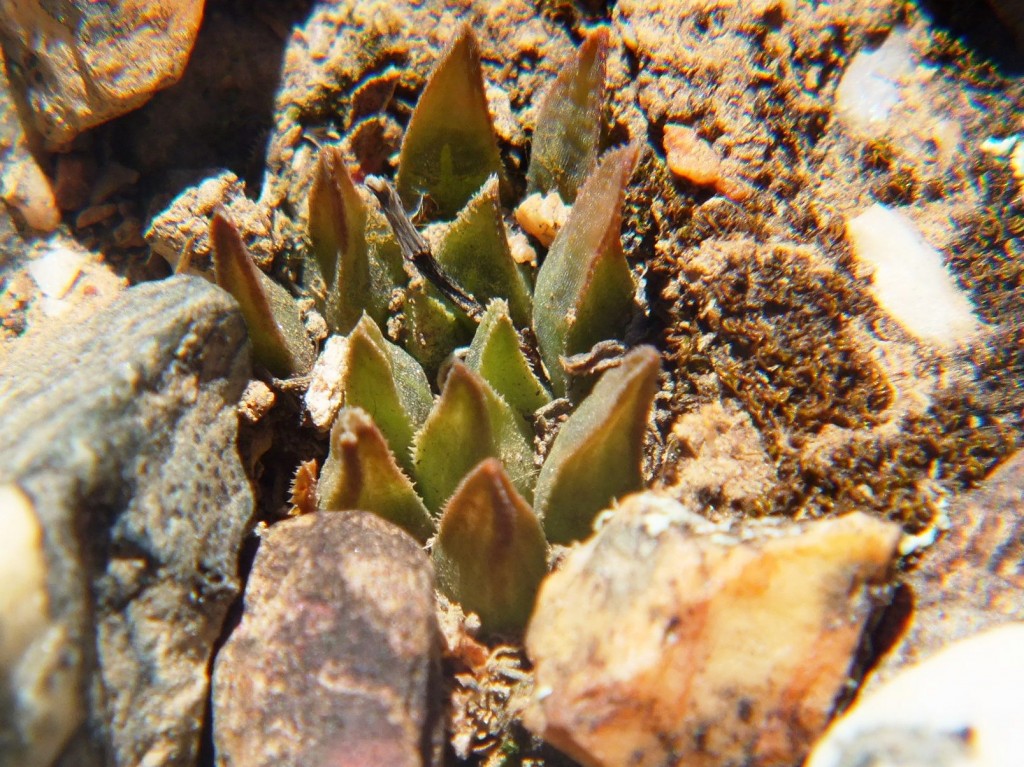
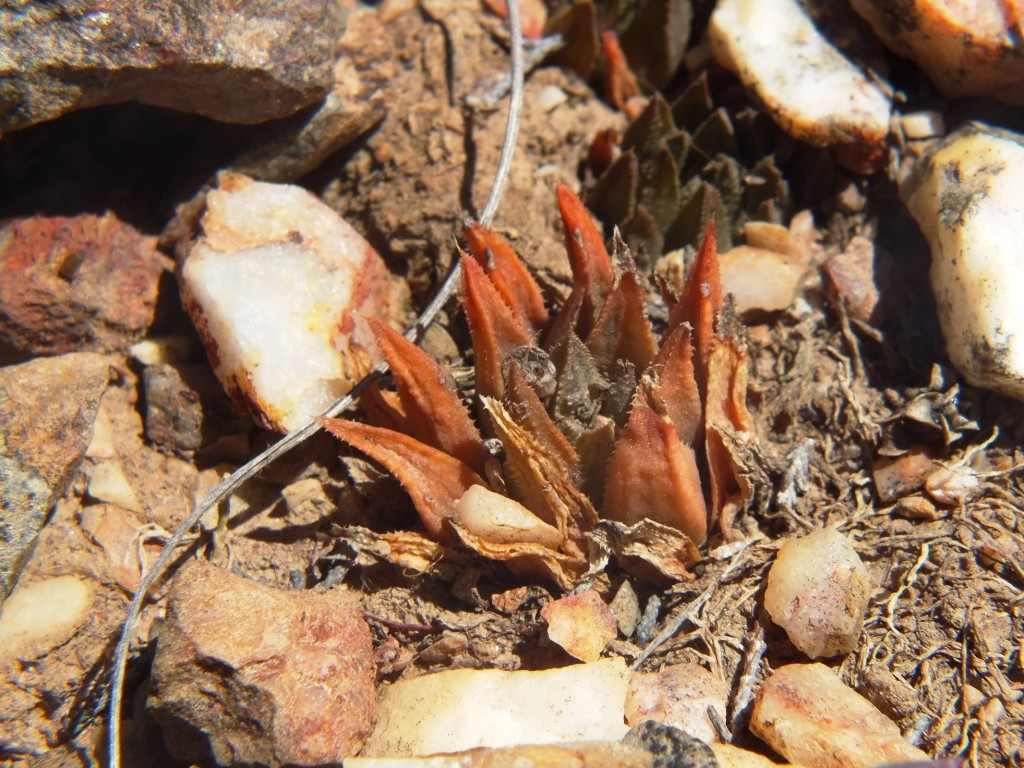
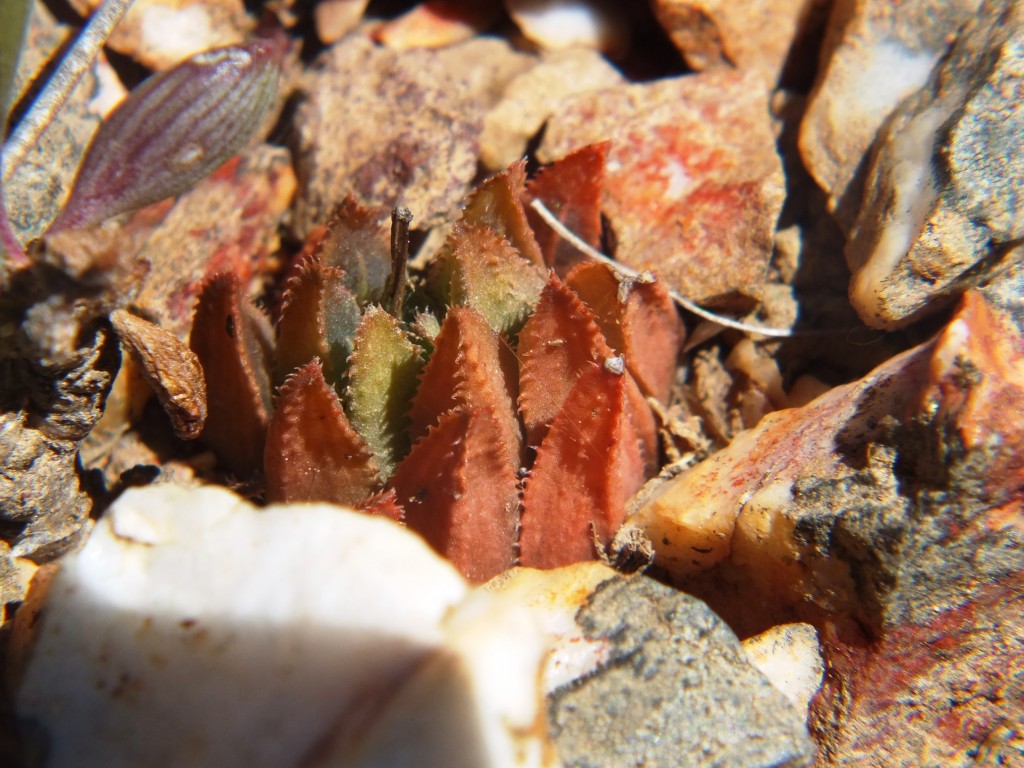
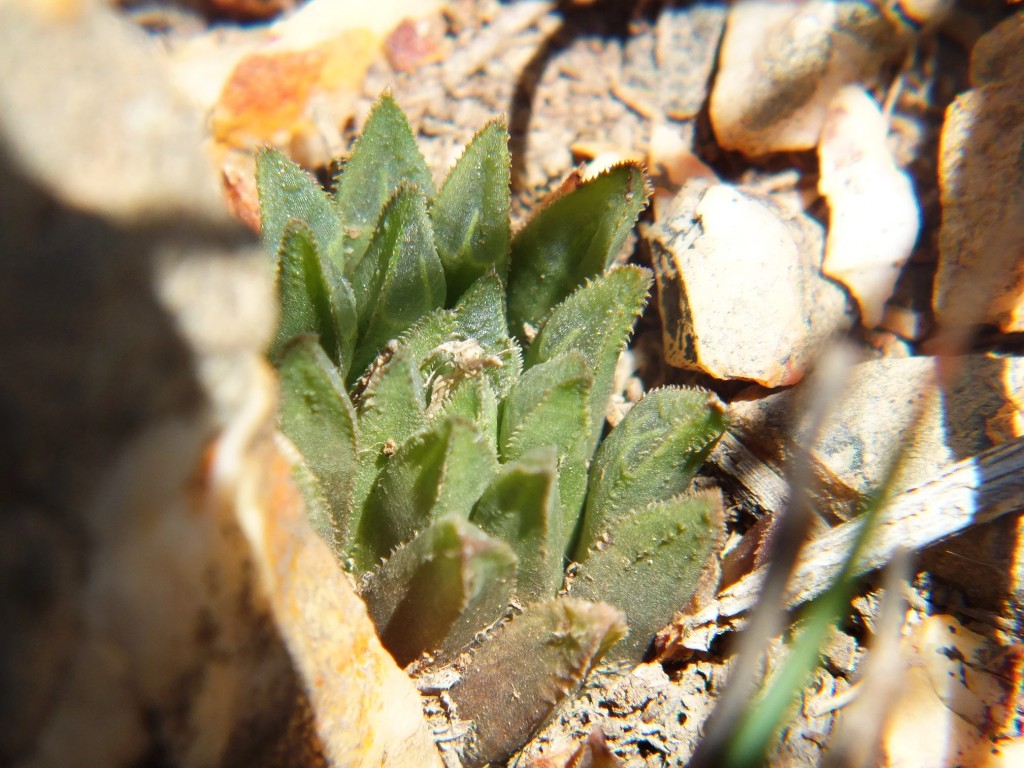
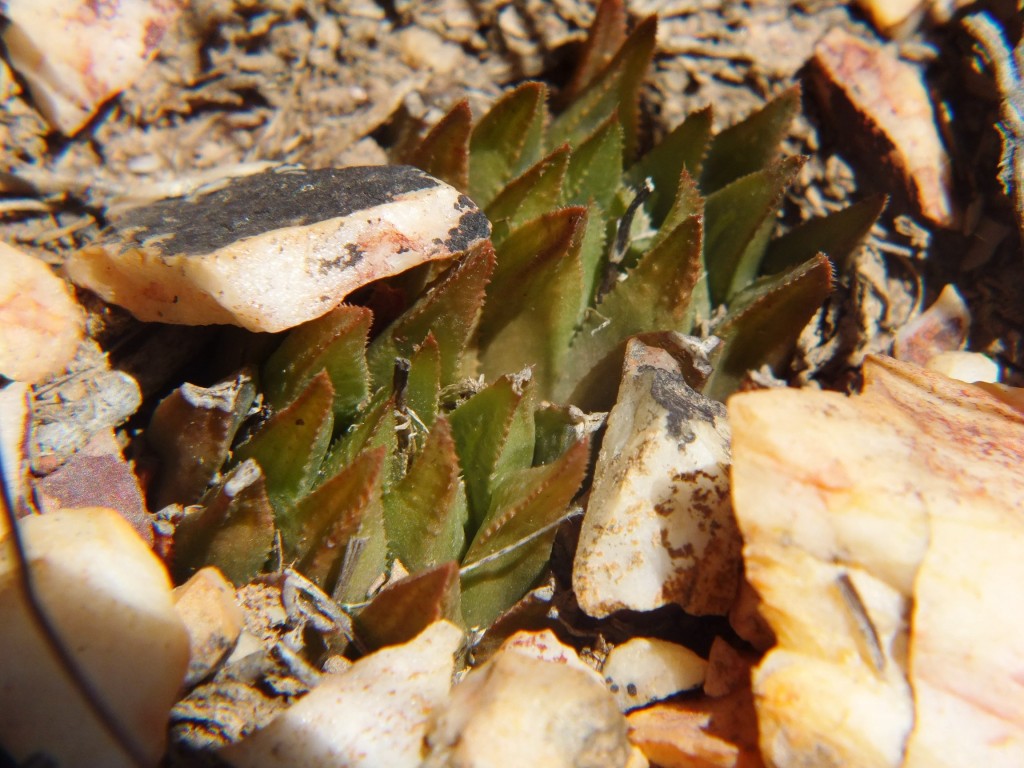
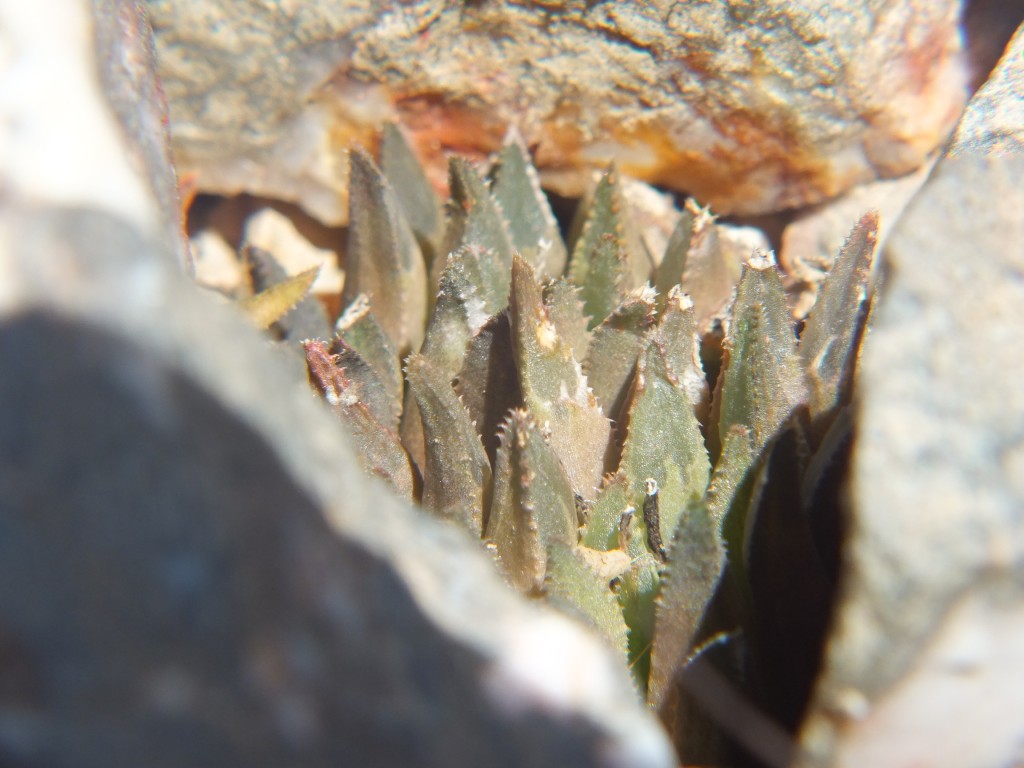
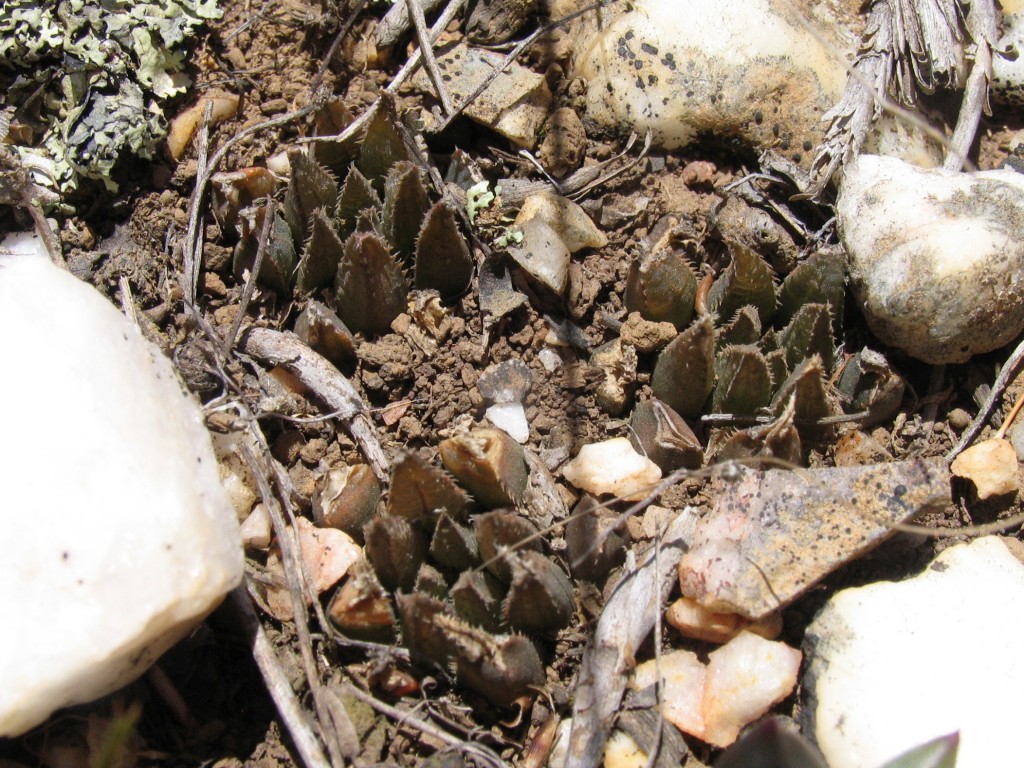
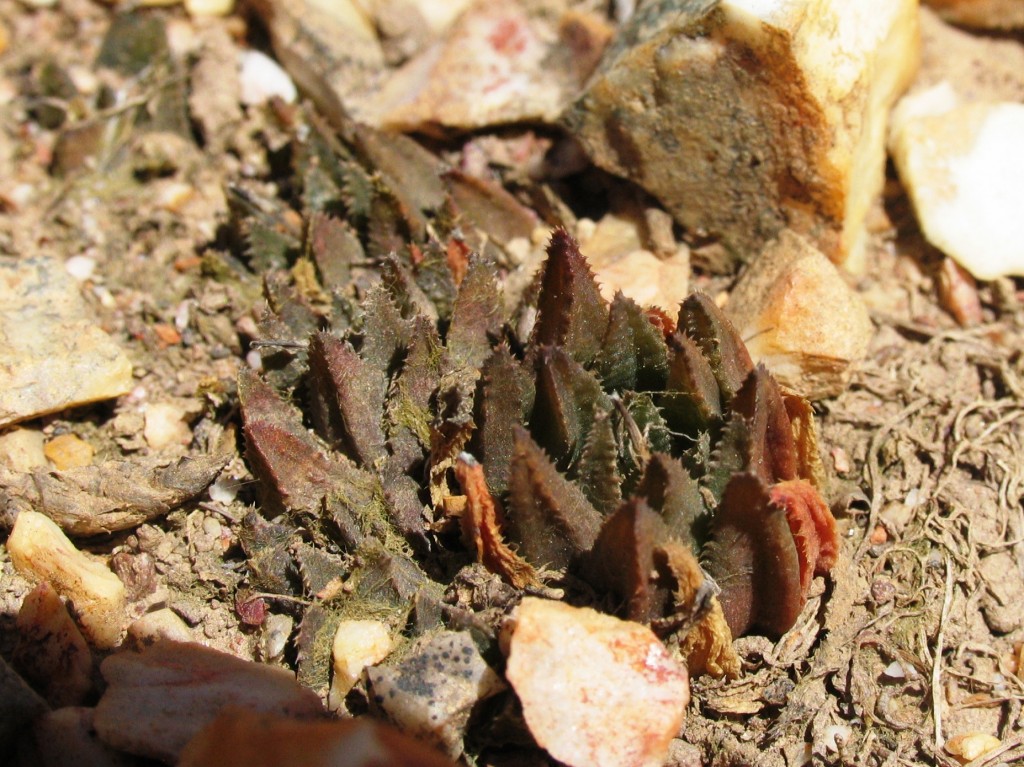
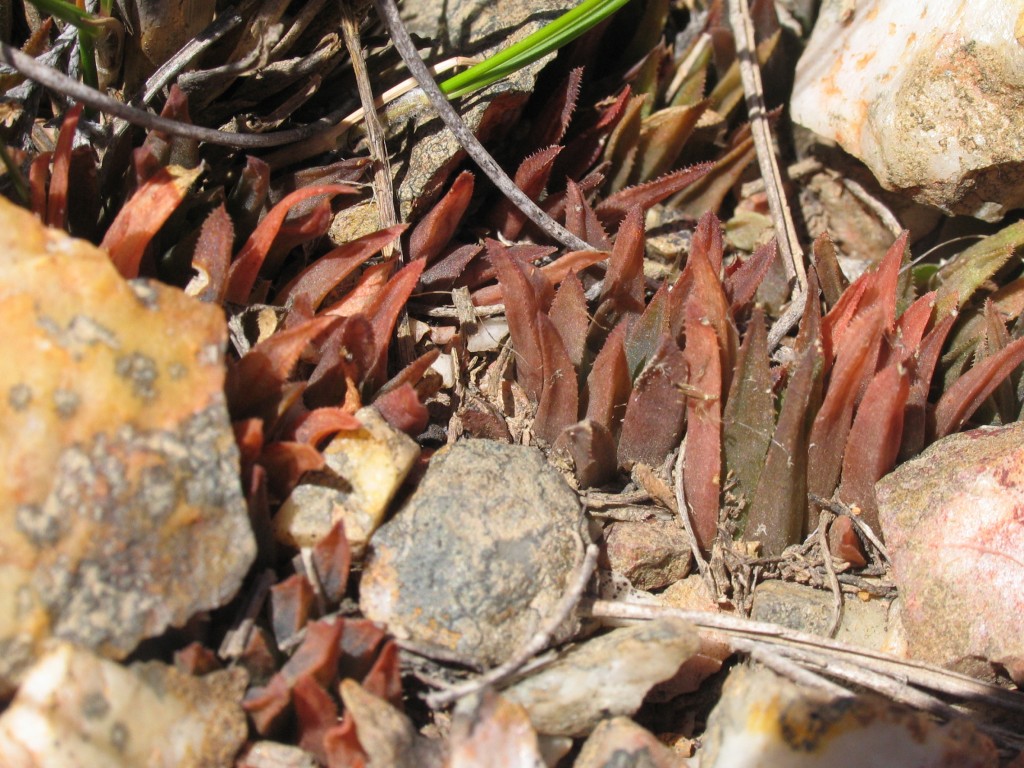
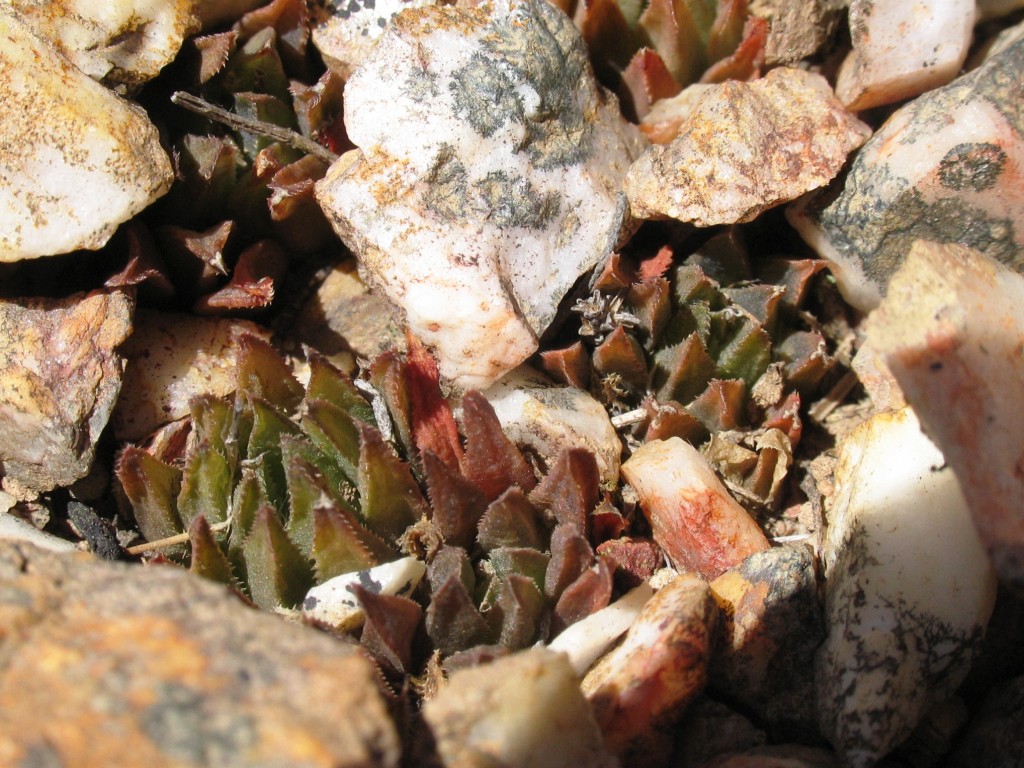
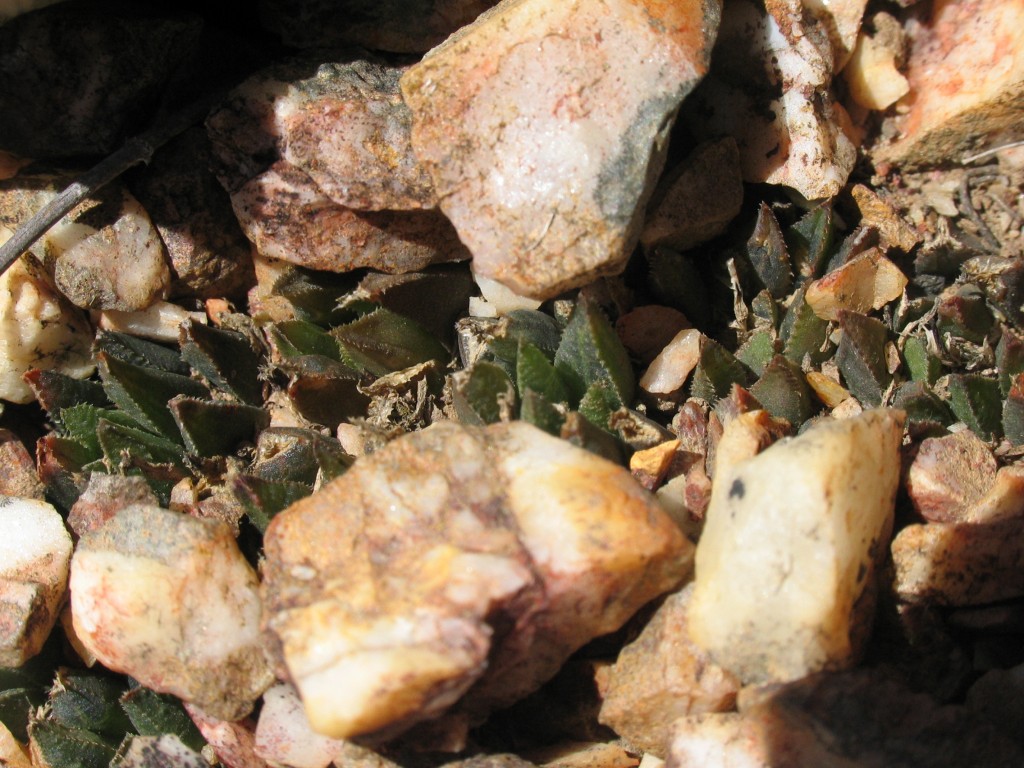
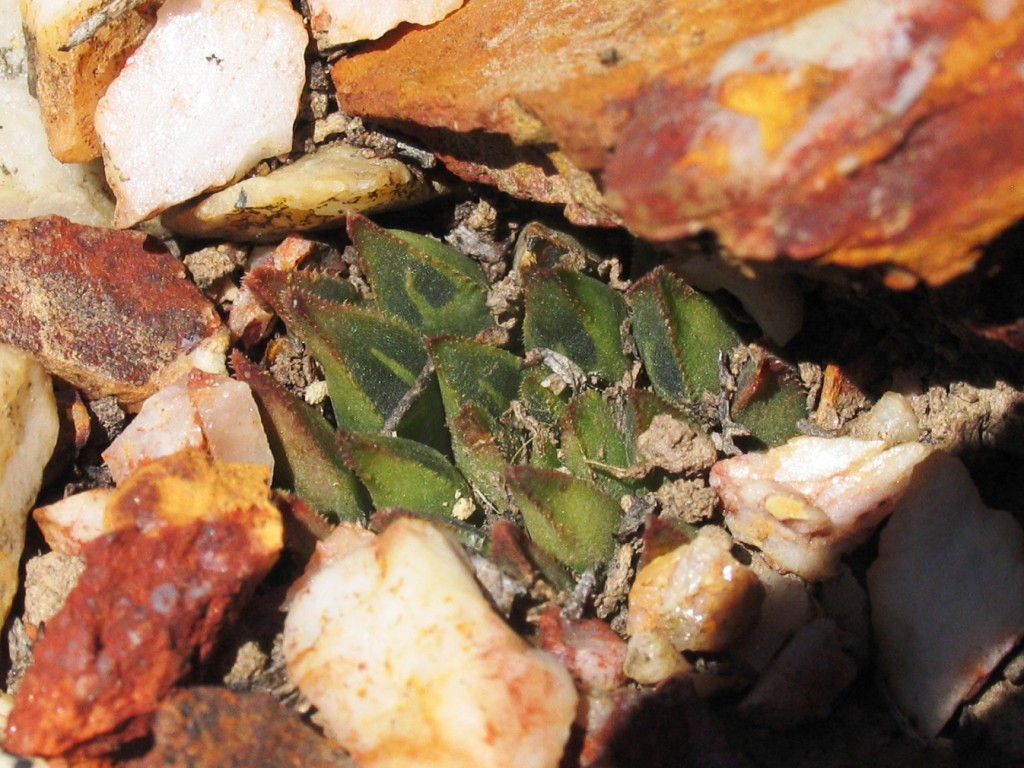
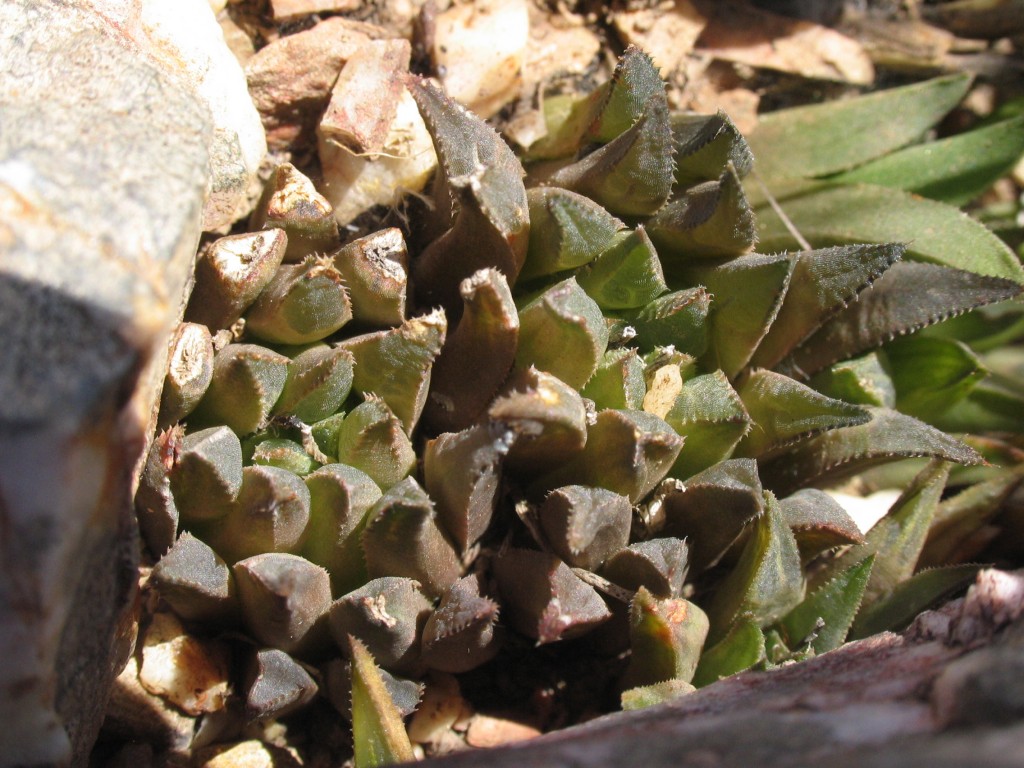
Set 4 H. mutica
H. mutica is not a species that is well-known and this is probably because it is not proliferous. The name mutica means without a point and “typically” plants of H. mutica should and do have no point (end-awn). The main object of the trip was to obtain more images of this species to convey a better impression of the many variants and how it can be viewed in relation to other species.
22. MBB7075 H.mutica Grootvlakte (figs 22)
I am not certain of the origins of H. otzenii G G Smith and the locality that I traced was approximately 8km east of Riviersonderend. That site is now very degraded and I could not find plants on a visit many years ago but where I did see them on my first visit there. This Grootvlakte population occupies a similar habitat in an exposed shale ridge south of the Riviersonderend River.
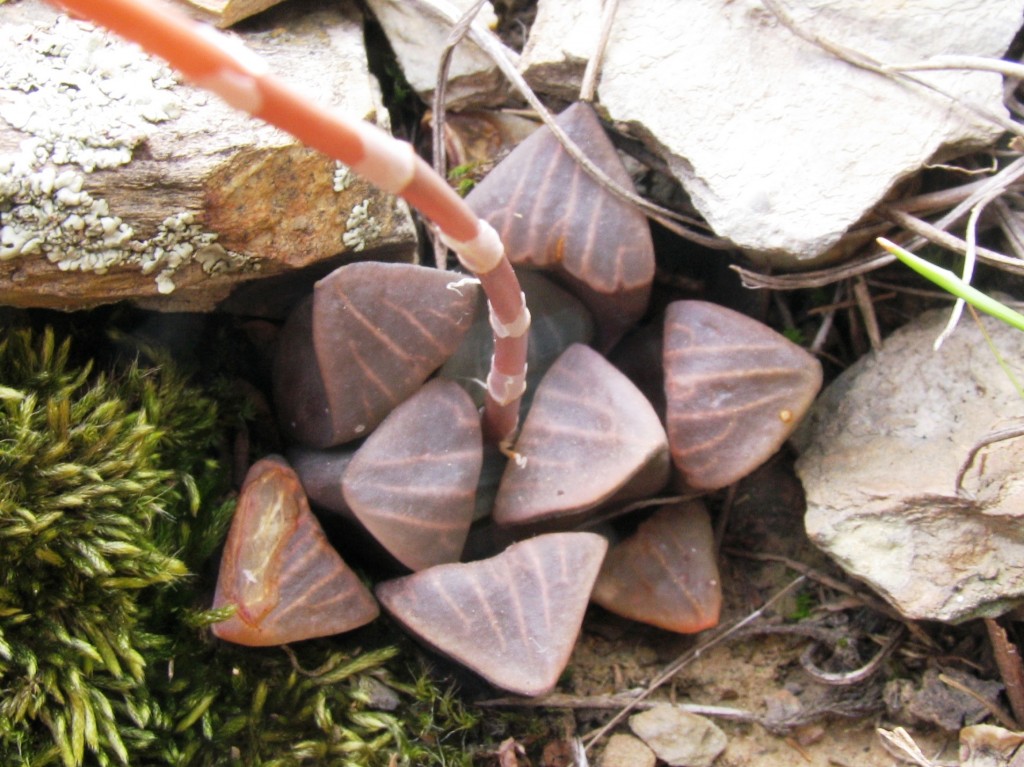
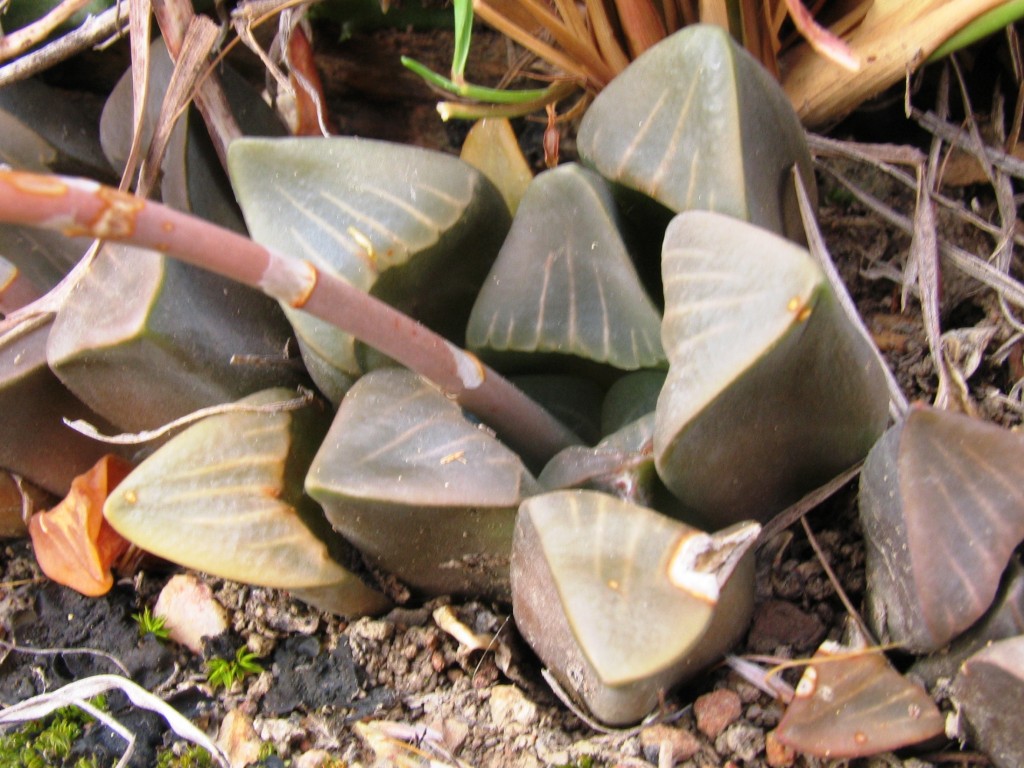


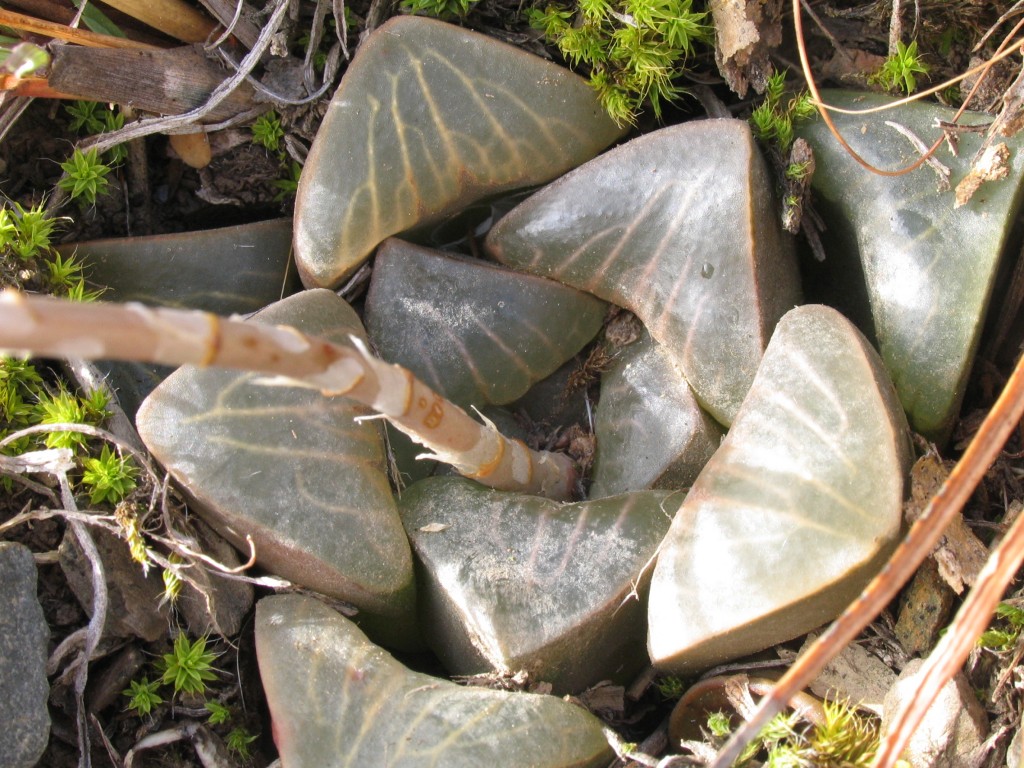
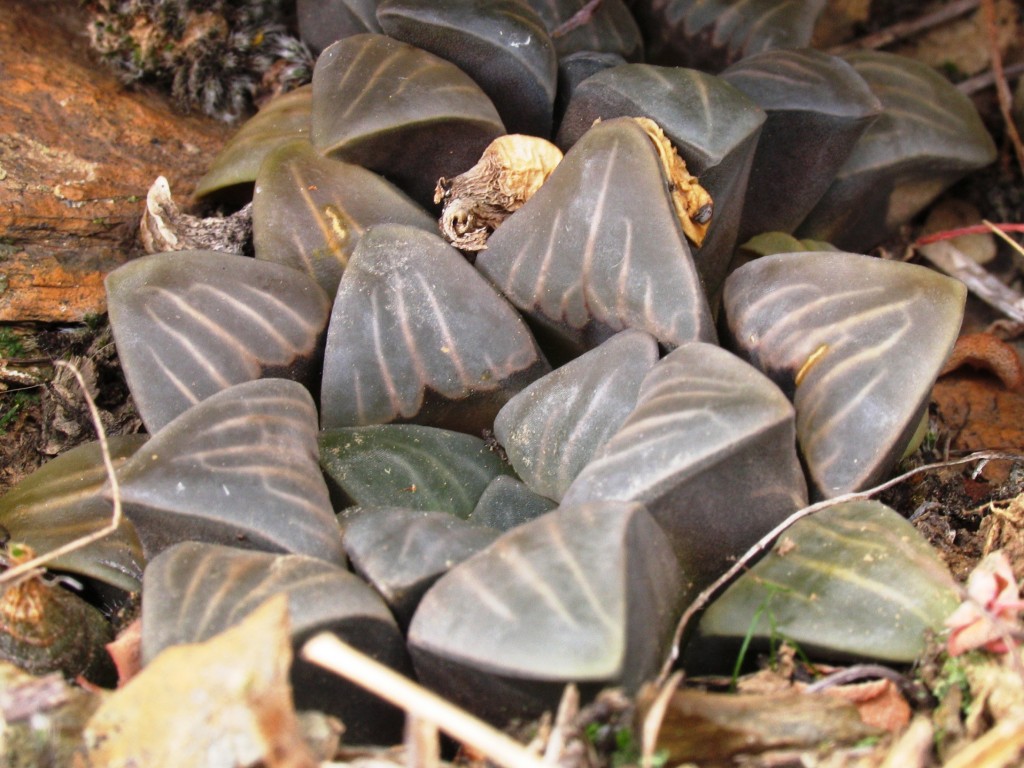

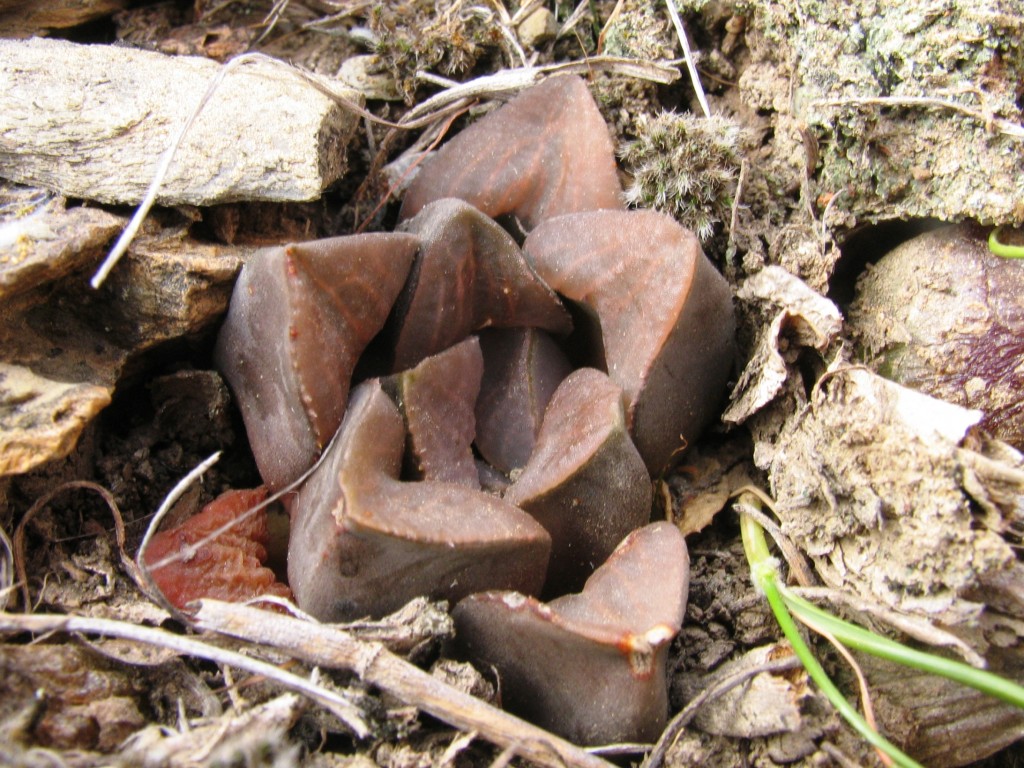
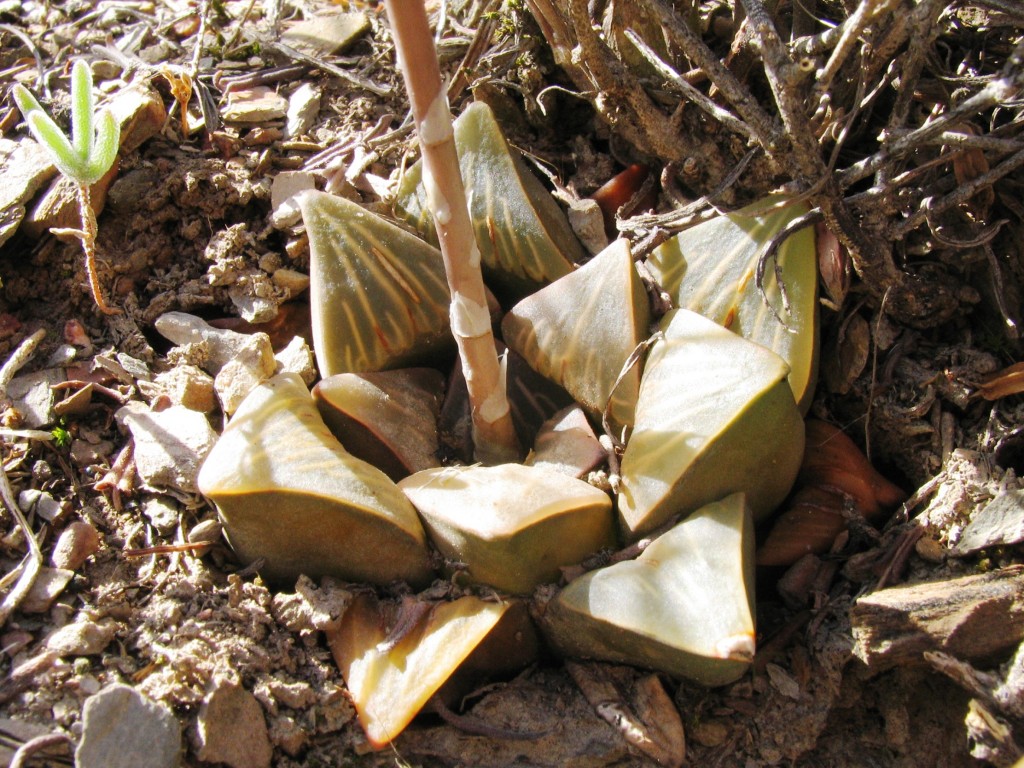
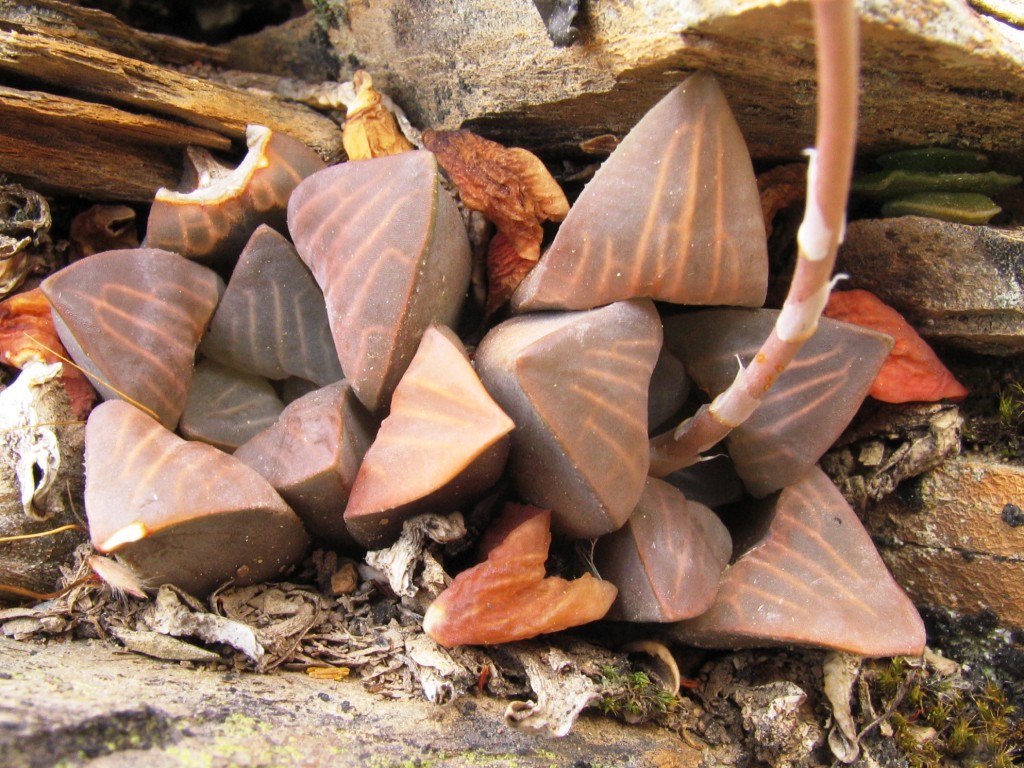
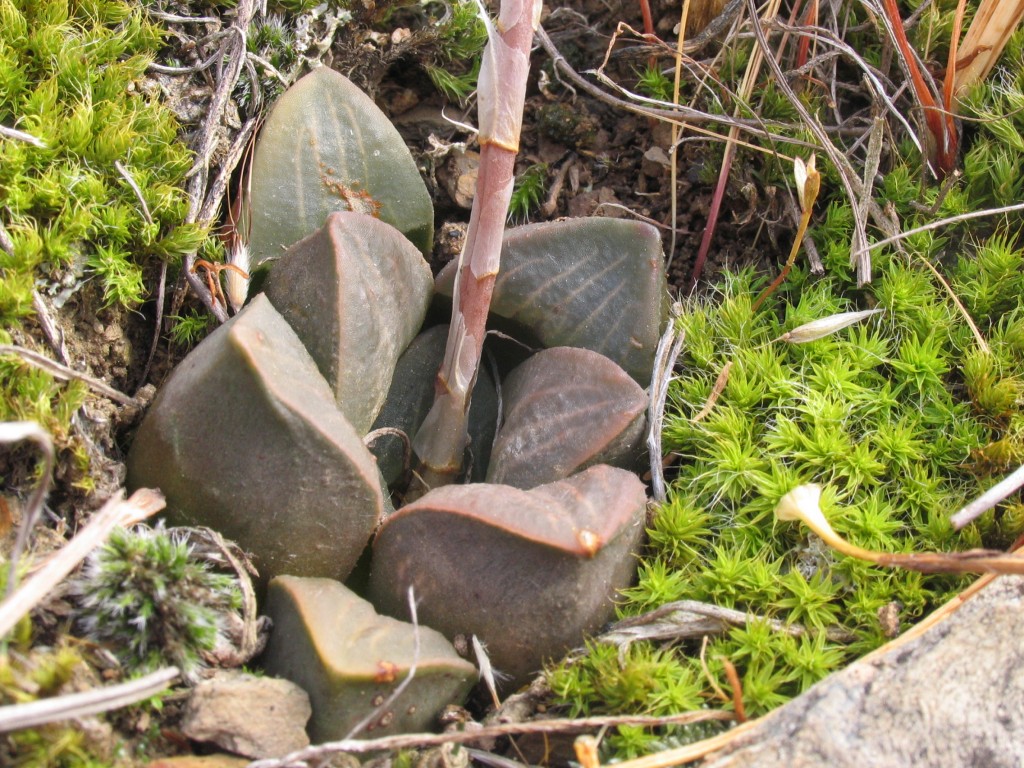

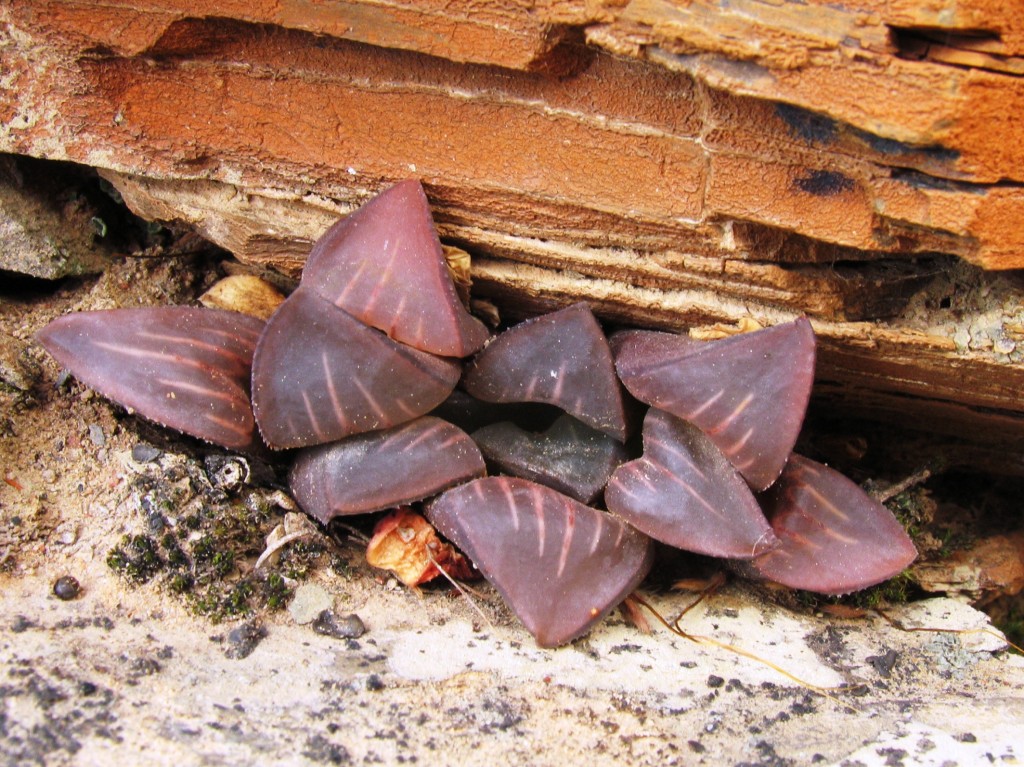

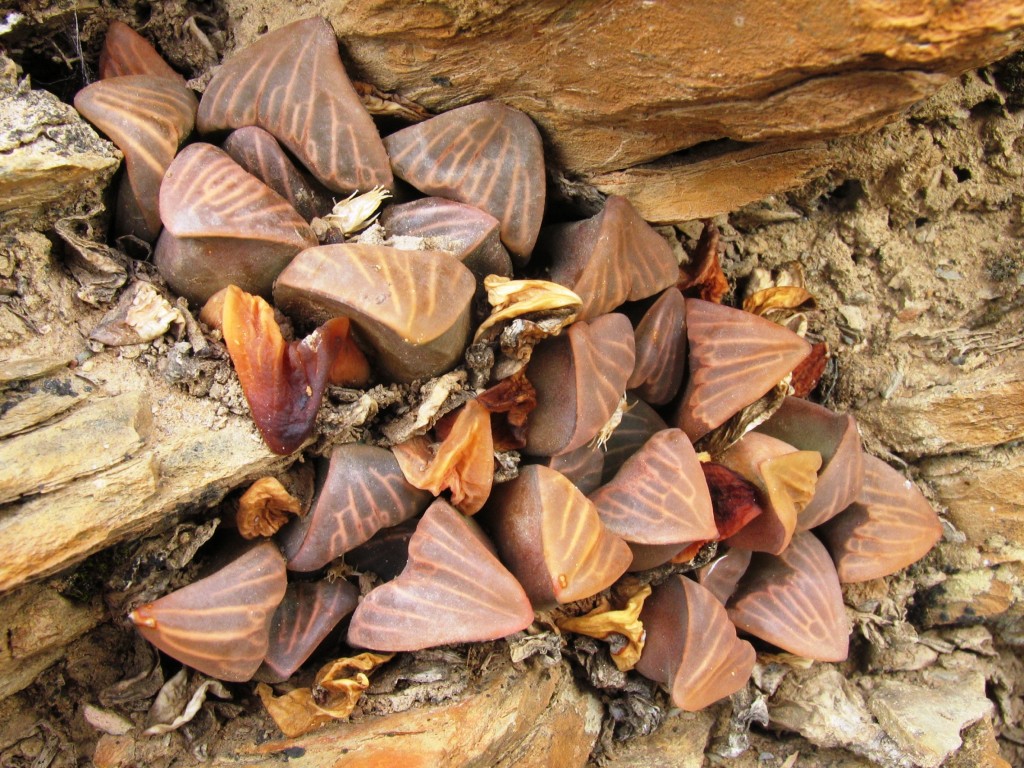

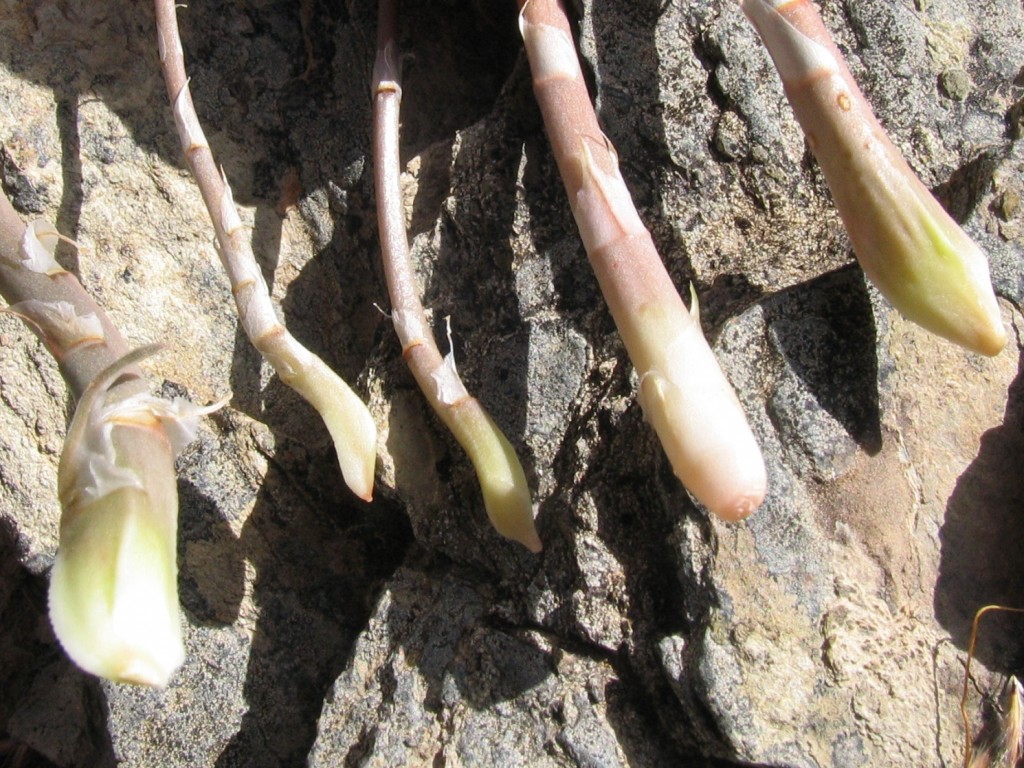
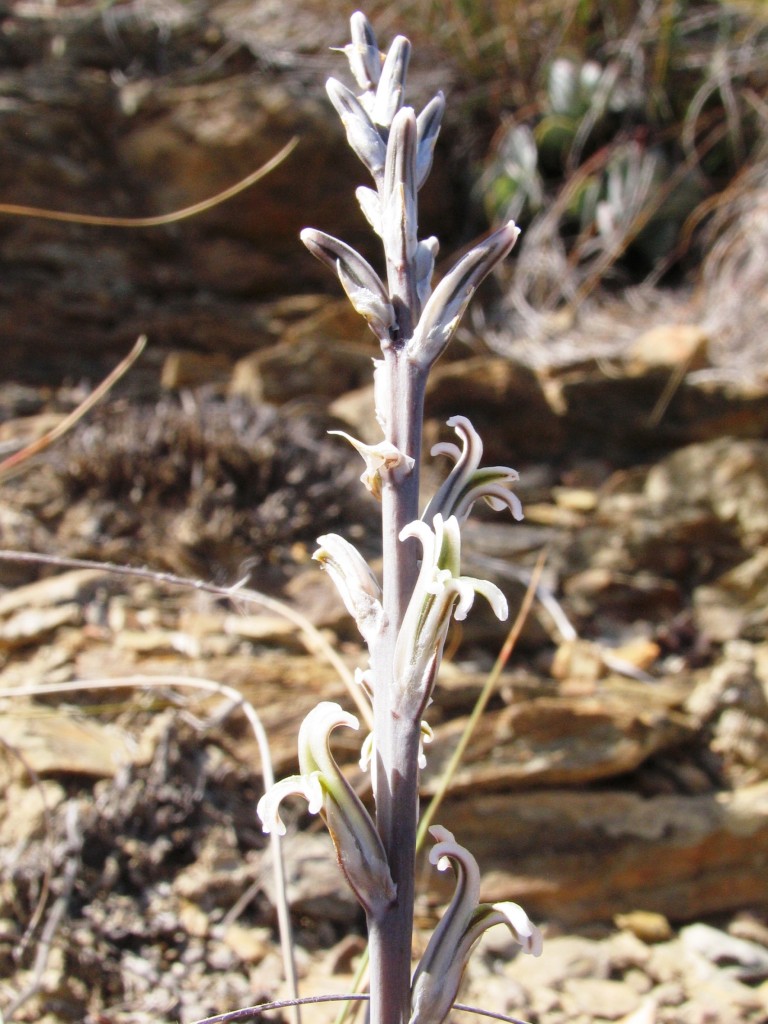
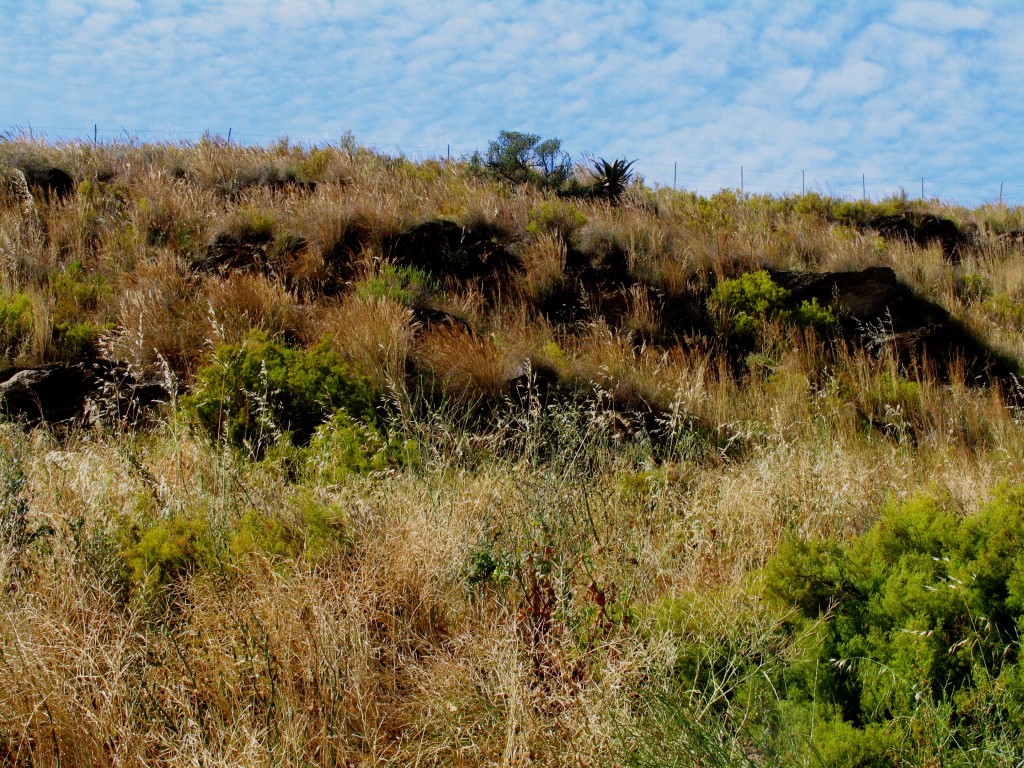
23. MBB7935 H. mutica Crodini (figs 23)
The name Crodini may have been used for the following collection at nearby Witklipkop, and I say this because I did once get seed from there and Jakub Jelimiky informs he has a plant labeled ‘Crodini’. I only saw two plants here at Crodini itself when the site was severely grazed, and we found only 8 plants on this occasion. The plants appear to be in quartz, but this is a bit of an illusion as there are white quartz bands in the shale and the plants prefer the shale.

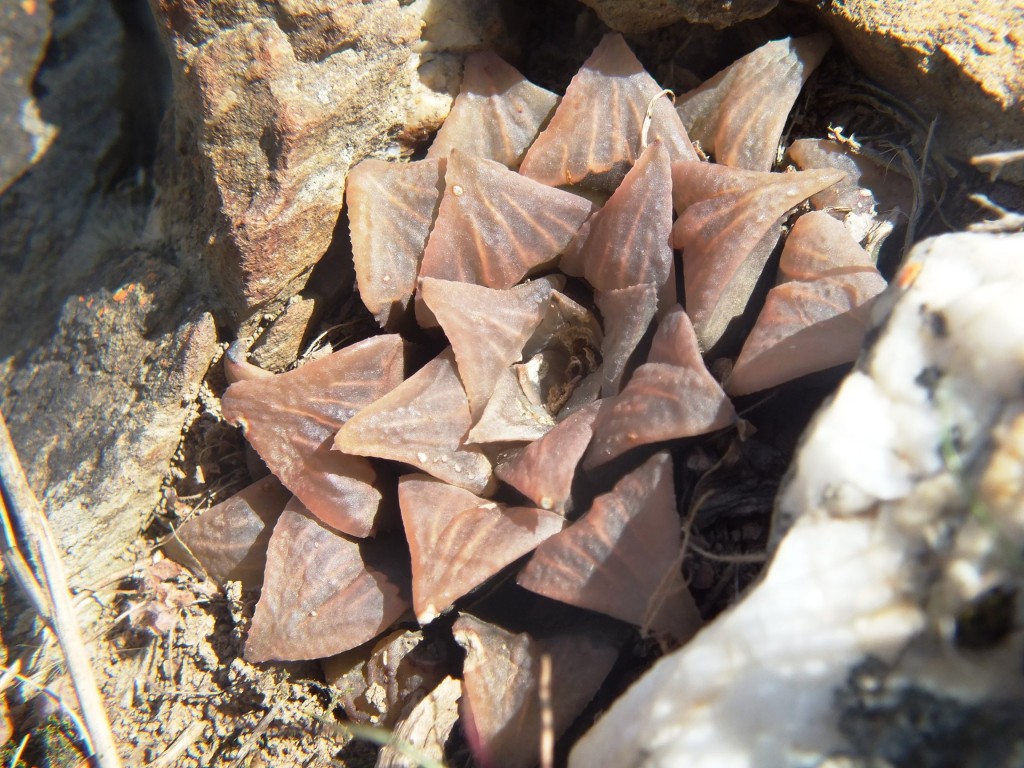
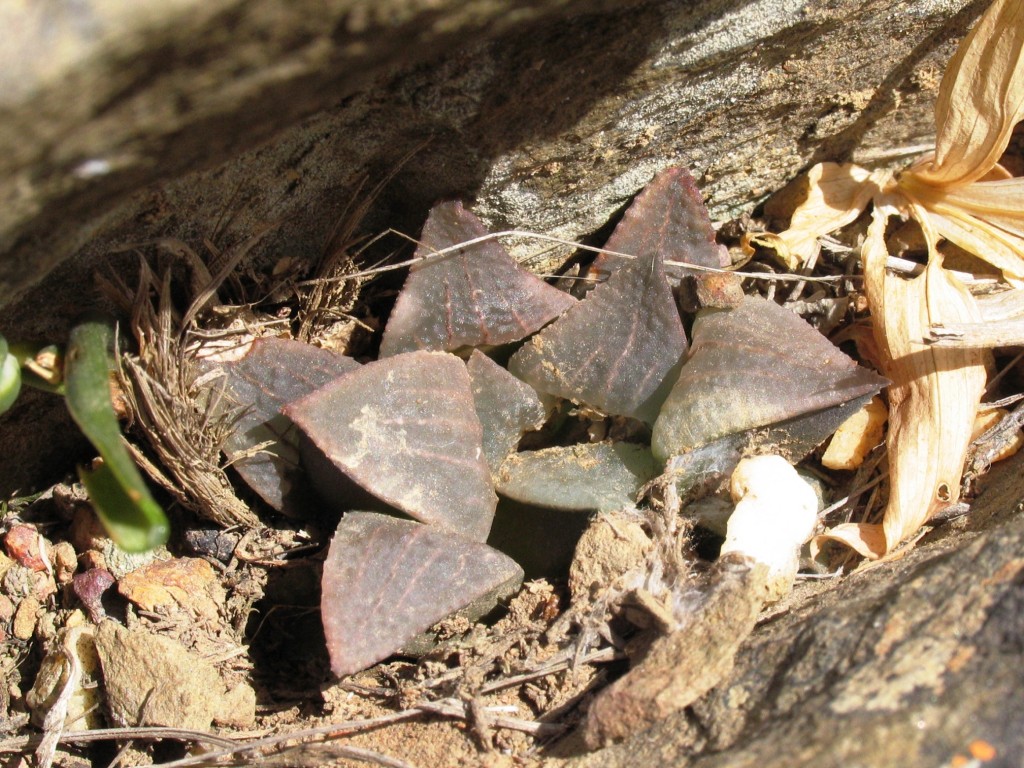
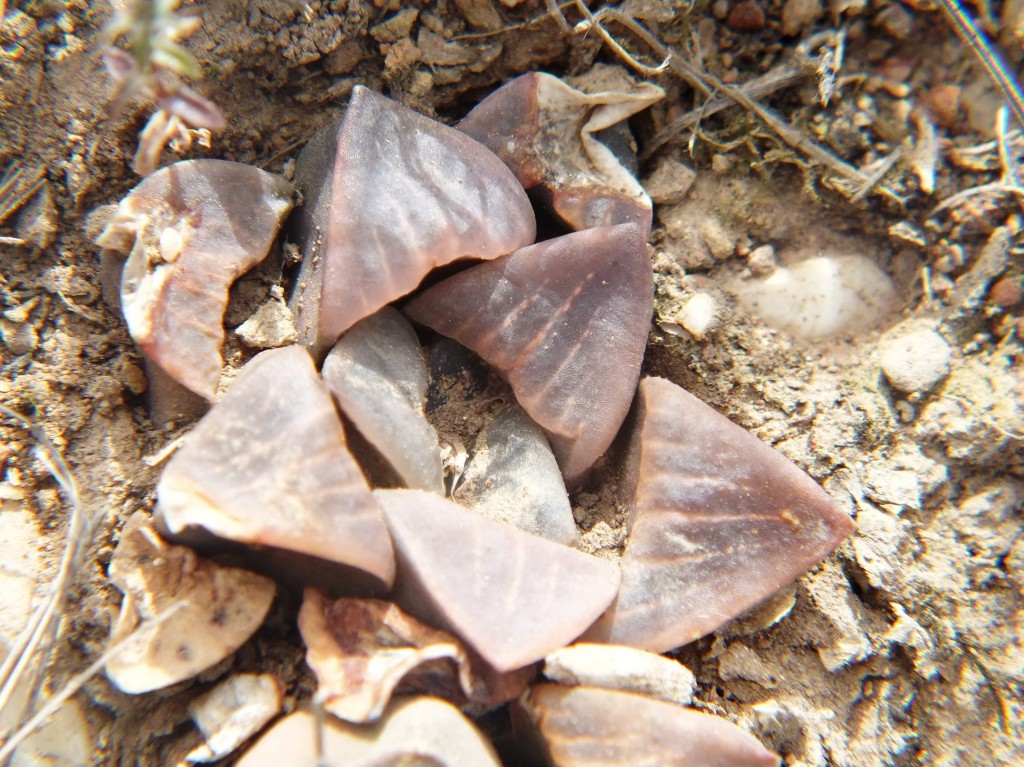
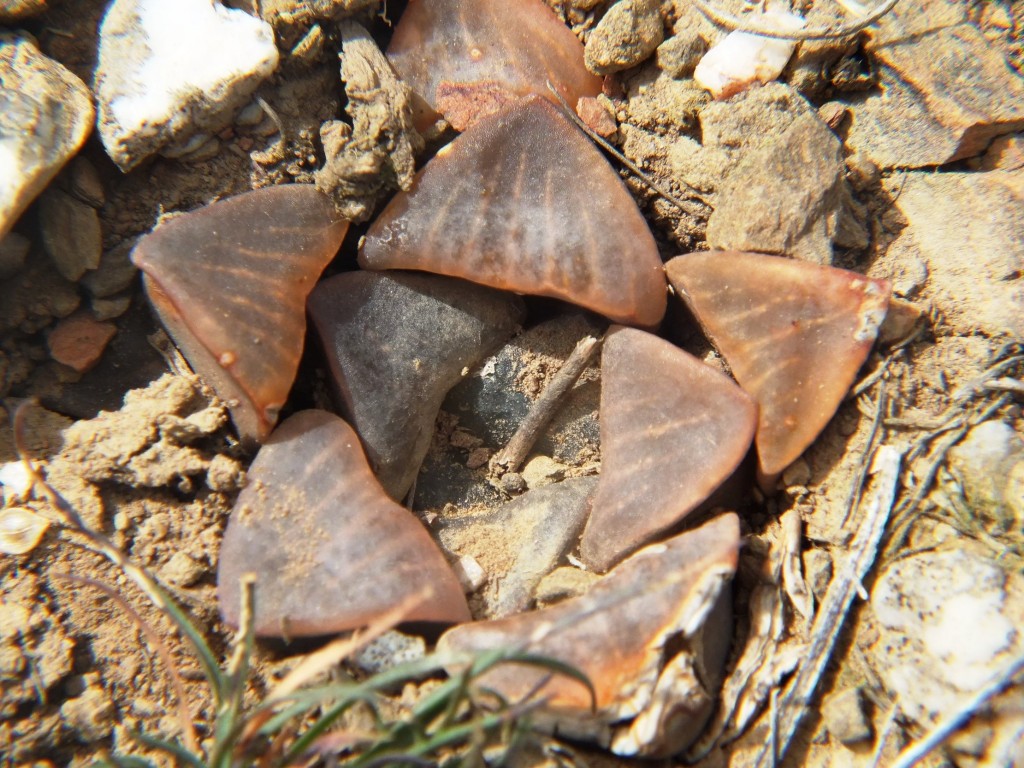
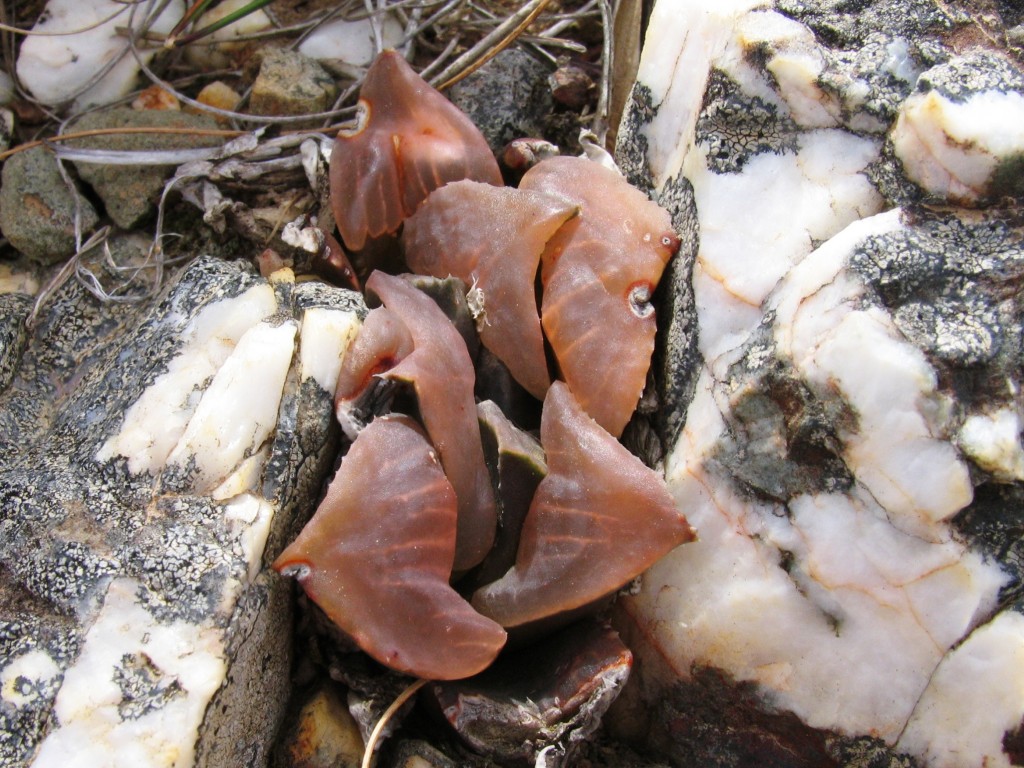
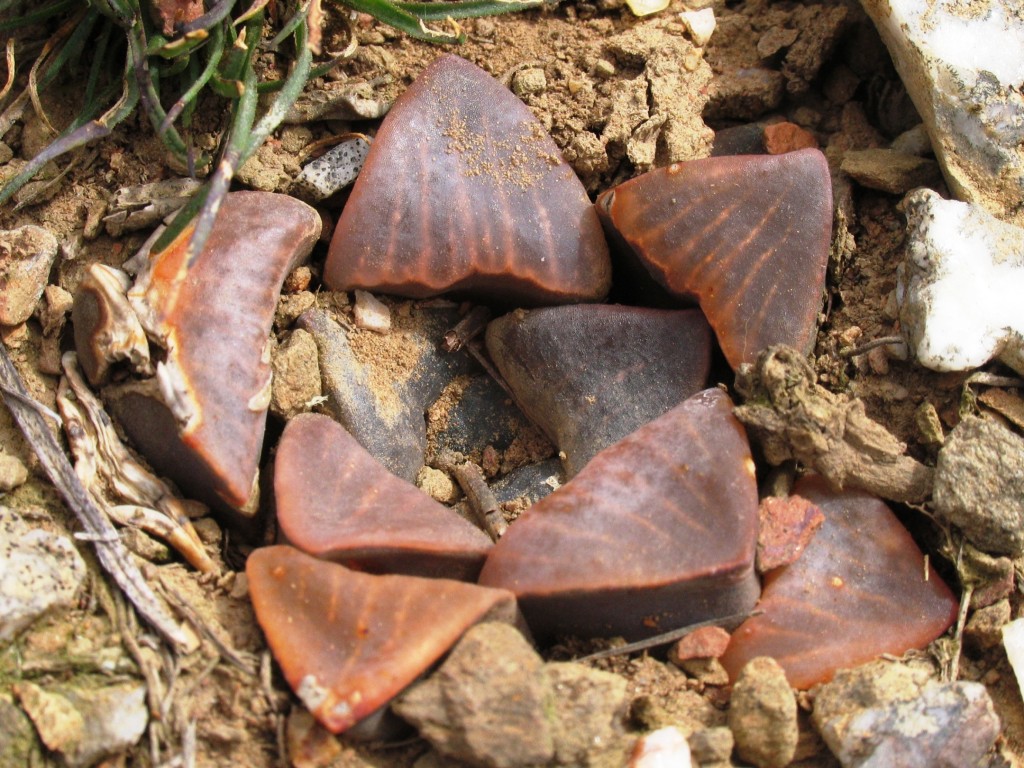
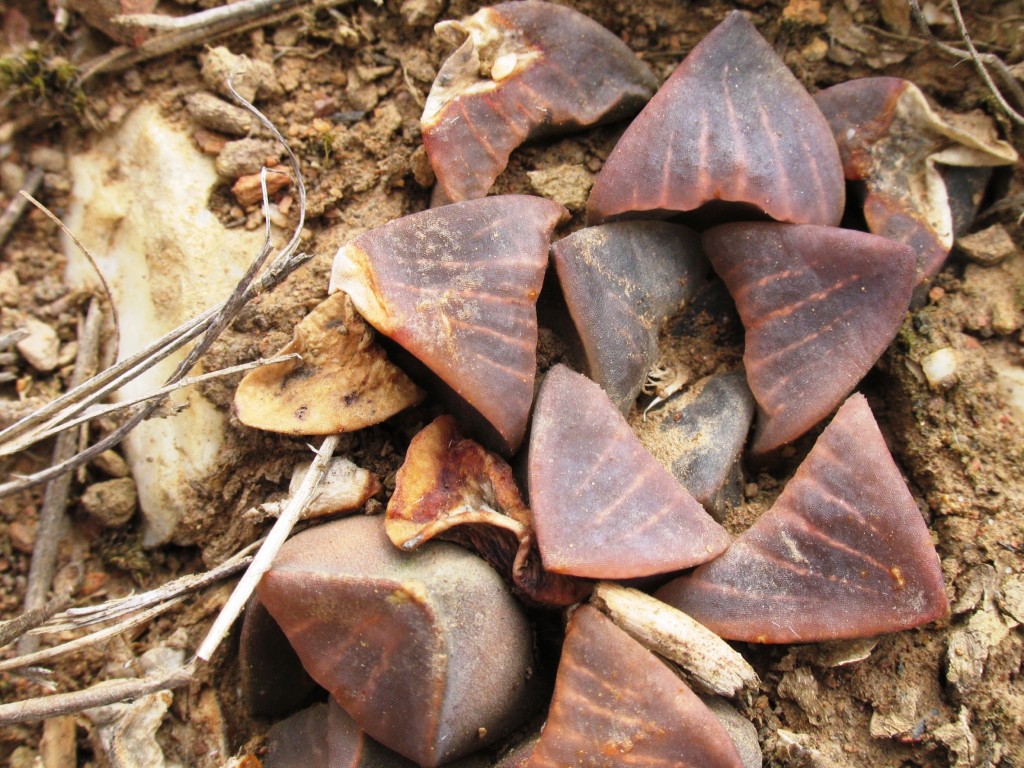
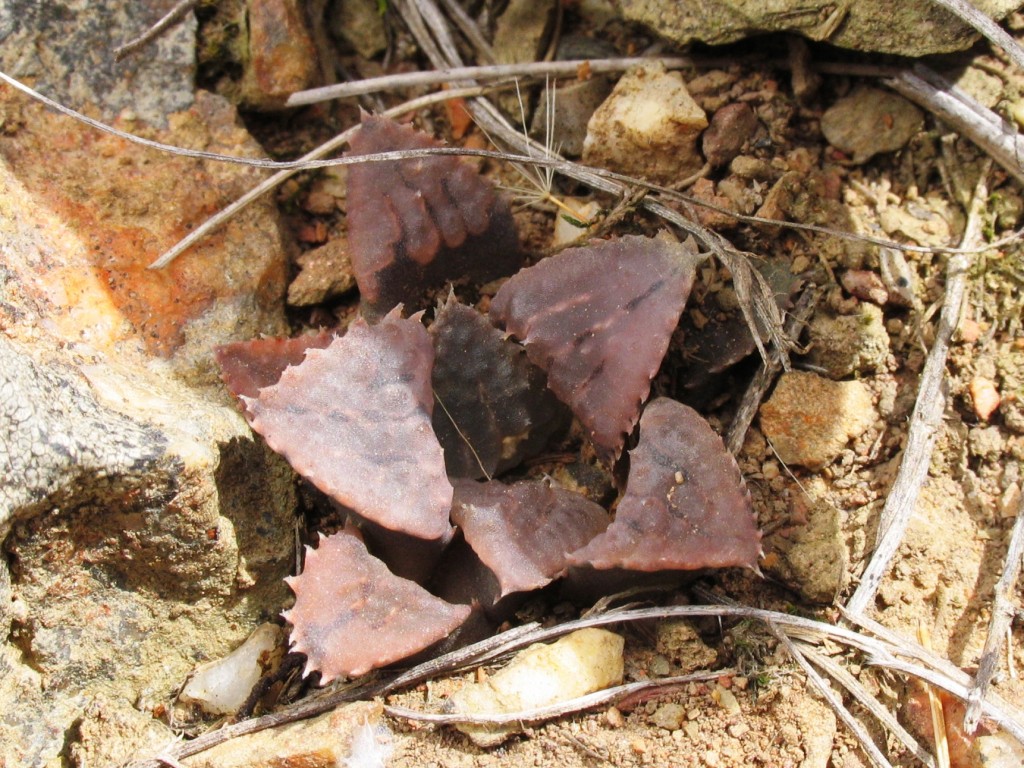
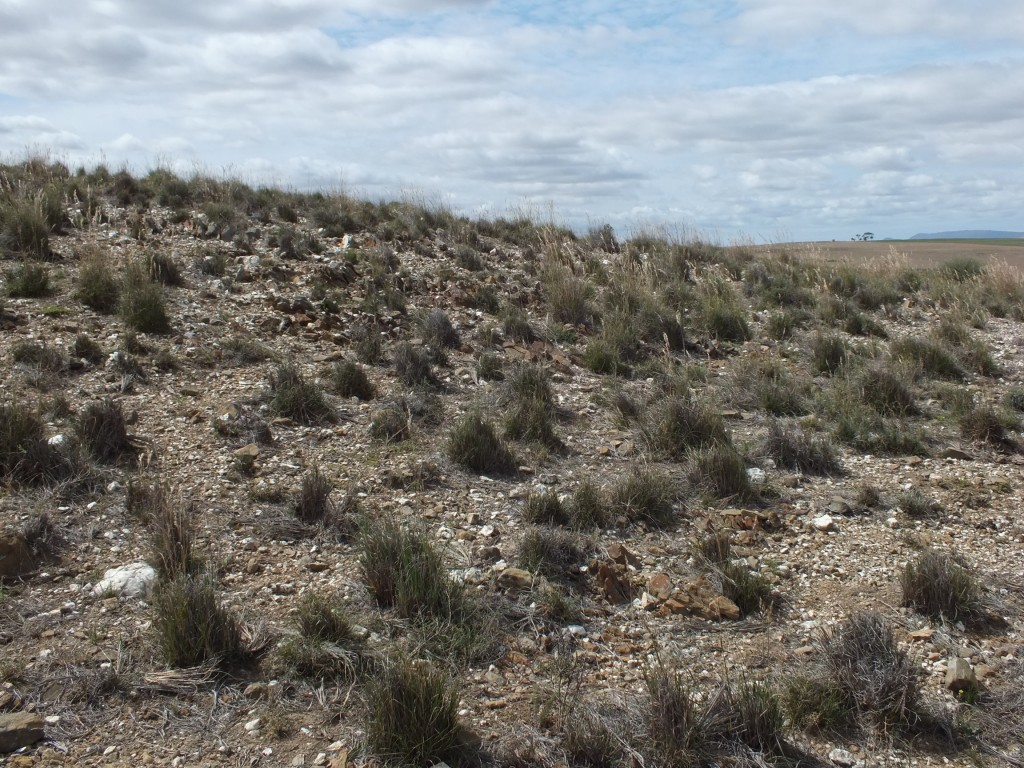
24. MBB6536 H. mutica Witklipkop (figs 24)
This is not a robust population in shale and also marginal to quartz.
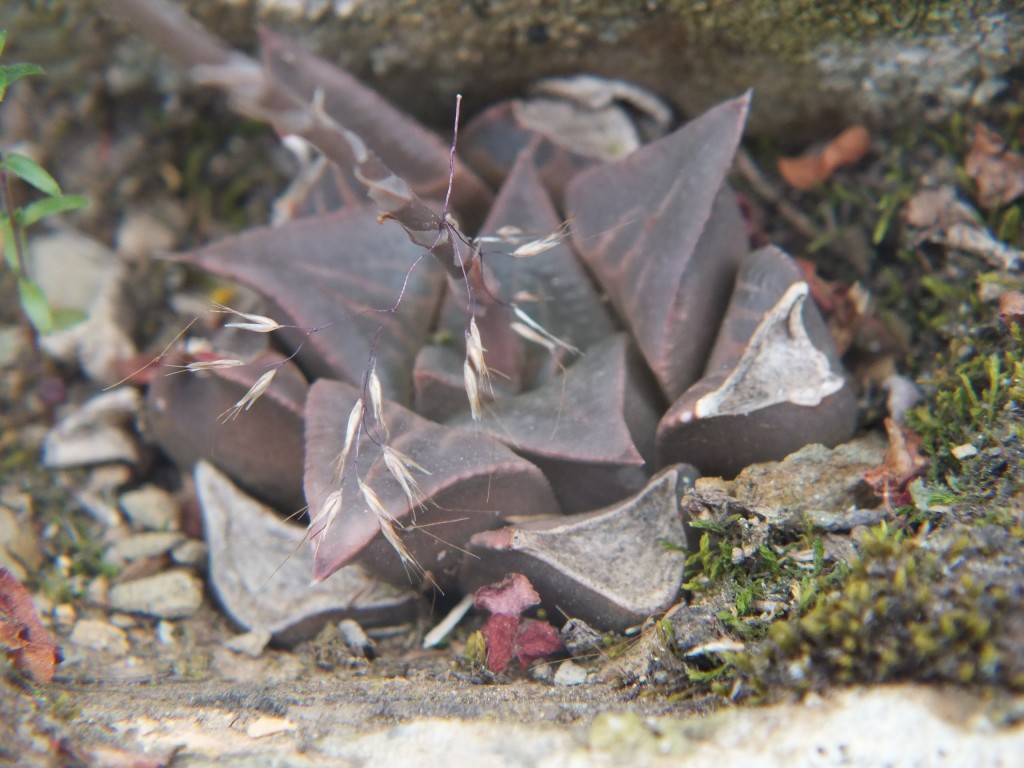

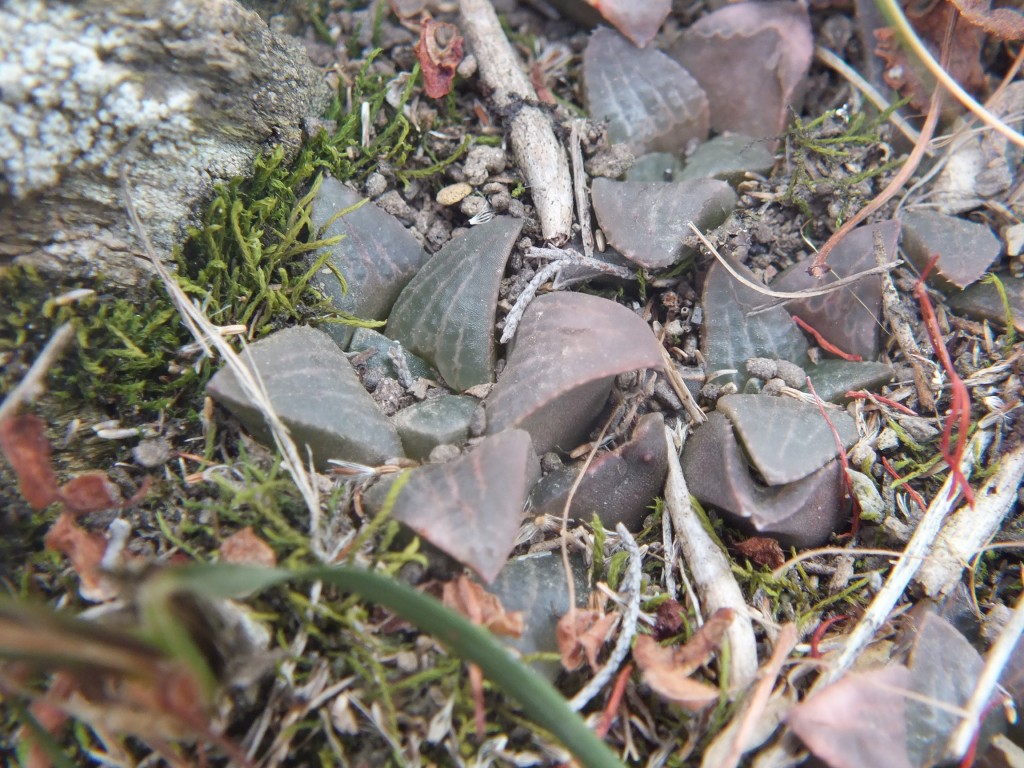
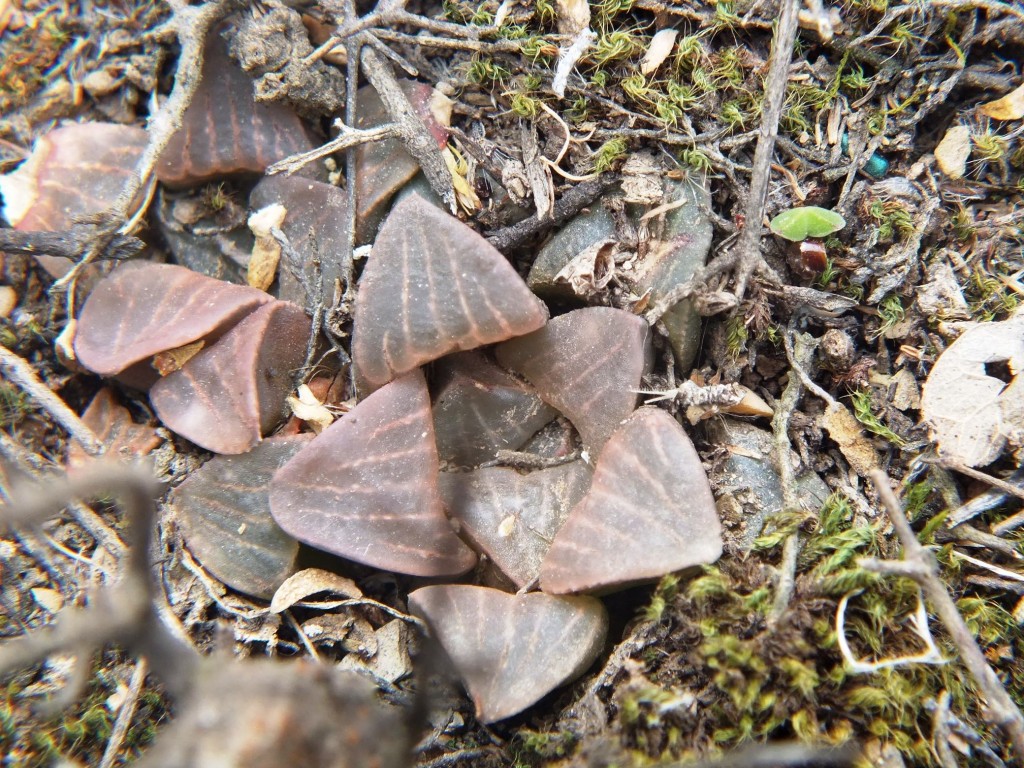
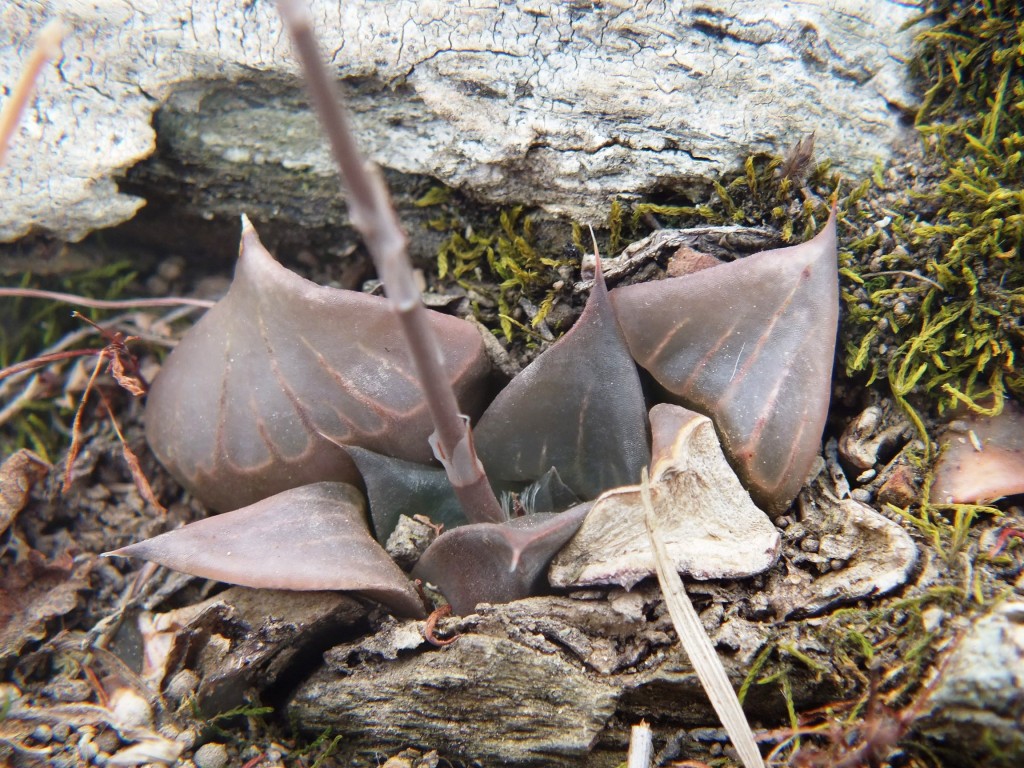

25. MBB7937 H. mutica Platkop, S Napky (figs 25)
The substrate here seems to be silcrete but there is no underlying kaolinite and the area is cultivated, which suggests shale. So that is a bit of an unknown.


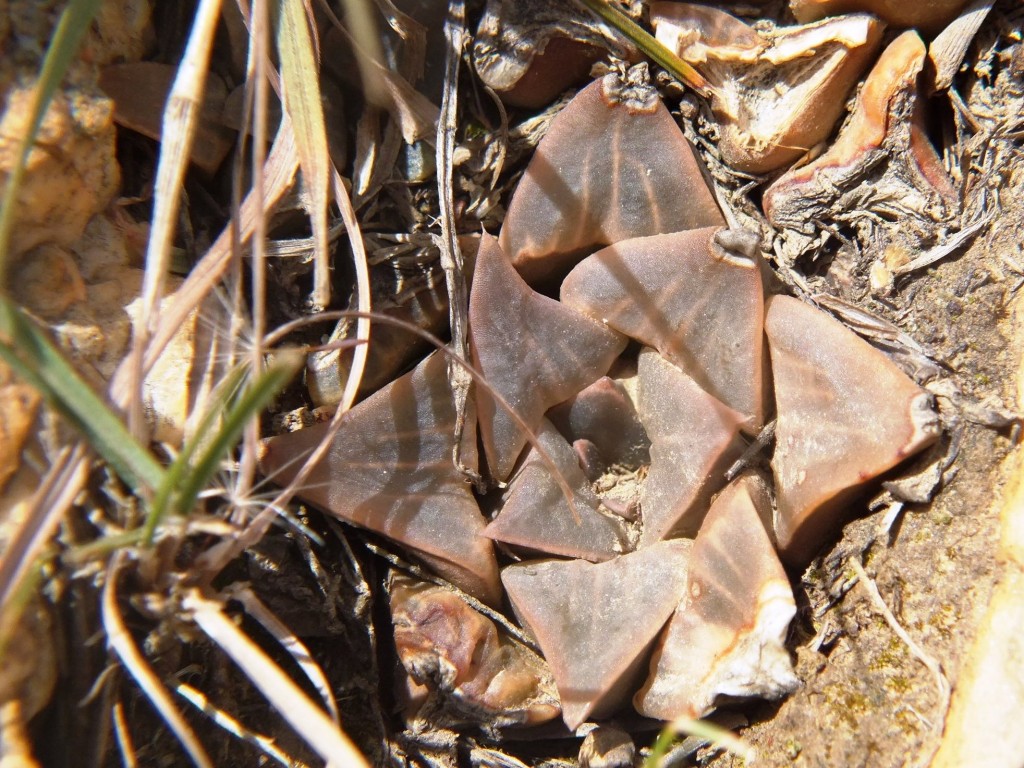
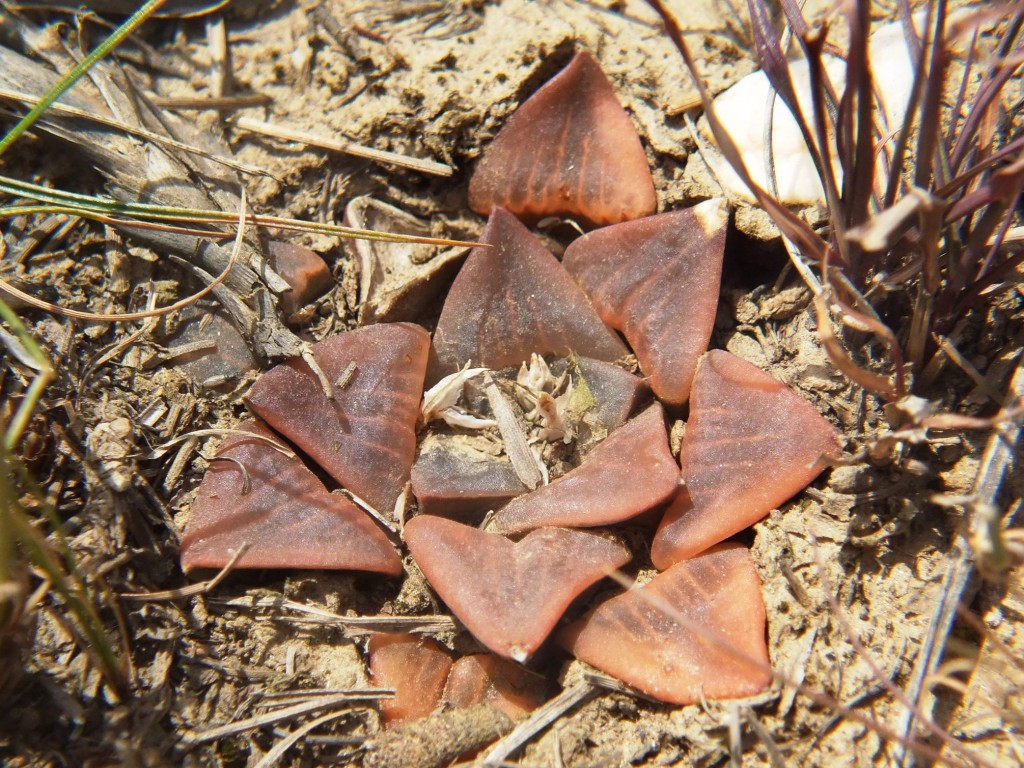
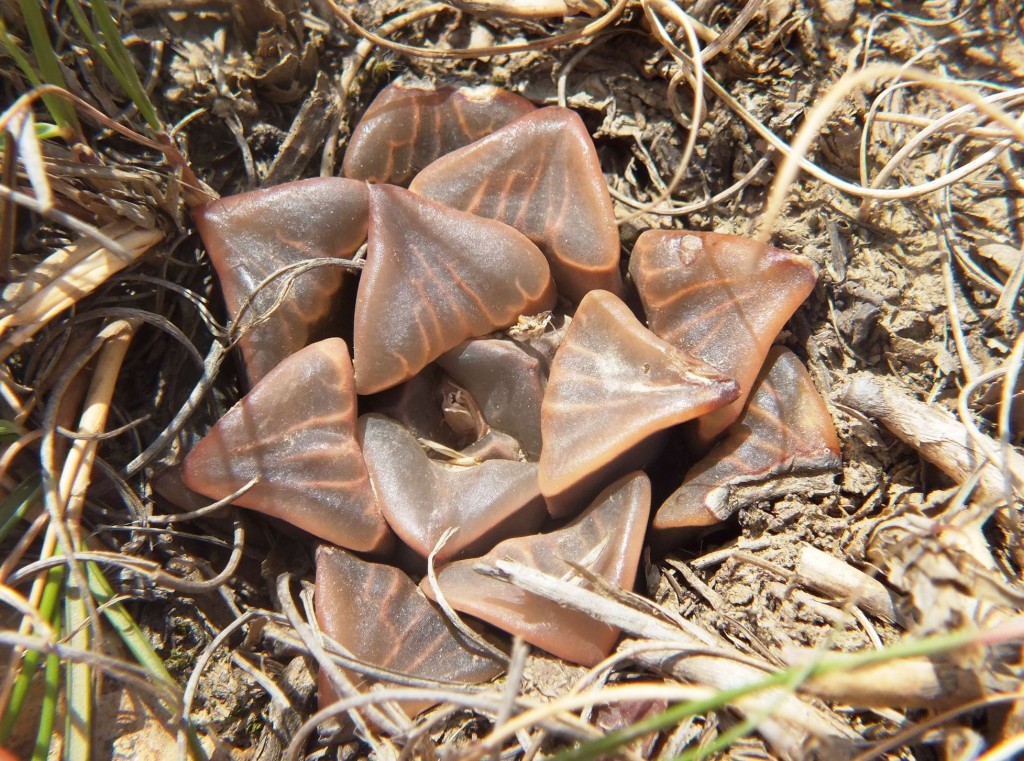

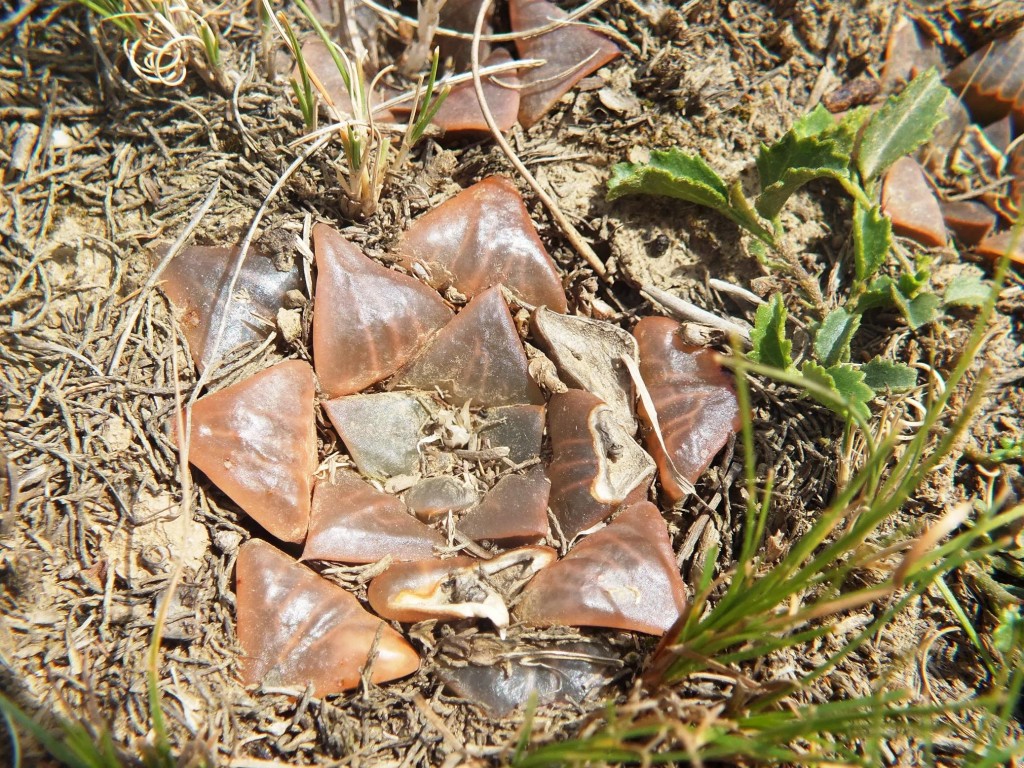
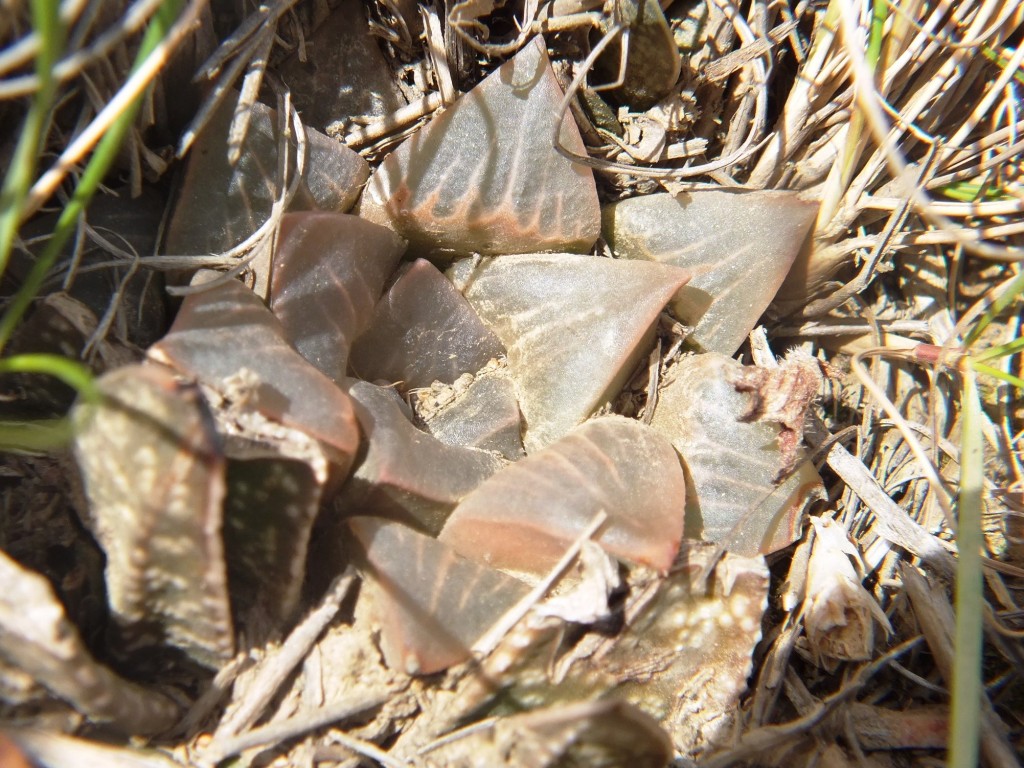
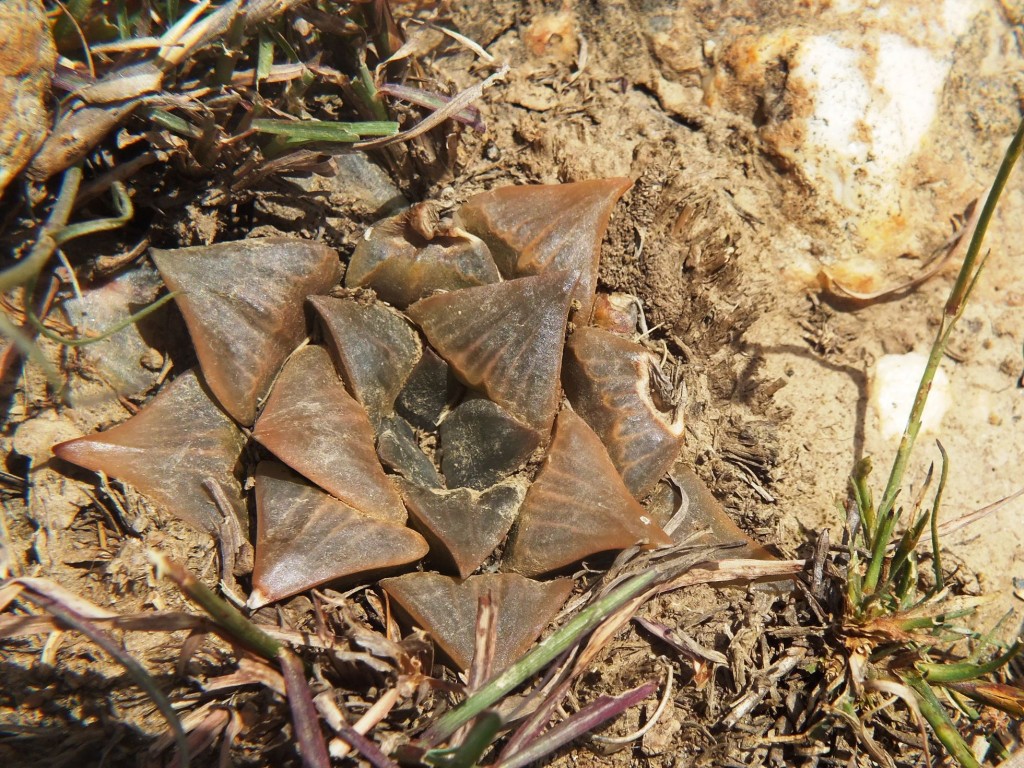


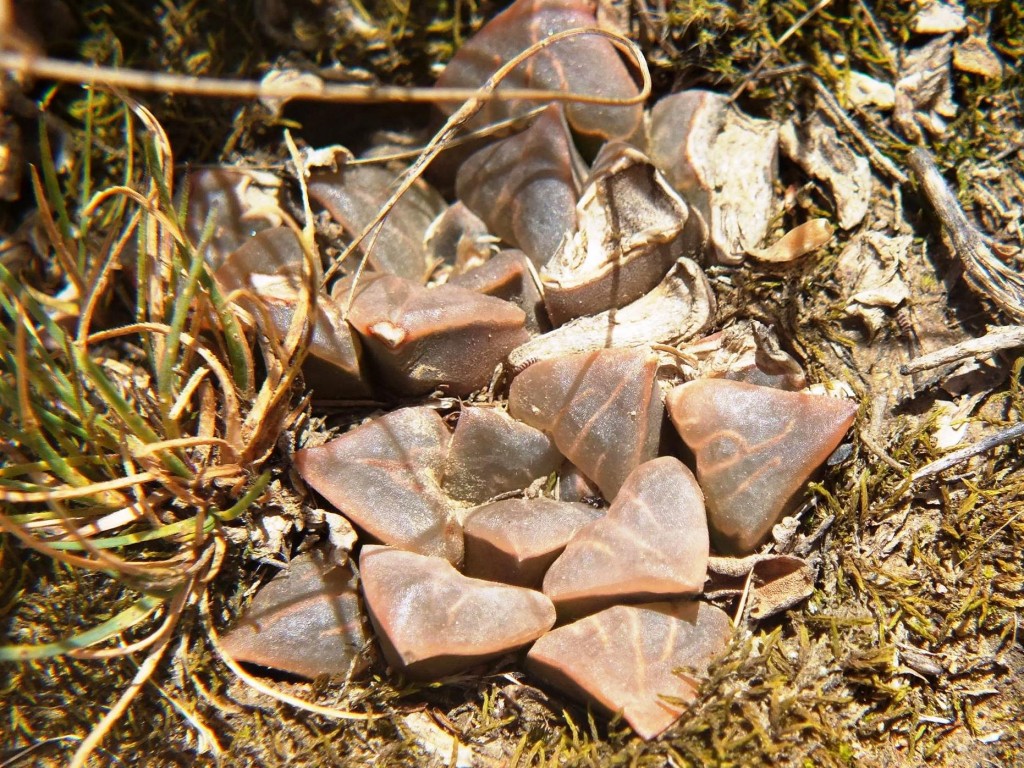
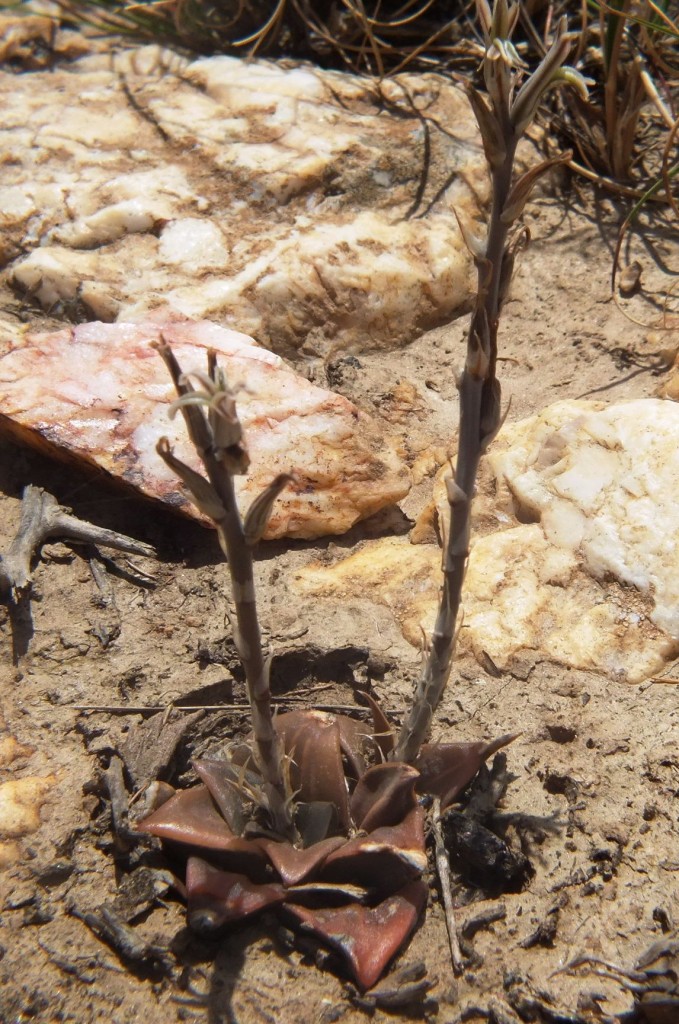
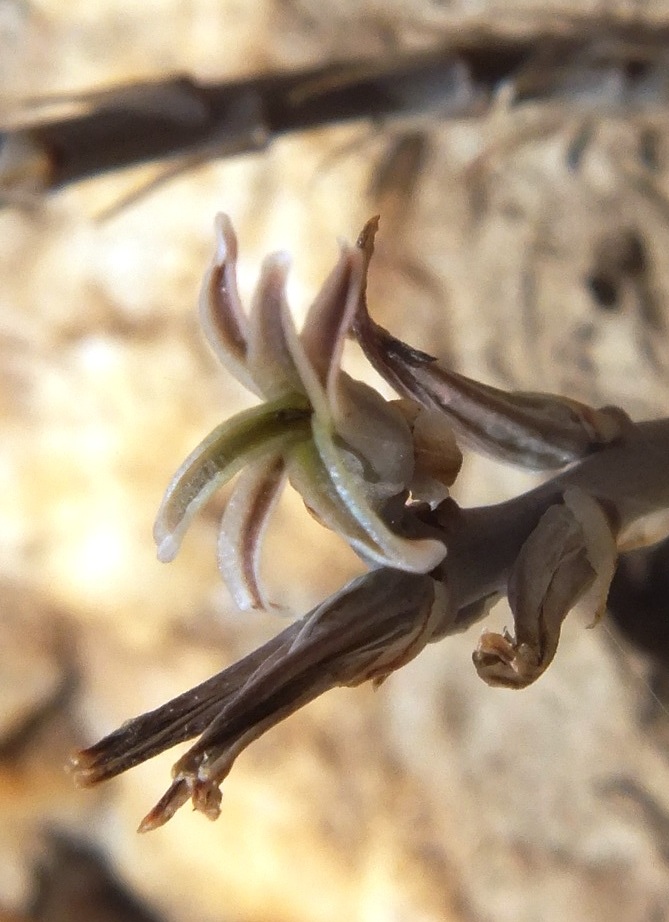


26. ADH2729 H. mutica Ouplaas, DeHoop (figs 26)
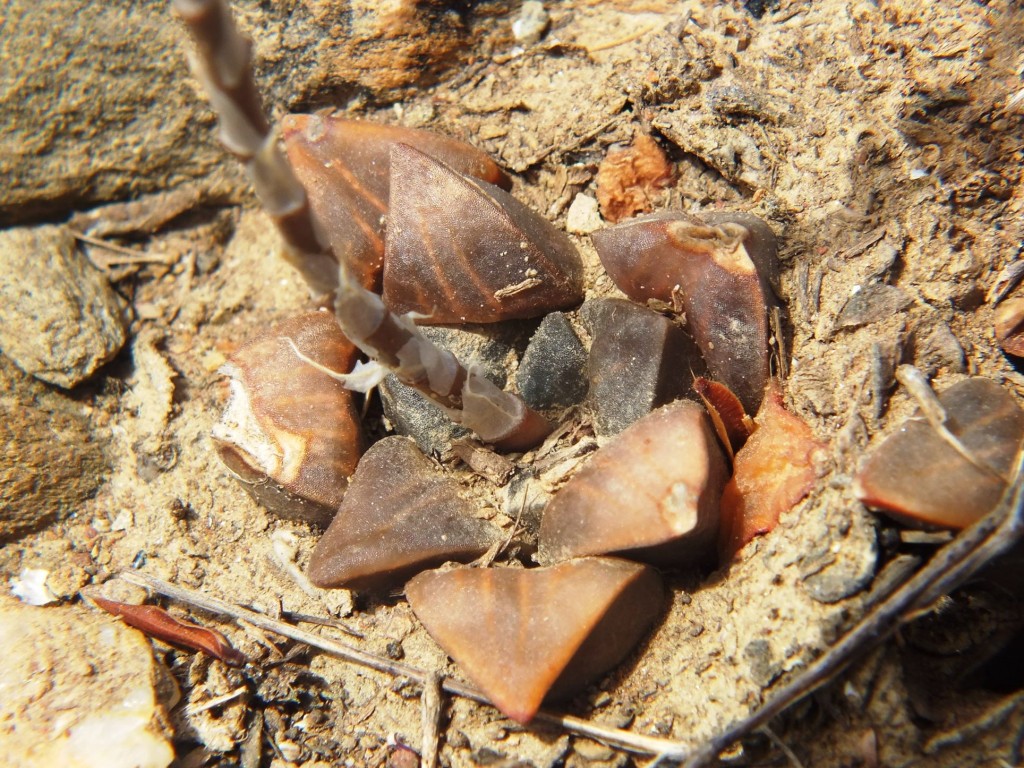
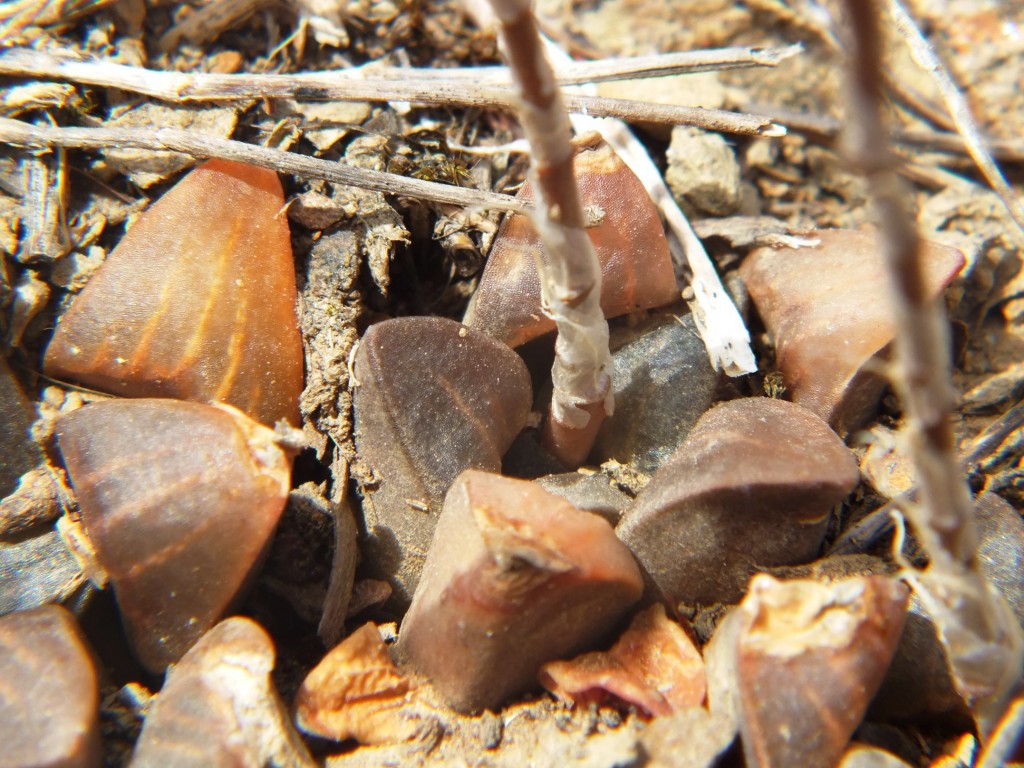
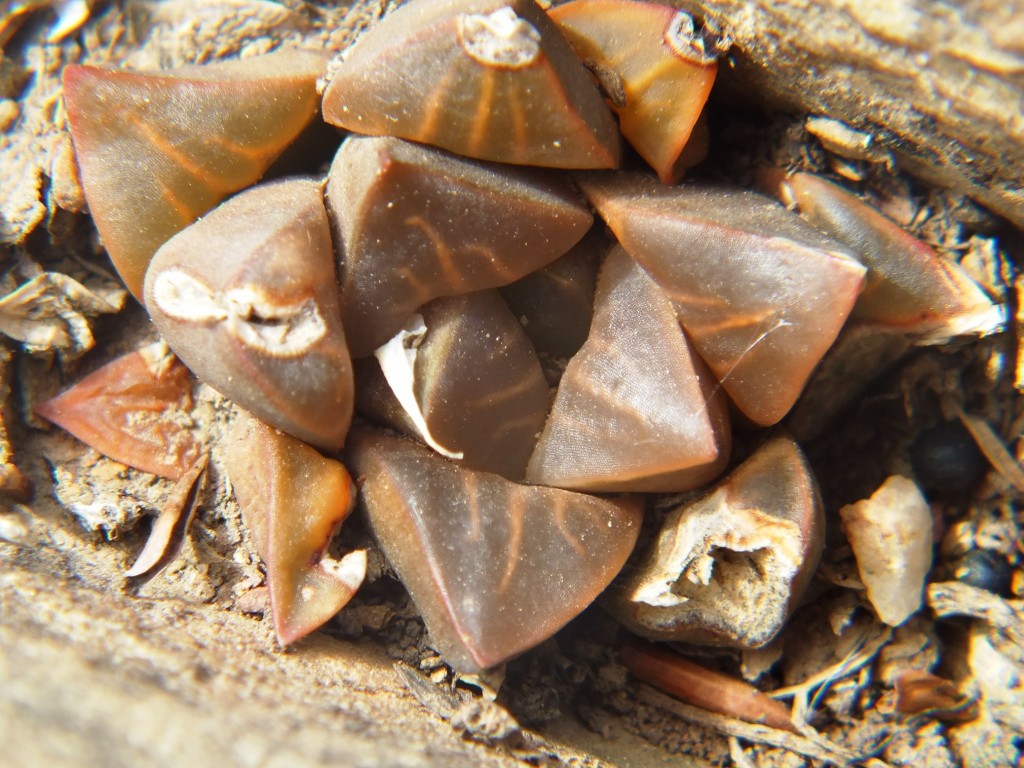
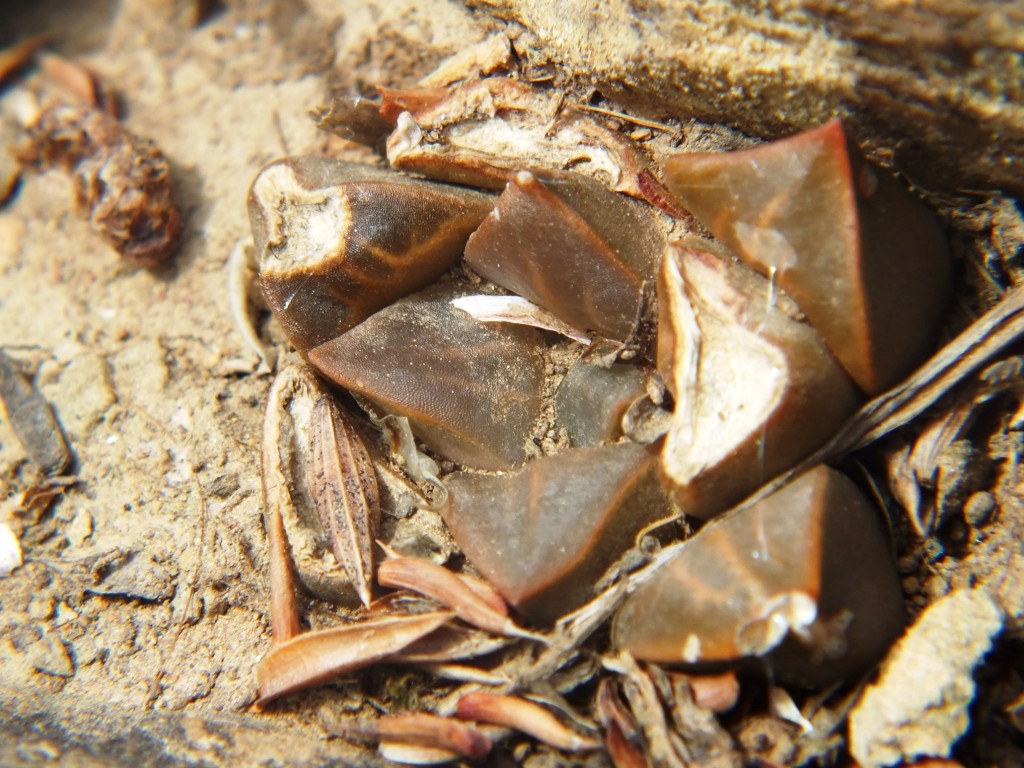
27. MBB7934 H. mutica Wolwefontein (figs 27)
In early 1970 I took Peter Brandham and David Cutler of Kew to look at Haworthia in the field. In fig.27.12 the view is southward to Kathoek and the cottage in the foreground was occupied. It must have been abandoned soon after and the access road obscured. The result was that the place was later difficult to find, but the plants are still there. It is not far from the problematic Die Kop population to come.
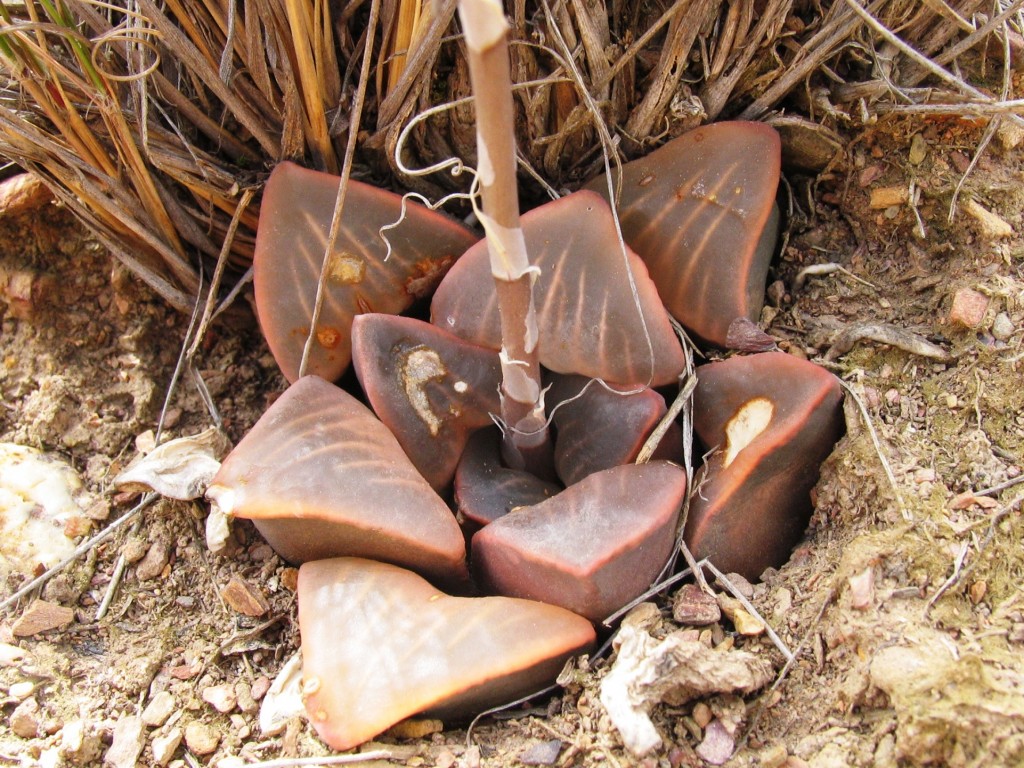

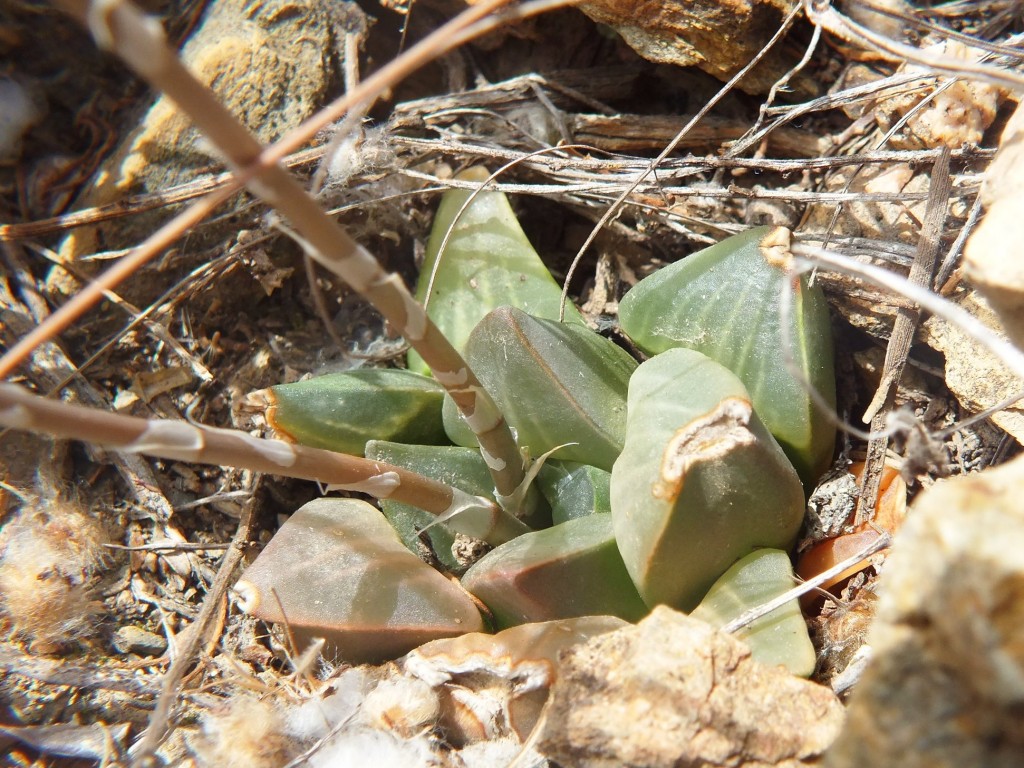
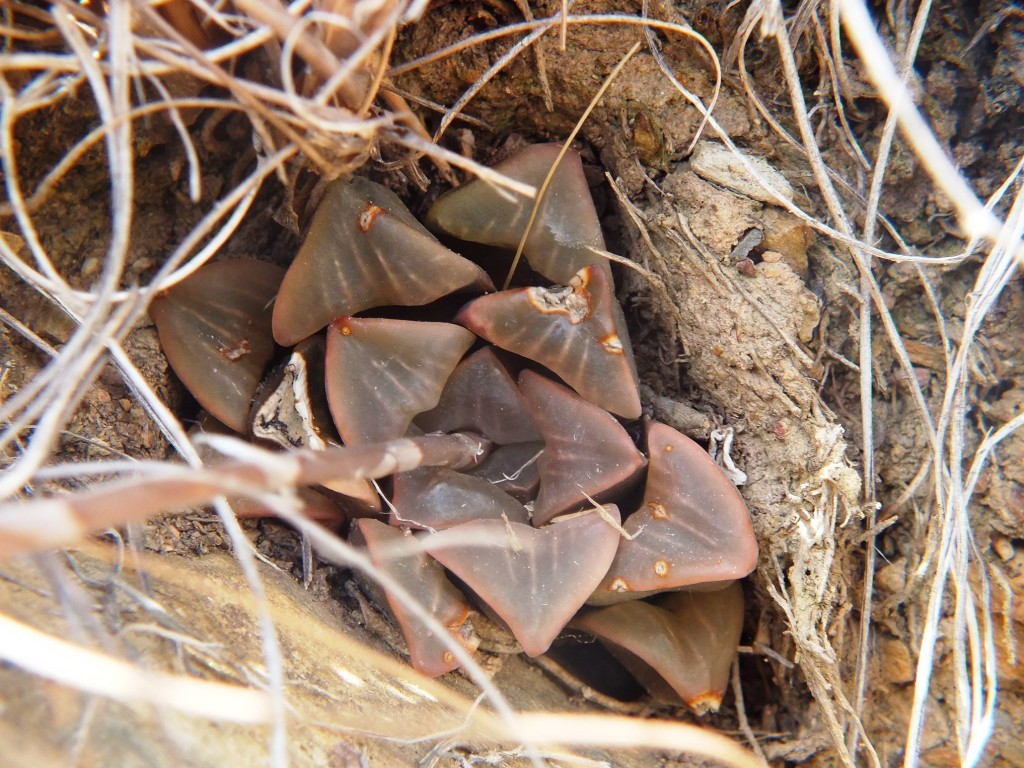
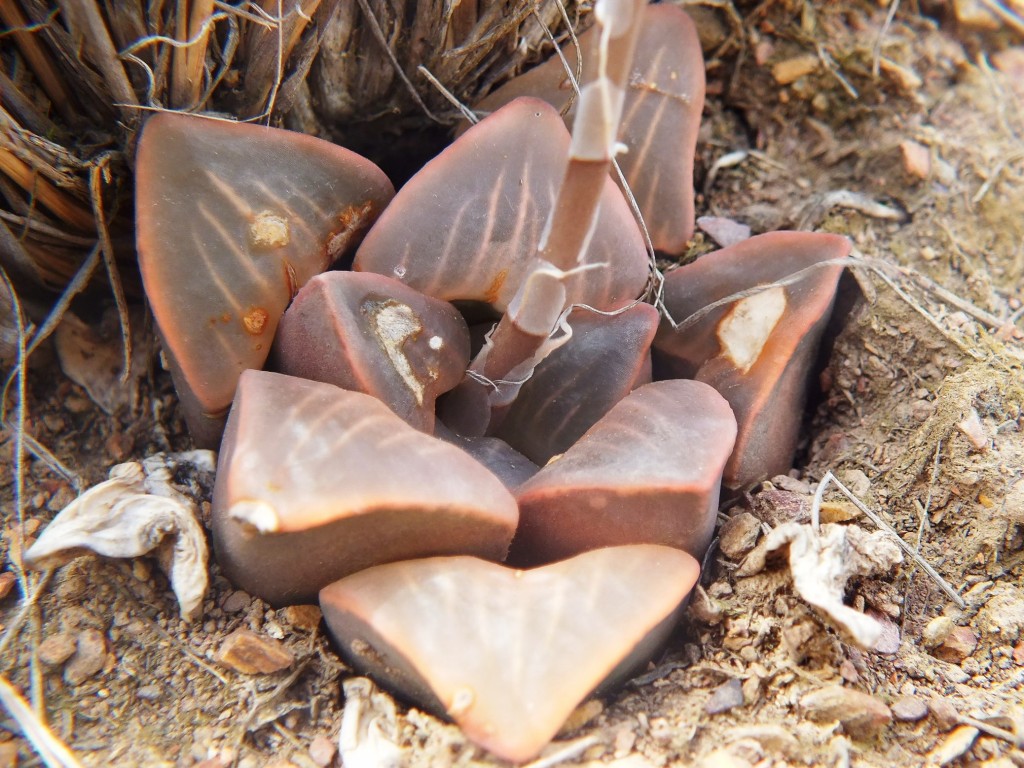
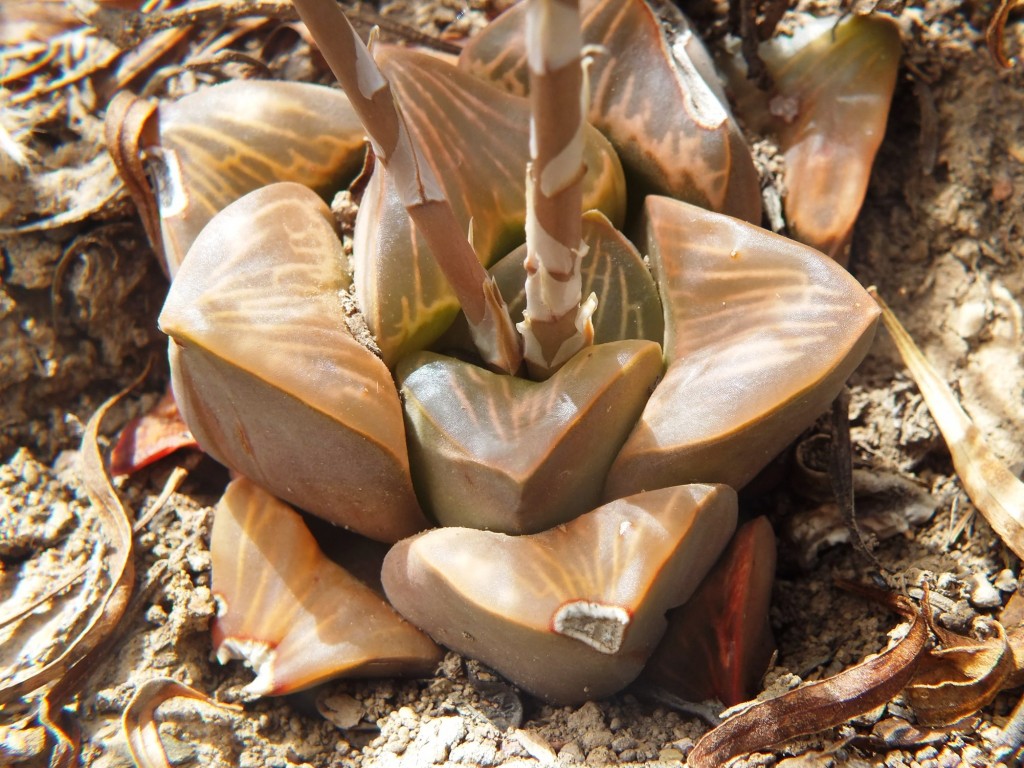
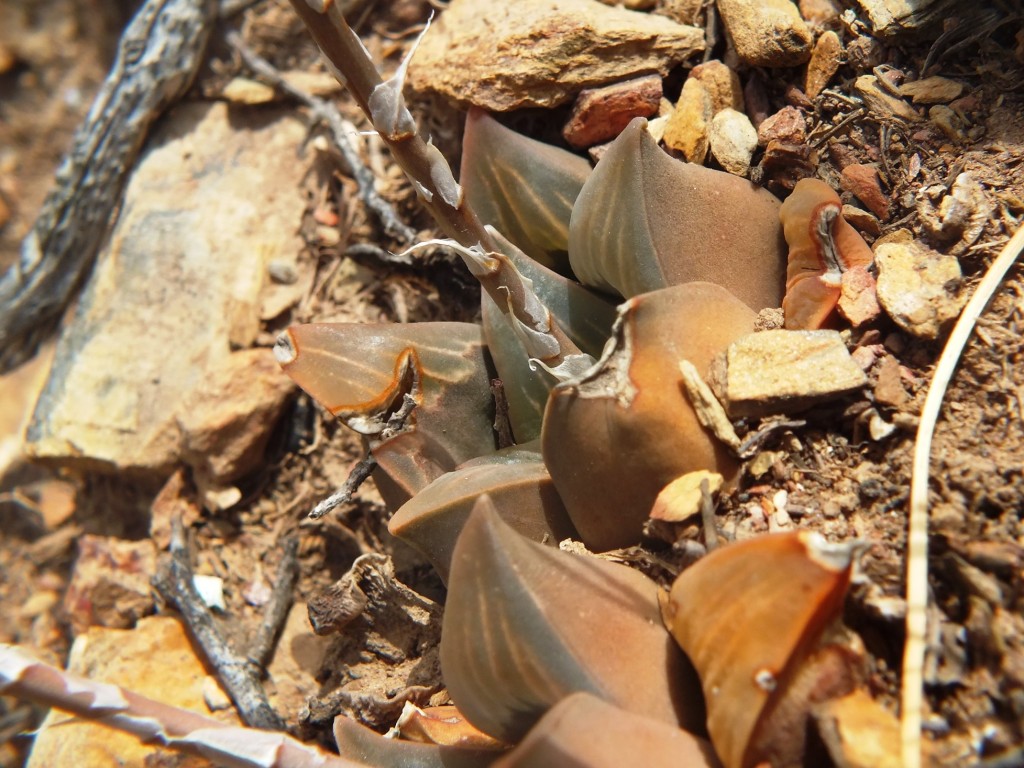
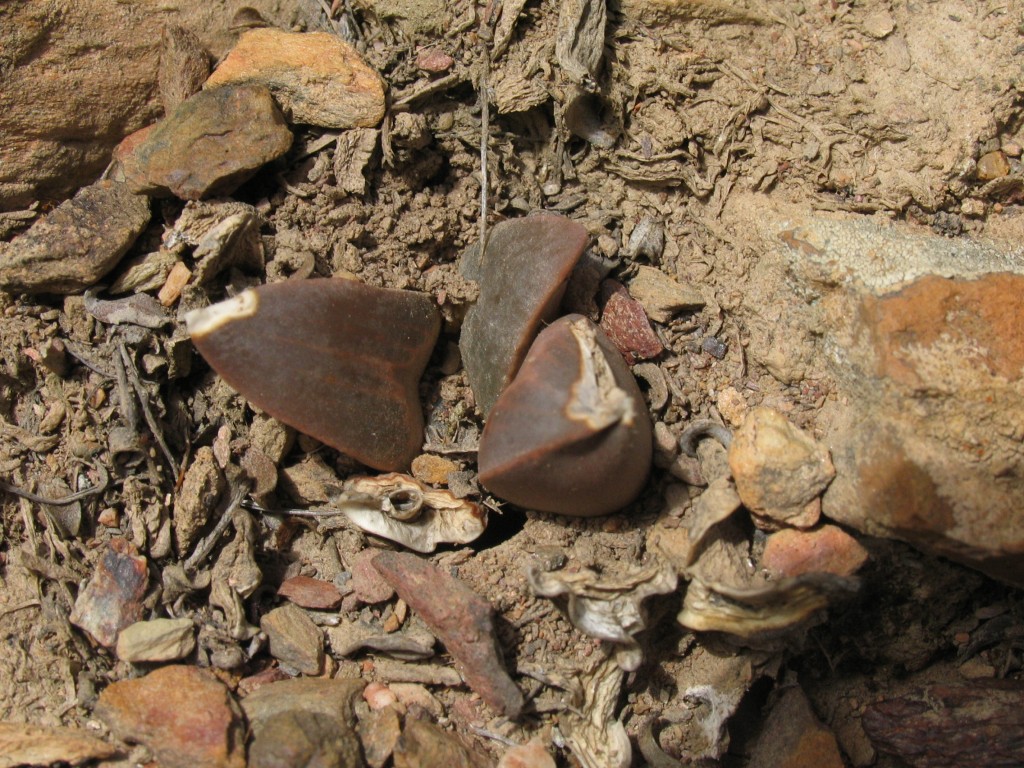
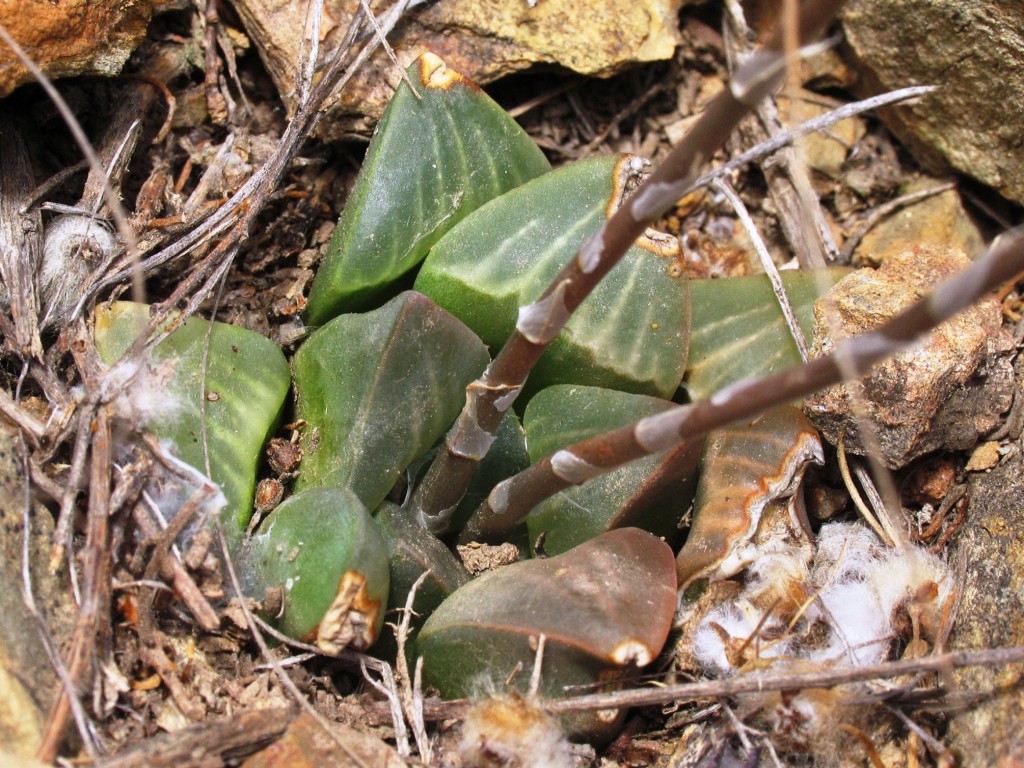

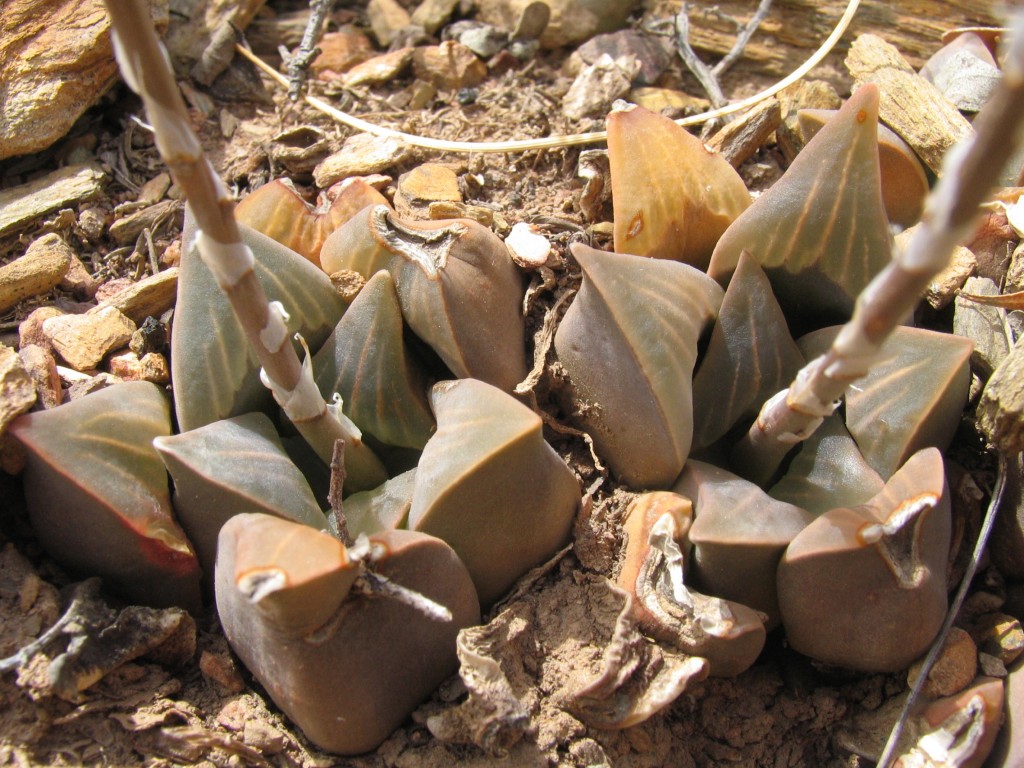
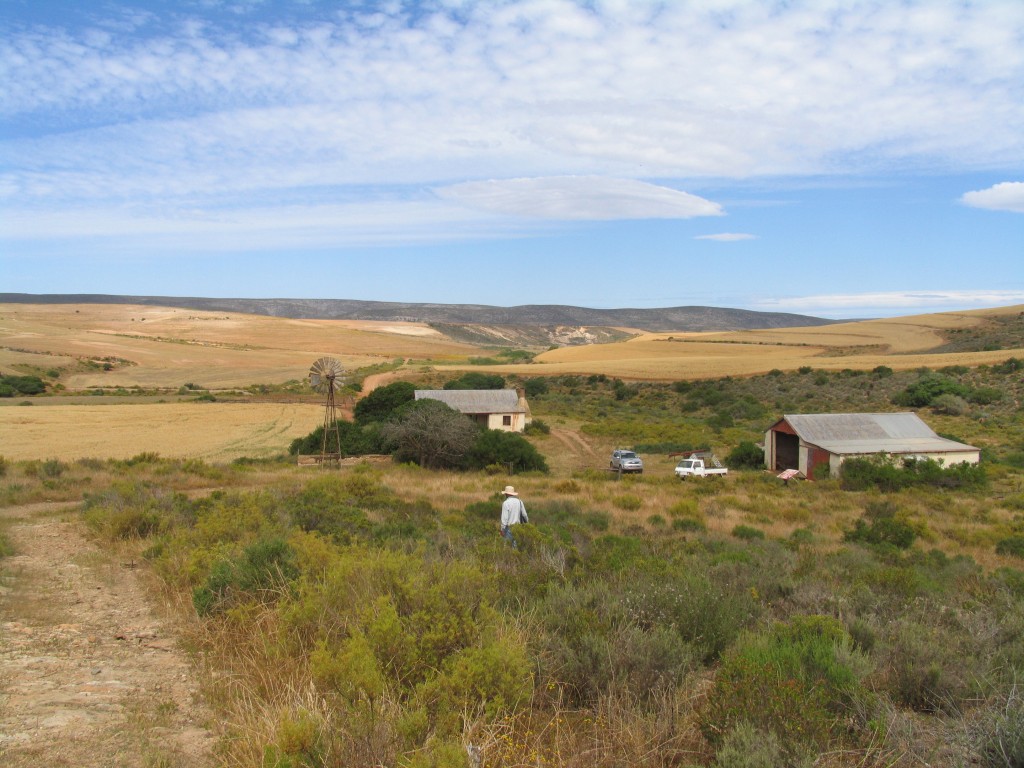
28. JDV85/17 H. mutica Haarwegskloof (figs 28)
This record goes back to 1985. We did not have landowner permission here as we did not know exactly where to go. The area was also unfenced. So we were confronted by the farm manager and never took as many pictures nor explored more widely. It certainly would have been problematic had we not simply being photographing. Anybody else may have ended up at the police station. It is a case of farm land too hilly and rocky to cultivate and bought by apparently wealthy city people with an eye to conservation. This may result in the place being game-fenced, a lodge built for the up-market; and made perhaps even less accessible.


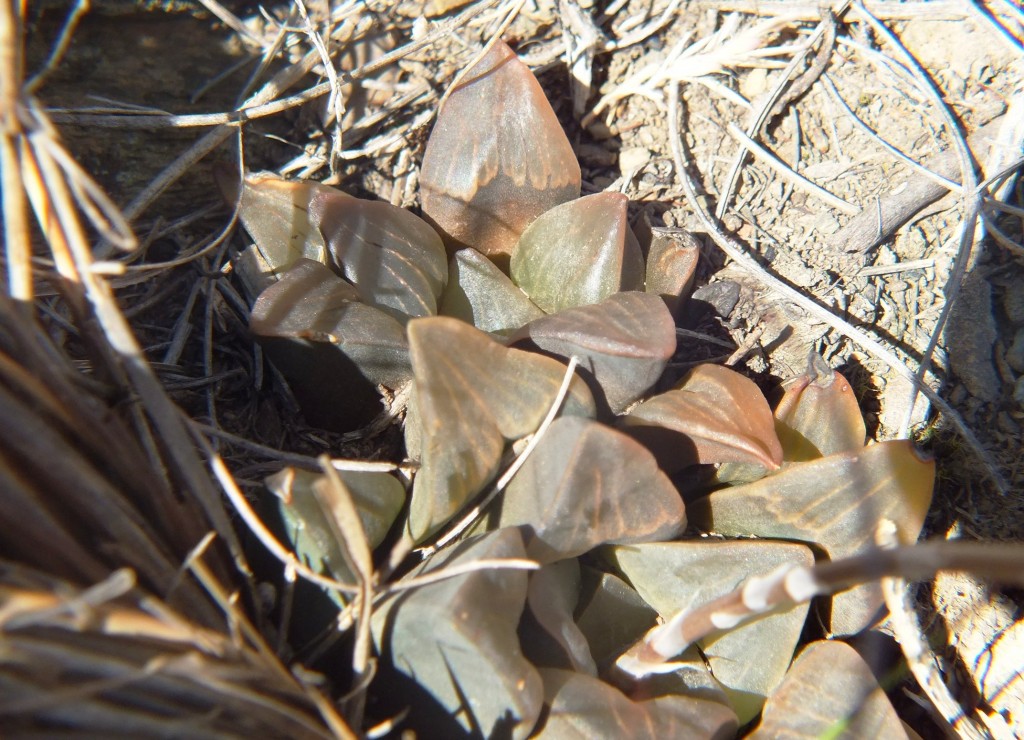
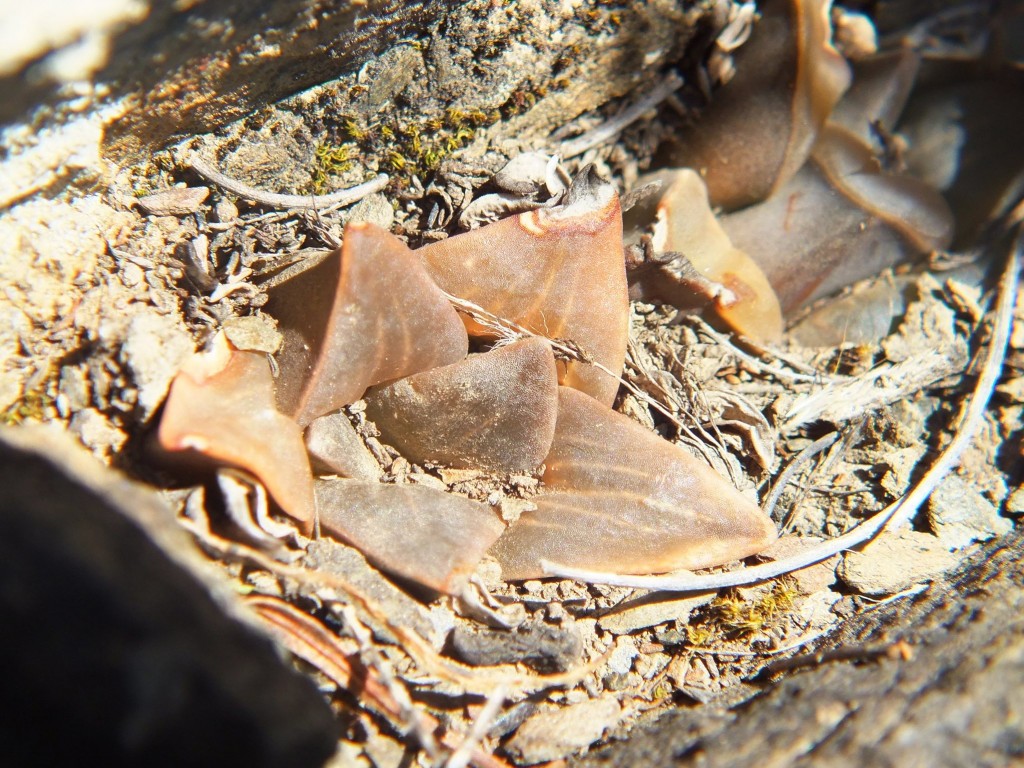
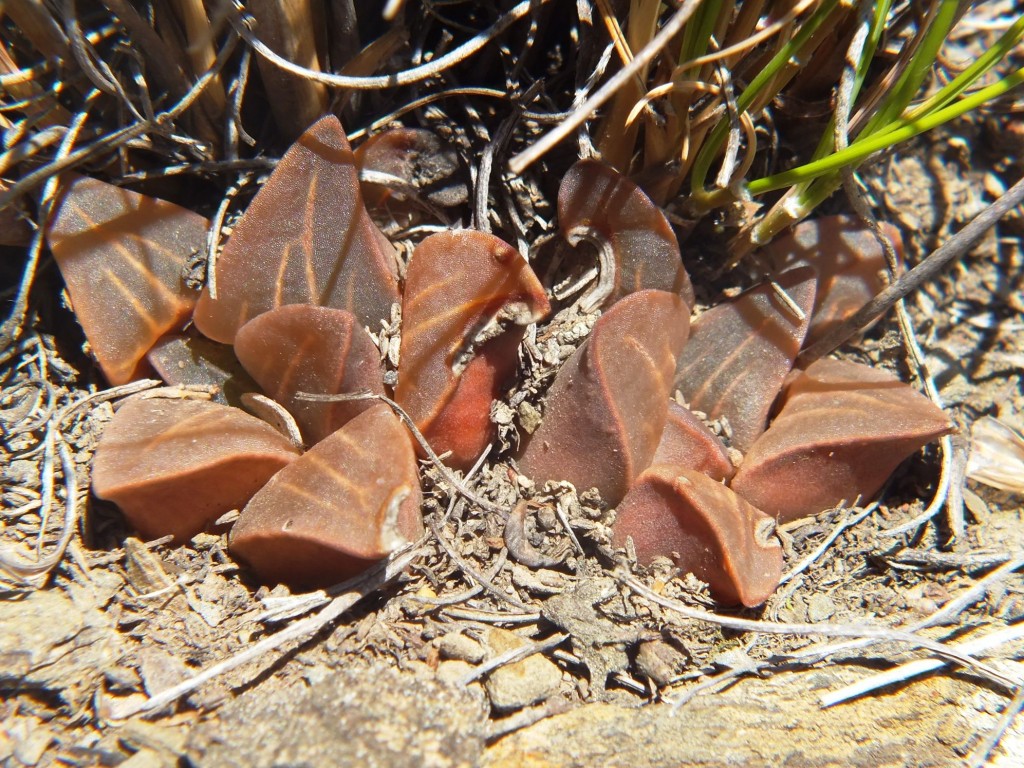
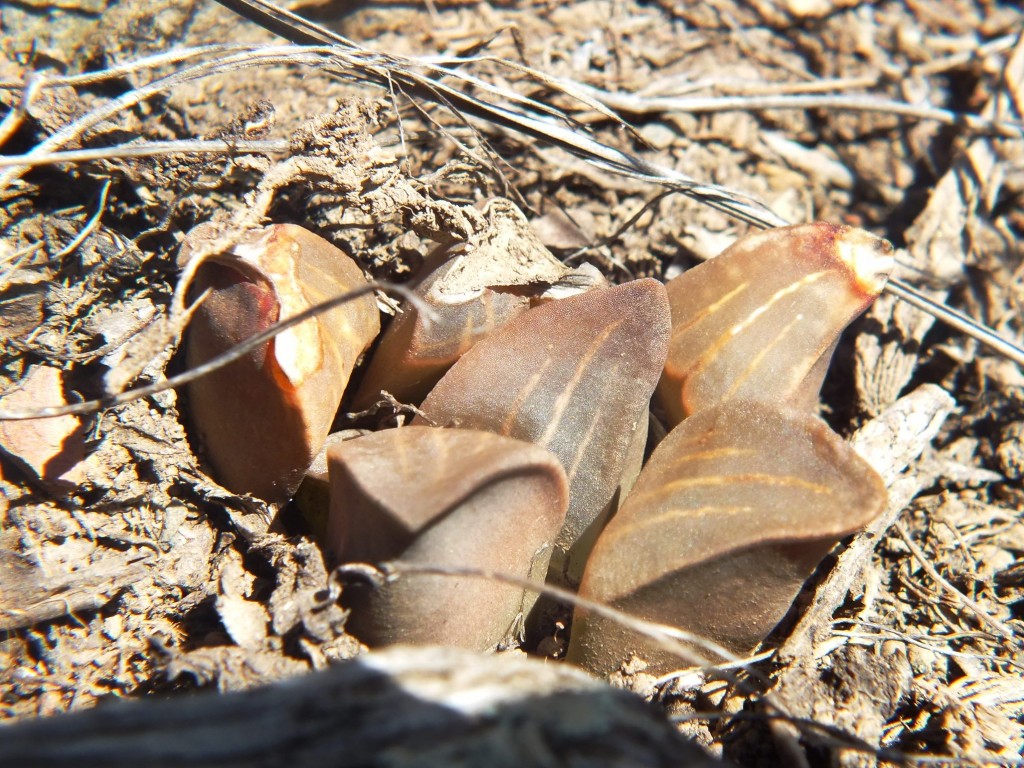
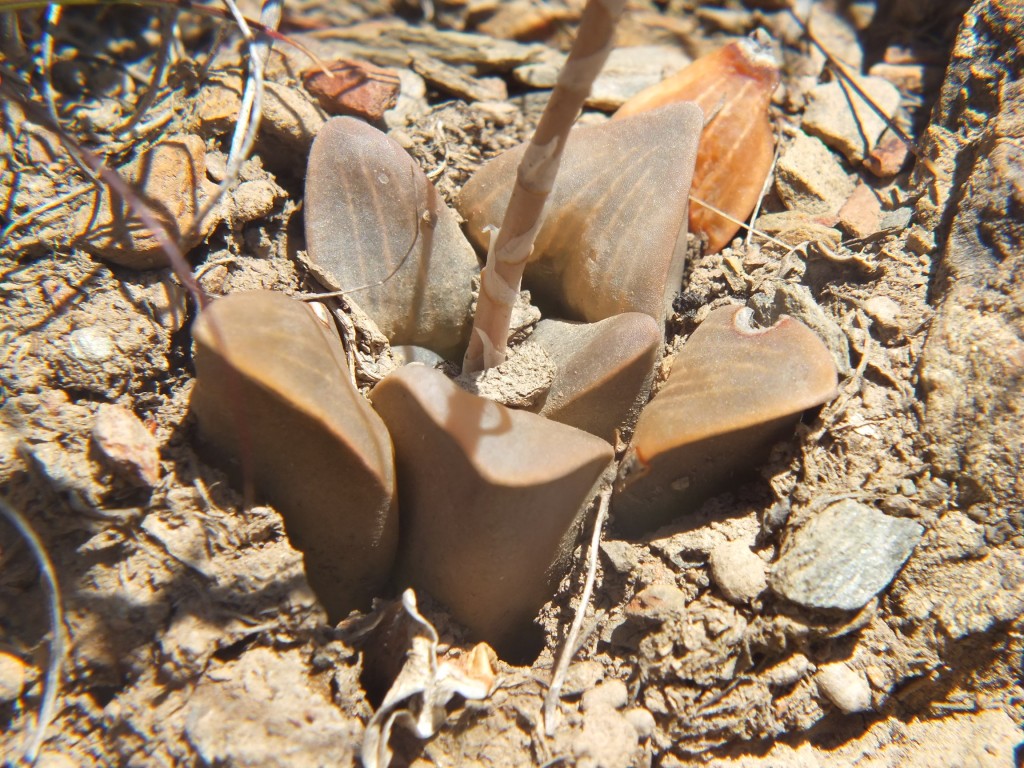
29. MBB6641 H. mutica Hasiesdrift (figs 29 JDV97/26)
This was one of my early encounters in 1969 with Haworthia, where I fortuitously stopped at a river crossing, lifted a branch of a shrublet and saw a magnificent plant just like that illustrated and serving as the type for the name H. mutica (see fig.29.1for an example)). A year later a new road was built and if there had been a population there it was no more. In 1996 when I was writing Haworthia Revisited, I went back there and after a diligent search found a very small group of plants at the base of a small plant of Aloe ferox. The two species seldom grow among each other so this really was odd. I have periodically been back to see what was happening because there were many Aloe seedlings. The very small population has waxed and waned and the mothering Aloe seedling has died. There has been a small spread of plants to occupy an area of about 2 square meters. I know here are more plants about 2km away but have not explored the wider area more thoroughly.

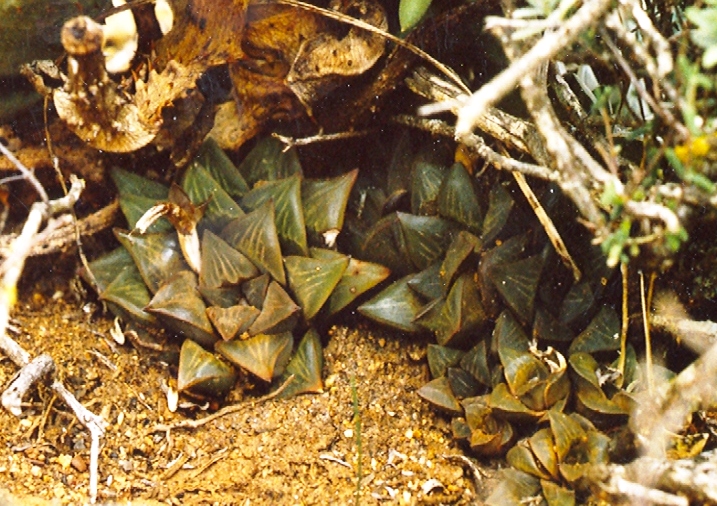
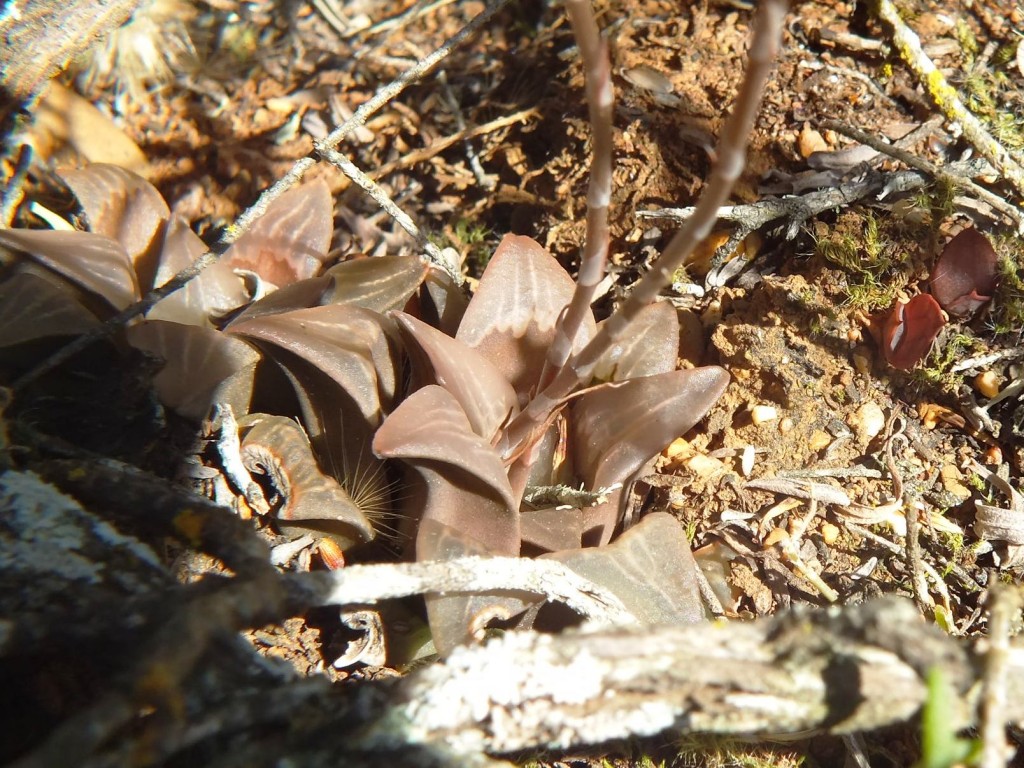
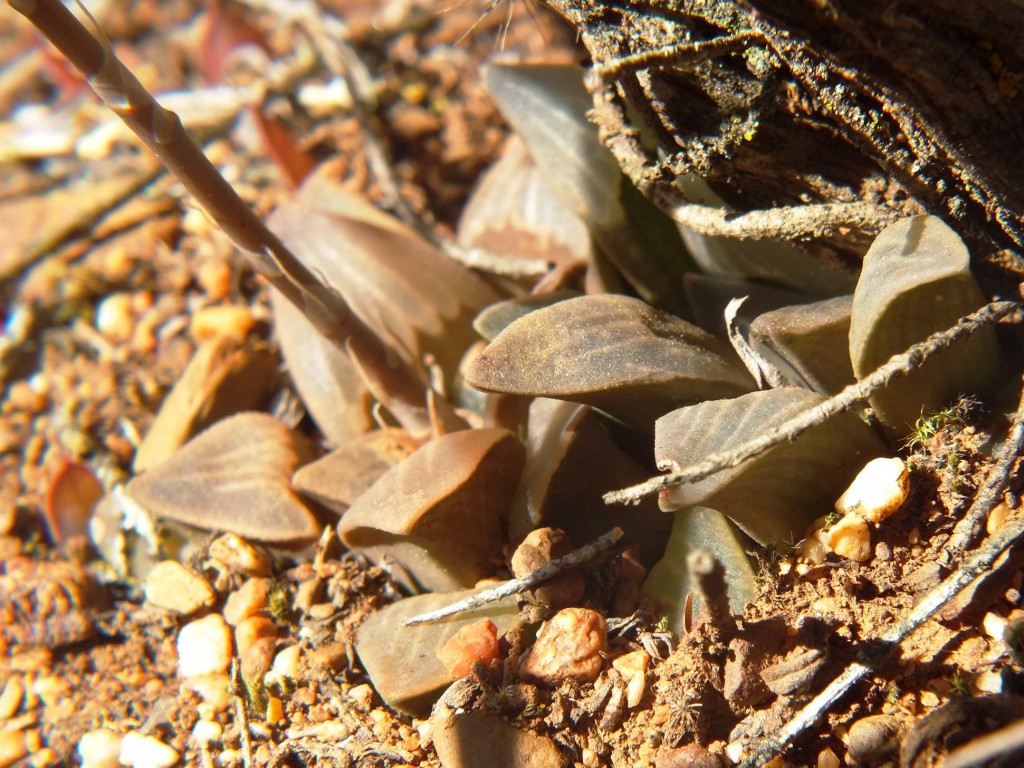
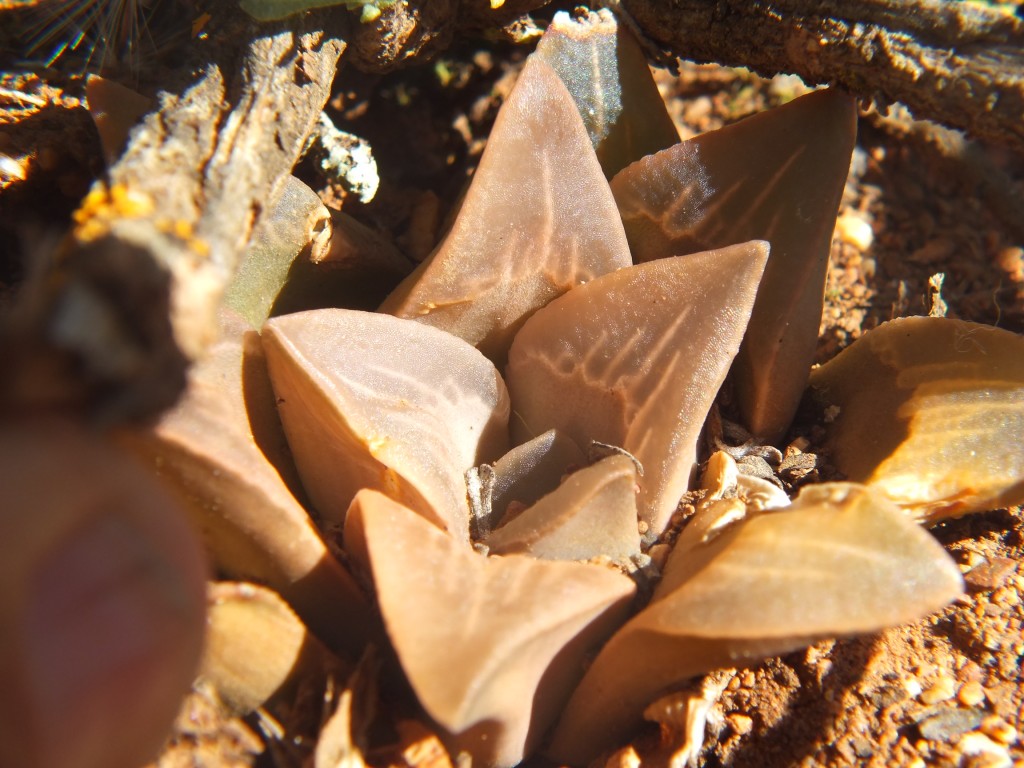
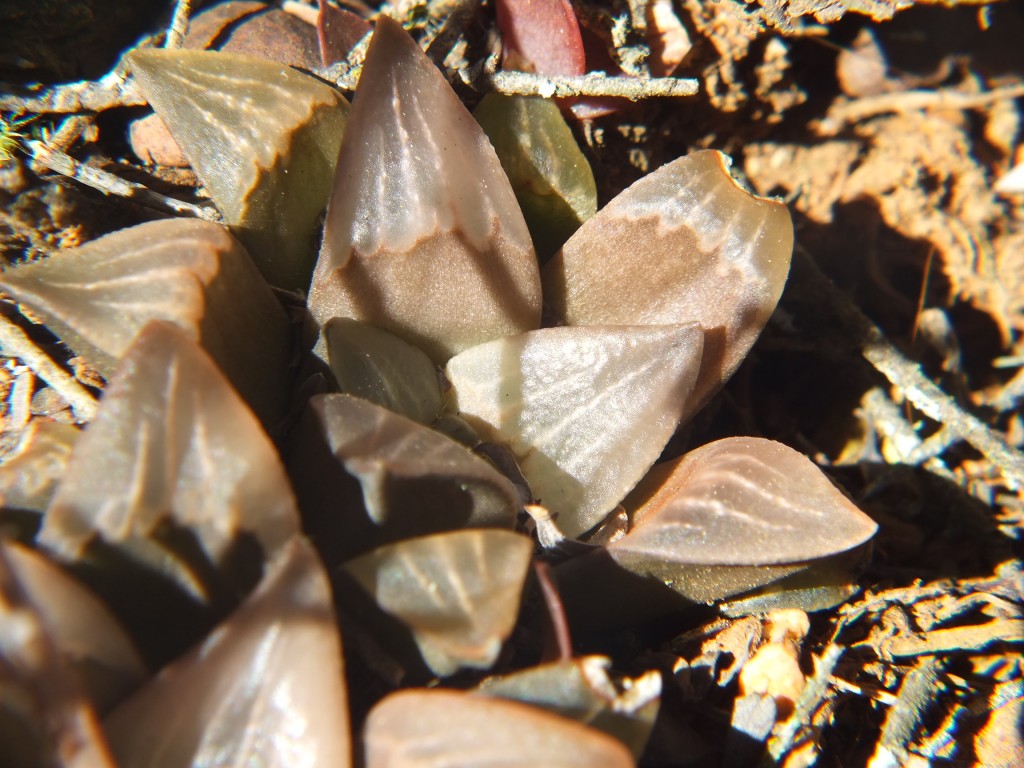
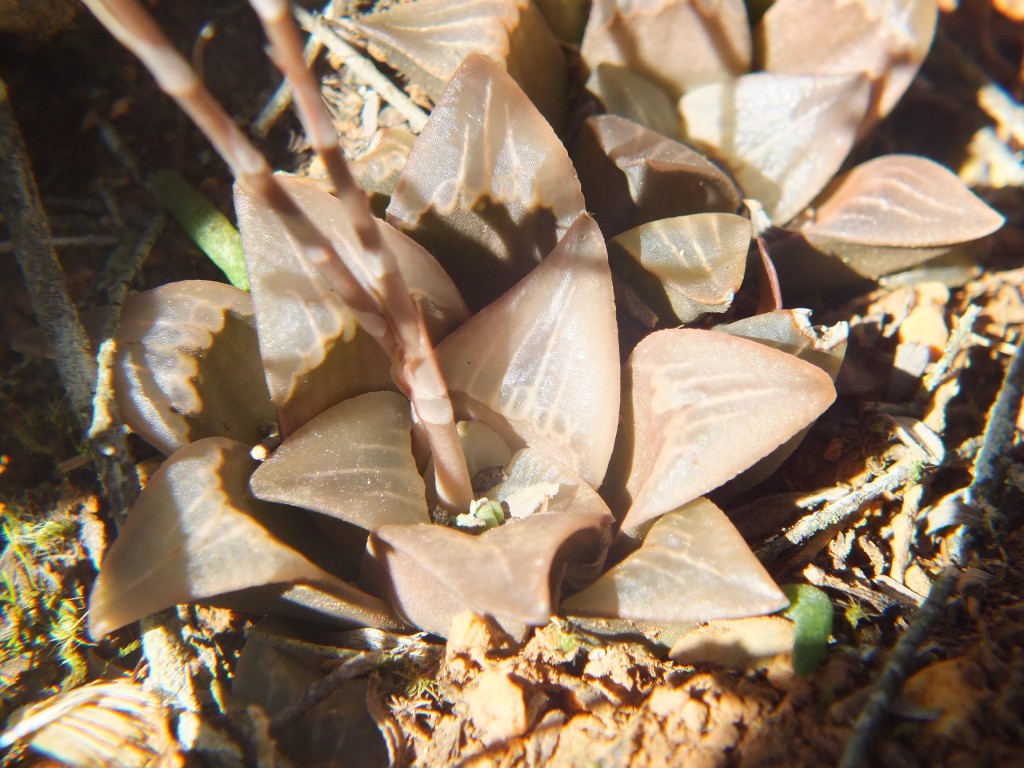
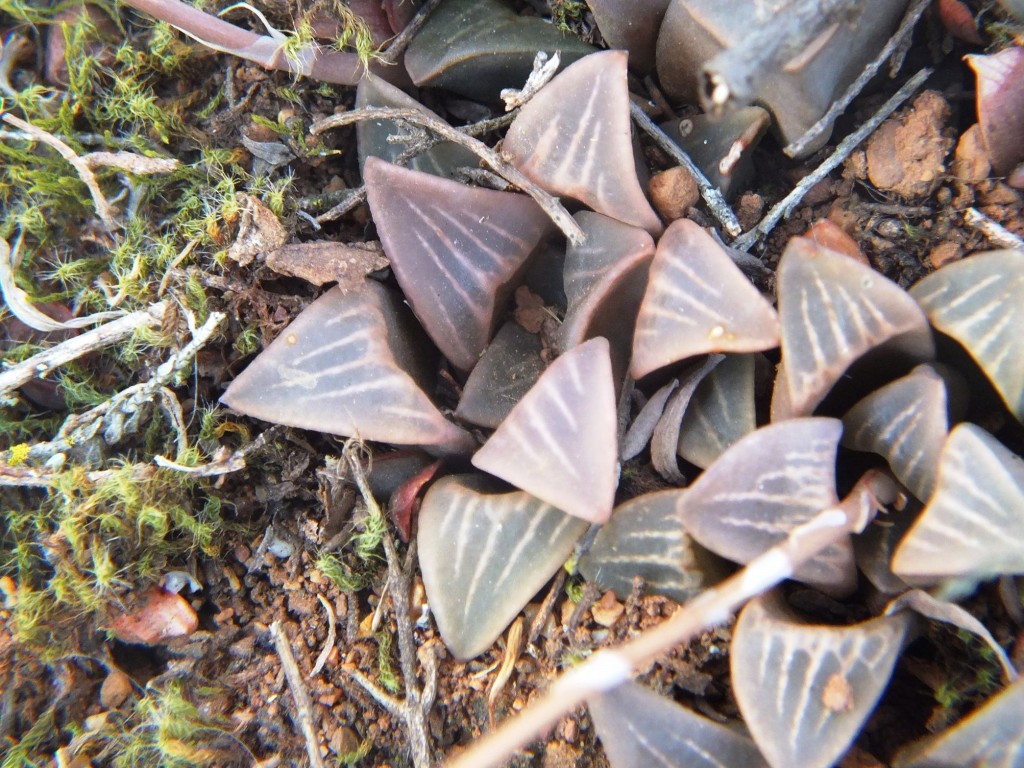
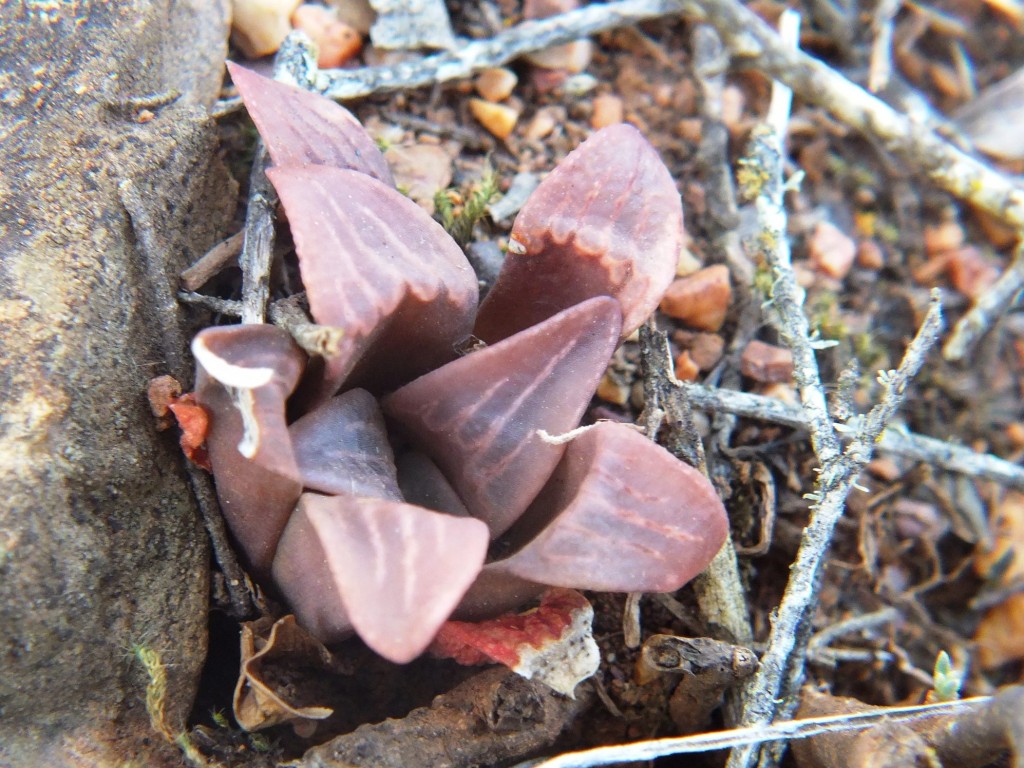
30 MBB7500 H.muticaXmirabilis Die Kop (figs 30)
So we come to the problem child that has acquired the species Latin binomial H. hammeri. I think this is unfortunate as Steven Hammer deserves a great deal better than this. It should not be necessary to have to also manage personal issues in an inquiry into what the name means or if it is a valid statement in science. This population is one I found when I was exploring widely for an understanding of H. mirabilis. It was not growing in conventional habitat and populations occur at many places in the wider vicinity. So I do not comprehend at all why this single population with absolutely nothing to support its designation as a species in respect of anything but the fact that the plants look different from something else. The plants are also very variable as the set of pictures should show, and the plant suggested by the picture accompanying the description is not typical. The proximity of H. mutica and the nuances of these plants with this species and also with that of other nearby populations of H. mirabilis, suggest to me that this population is of hybrid origin. I also use the term hybrid in the sense of genetic similarity because hybridity itself implies separate existence. My feeling is that H. mirabilis and H. retusa have separated in time from a common gene pool and that the process is not complete and nor will it be. My species definition requires that we see all these populations as one system that is spread in geographic space and is changing with time. The rate of change is a fourth dimension.
I suppose one should comment on the shiny leaf surface (fig. 30.3 especially) that is present in H. mutica, as this character is also described as a diagnostic for H. groenewaldii that is as contentious as H. hammeri.
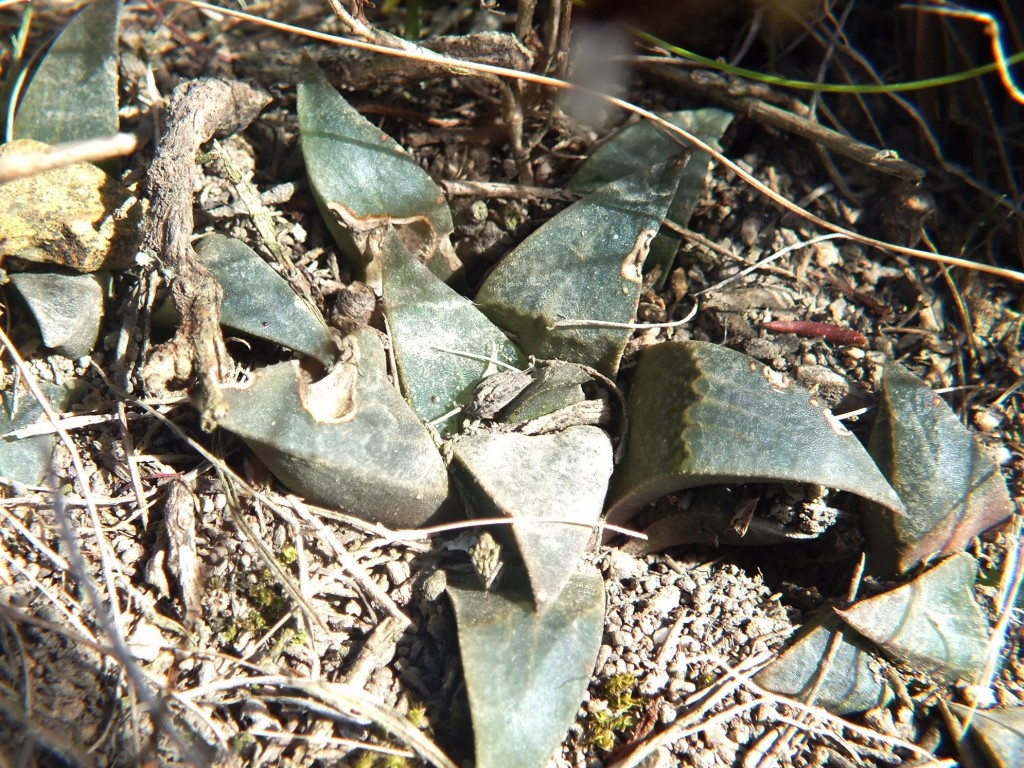
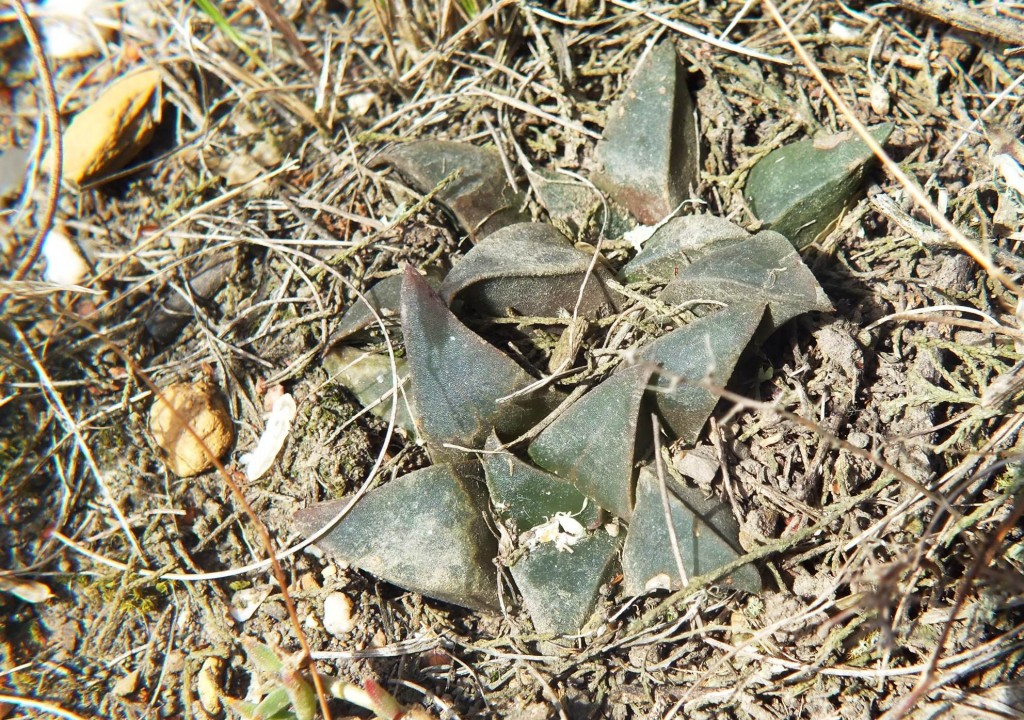

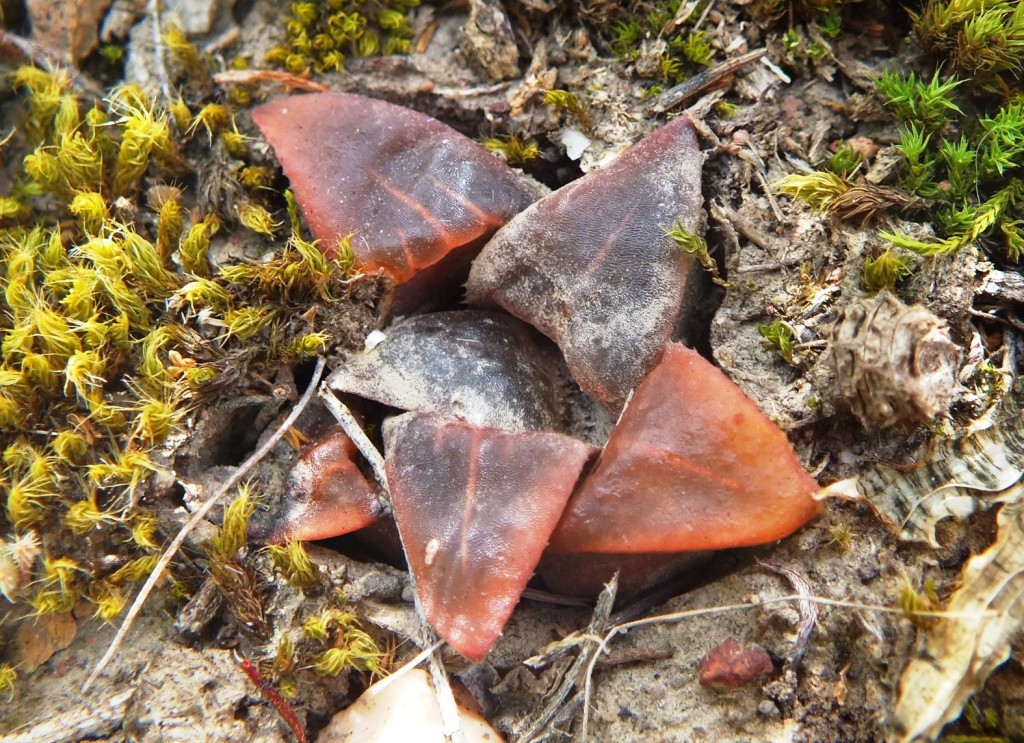
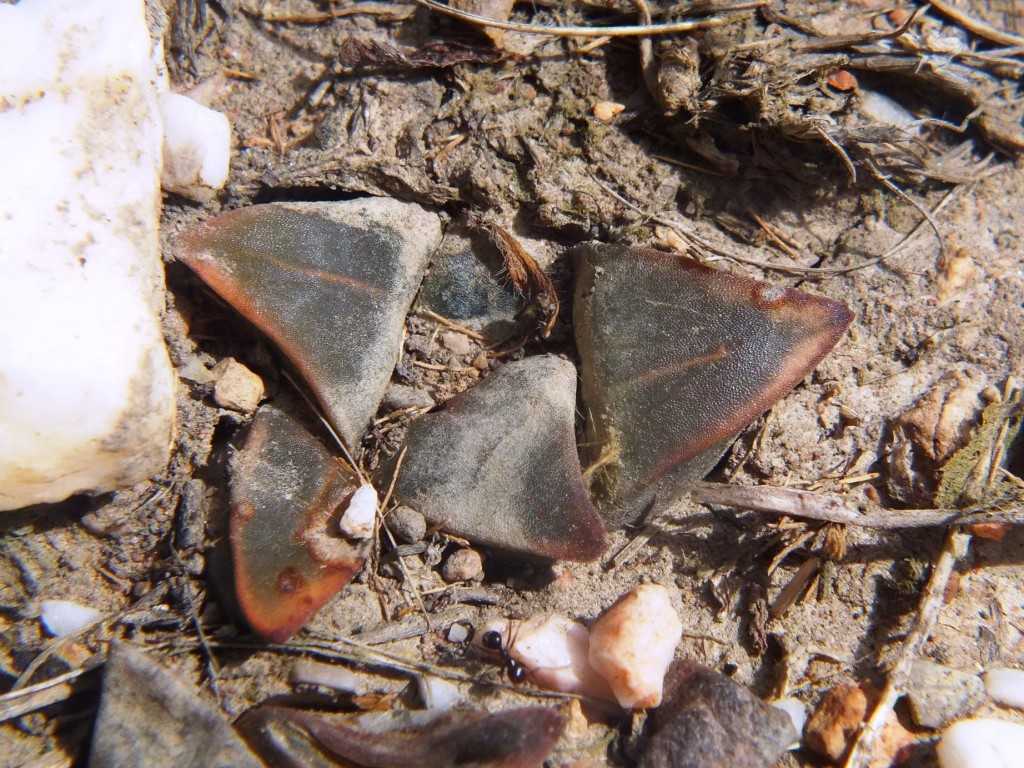
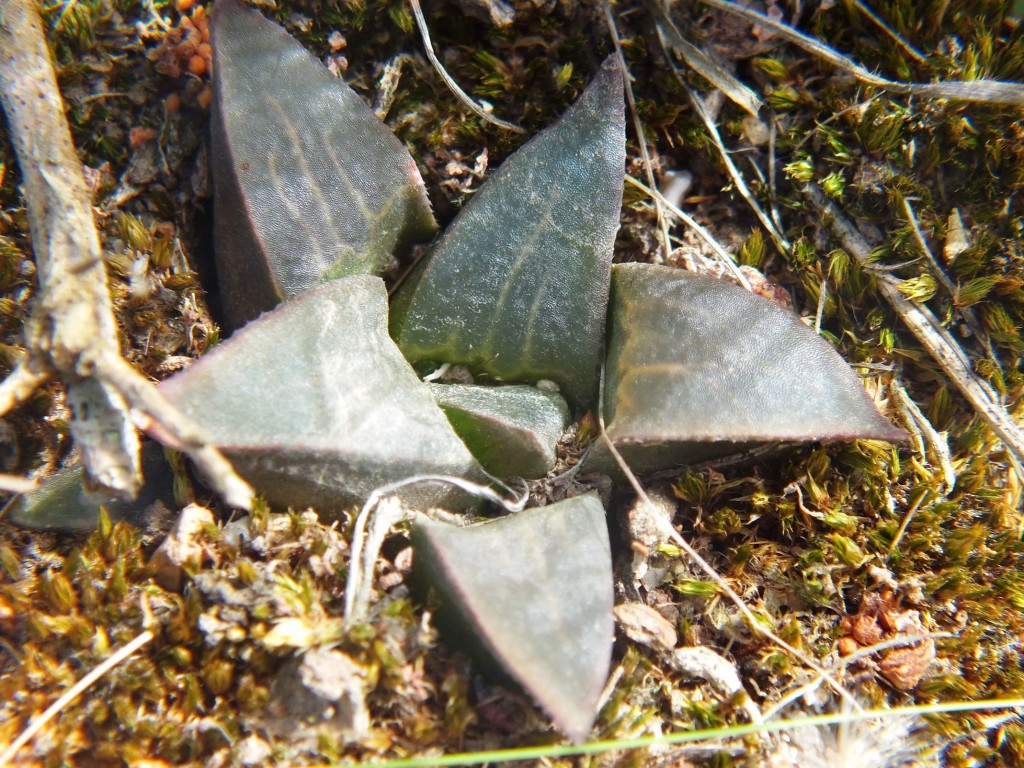
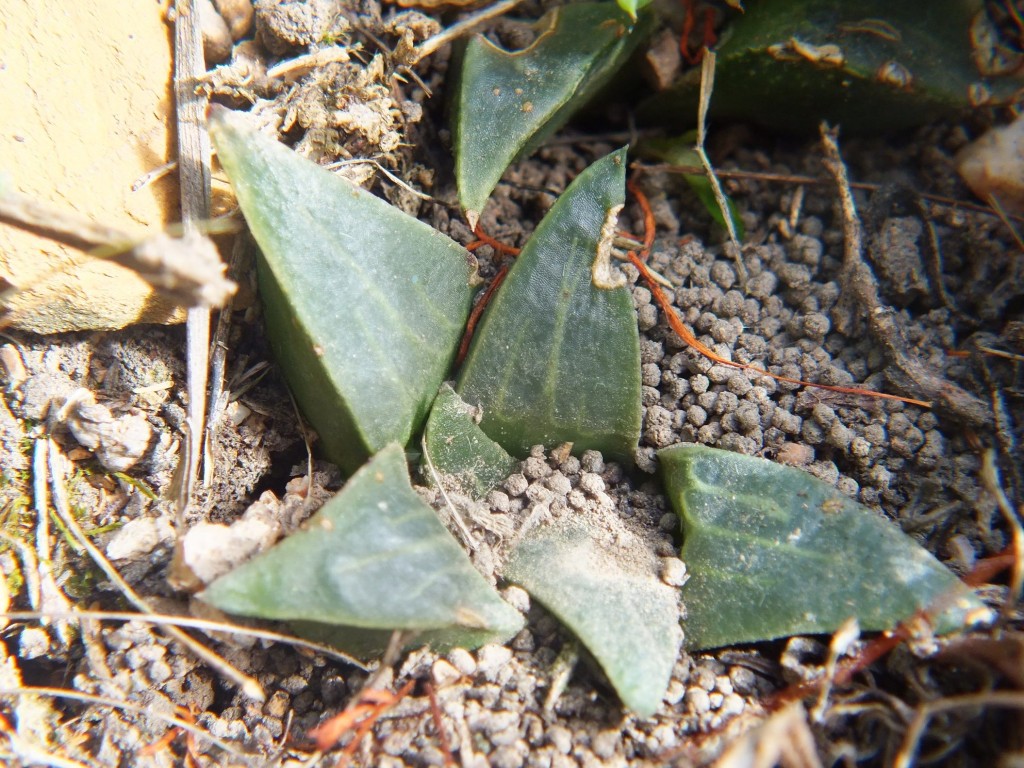


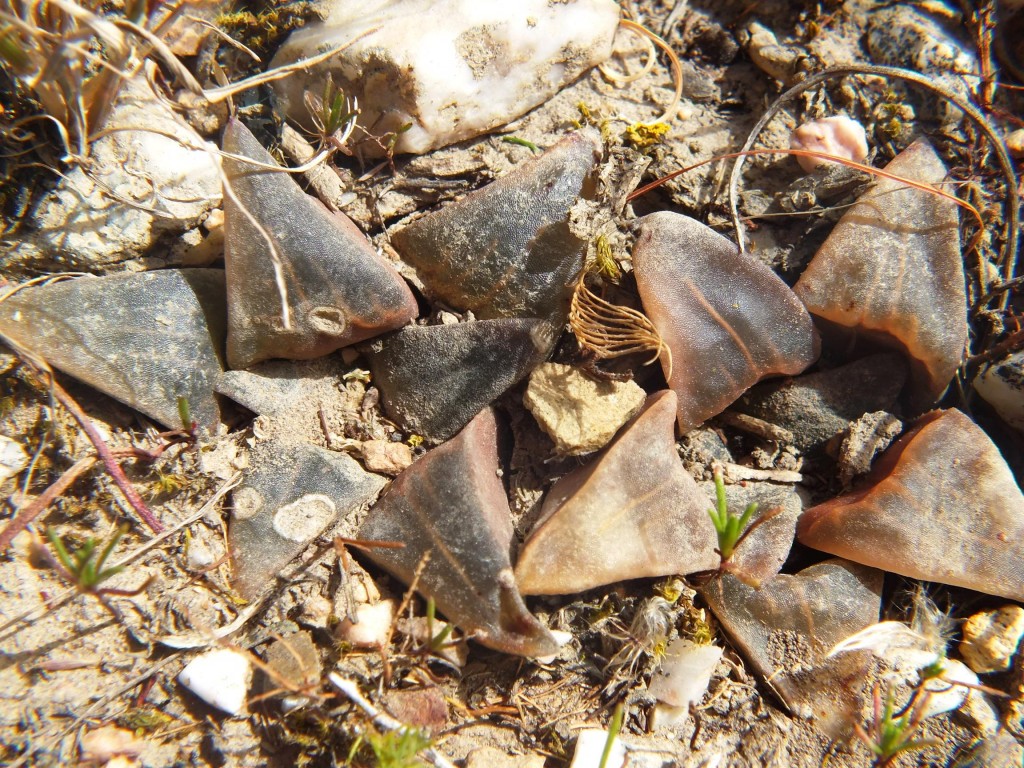
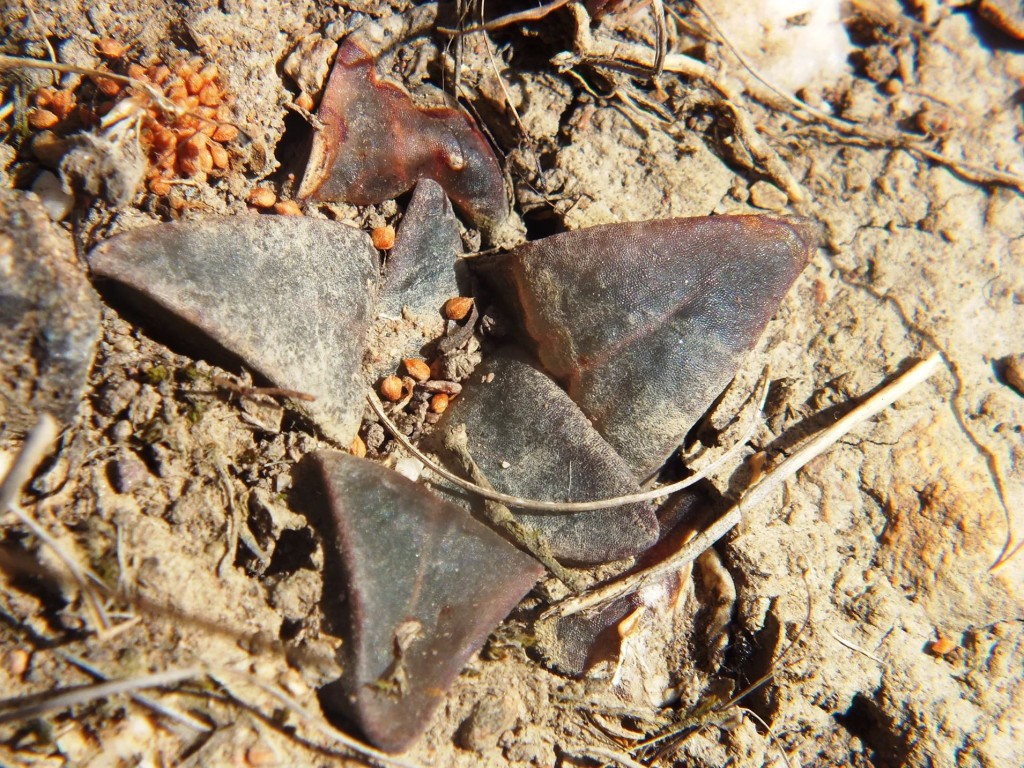
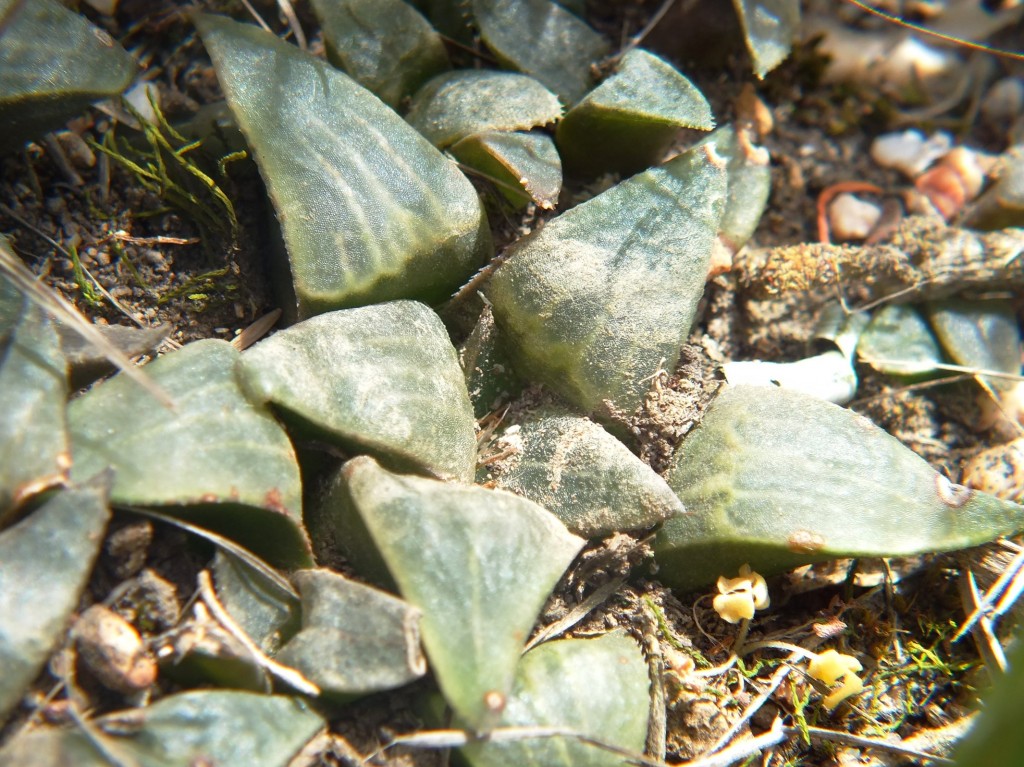
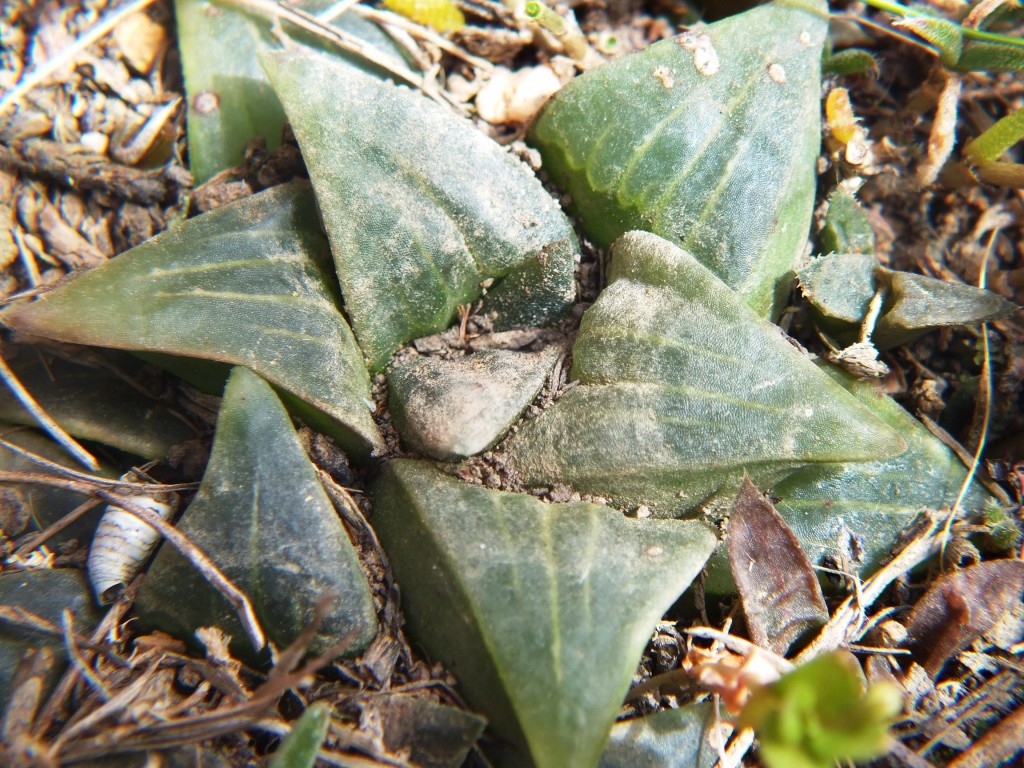
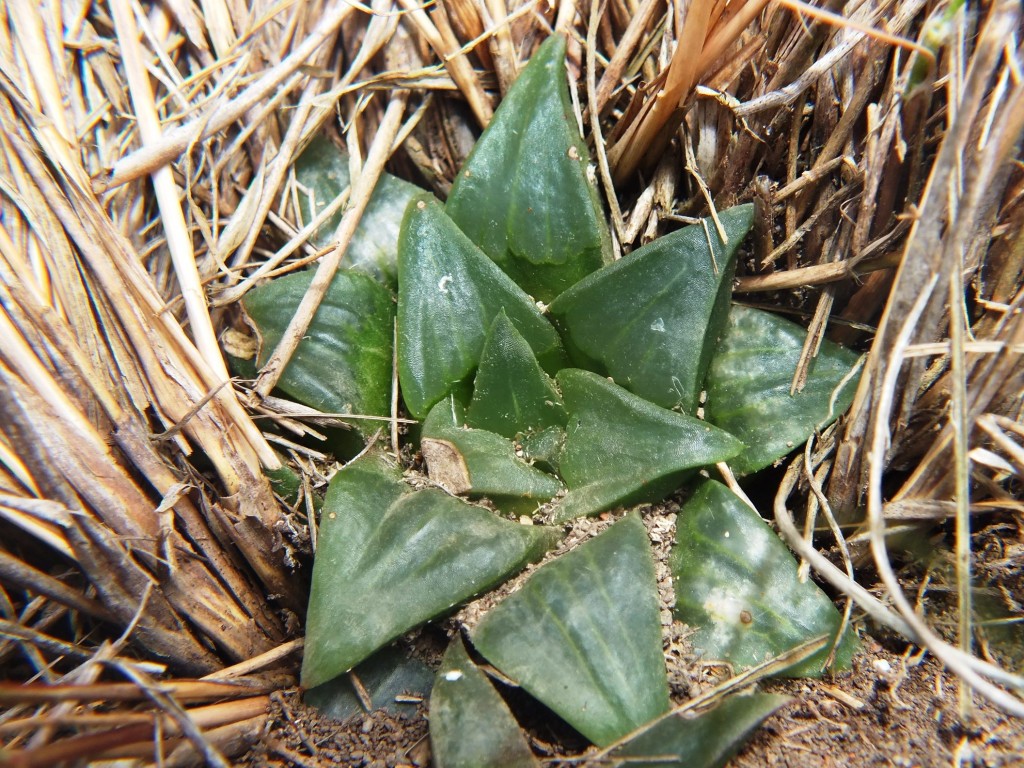
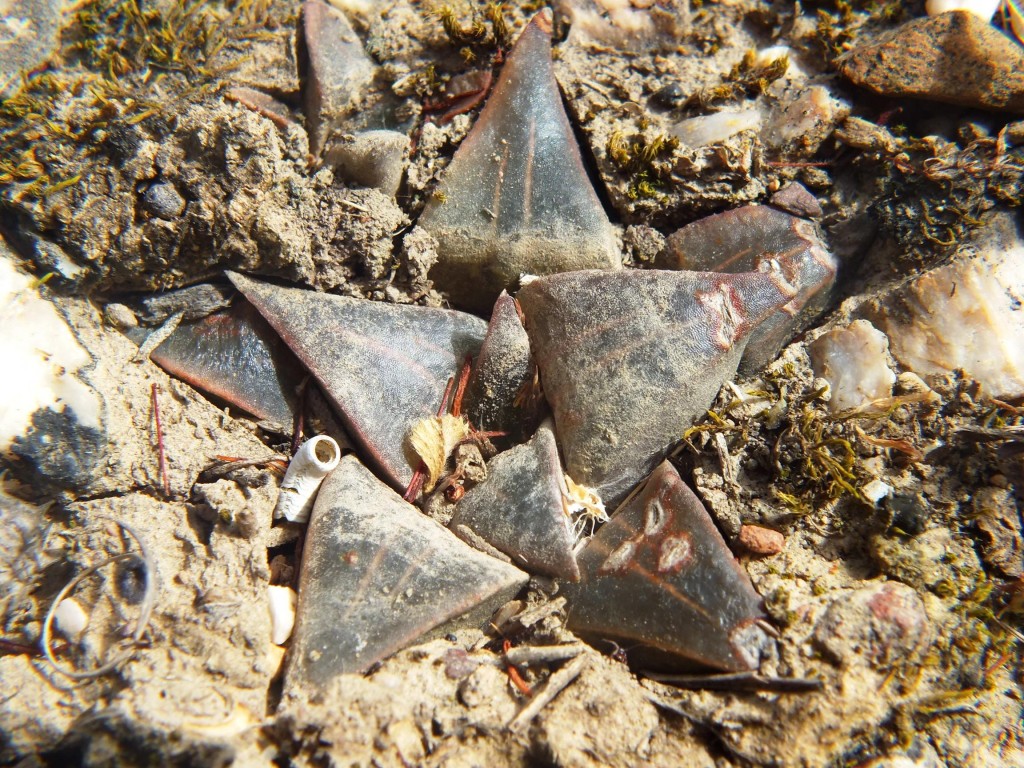
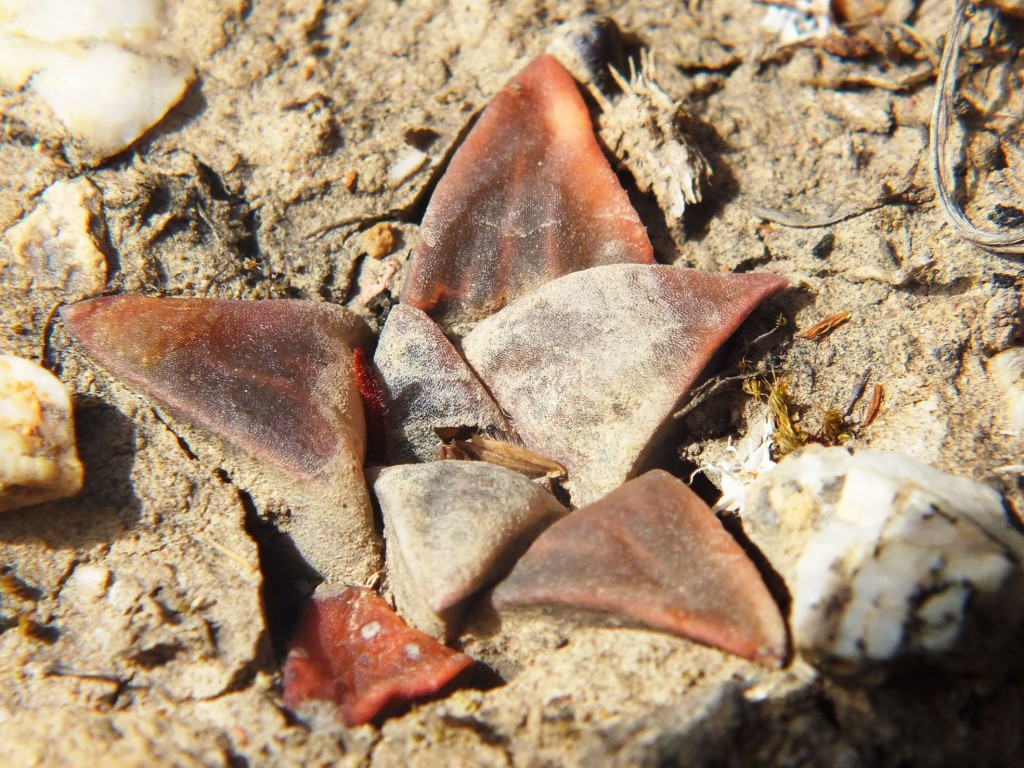

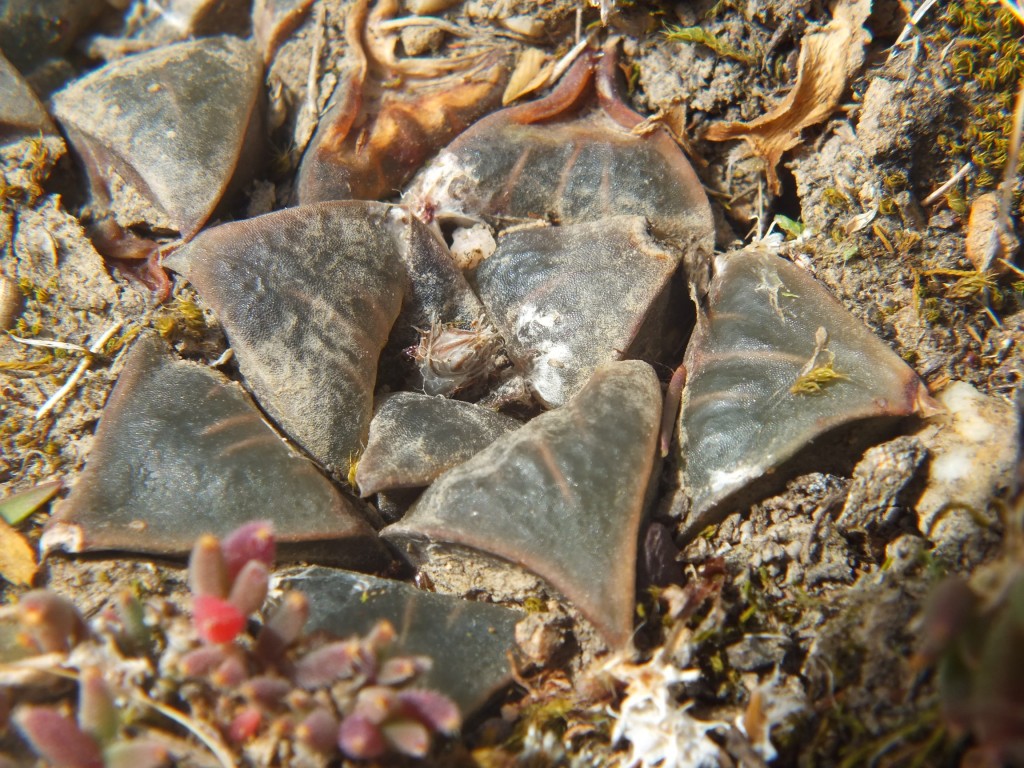
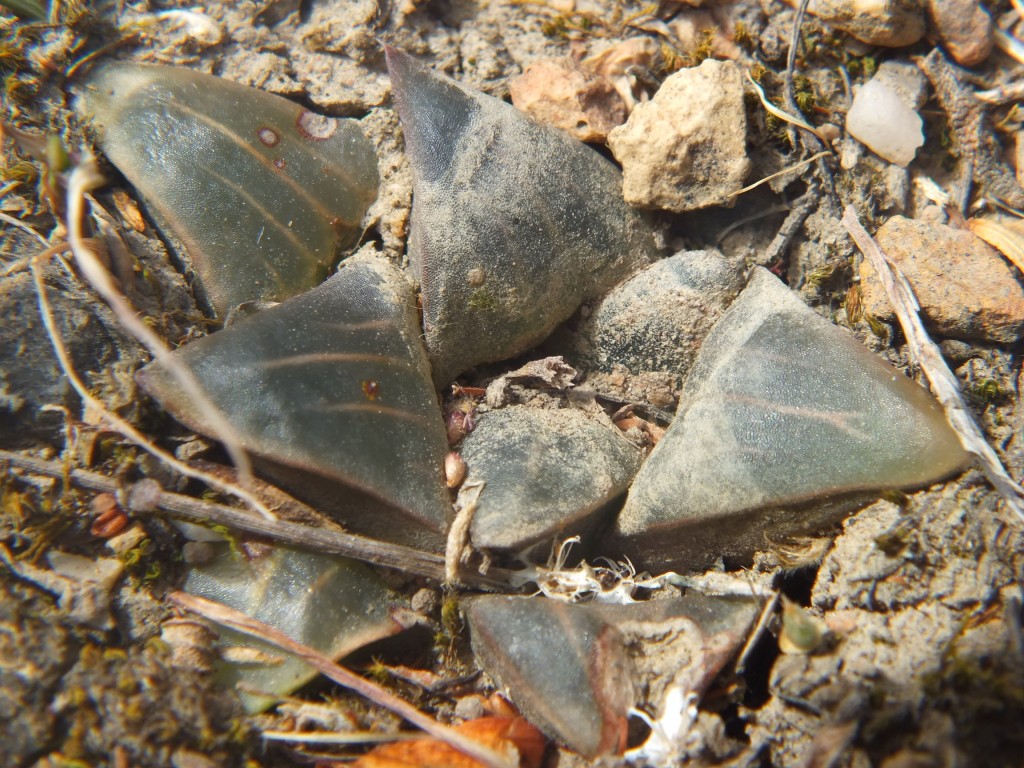

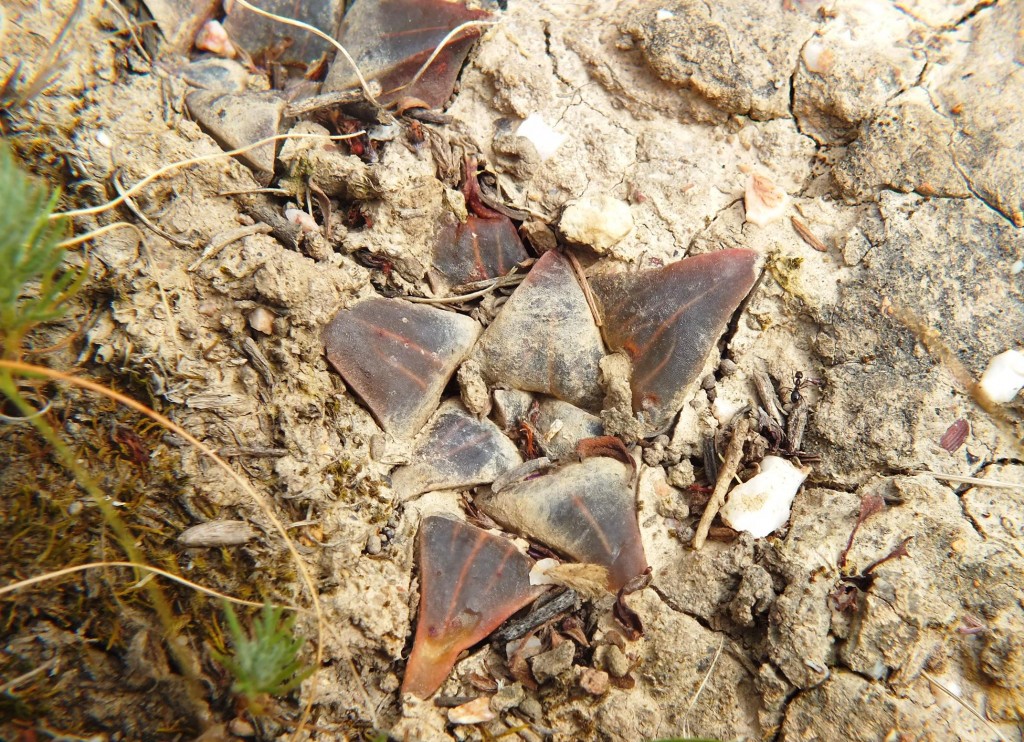
Conclusion
The objectives of the excursion were fully met and I am sure these pictures will contribute to a better view of how these four species vary. Perhaps this will illustrate also the illogic of Latin binomials for every variable, however desirable these names are for traders and collectors.
Acknowledgement
Bennie Viljoen of Grootvlakte, Koos Badenhorst of Langvlei, Maree and Elizabeth Prinsloo of Stoffelsriver, Ferdie of Diepkloof Security Services, Adele and Vlooi DuToit for Die Kop, Martin Mijnhardt of Haarwegskloof, Neil Giliomee of Hasiesdrift. In some cases we simply could not track landowners and trust they will forgive us our trespasses remembering that invasion of ones territory is close to an unforgivable sin. ♦
